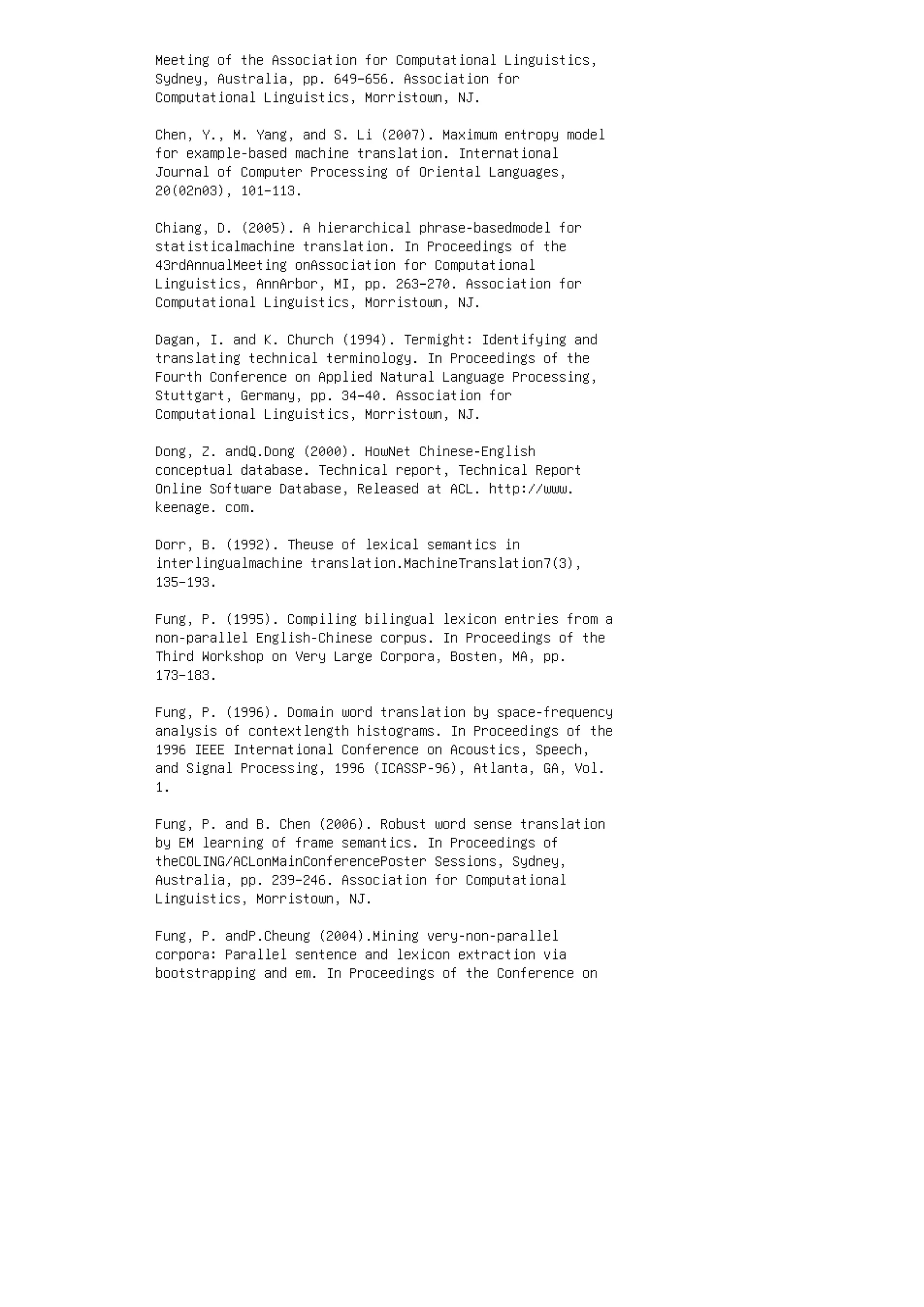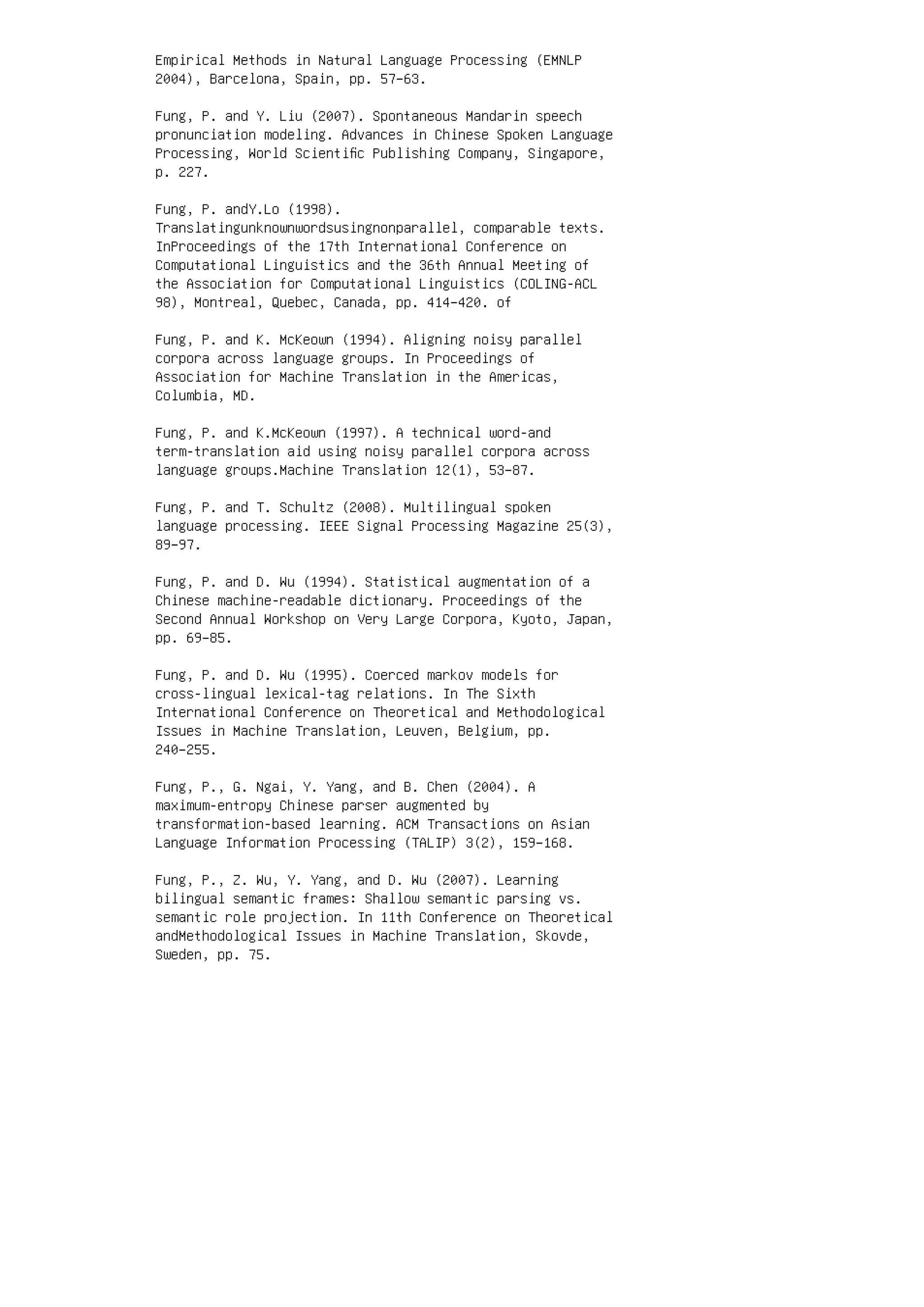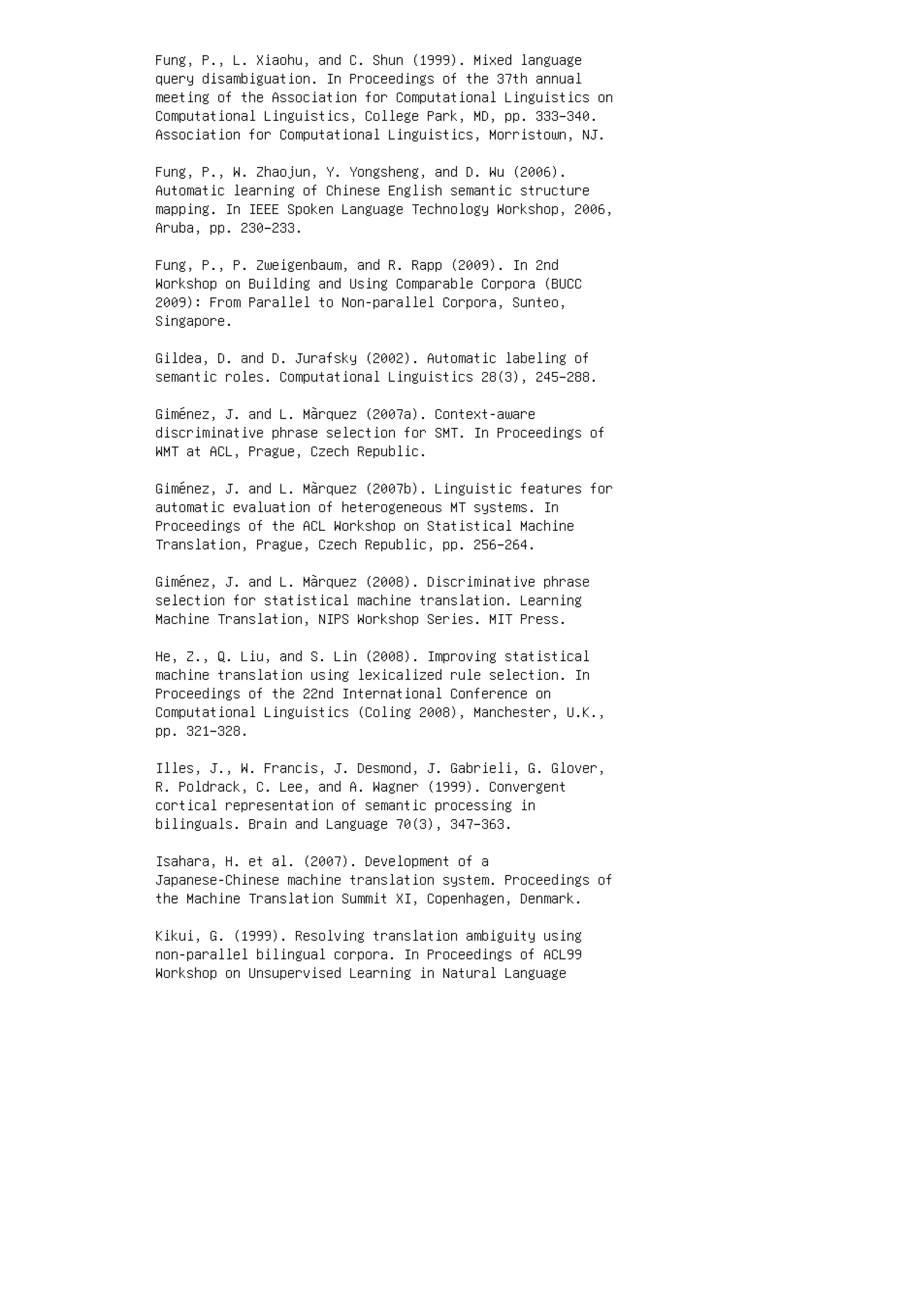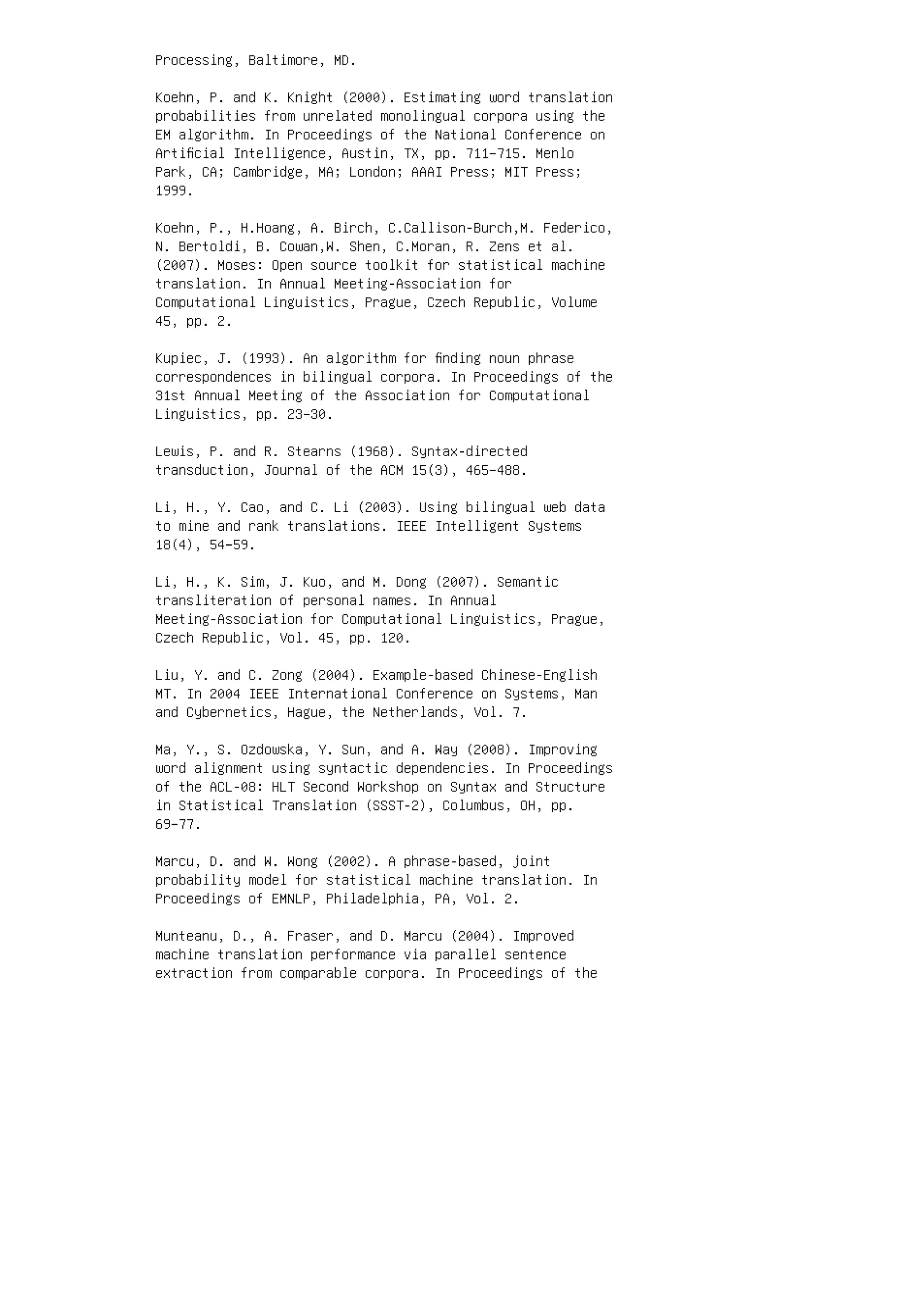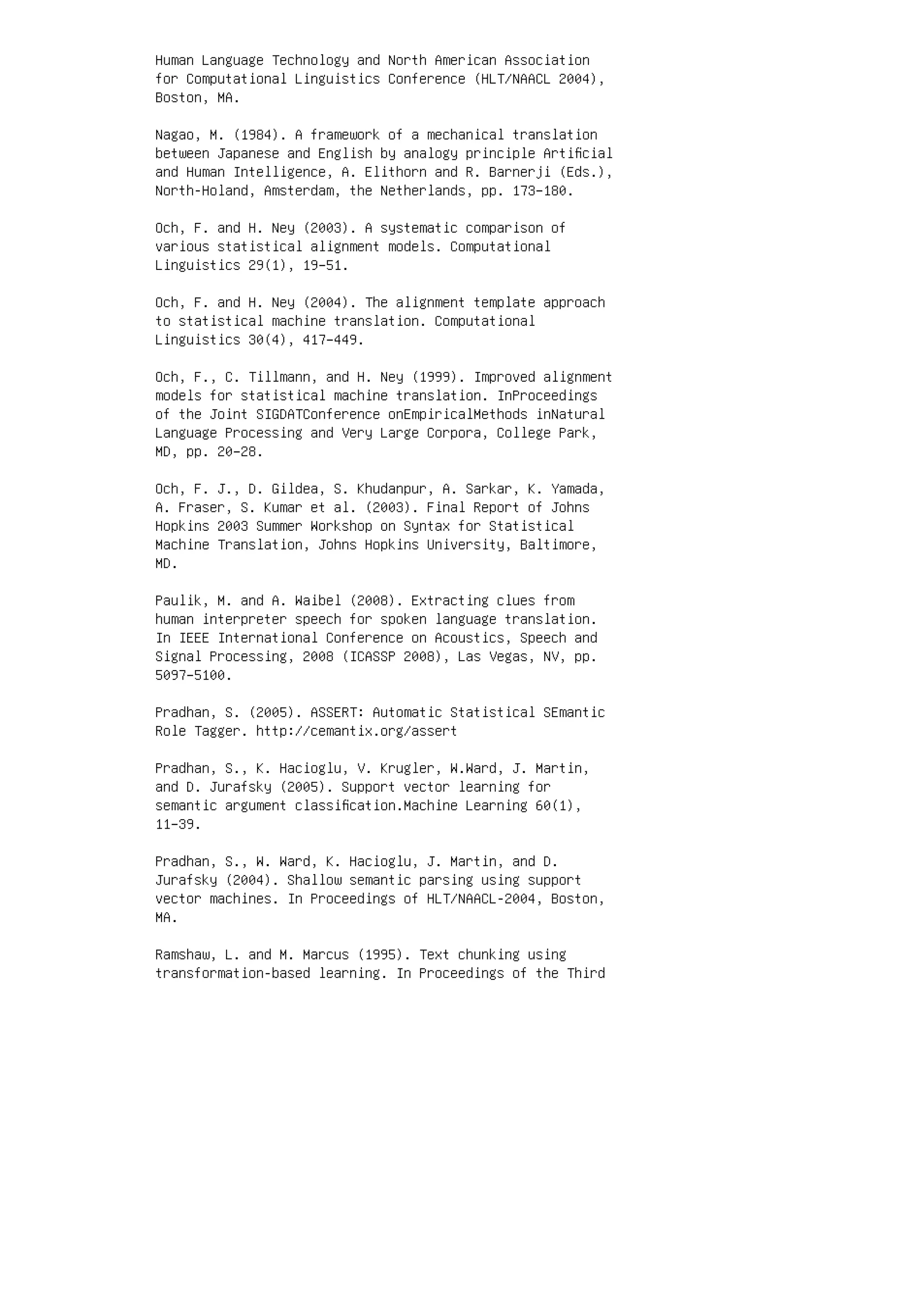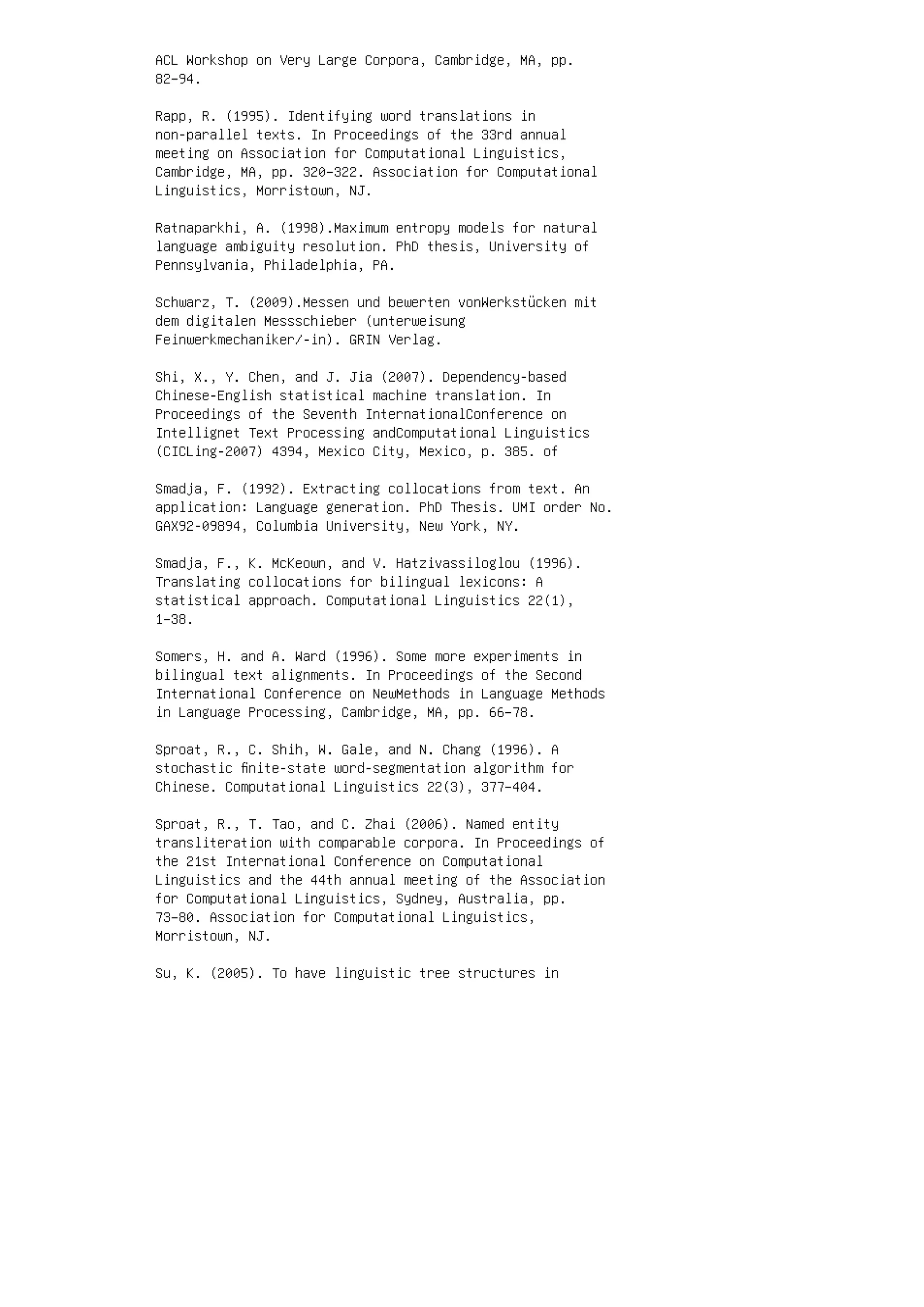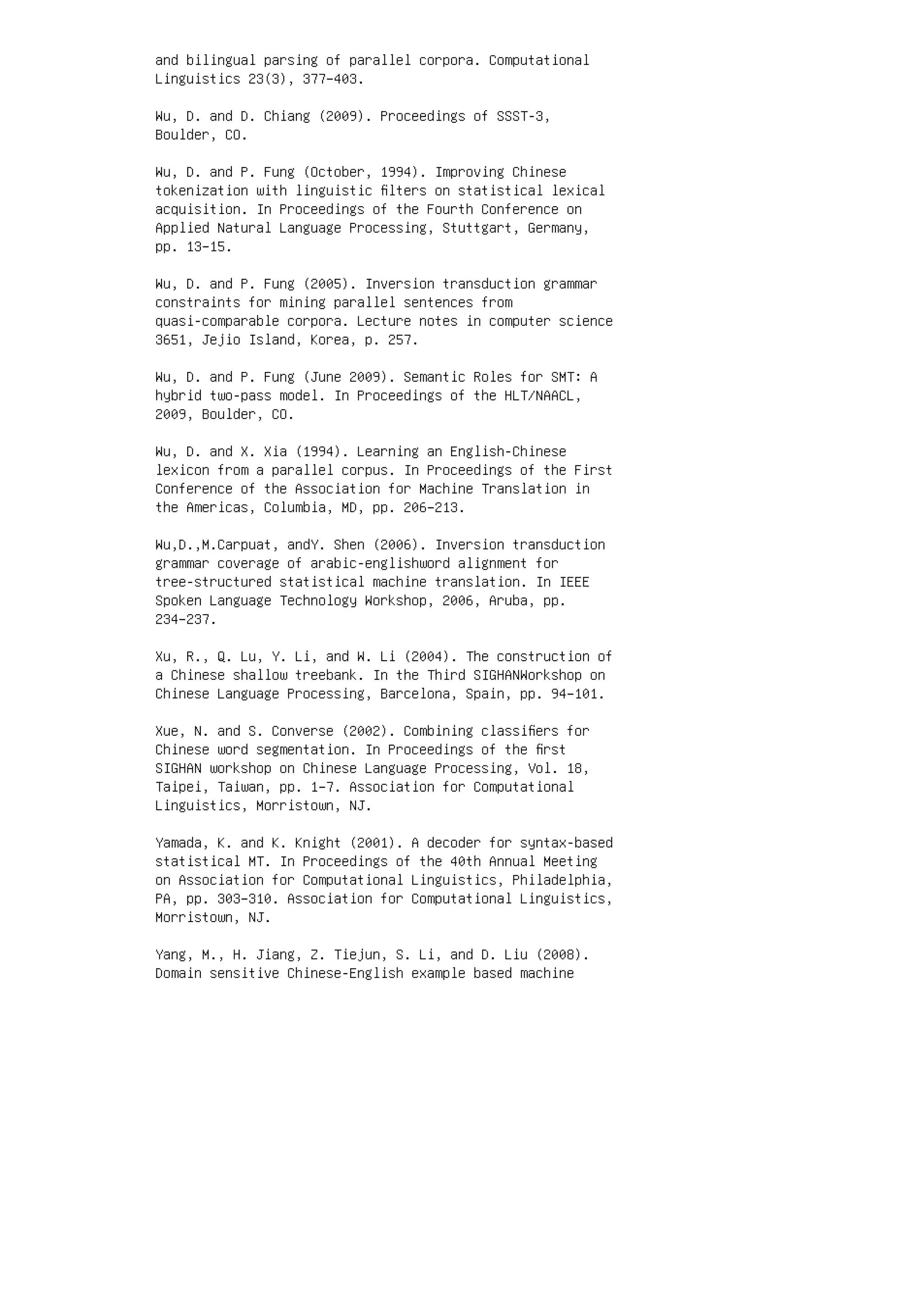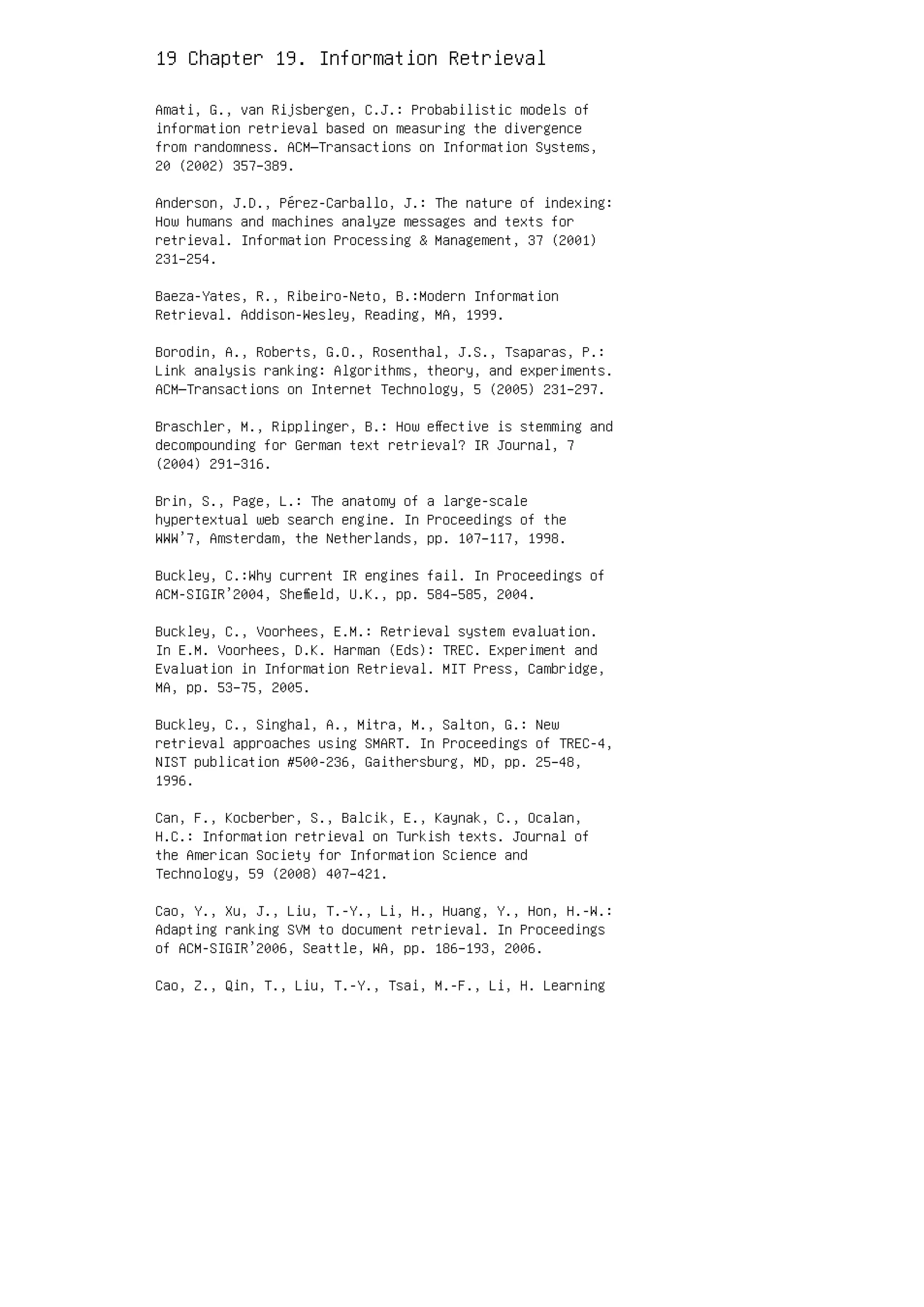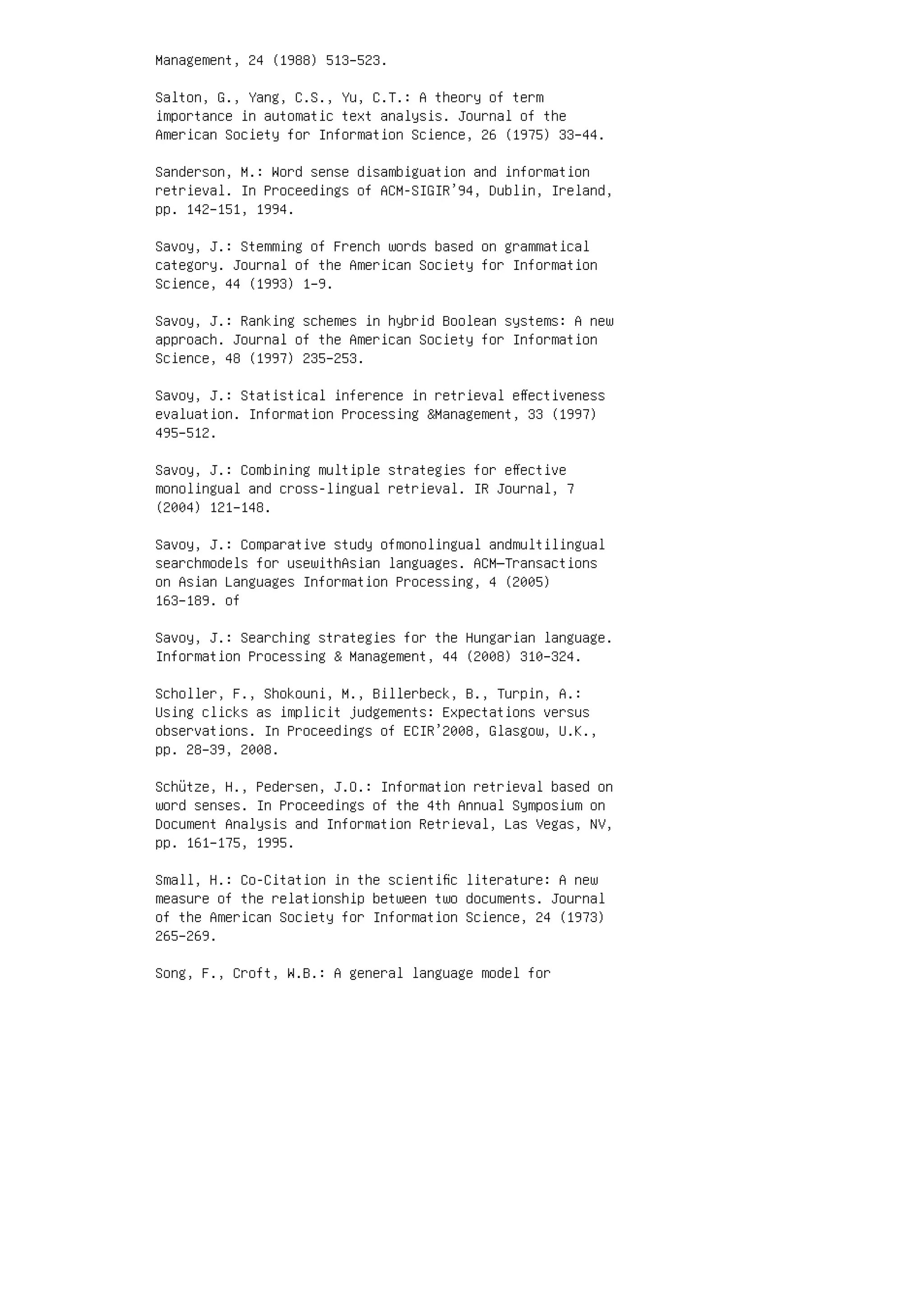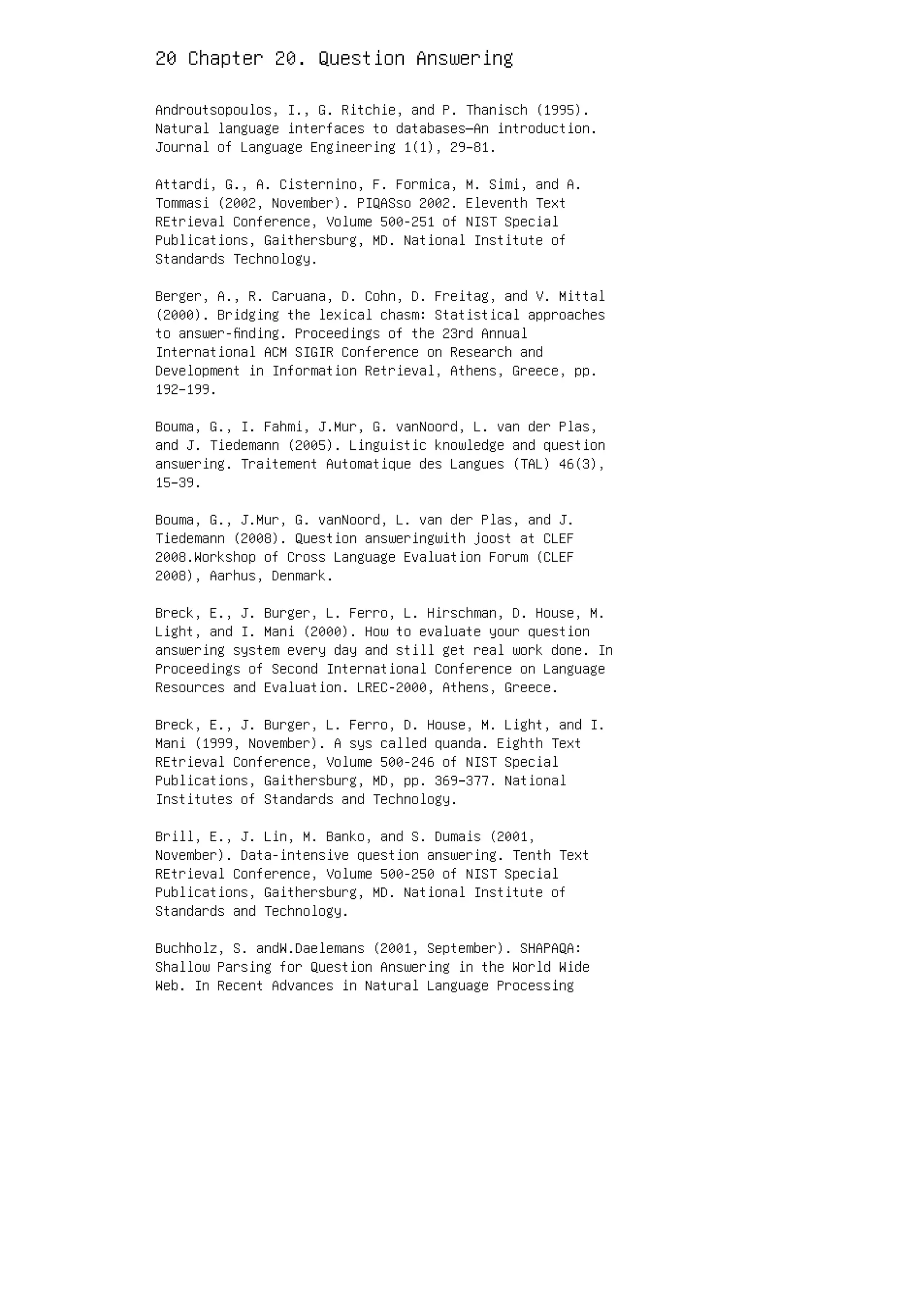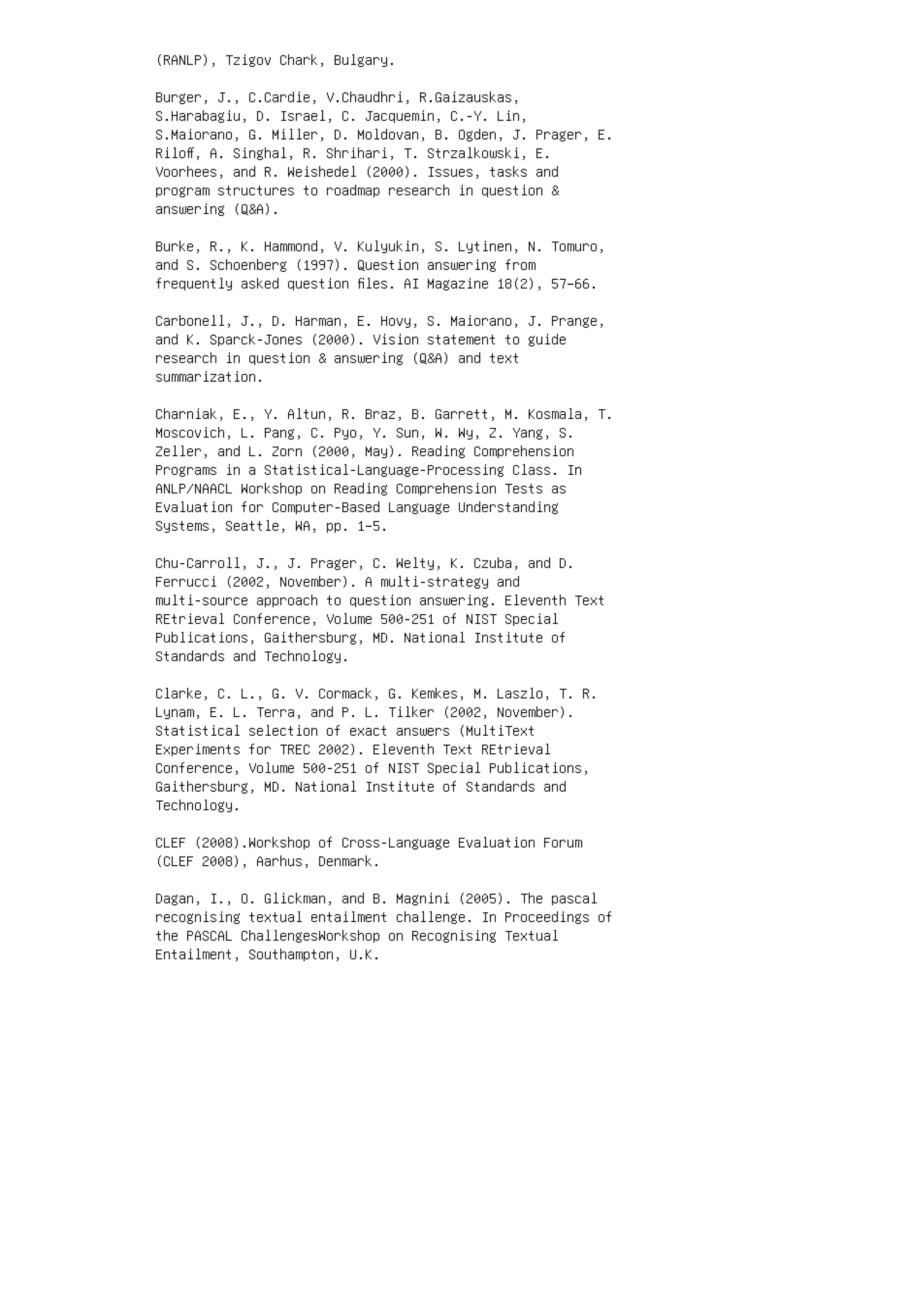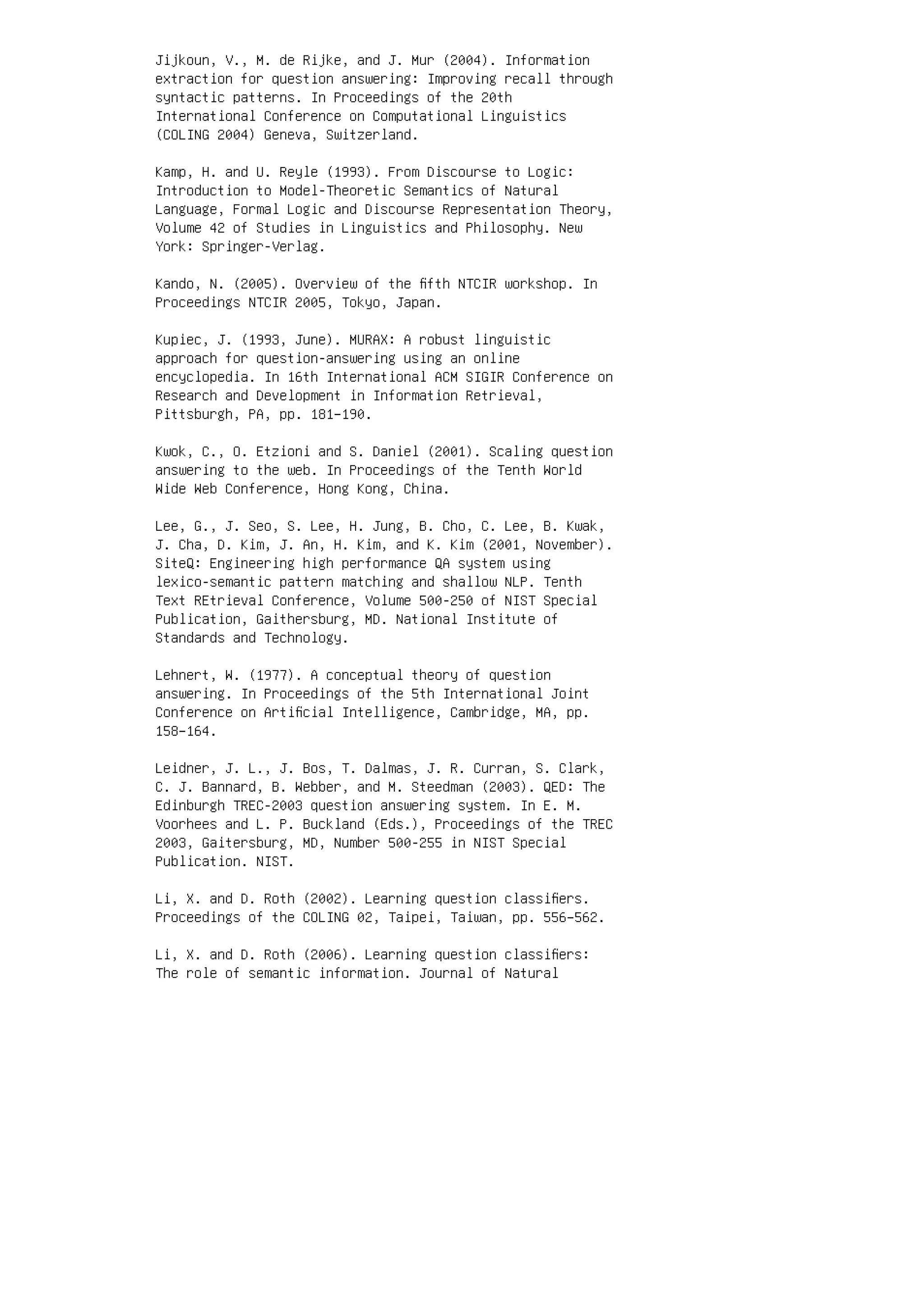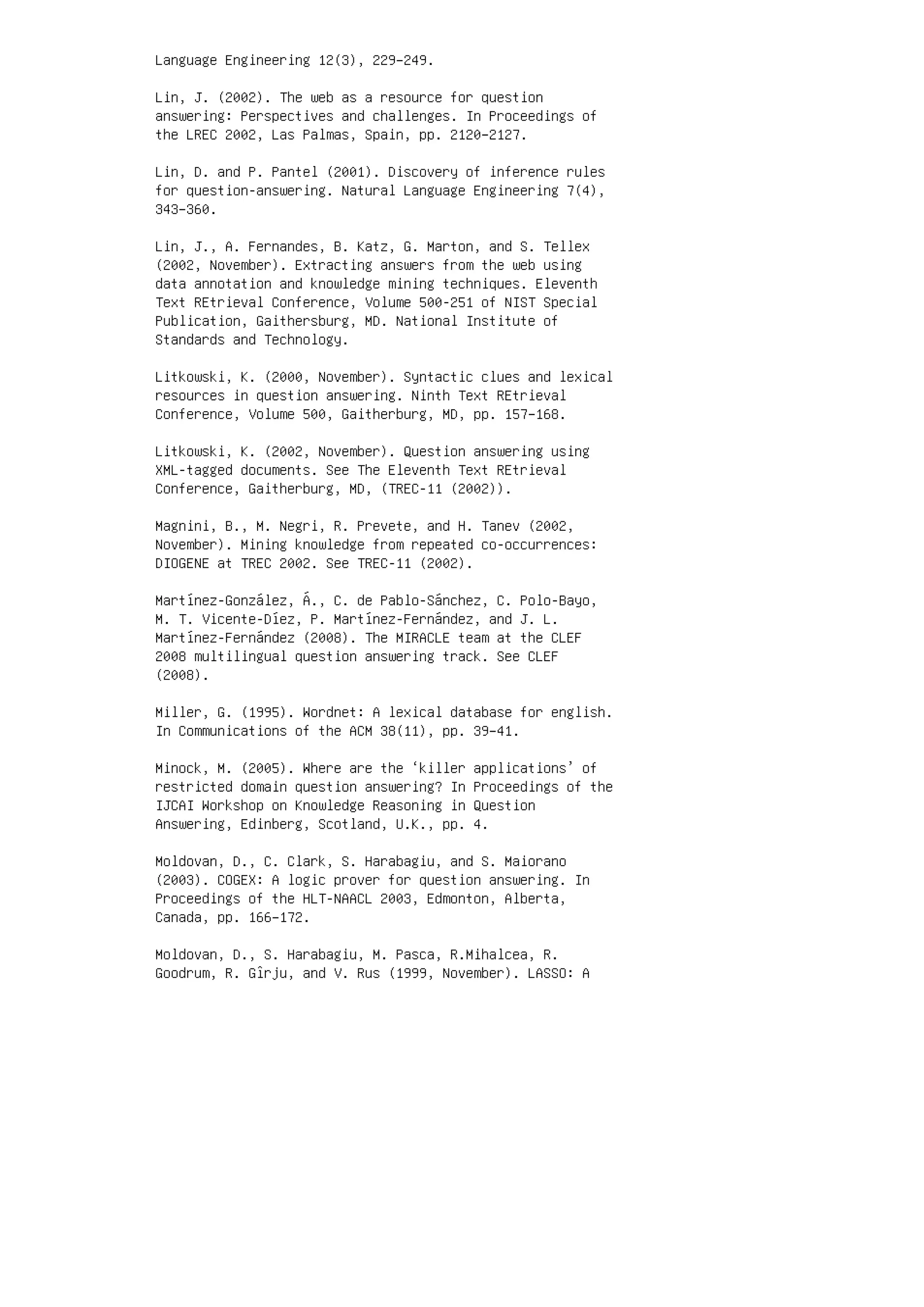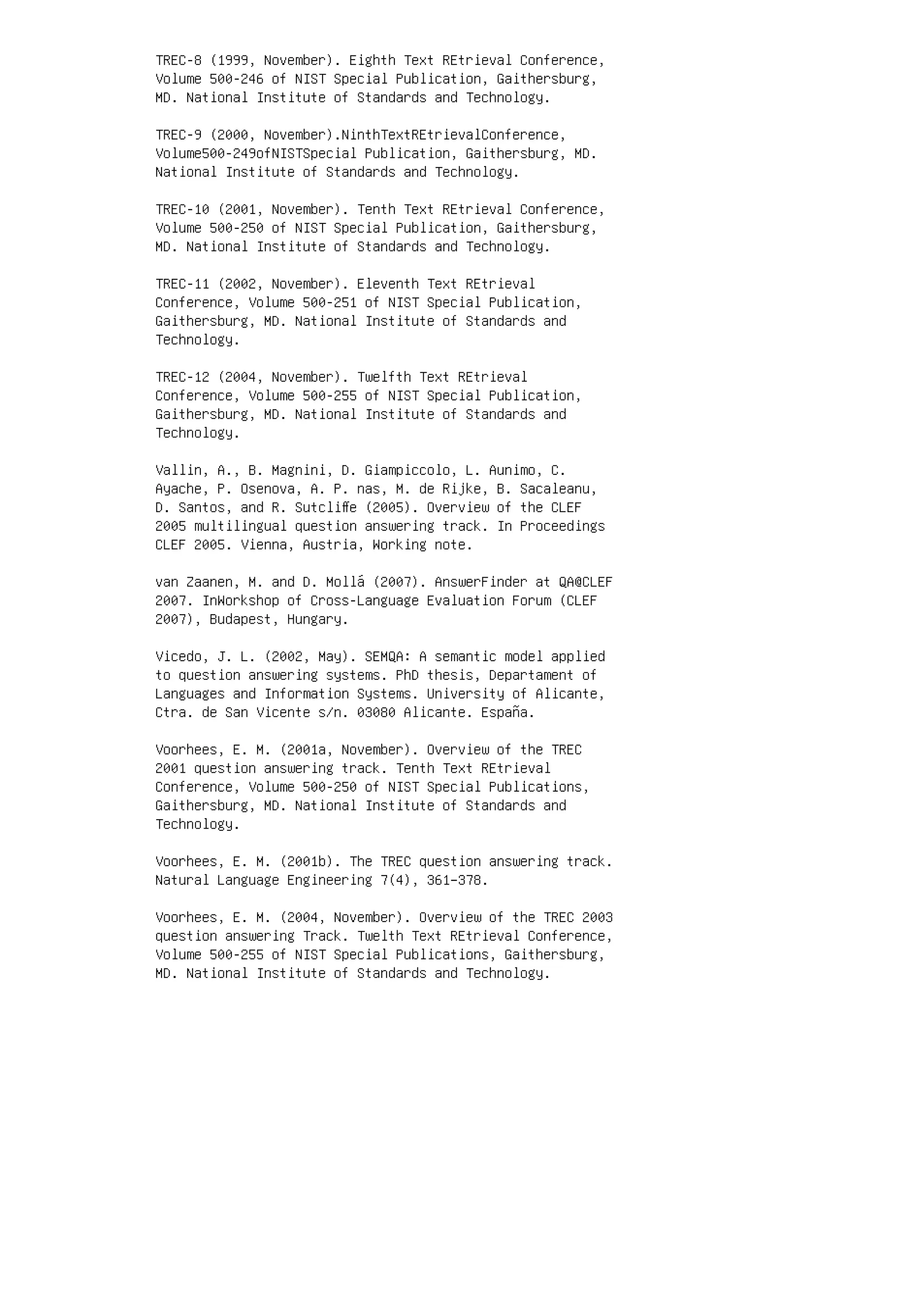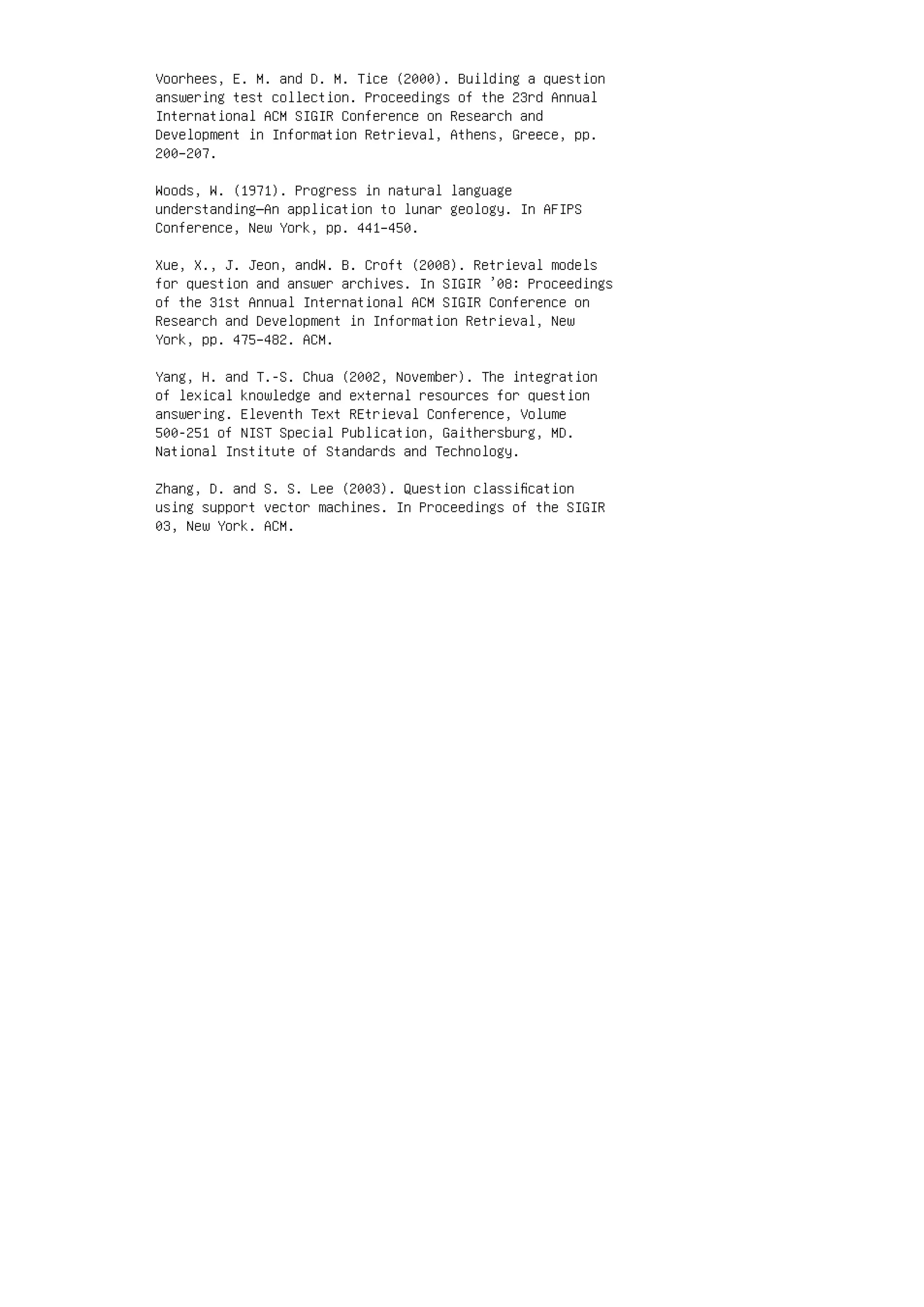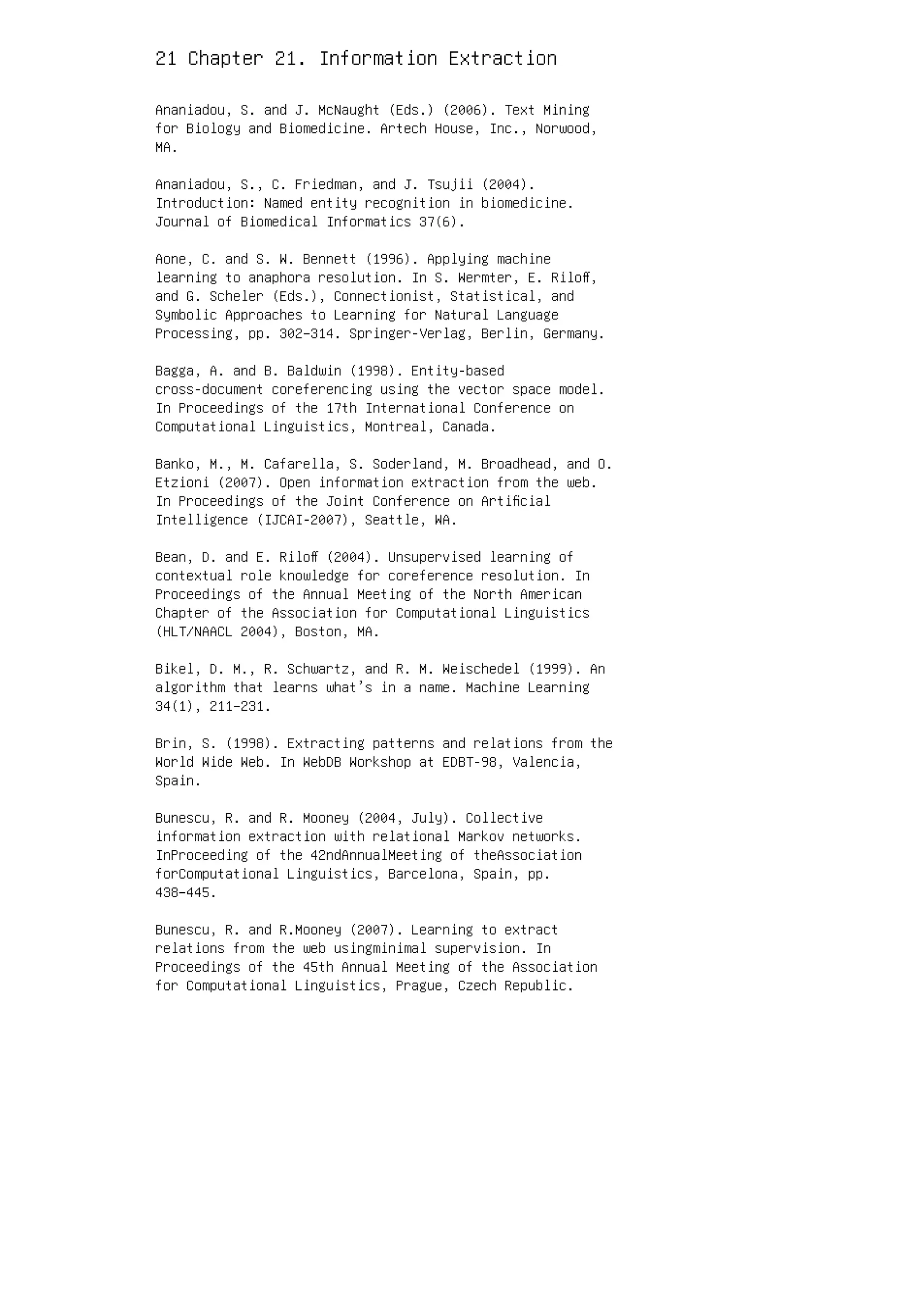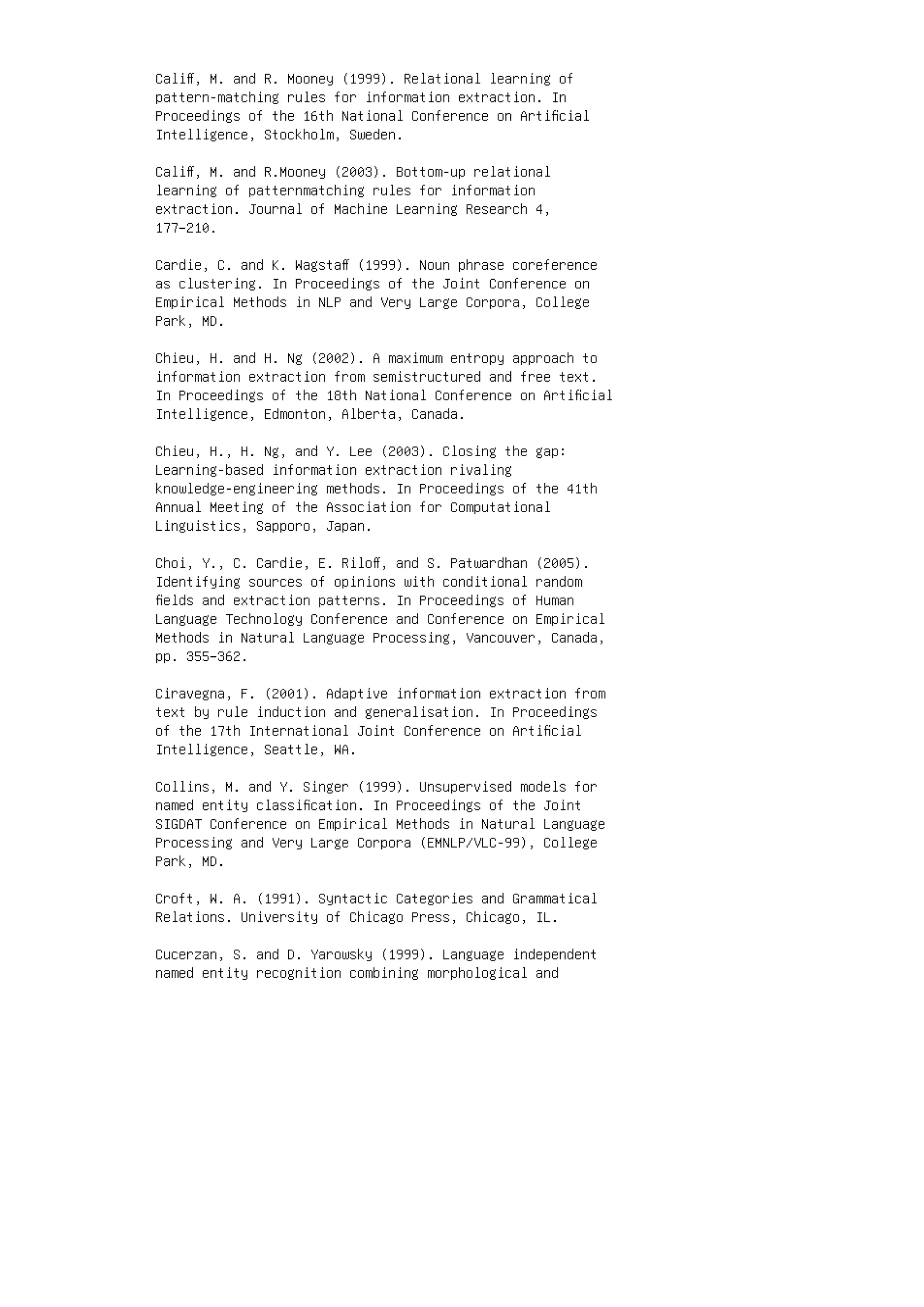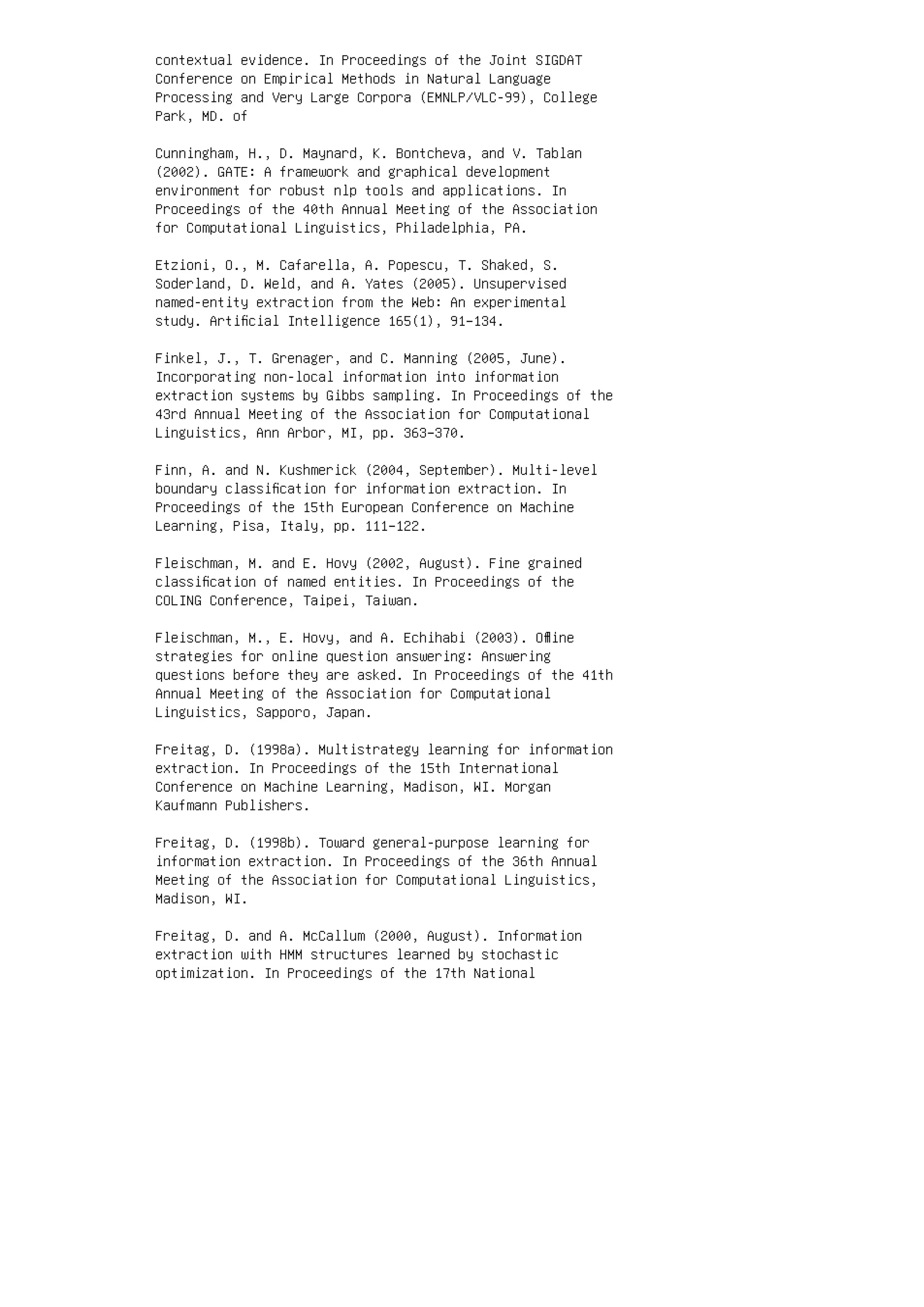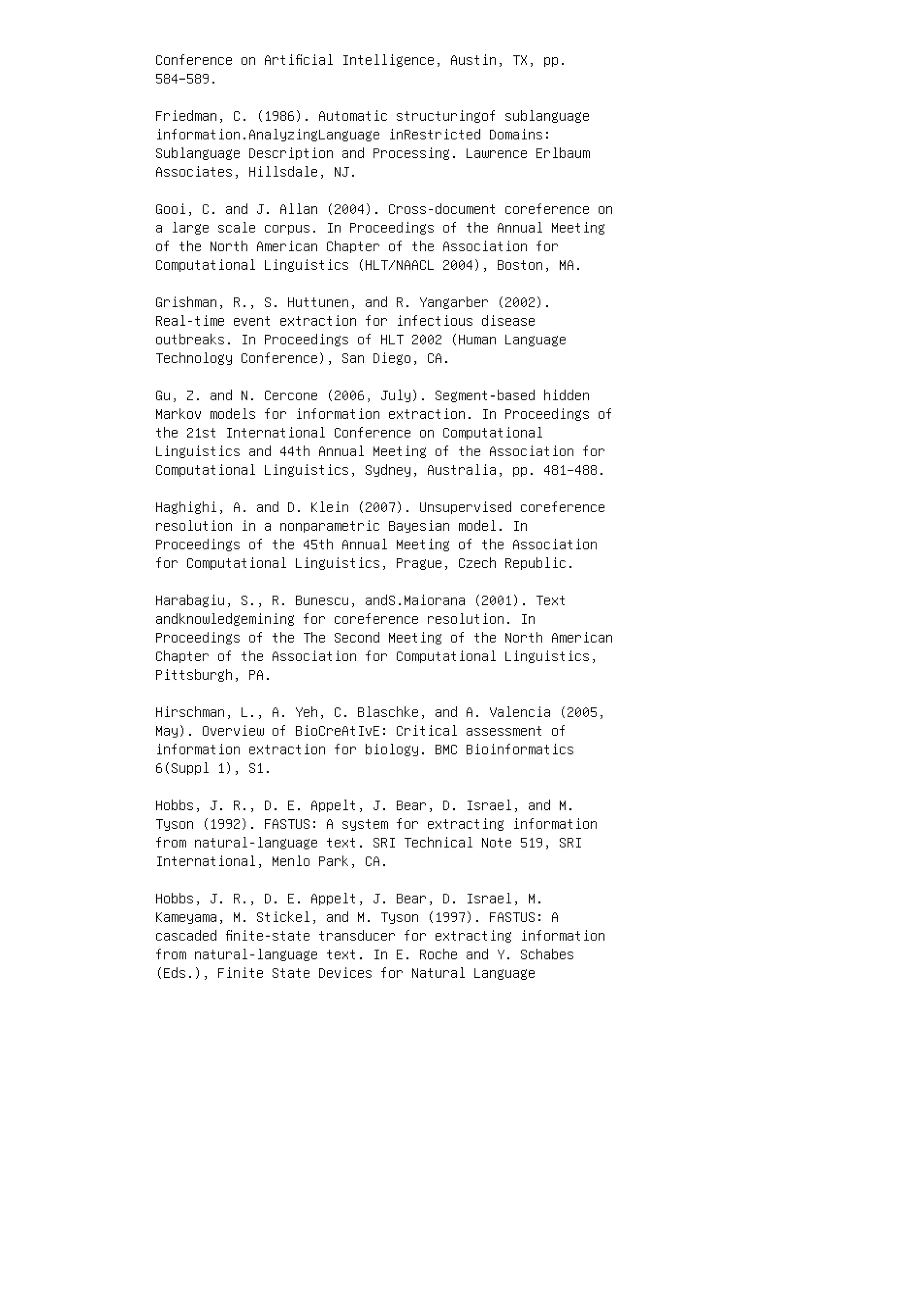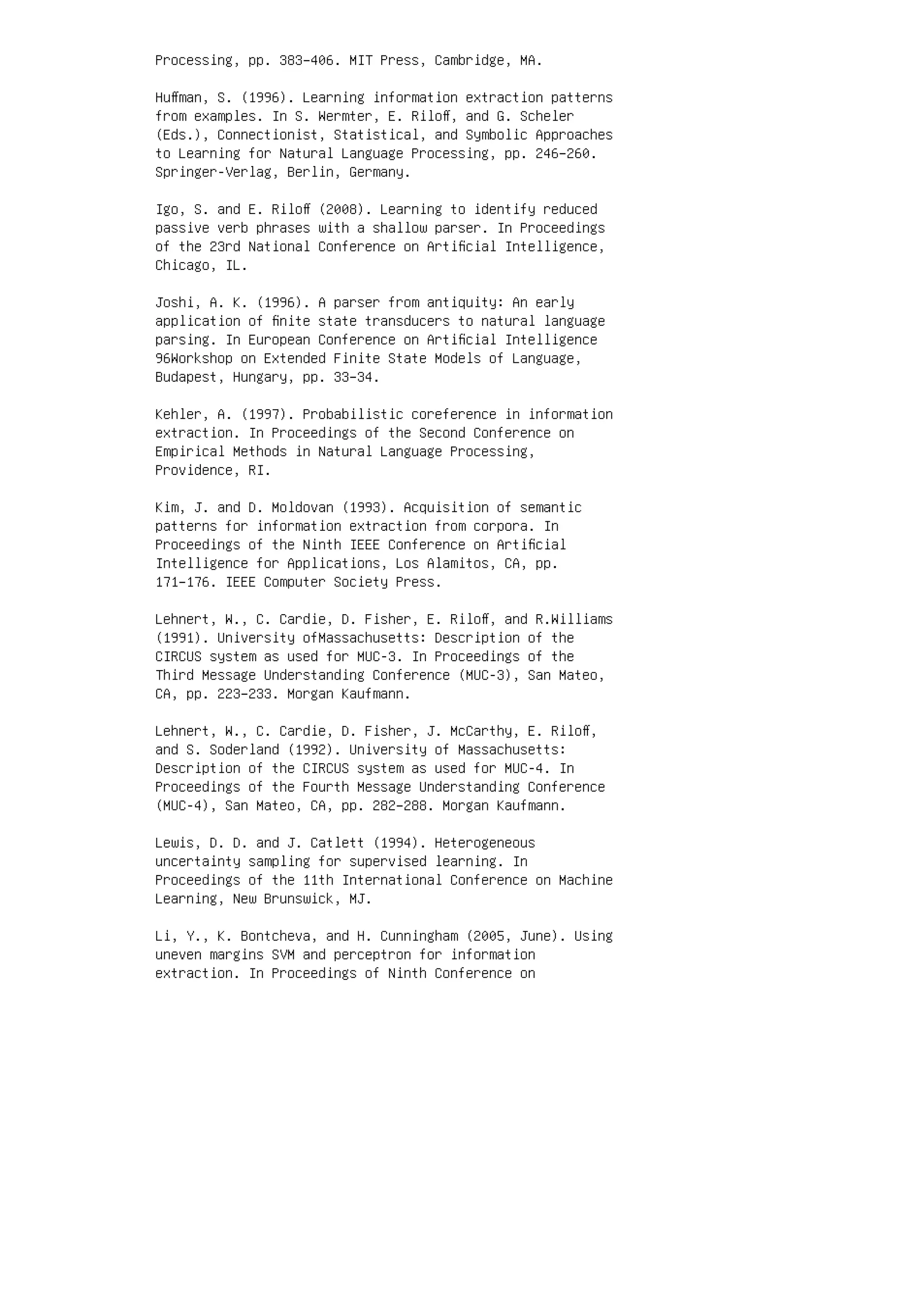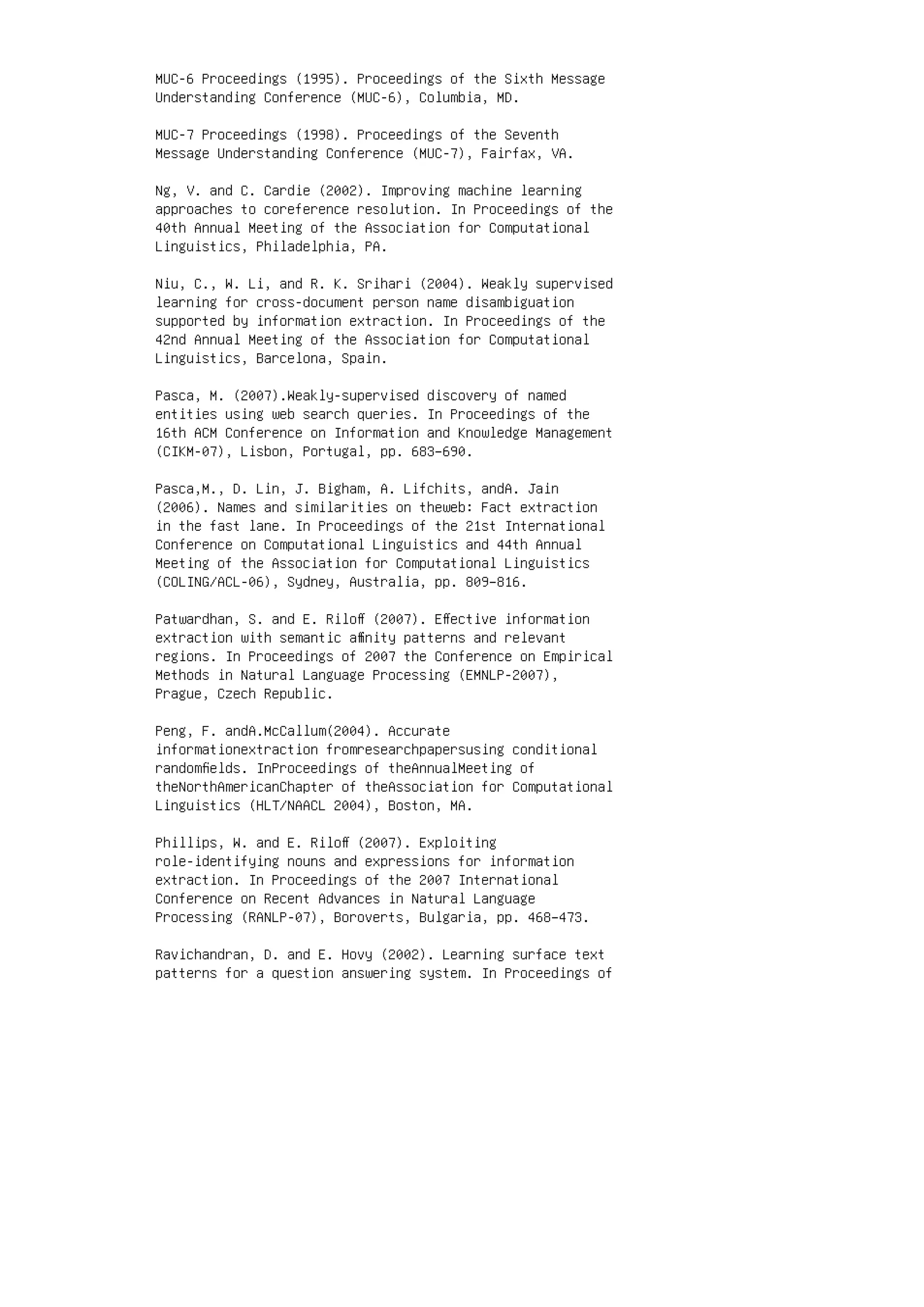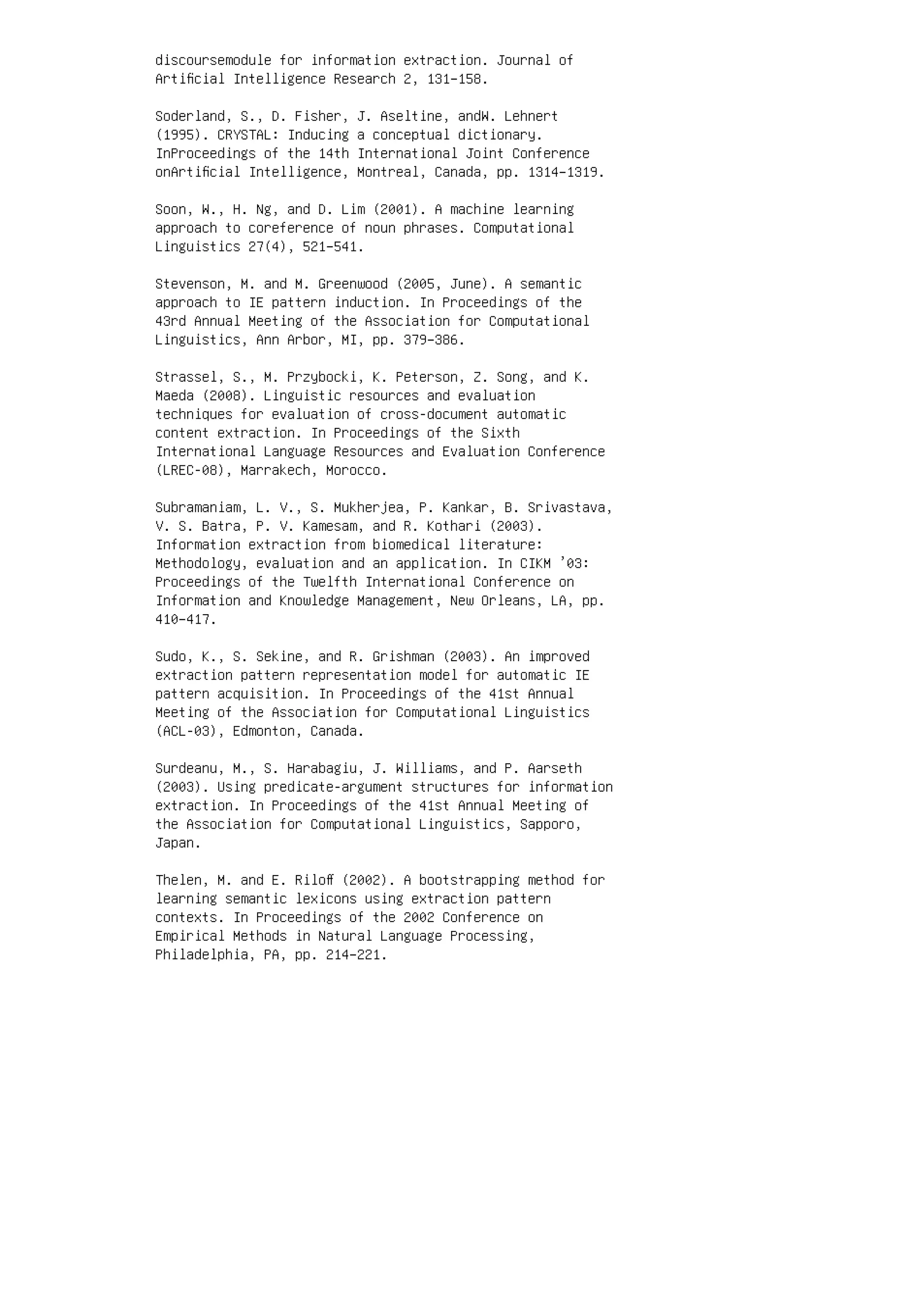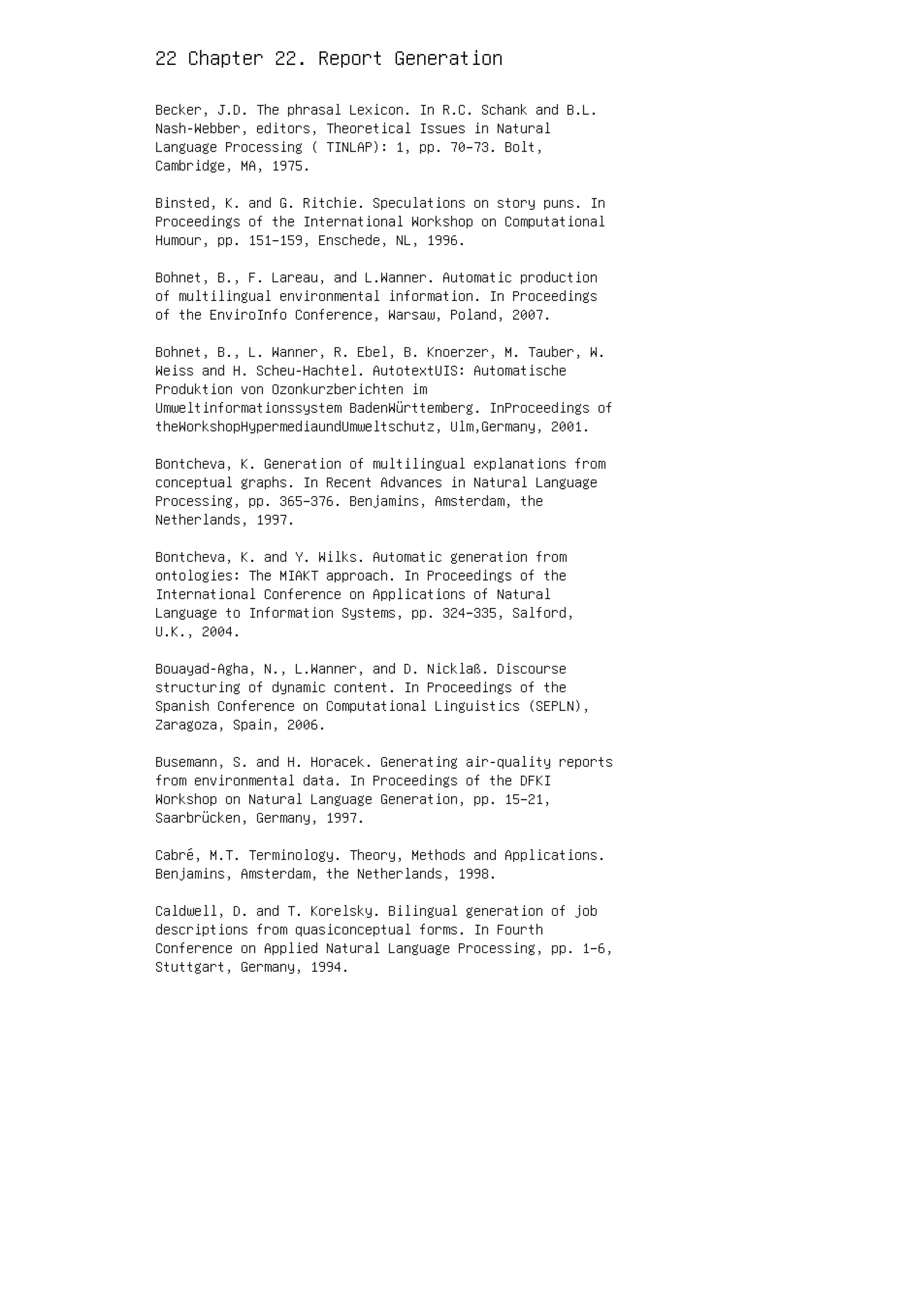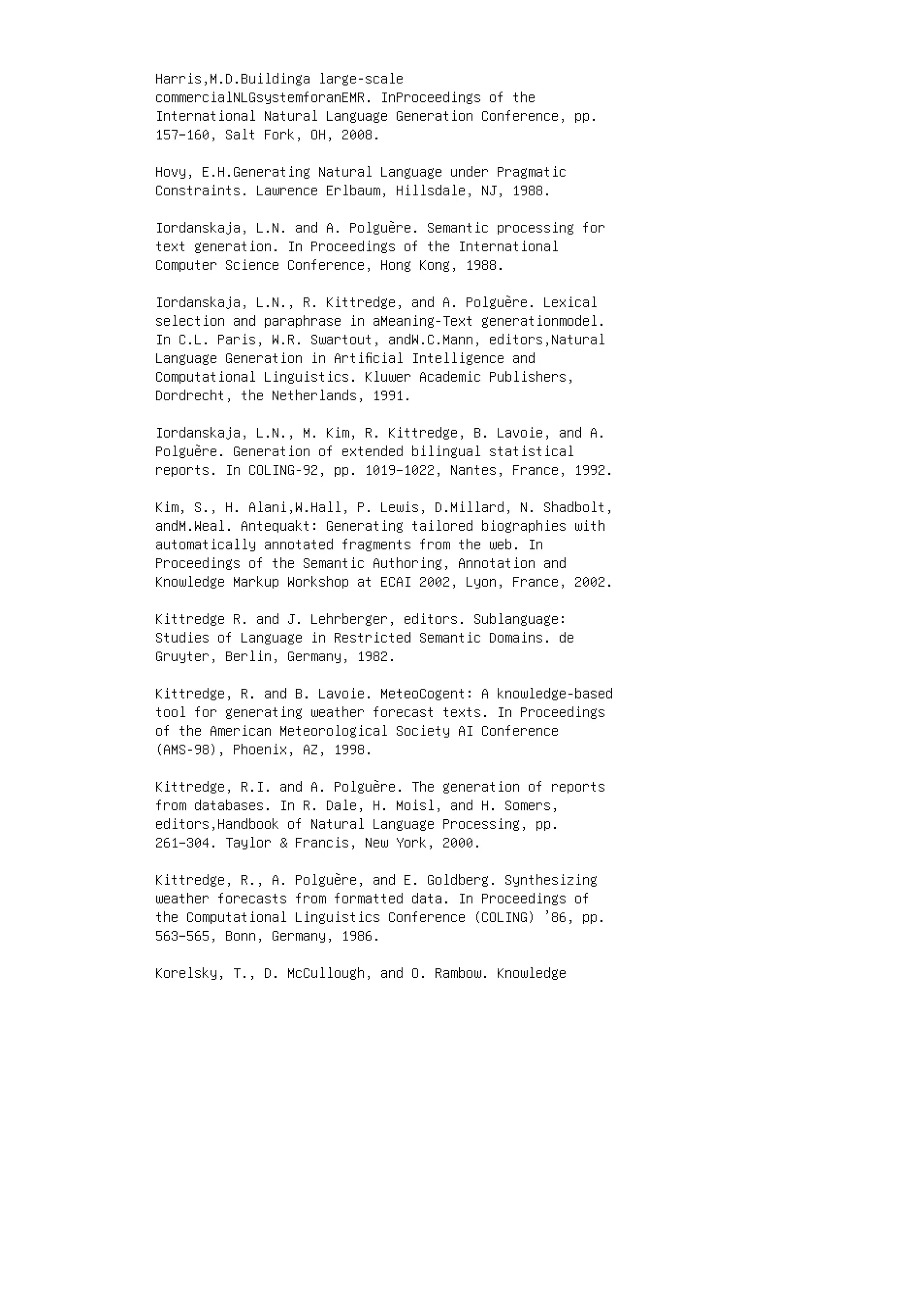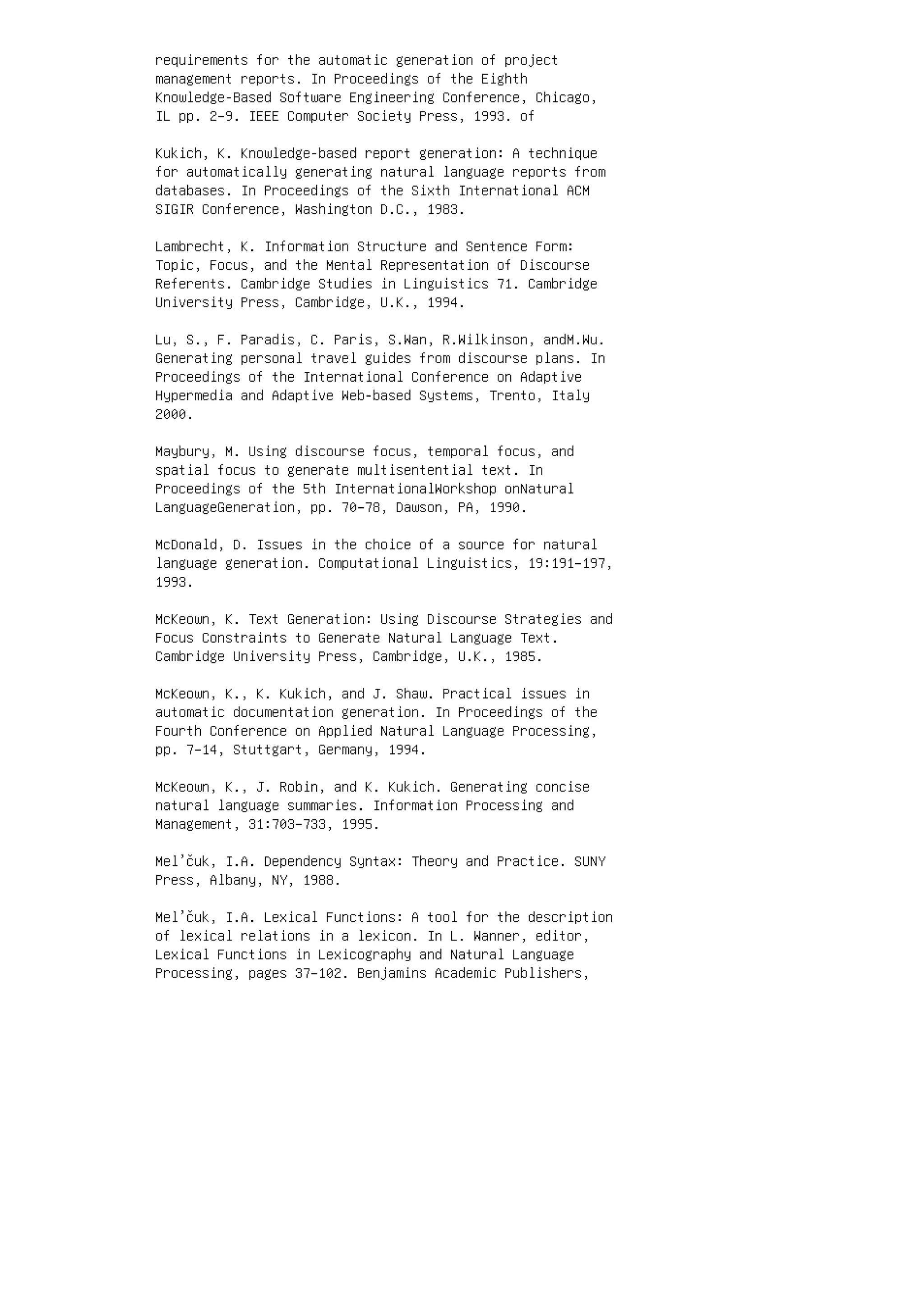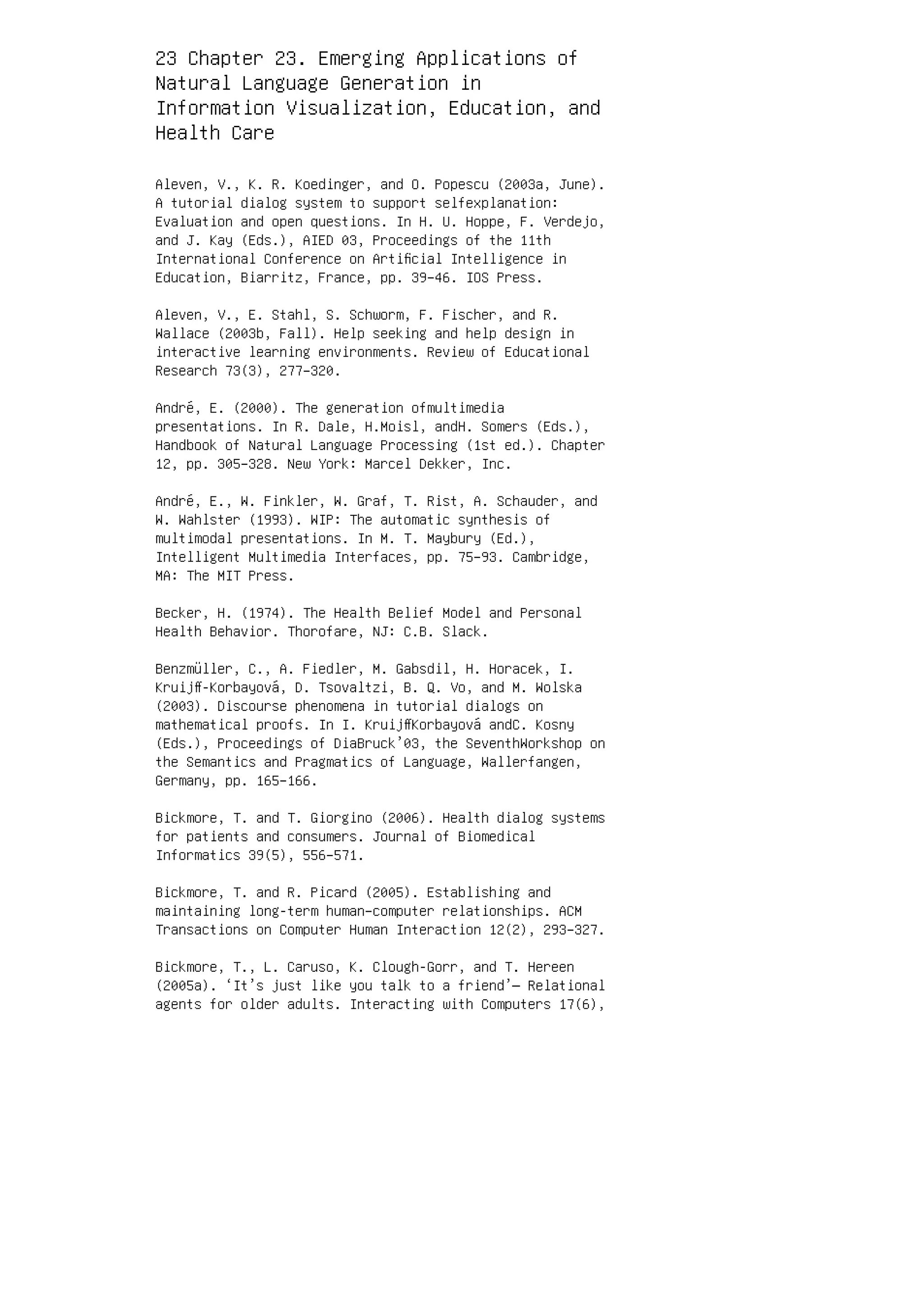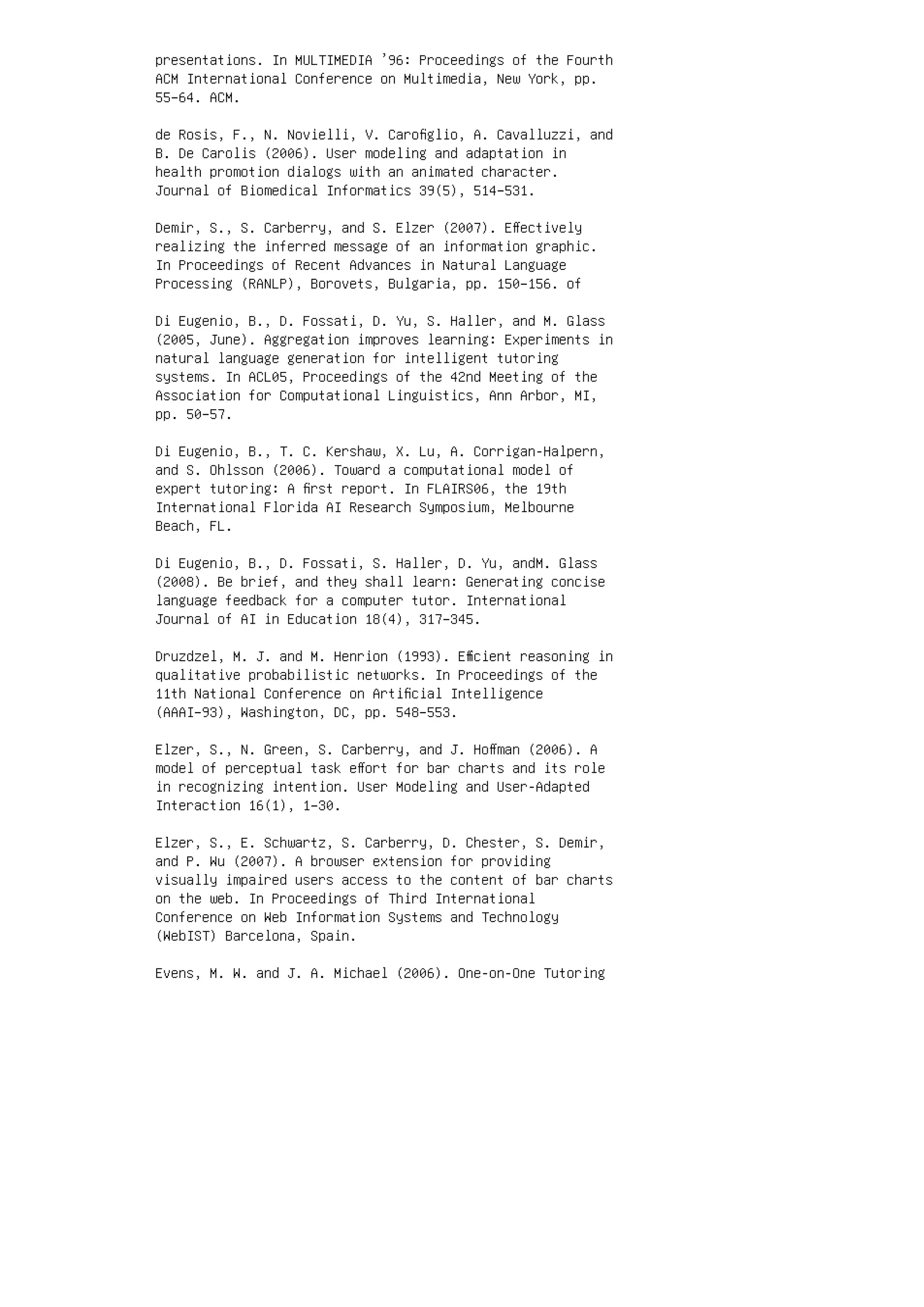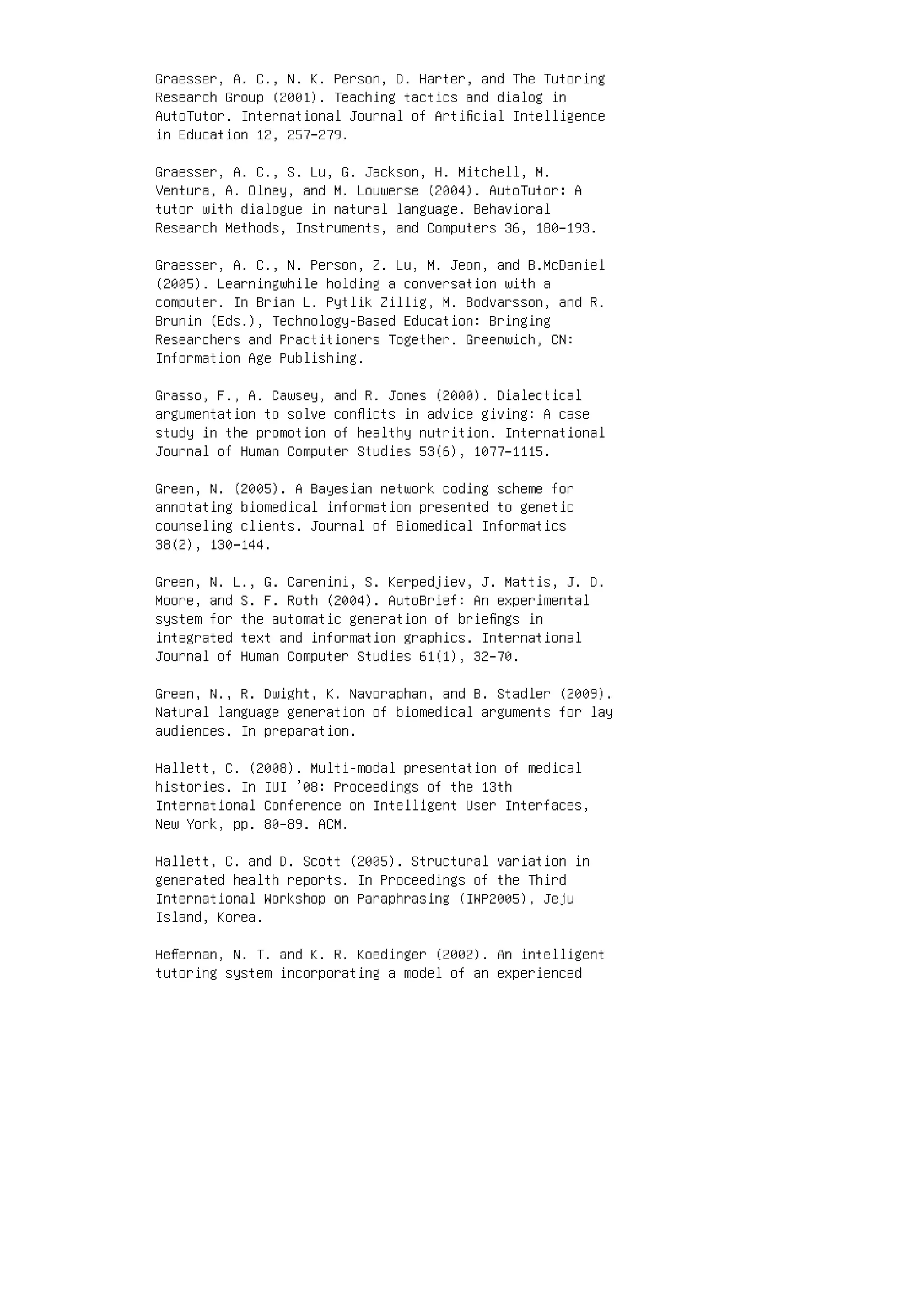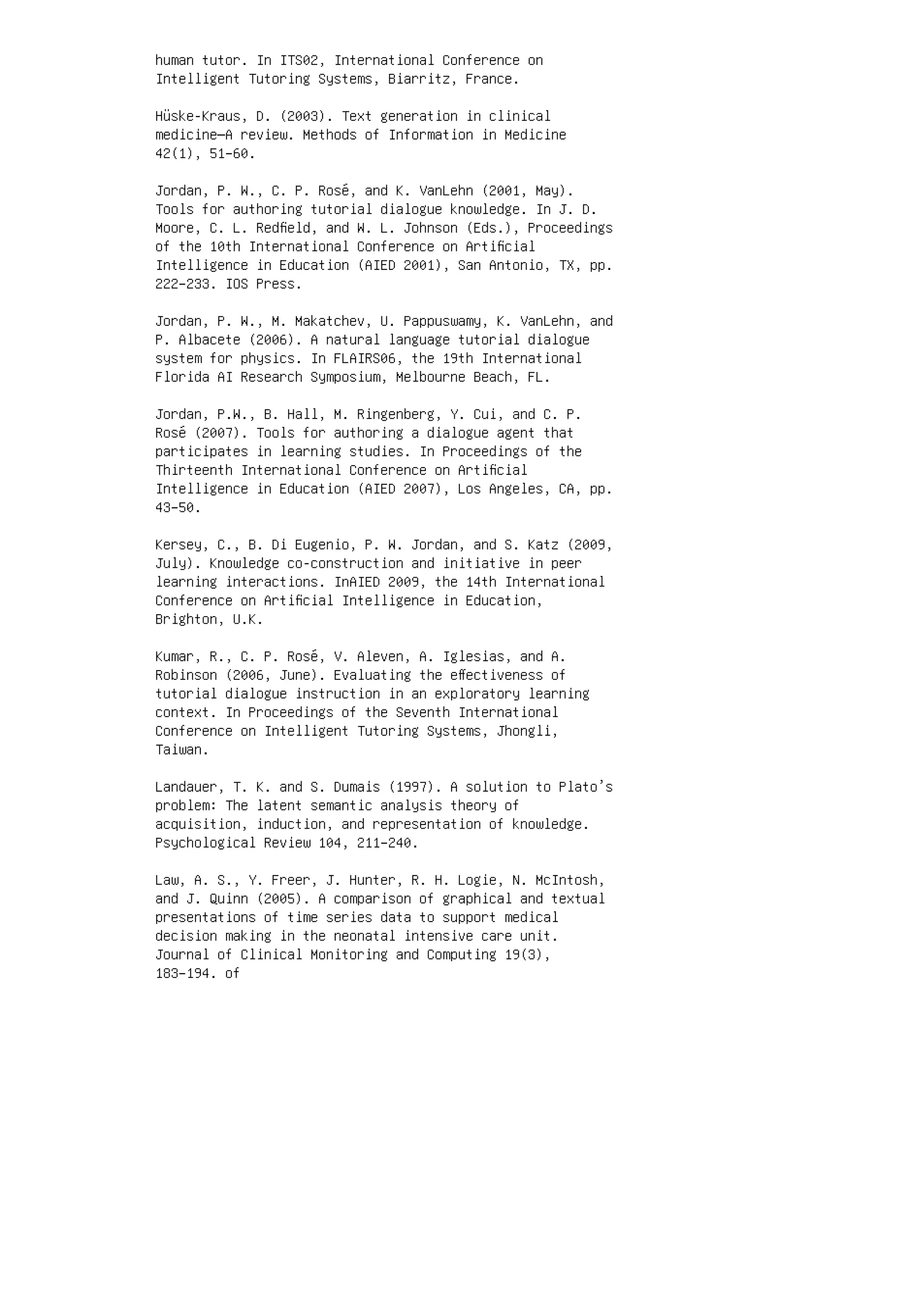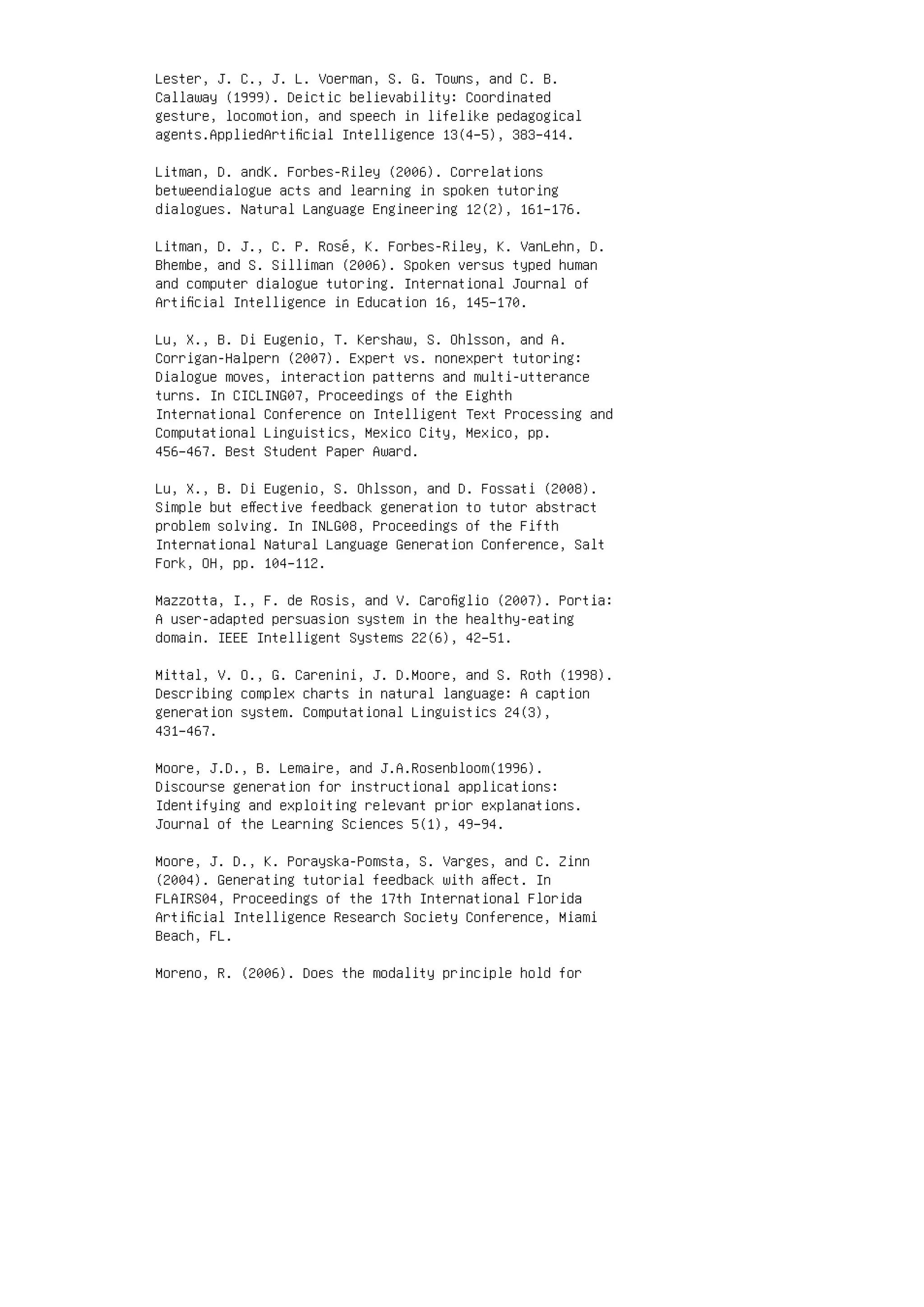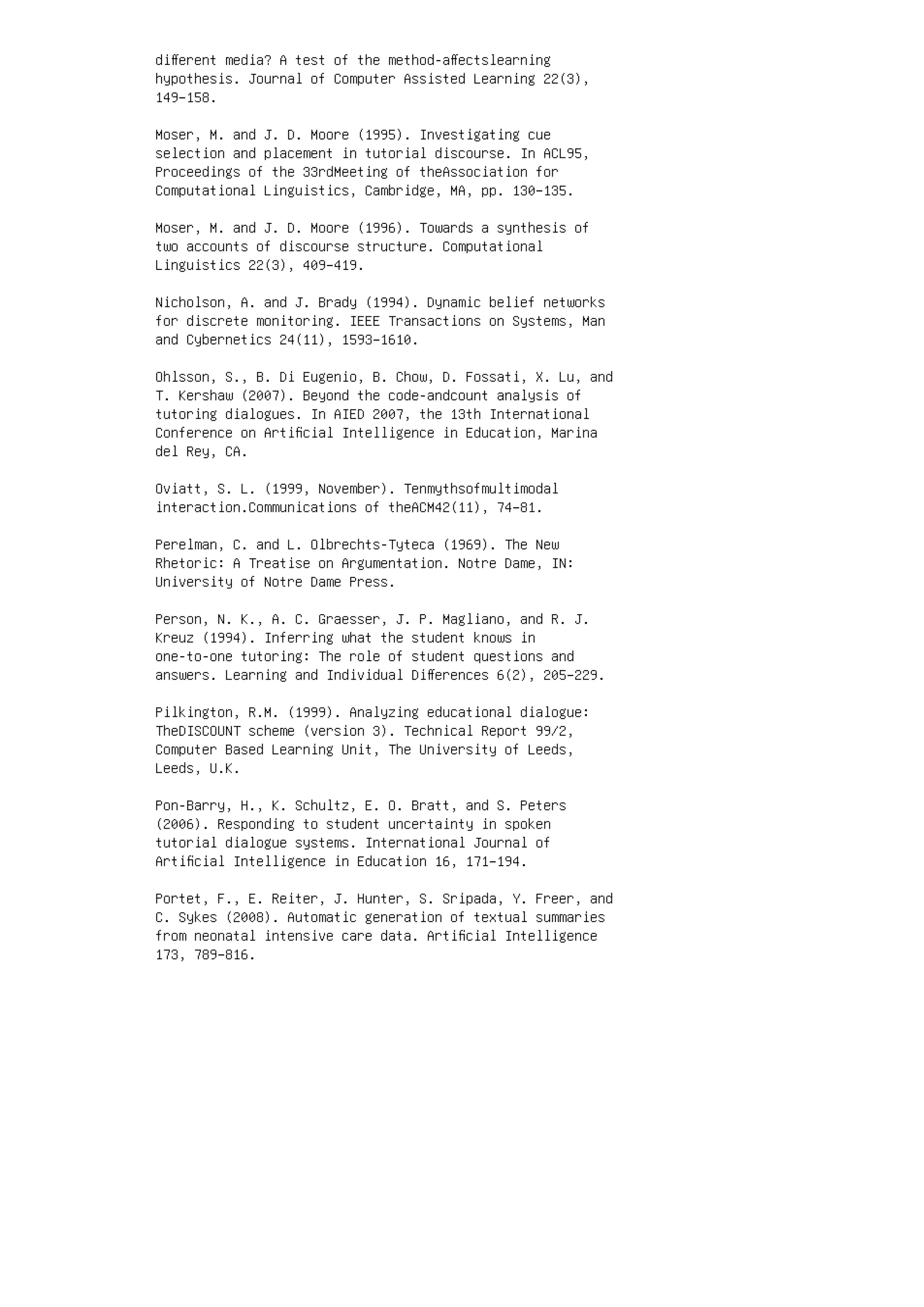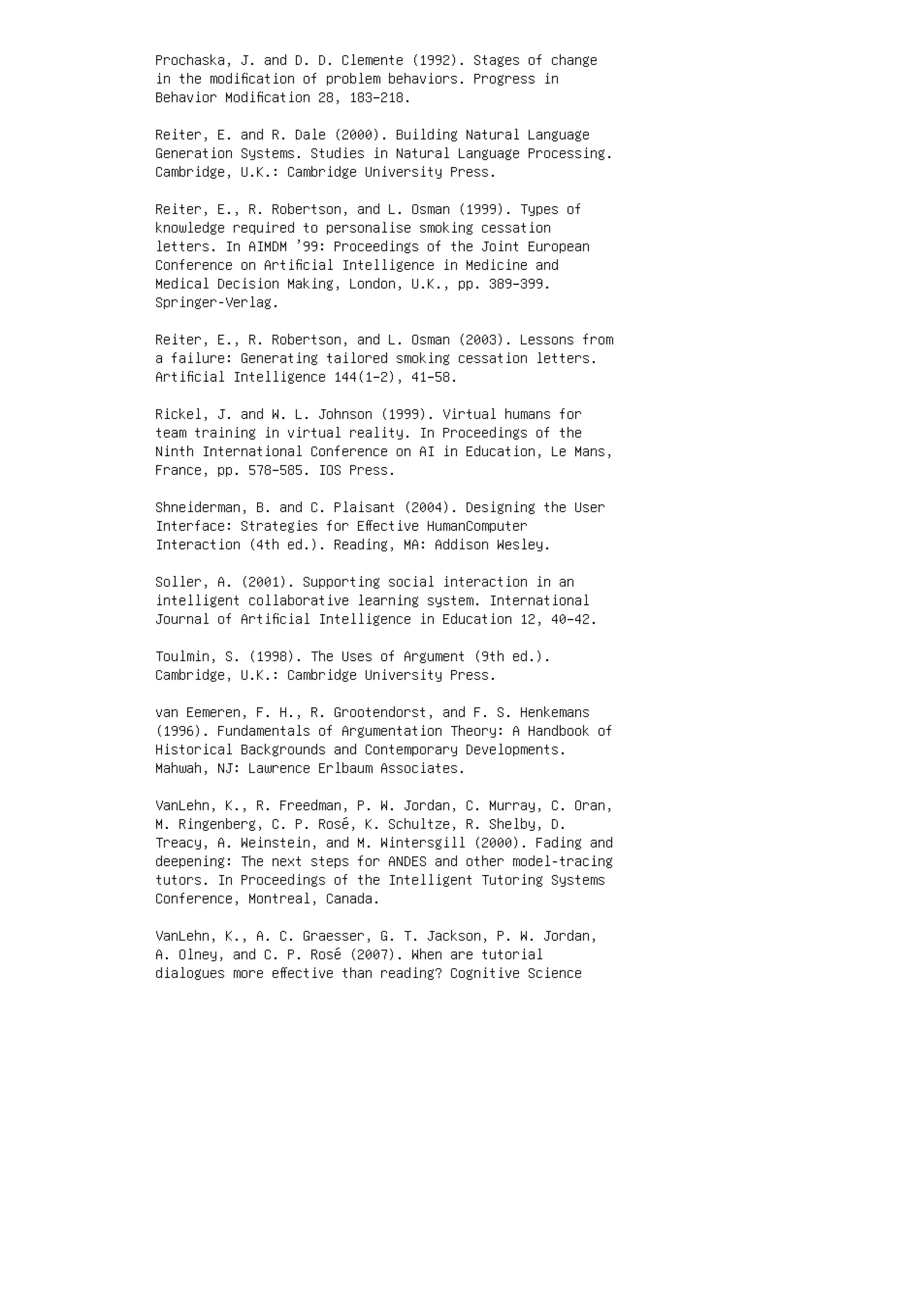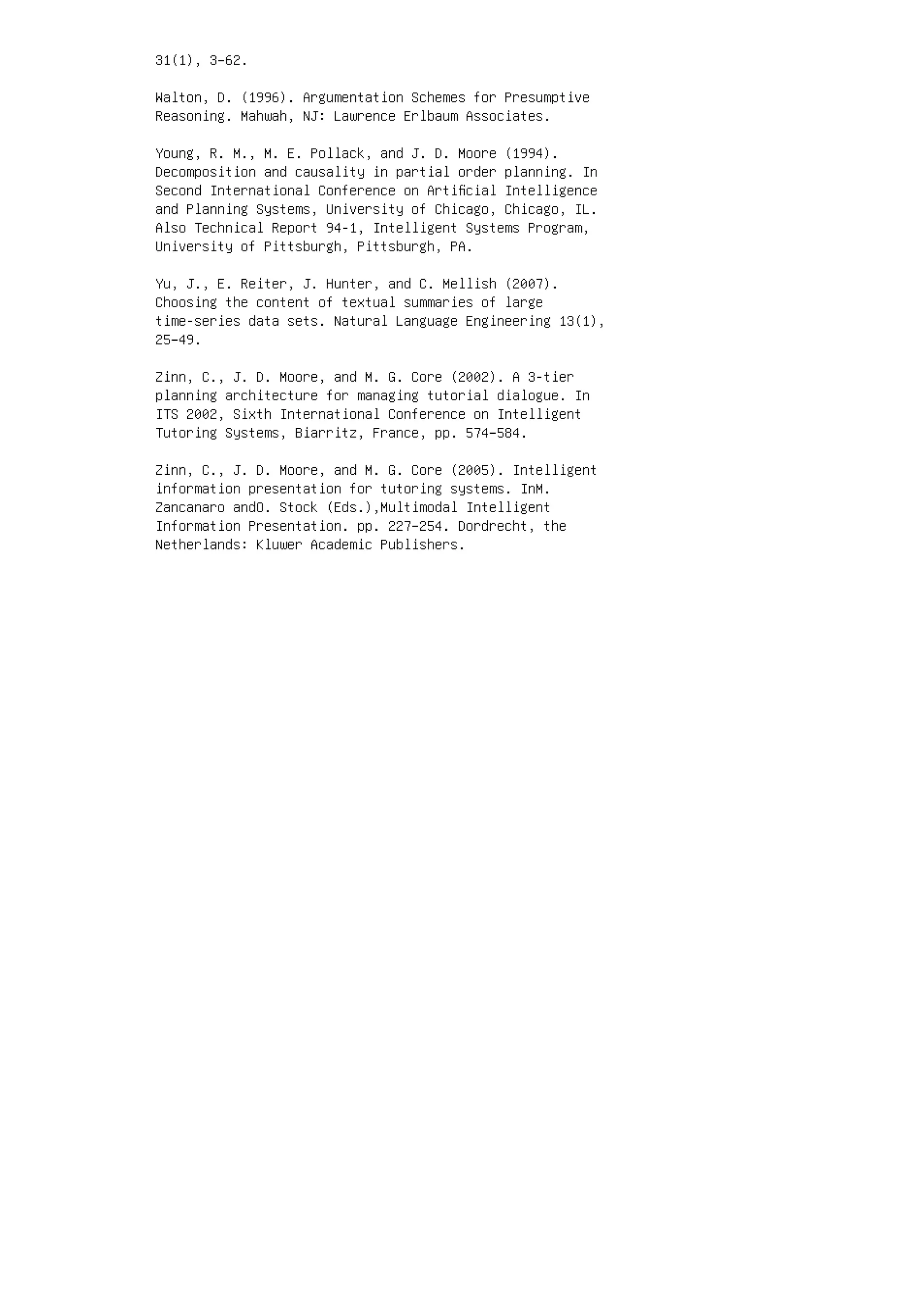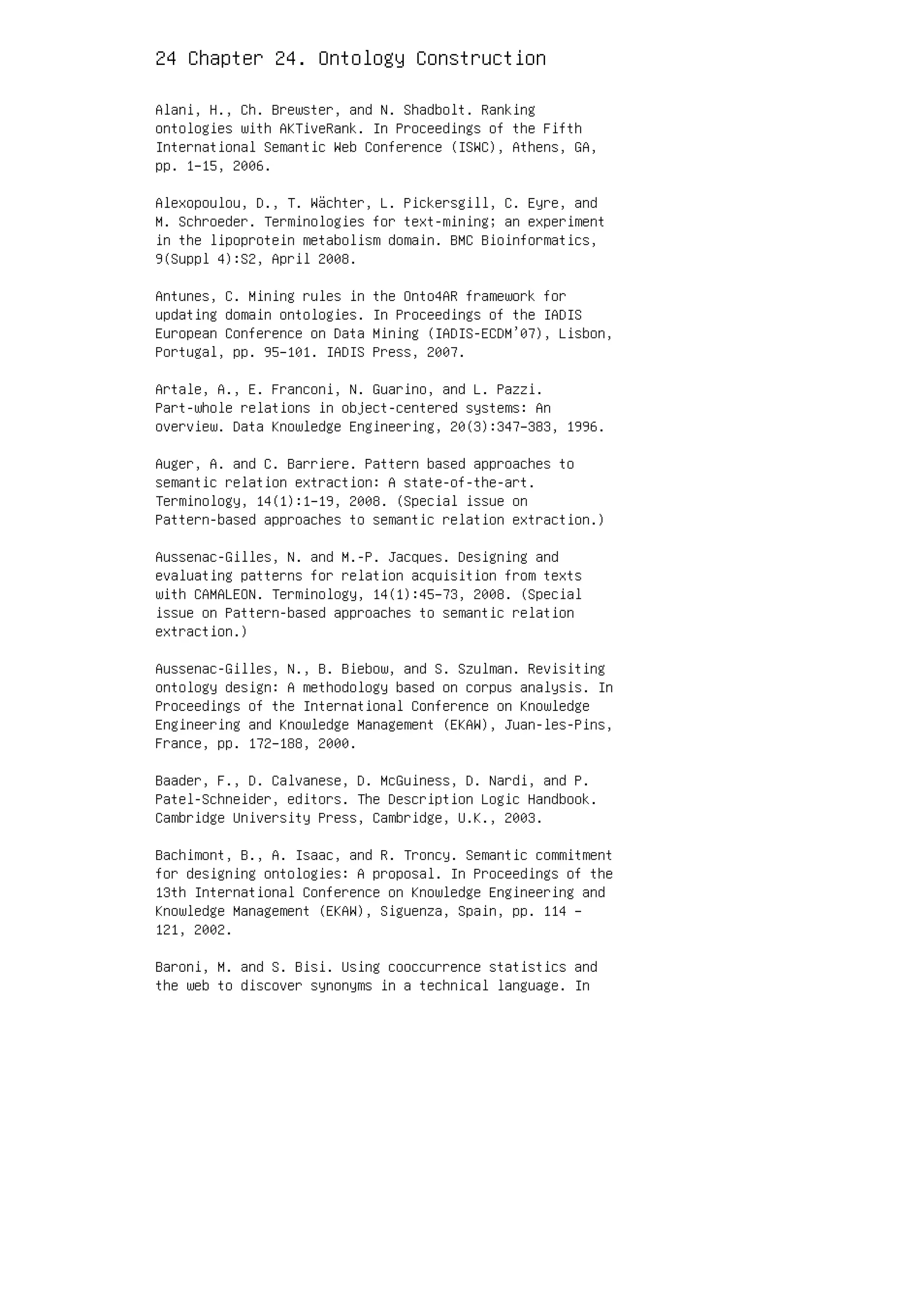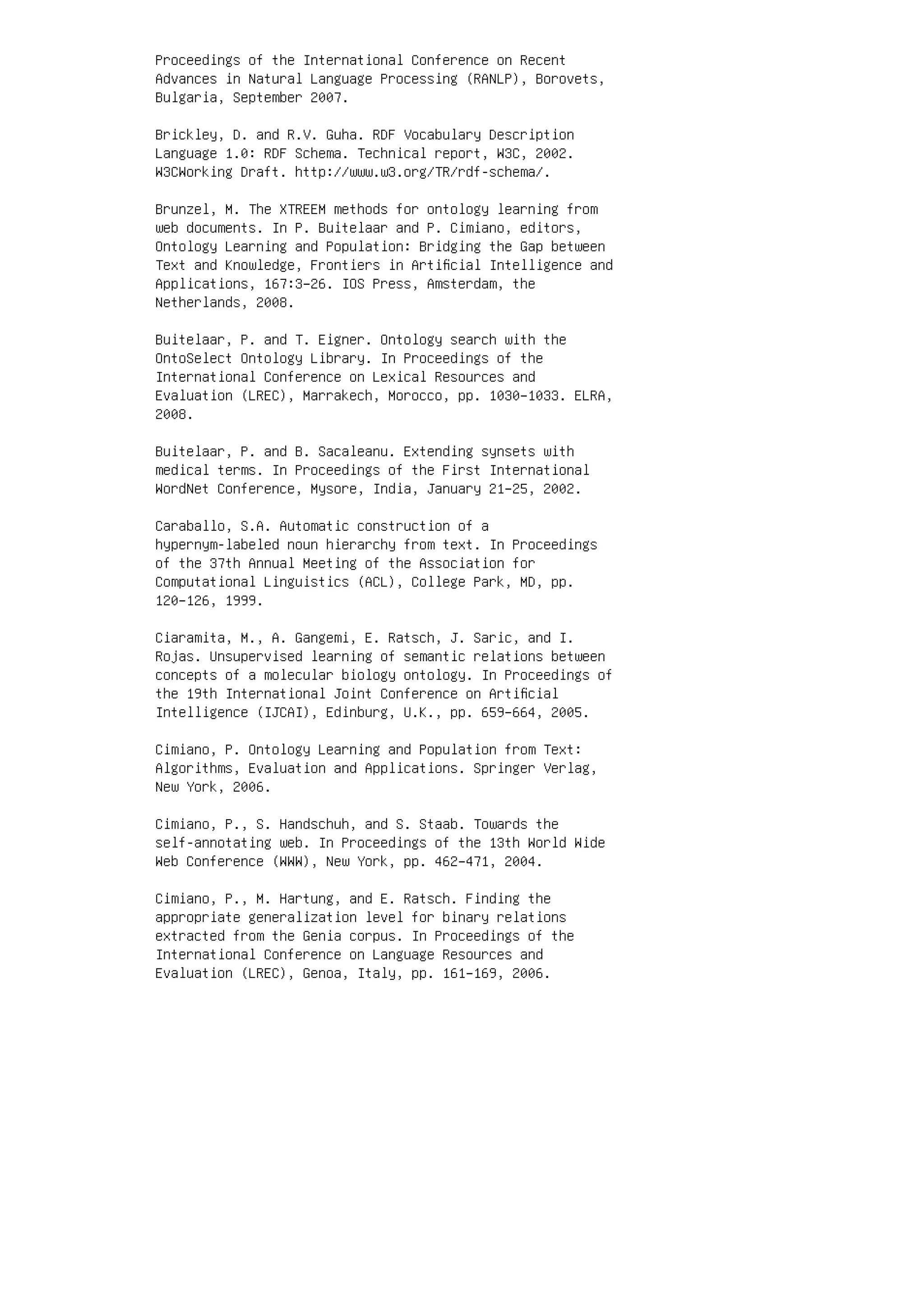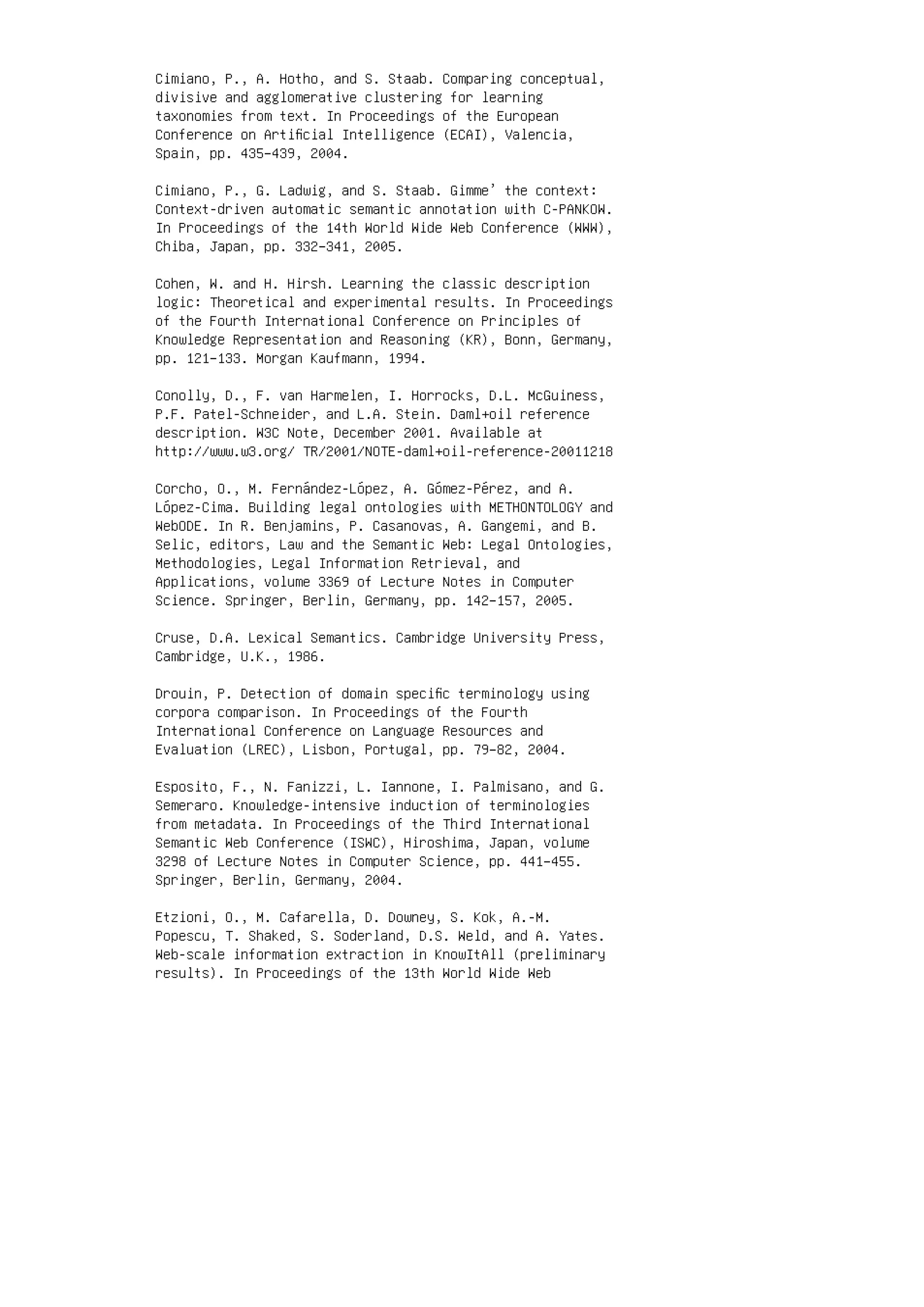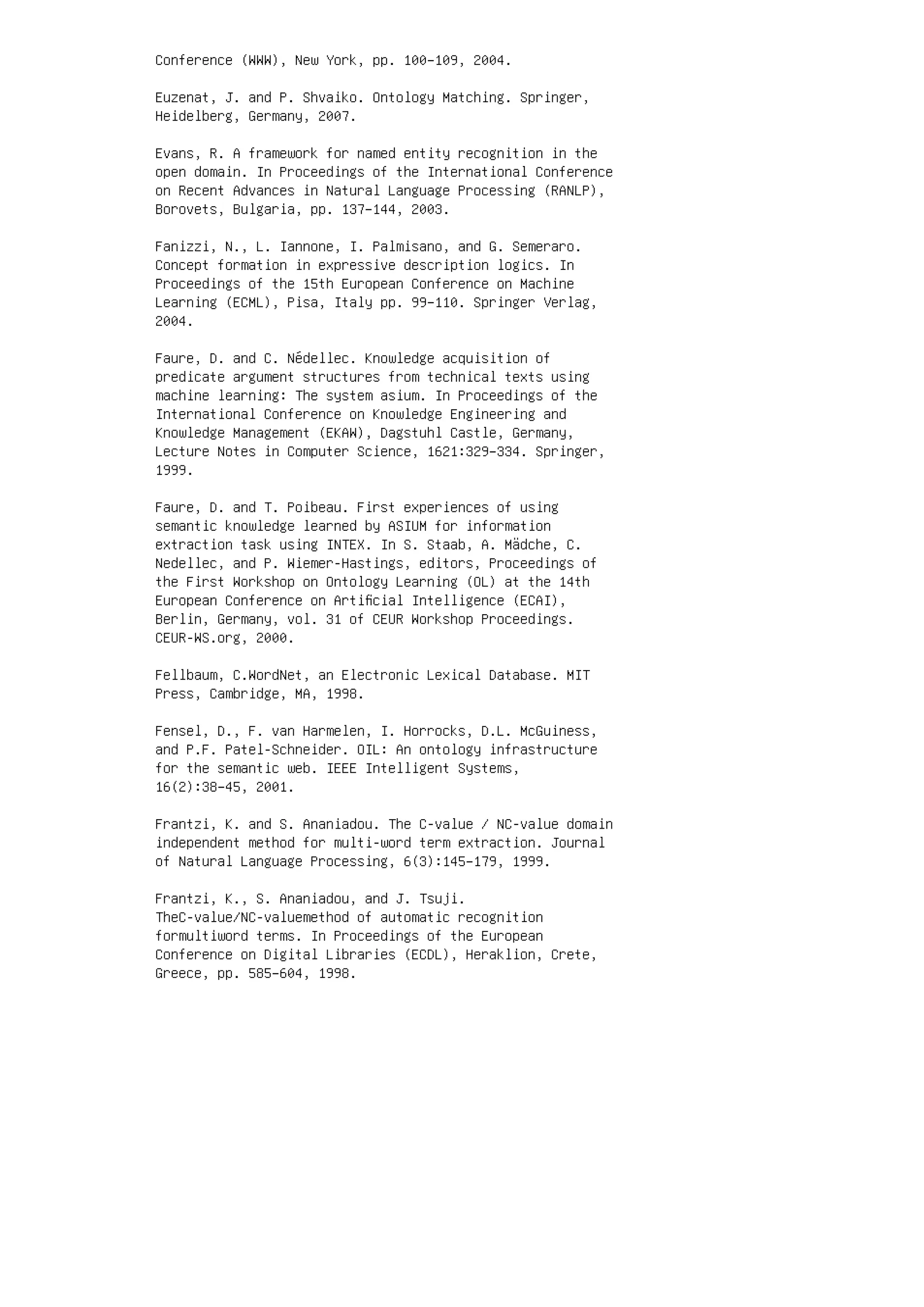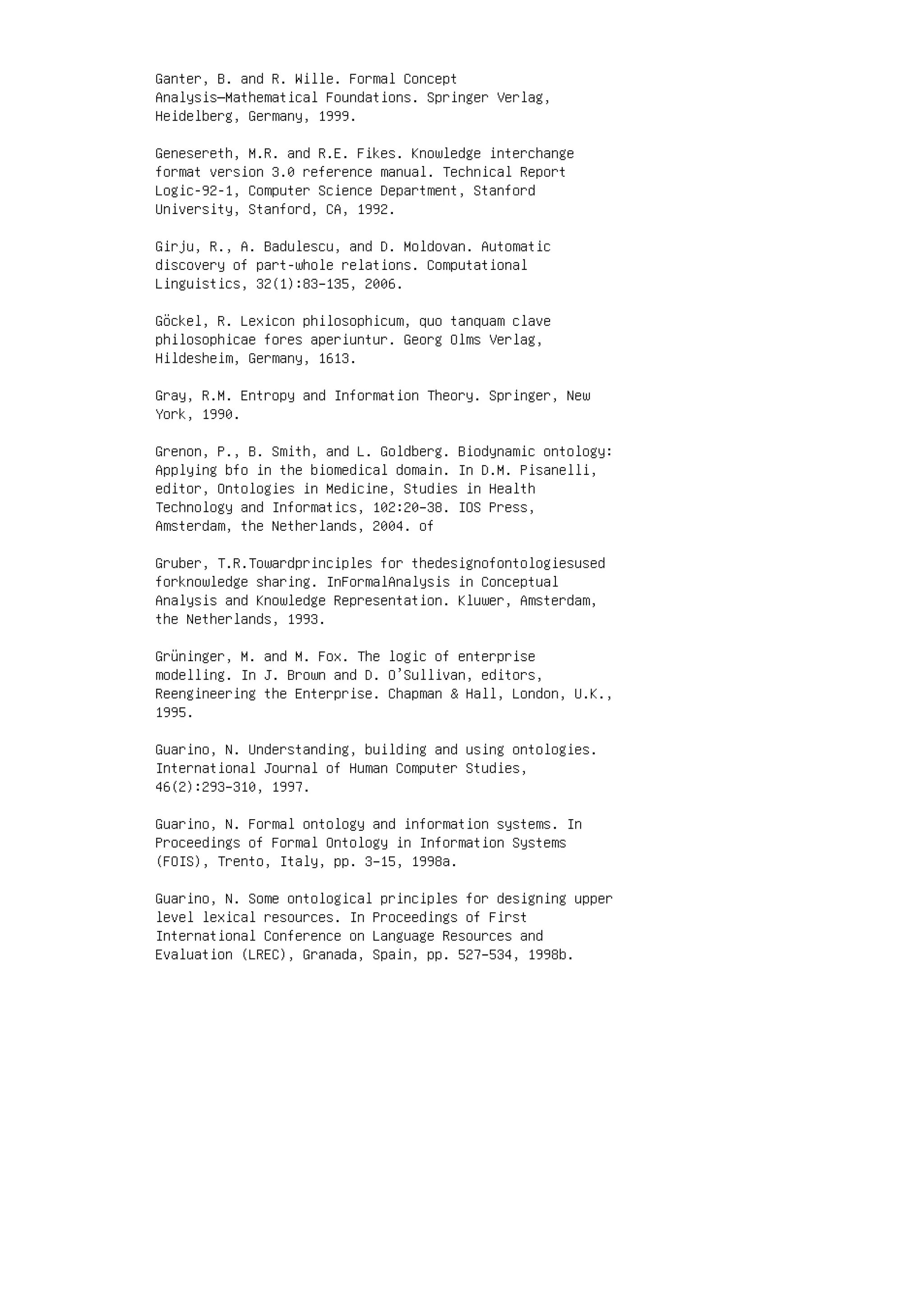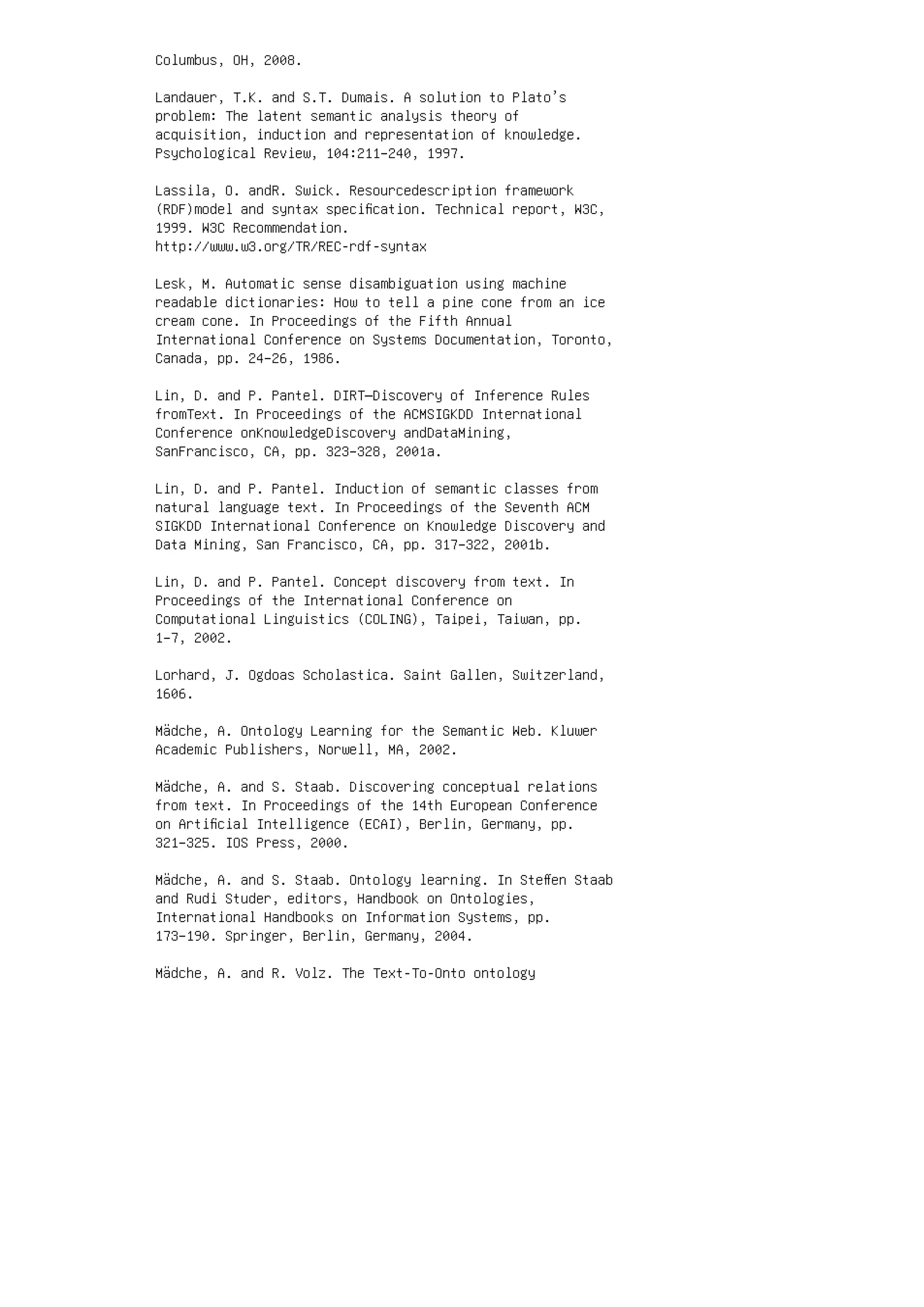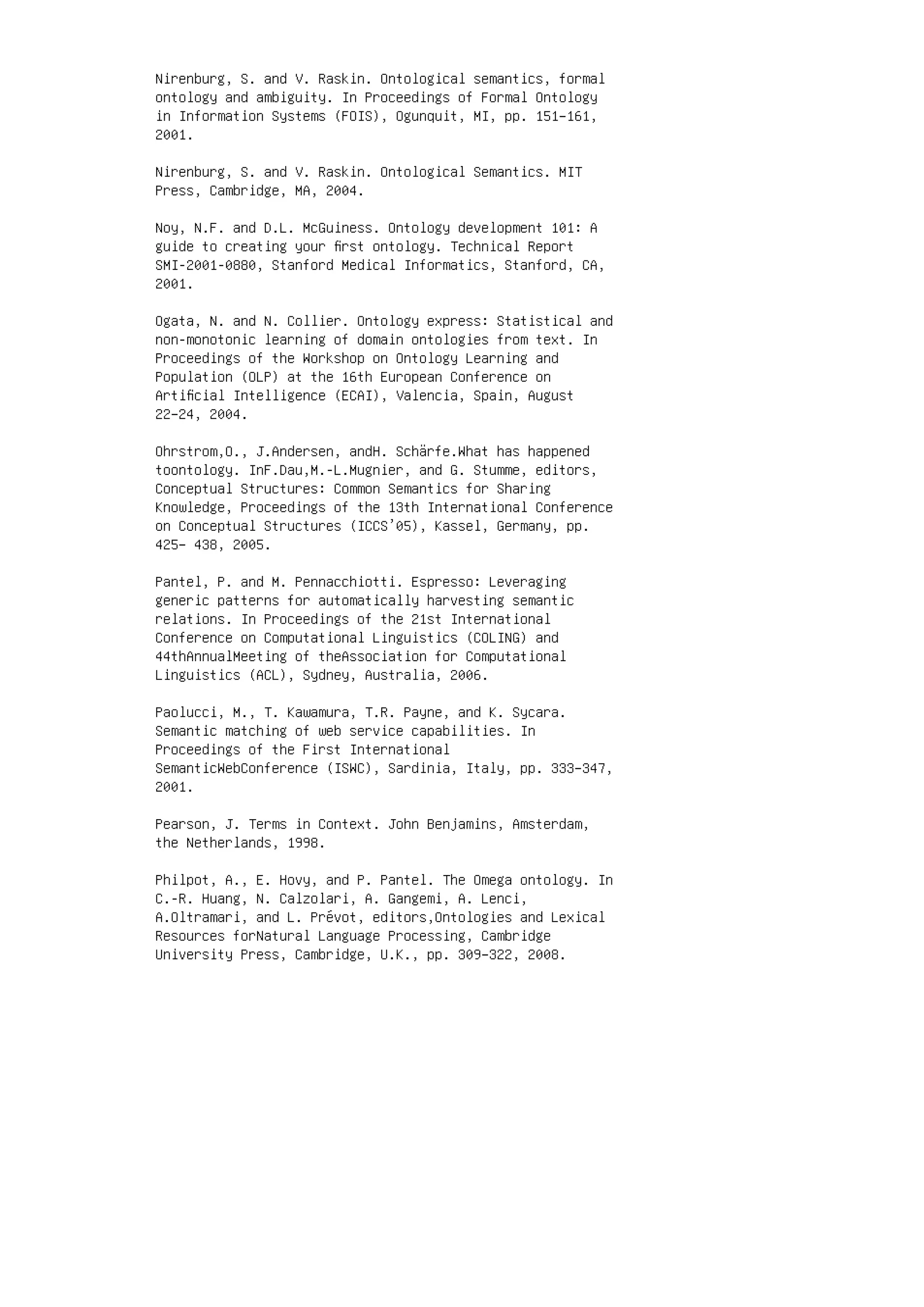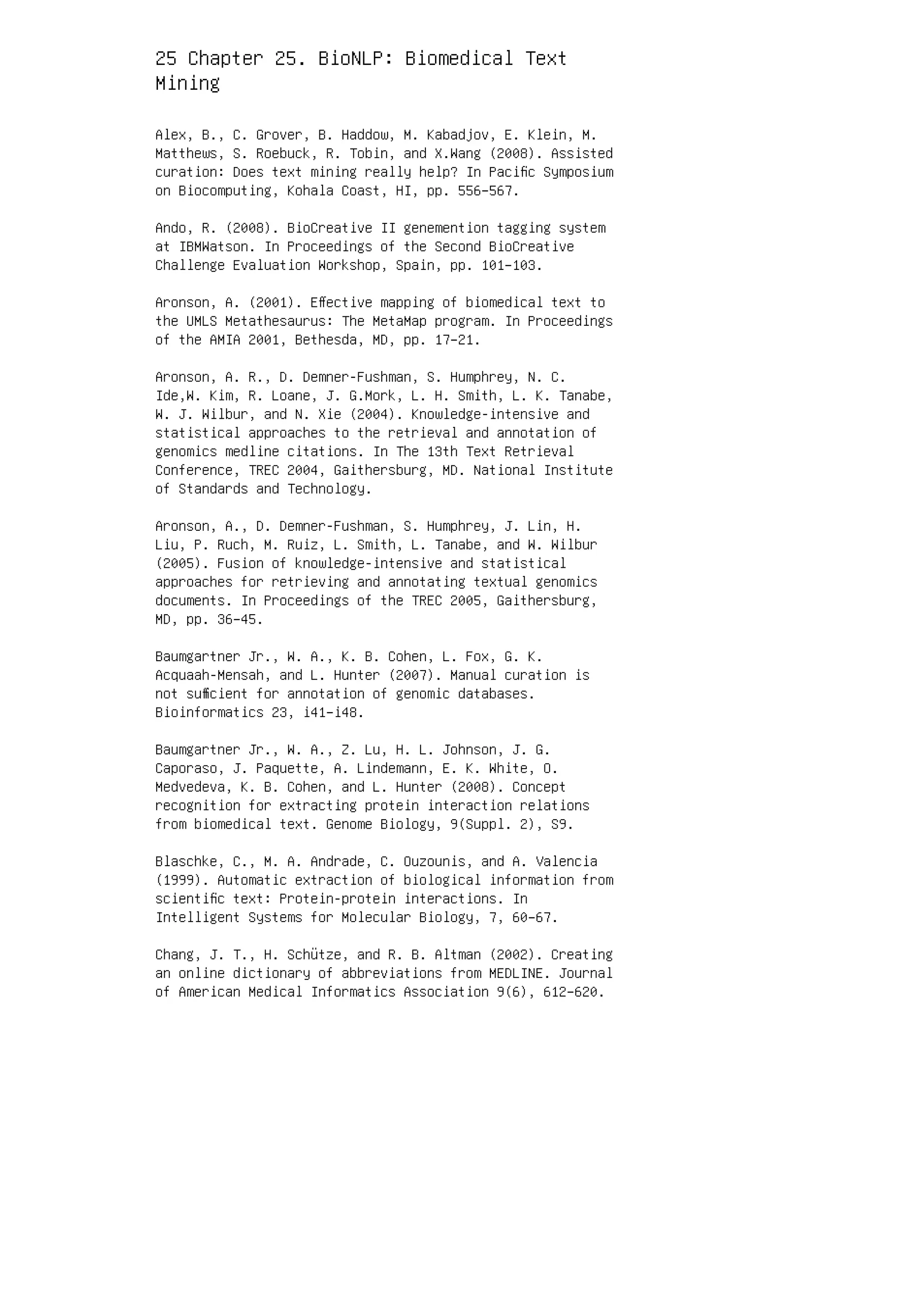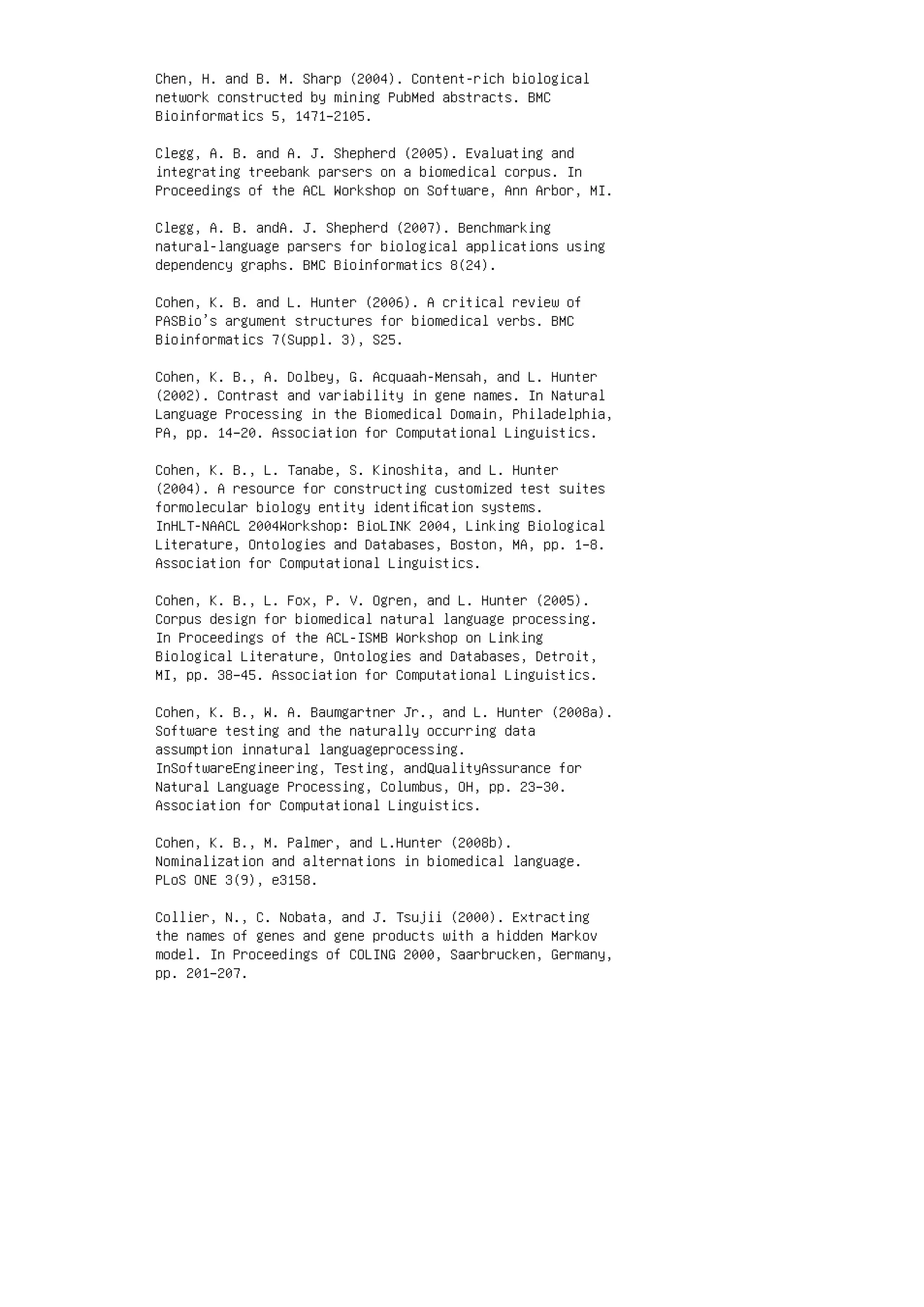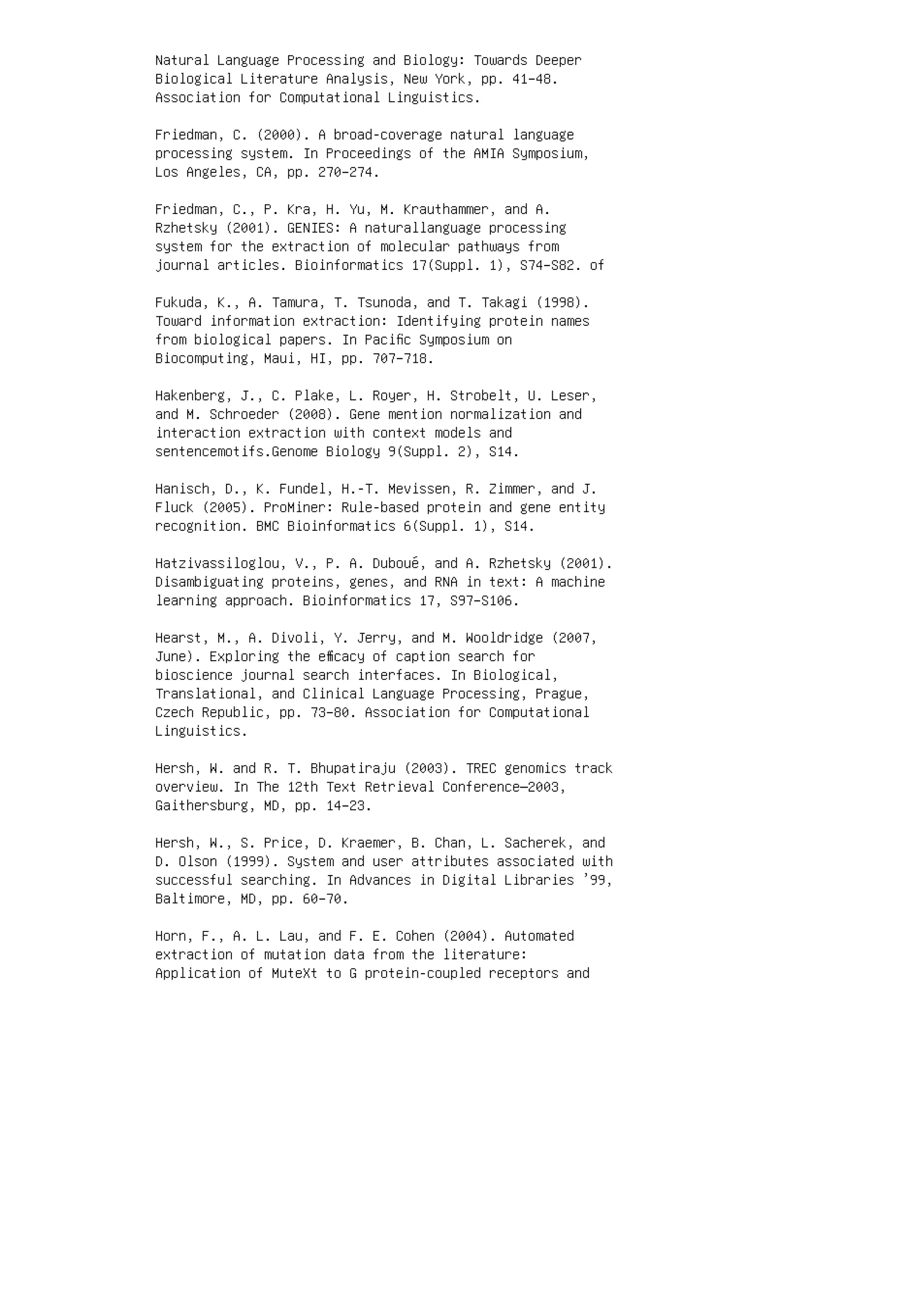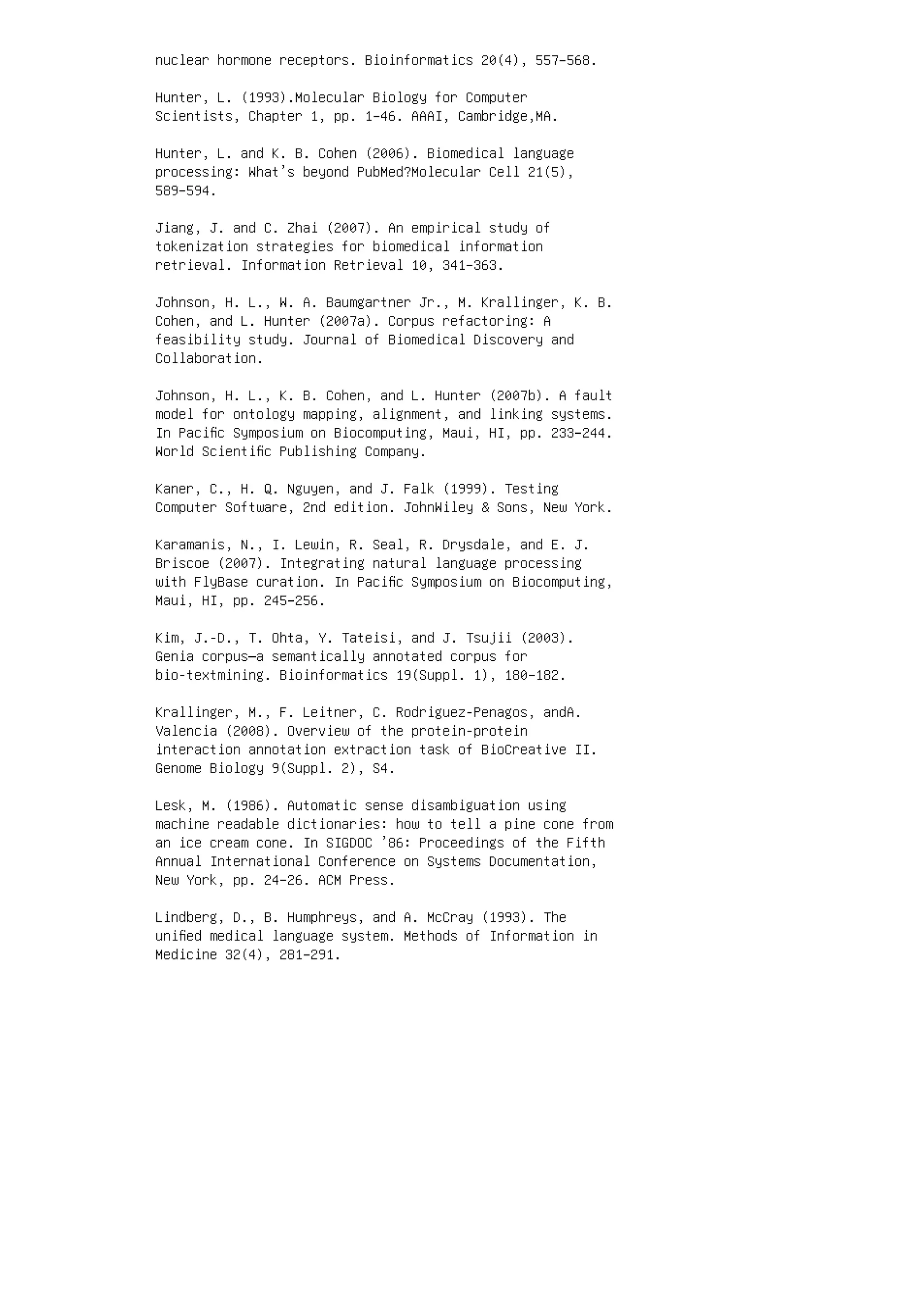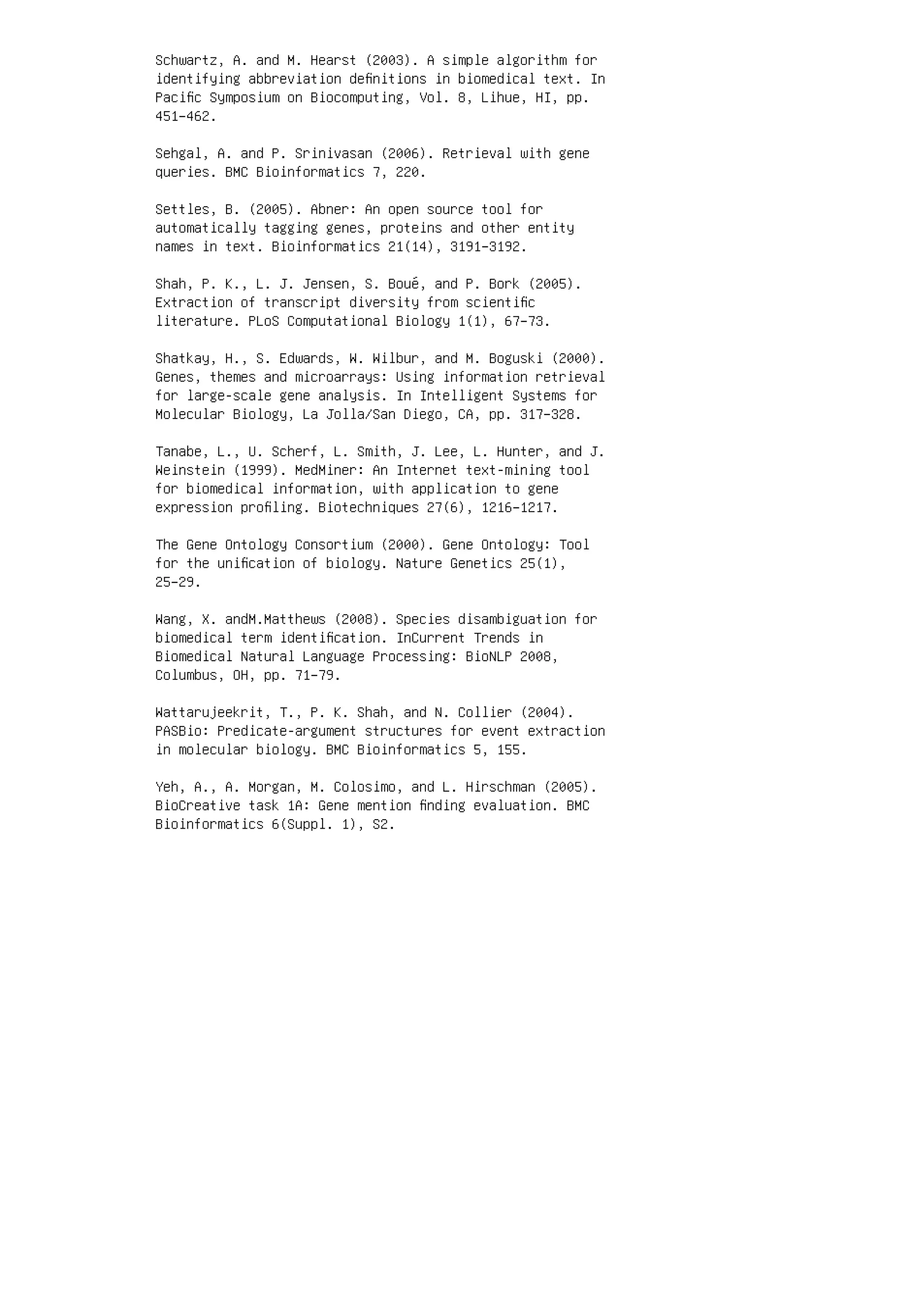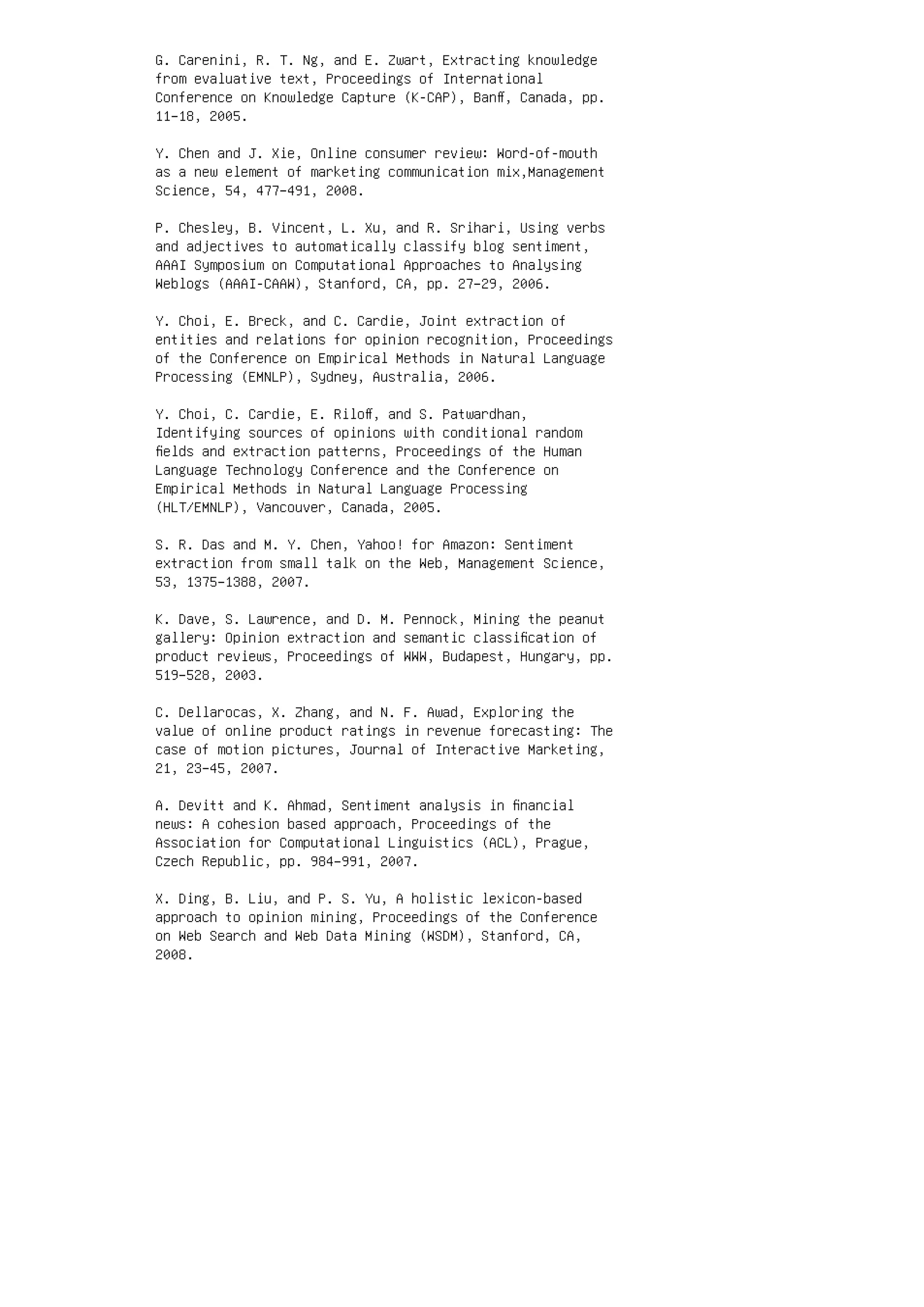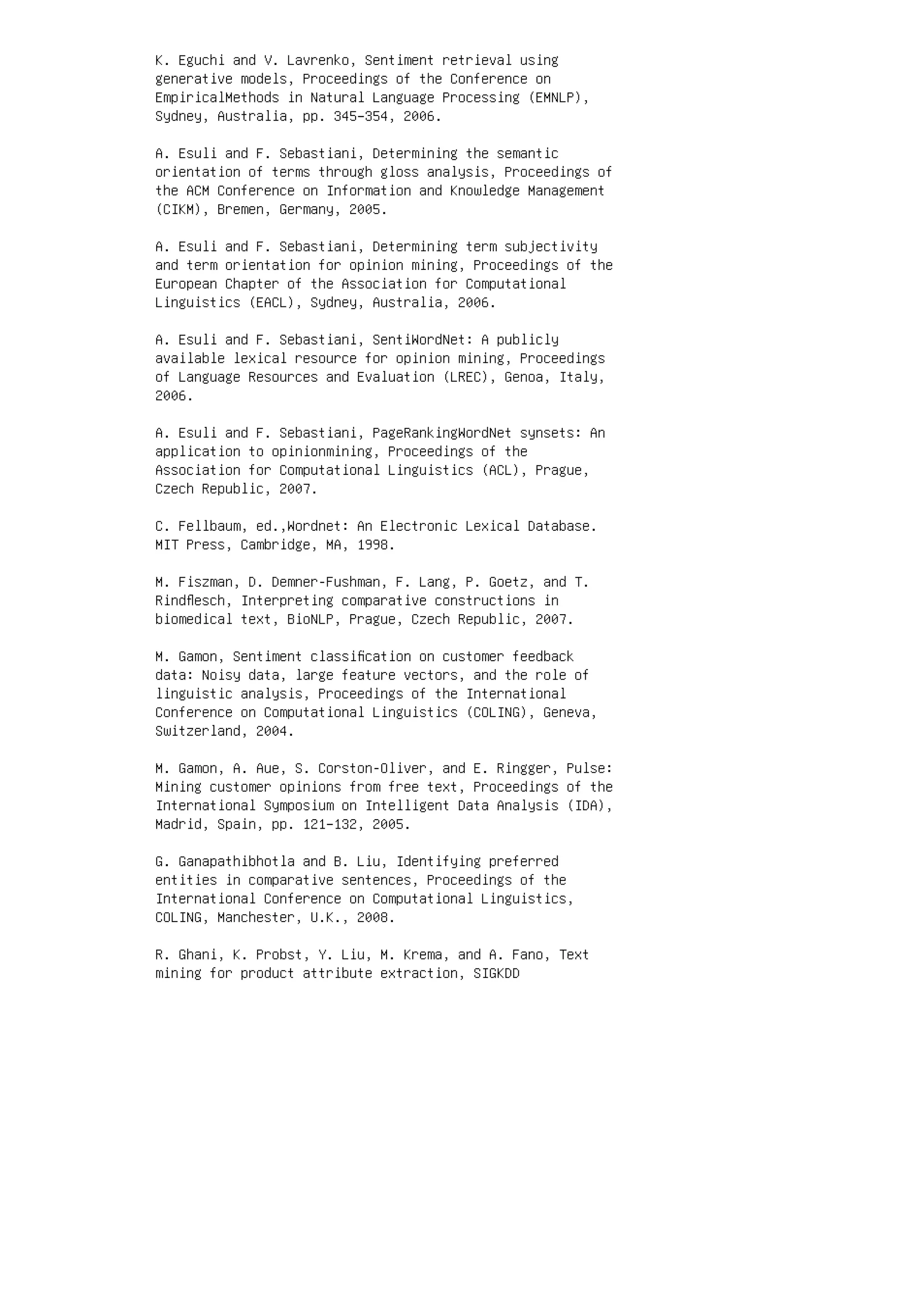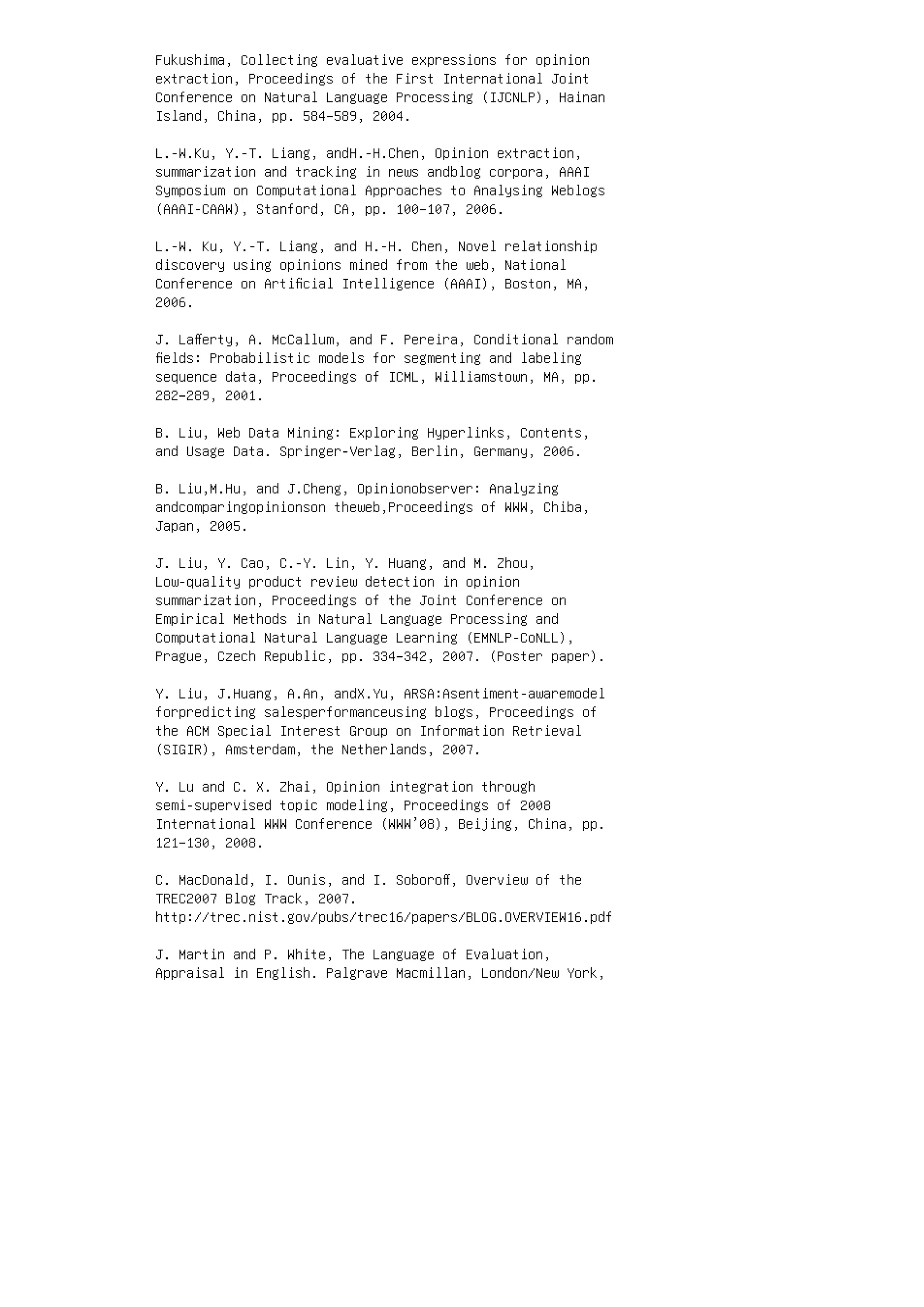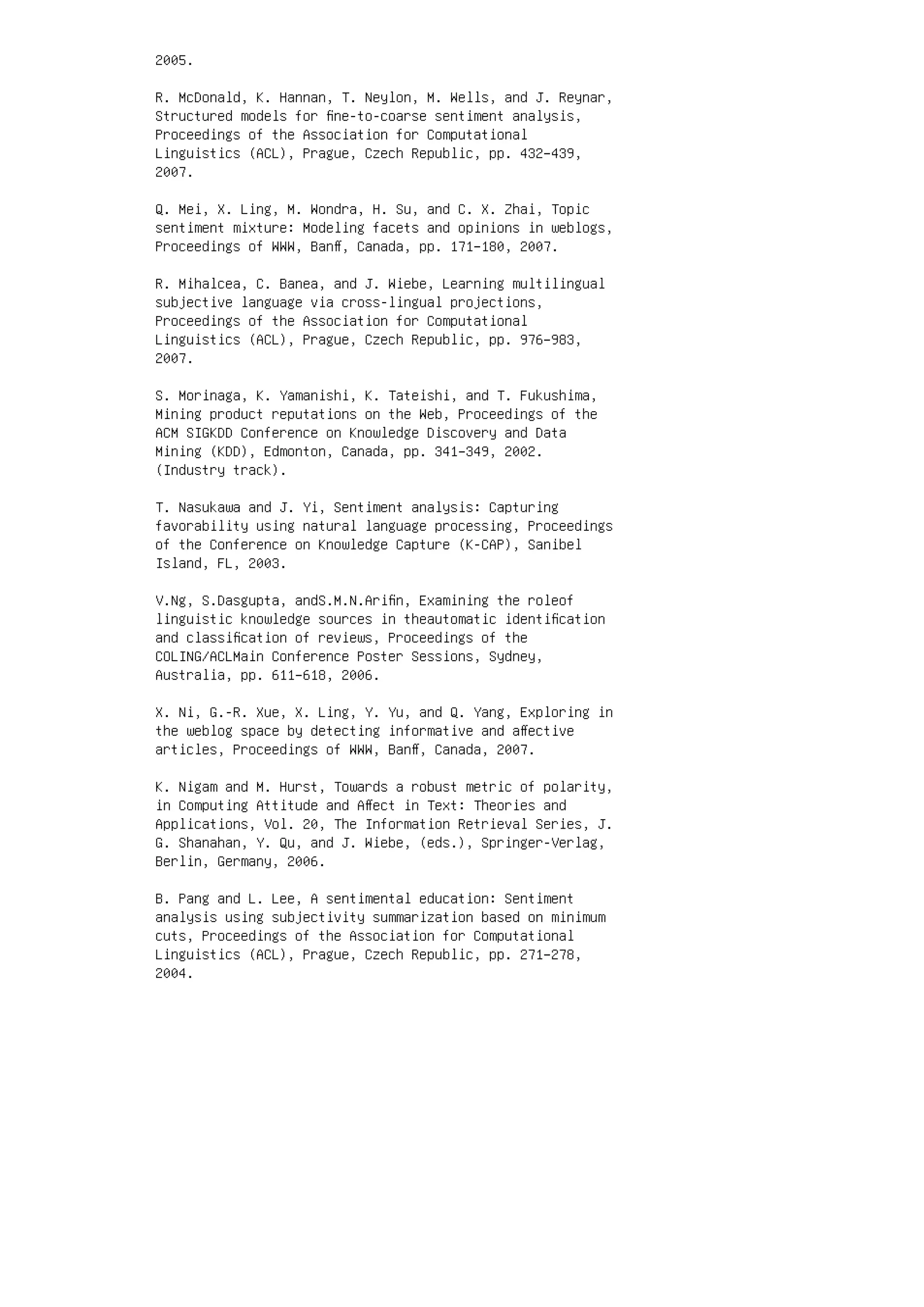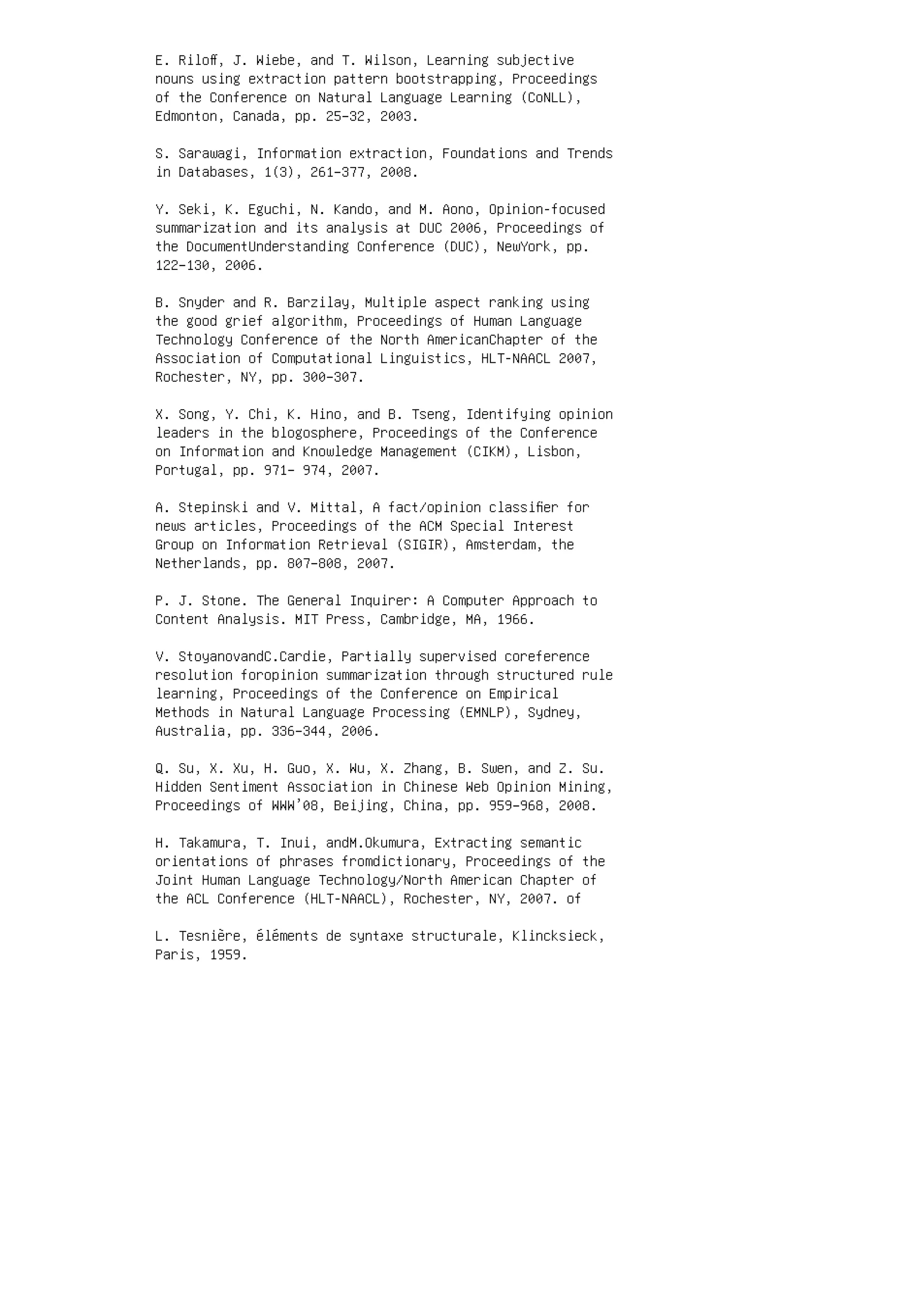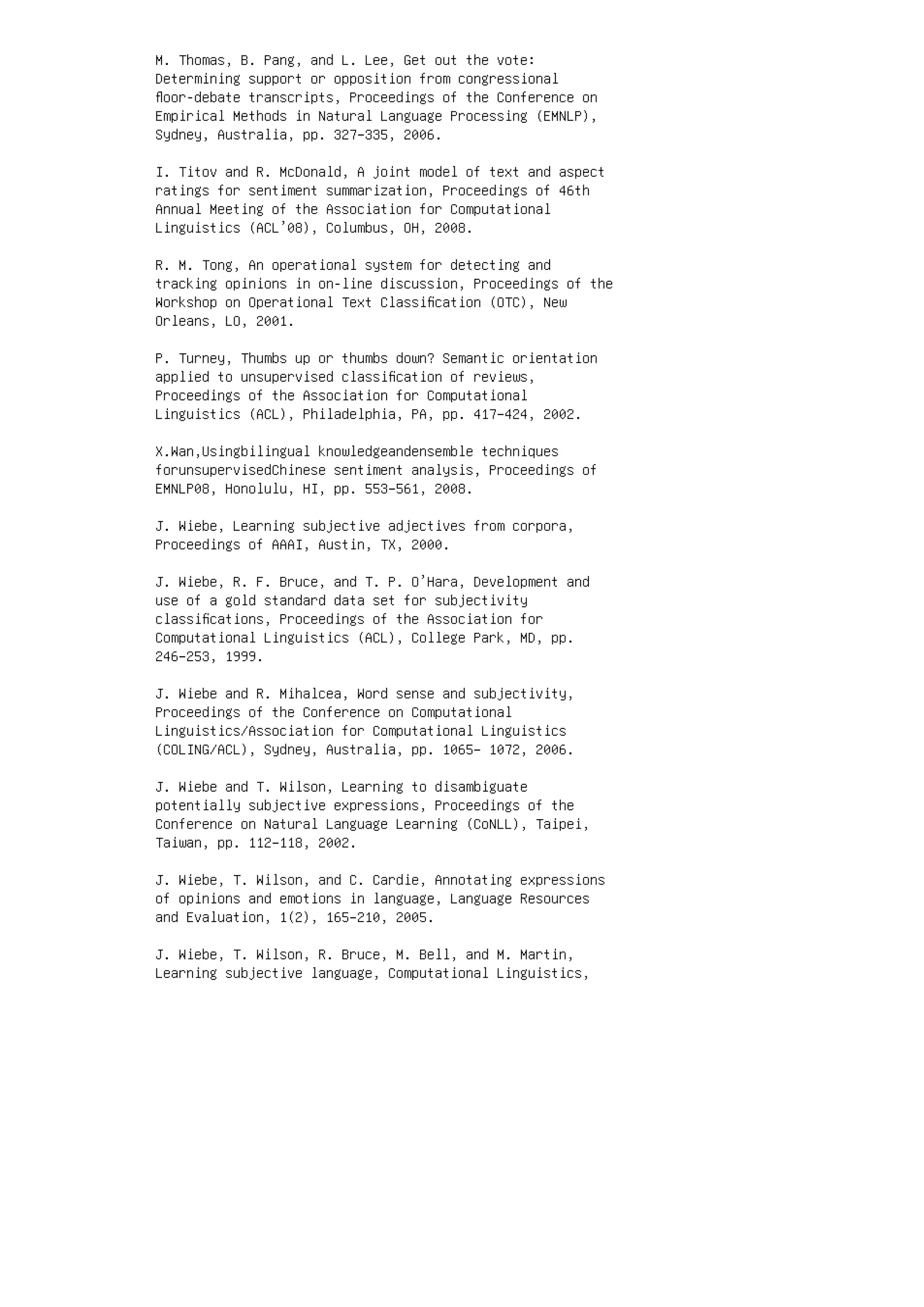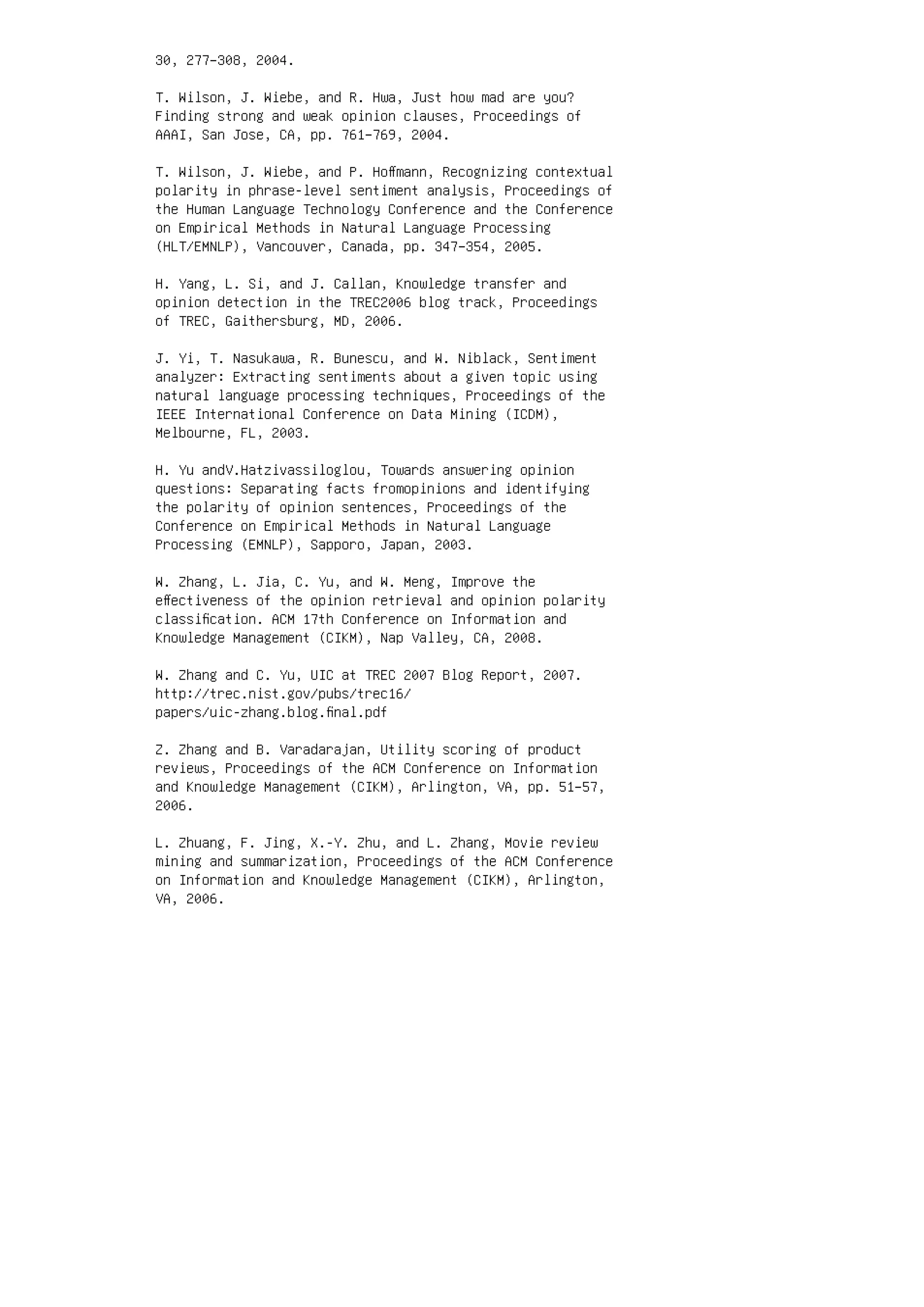The document provides information about the Chapman & Hall/CRC Machine Learning & Pattern Recognition Series, including its aims and scope. It publishes reference works, textbooks, and handbooks reflecting the latest advances and applications in machine learning and pattern recognition. The series includes titles in areas such as machine learning, pattern recognition, computational intelligence, robotics, natural language processing, computer vision, and other relevant topics. It has already published titles such as "Machine Learning: An Algorithmic Perspective" and the second edition of the "Handbook of Natural Language Processing."
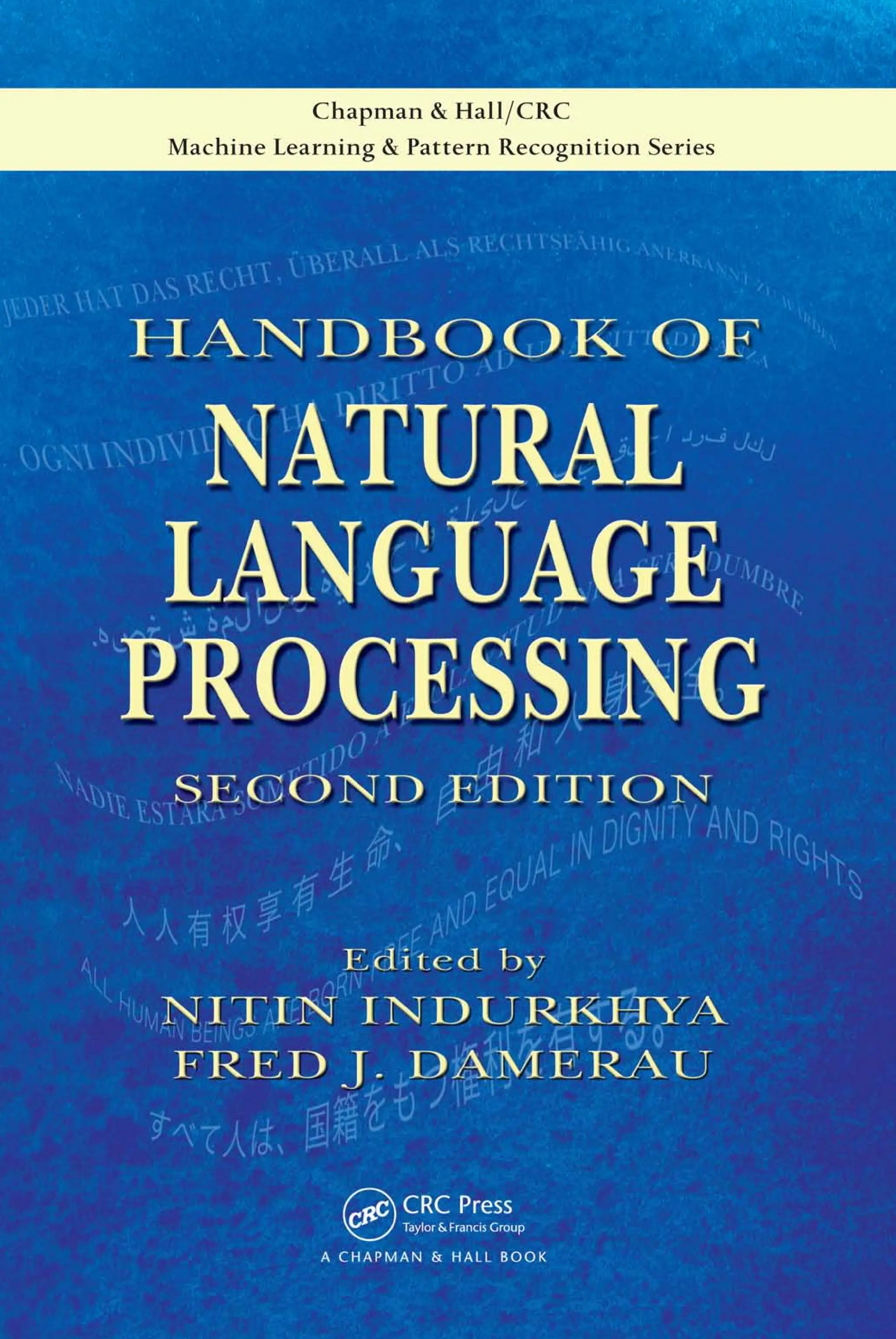
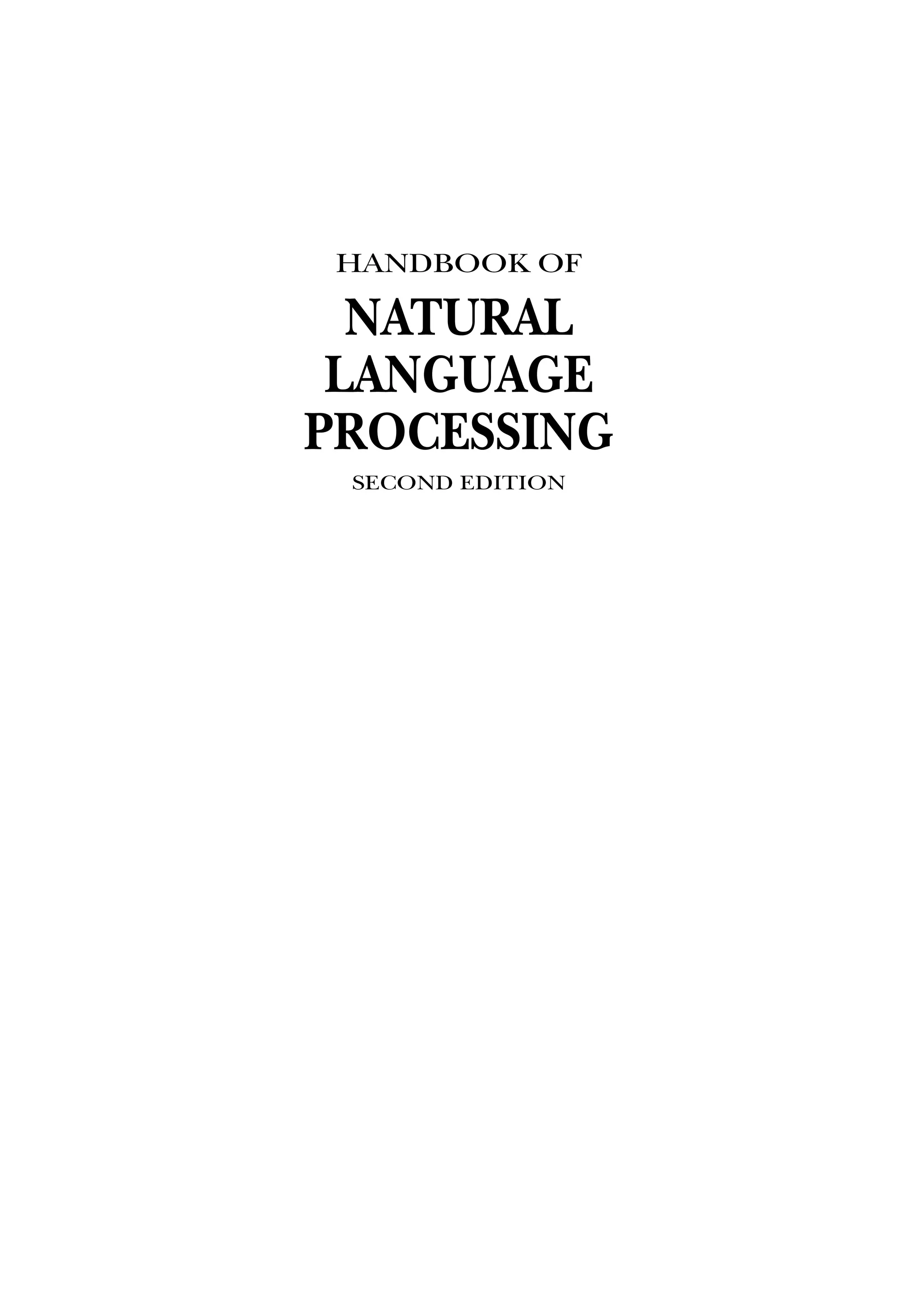
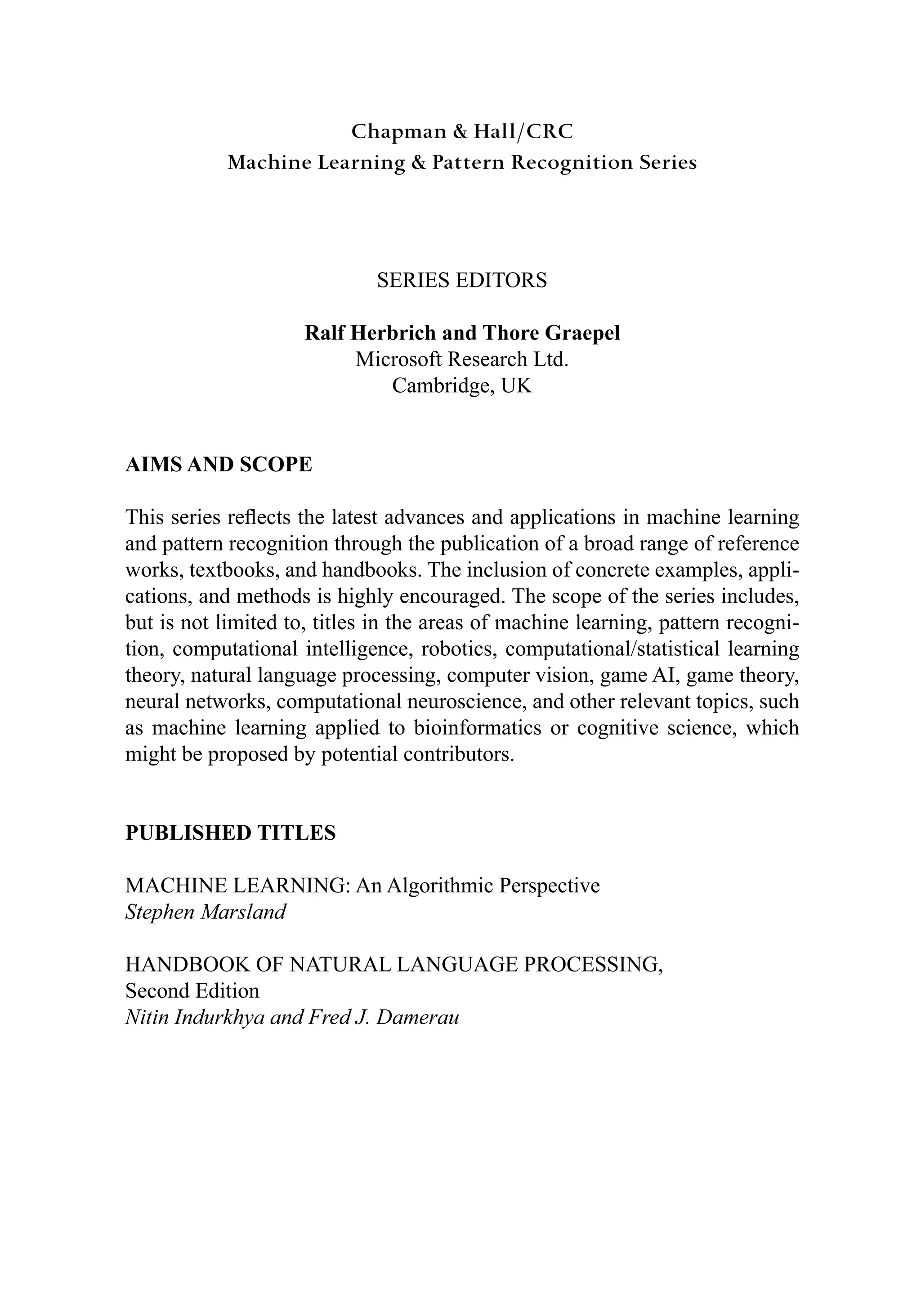

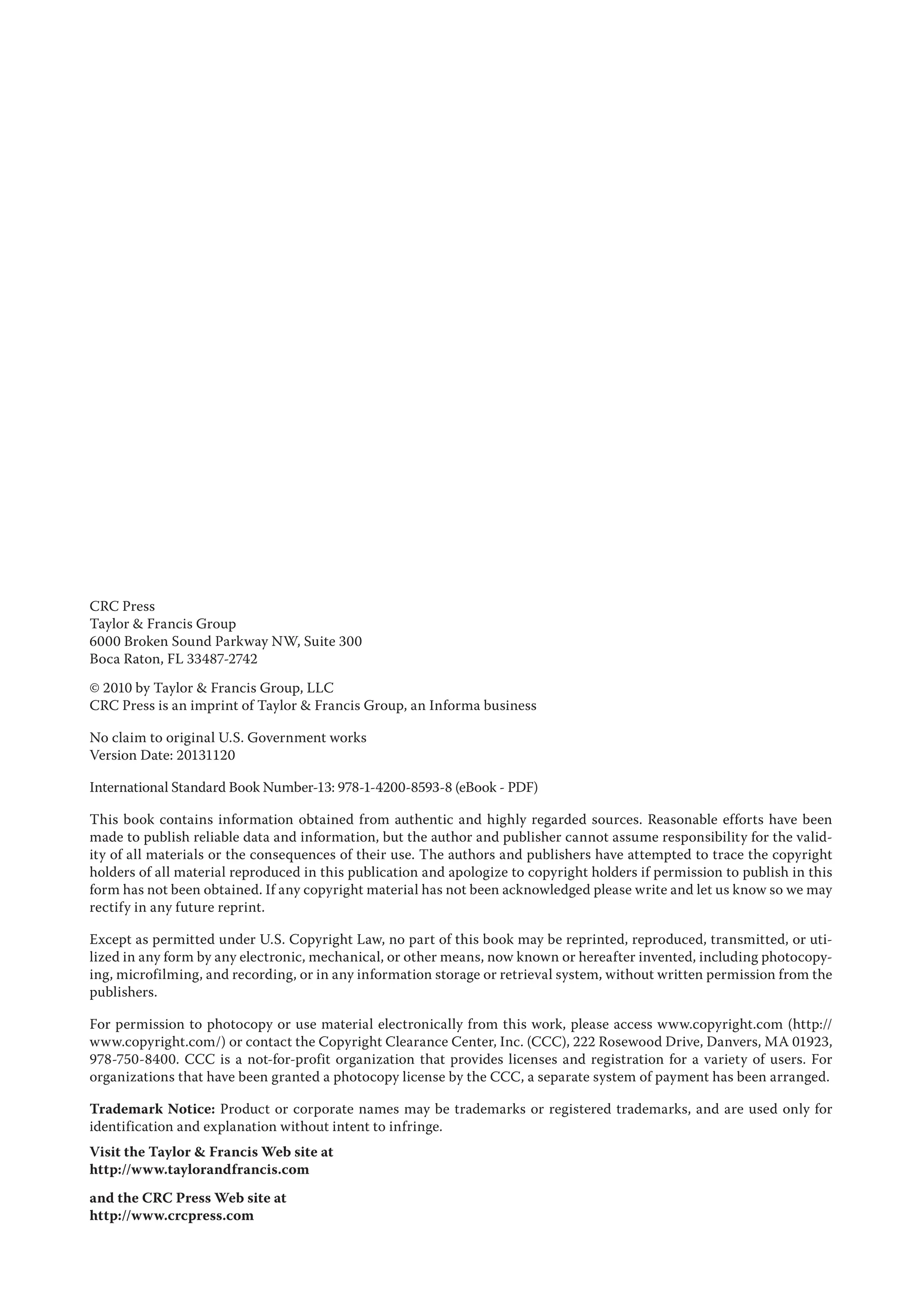
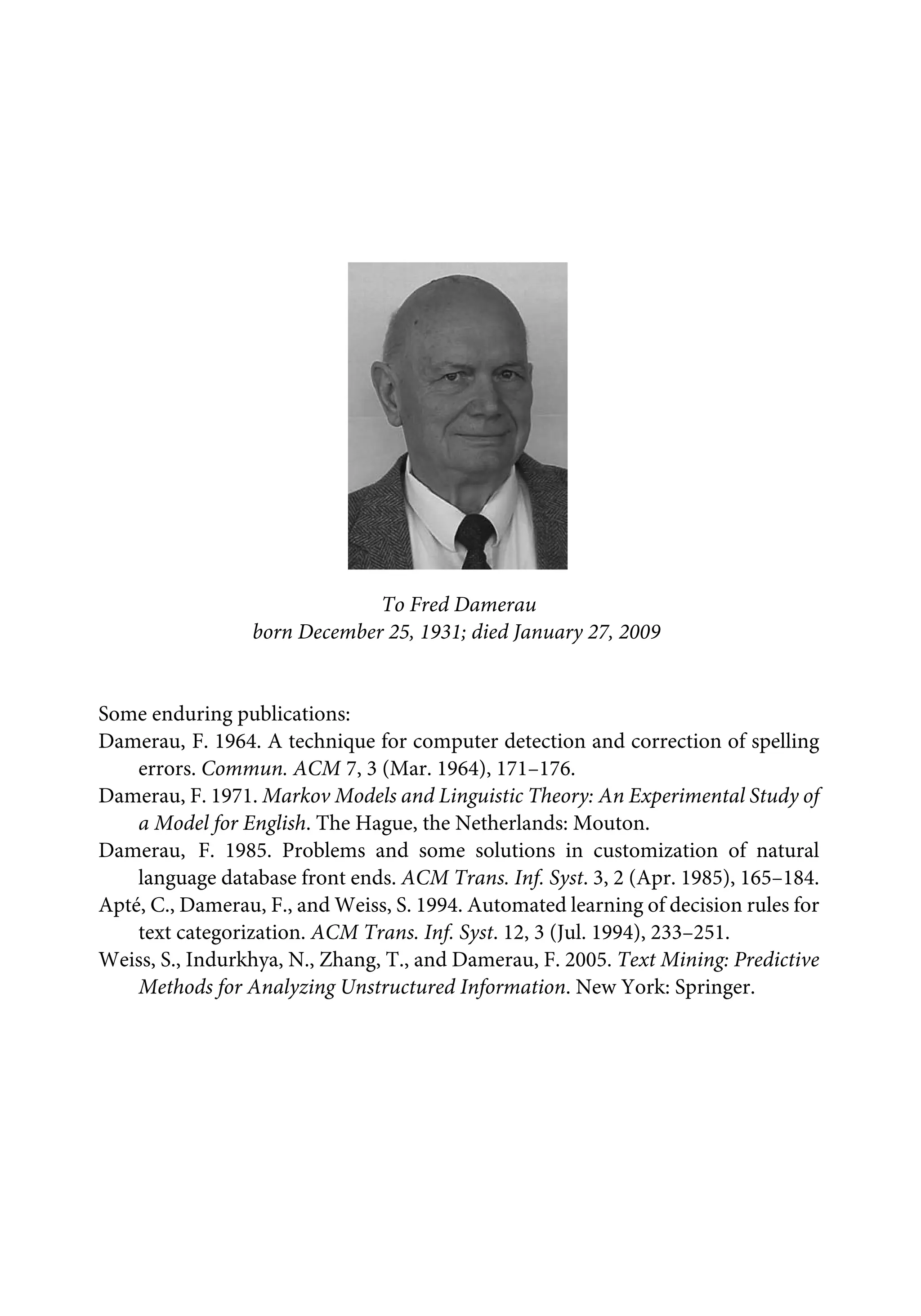

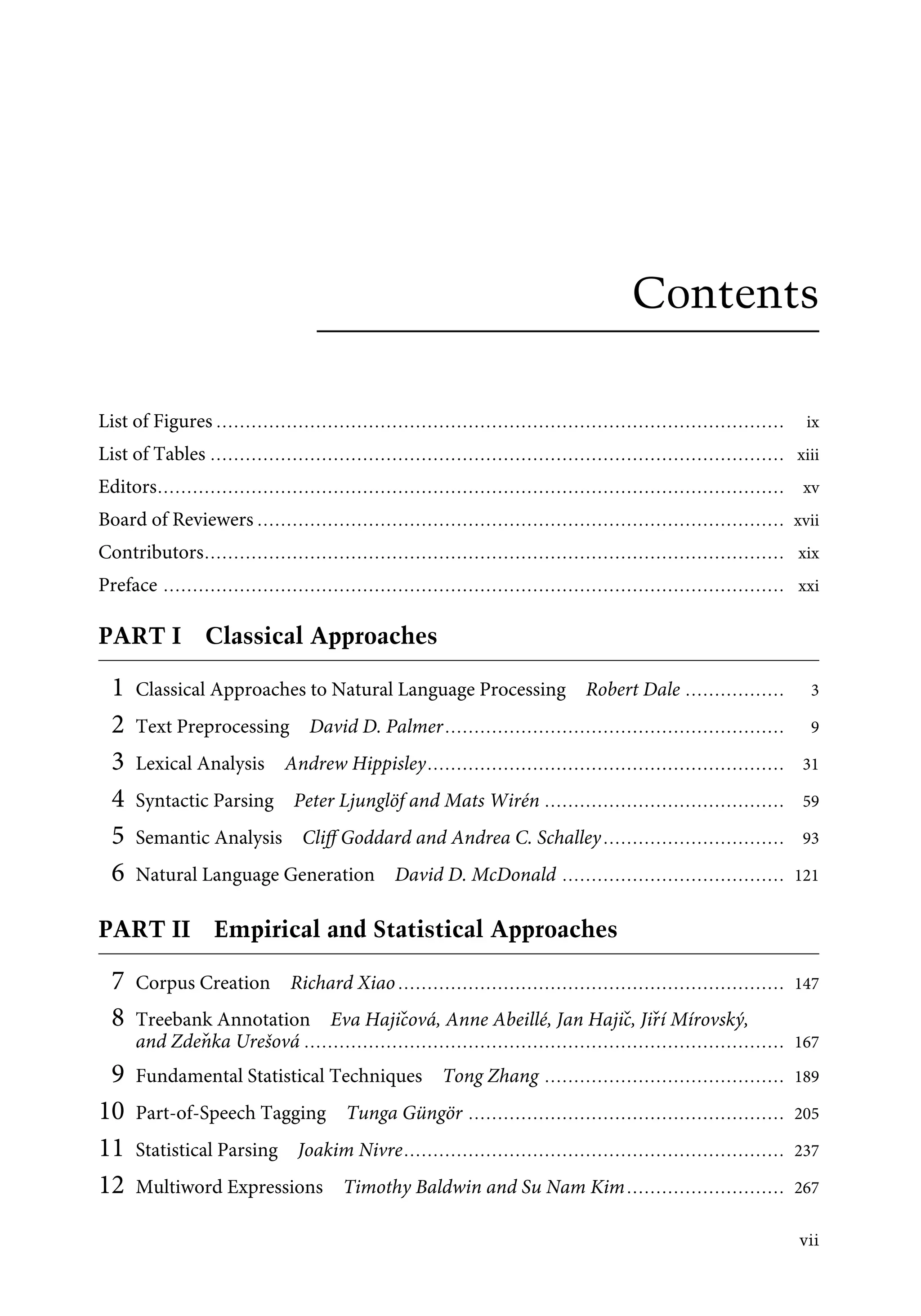
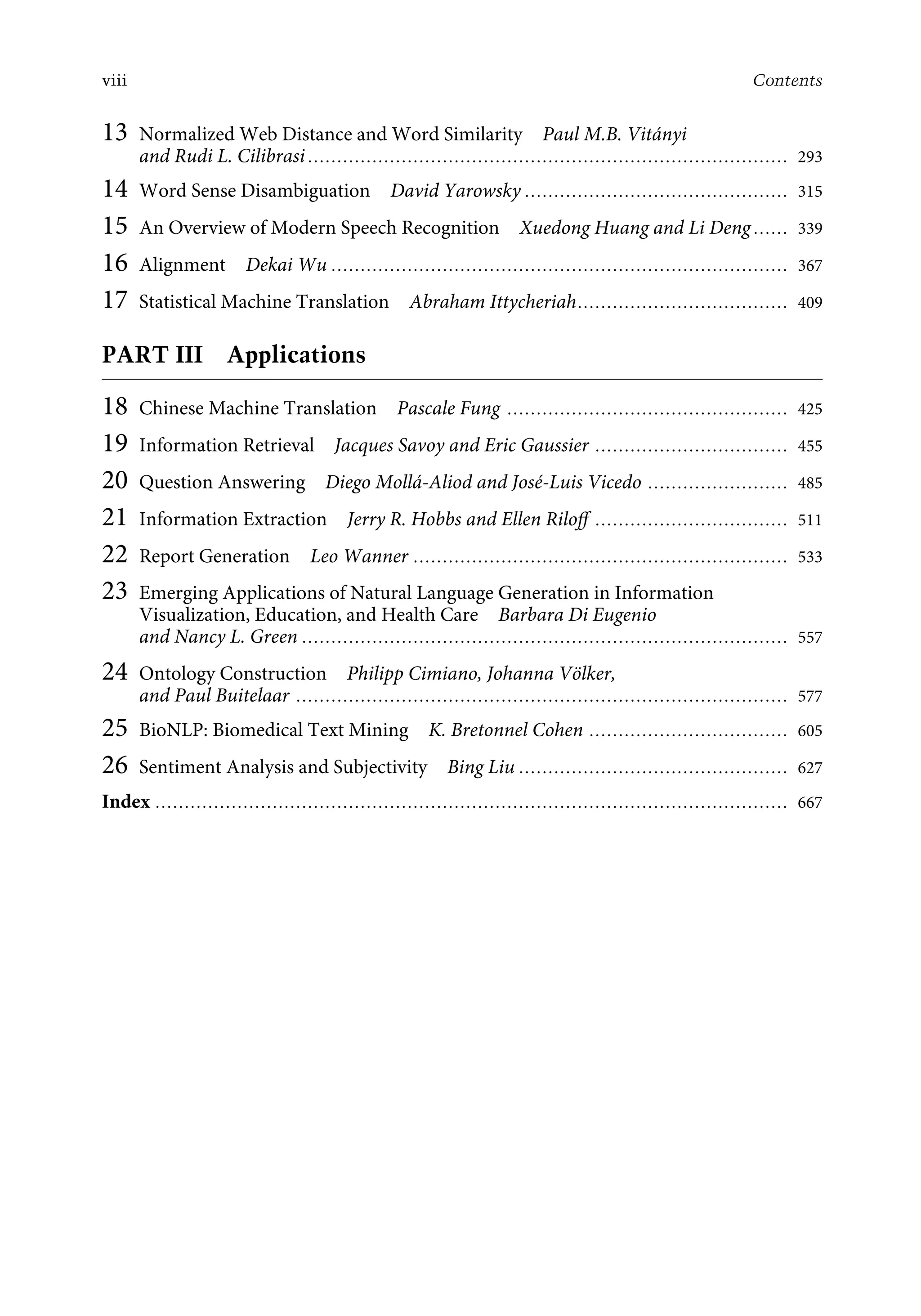
![List of Figures
Figure 1.1 The stages of analysis in processing natural language ........................................ 4
Figure 3.1 A spelling rule FST for glasses ................................................................... 34
Figure 3.2 A spelling rule FST for flies ...................................................................... 34
Figure 3.3 An FST with symbol classes ..................................................................... 36
Figure 3.4 Russian nouns classes as an inheritance hierarchy ........................................... 48
Figure 4.1 Example grammar ................................................................................ 62
Figure 4.2 Syntax tree of the sentence “the old man a ship”.............................................. 62
Figure 4.3 CKY matrix after parsing the sentence “the old man a ship” ................................ 67
Figure 4.4 Final chart after bottom-up parsing of the sentence “the old man a ship.” The dotted
edges are inferred but useless.................................................................... 71
Figure 4.5 Final chart after top-down parsing of the sentence “the old man a ship.” The dotted
edges are inferred but useless.................................................................... 71
Figure 4.6 Example LR(0) table for the grammar in Figure 4.1 .......................................... 74
Figure 5.1 The lexical representation for the English verb build......................................... 99
Figure 5.2 UER diagrammatic modeling for transitive verb wake up ................................... 103
Figure 8.1 A scheme of annotation types (layers) ......................................................... 169
Figure 8.2 Example of a Penn treebank sentence .......................................................... 171
Figure 8.3 A simplified constituency-based tree structure for the sentence
John wants to eat cakes ........................................................................... 171
Figure 8.4 A simplified dependency-based tree structure for the sentence
John wants to eat cakes ........................................................................... 171
Figure 8.5 A sample tree from the PDT for the sentence: Česká opozice se nijak netají tím, že
pokud se dostane k moci, nebude se deficitnímu rozpočtu nijak bránit. (lit.: Czech
opposition Refl. in-no-way keeps-back the-fact that in-so-far-as [it] will-come into
power, [it] will-not Refl. deficit budget in-no-way oppose. English translation: The
Czech opposition does not keep back that if they come into power, they will not oppose
the deficit budget.) ................................................................................ 173
Figure 8.6 A sample French tree. (English translation: It is understood that the public functions
remain open to all the citizens.) ................................................................. 174
Figure 8.7 Example from the Tiger corpus: complex syntactic and semantic dependency
annotation. (English translation: It develops and prints packaging materials
and labels.)......................................................................................... 174
Figure 9.1 Effect of regularization ........................................................................... 191
Figure 9.2 Margin and linear separating hyperplane...................................................... 192
Figure 9.3 Multi-class linear classifier decision boundary ................................................ 193
Figure 9.4 Graphical representation of generative model ................................................. 195
Figure 9.5 Graphical representation of discriminative model ............................................ 196
ix](https://image.slidesharecdn.com/9780429149207previewpdf-231005165728-2b1ccb76/75/9780429149207_previewpdf-pdf-10-2048.jpg)
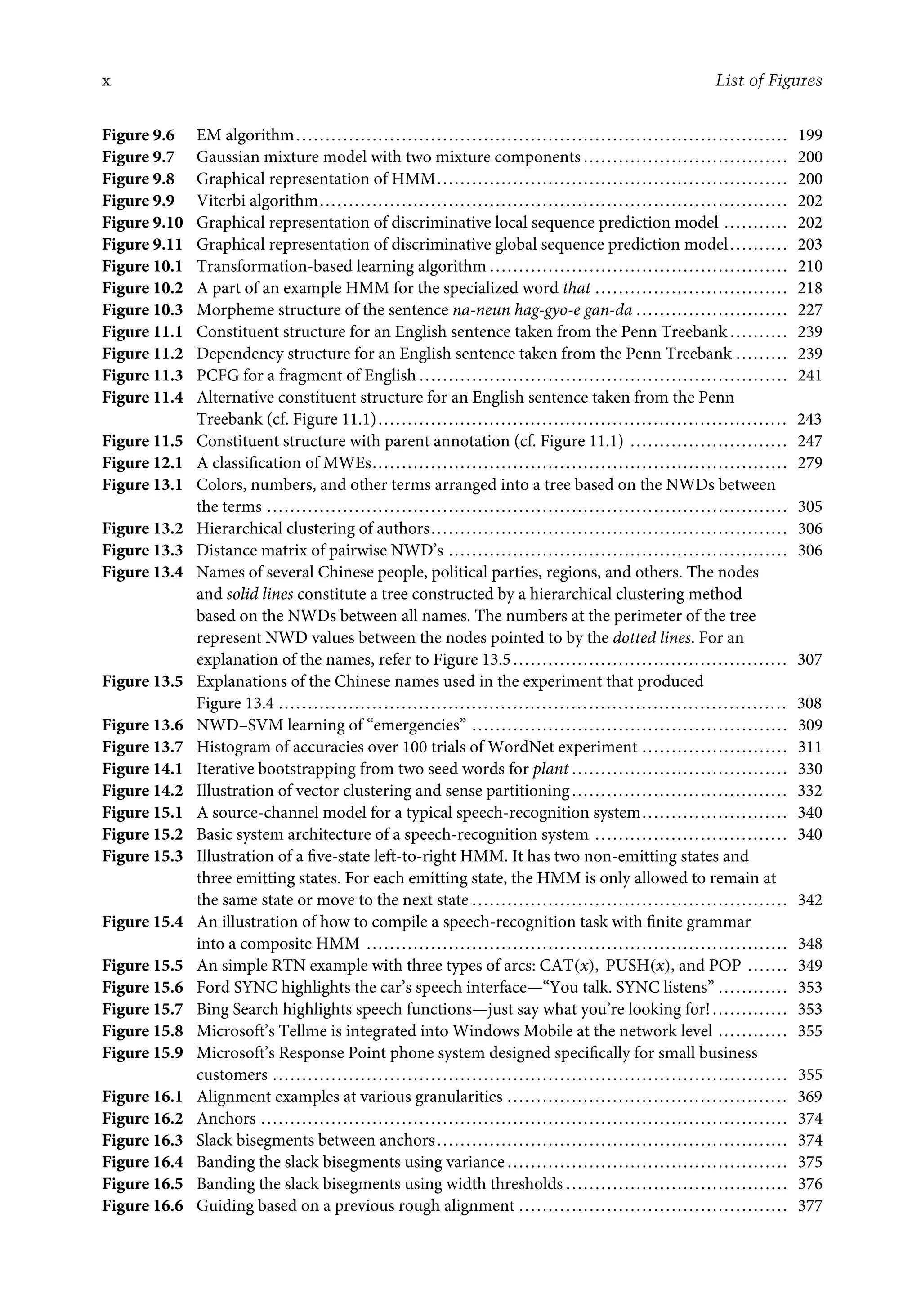
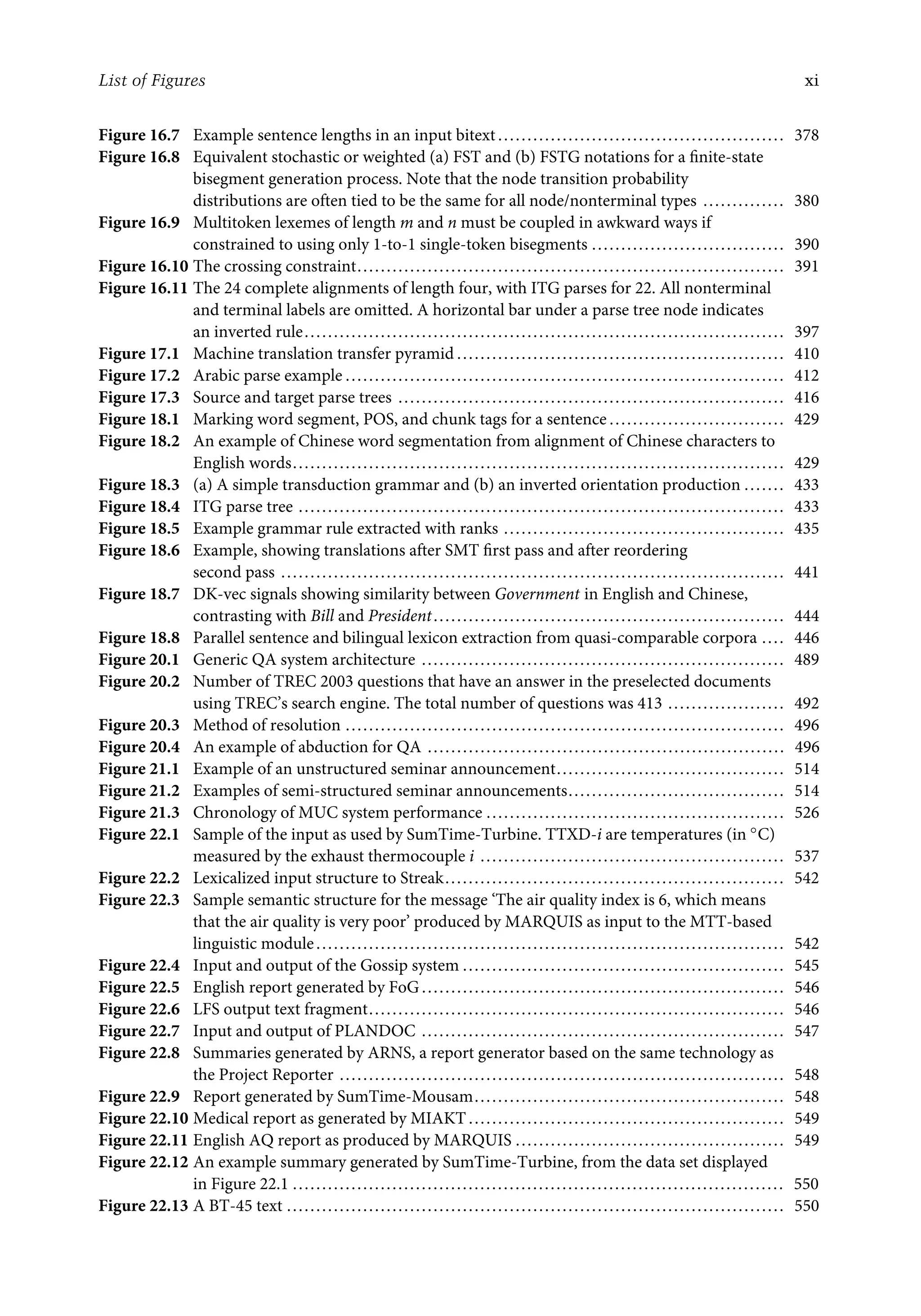

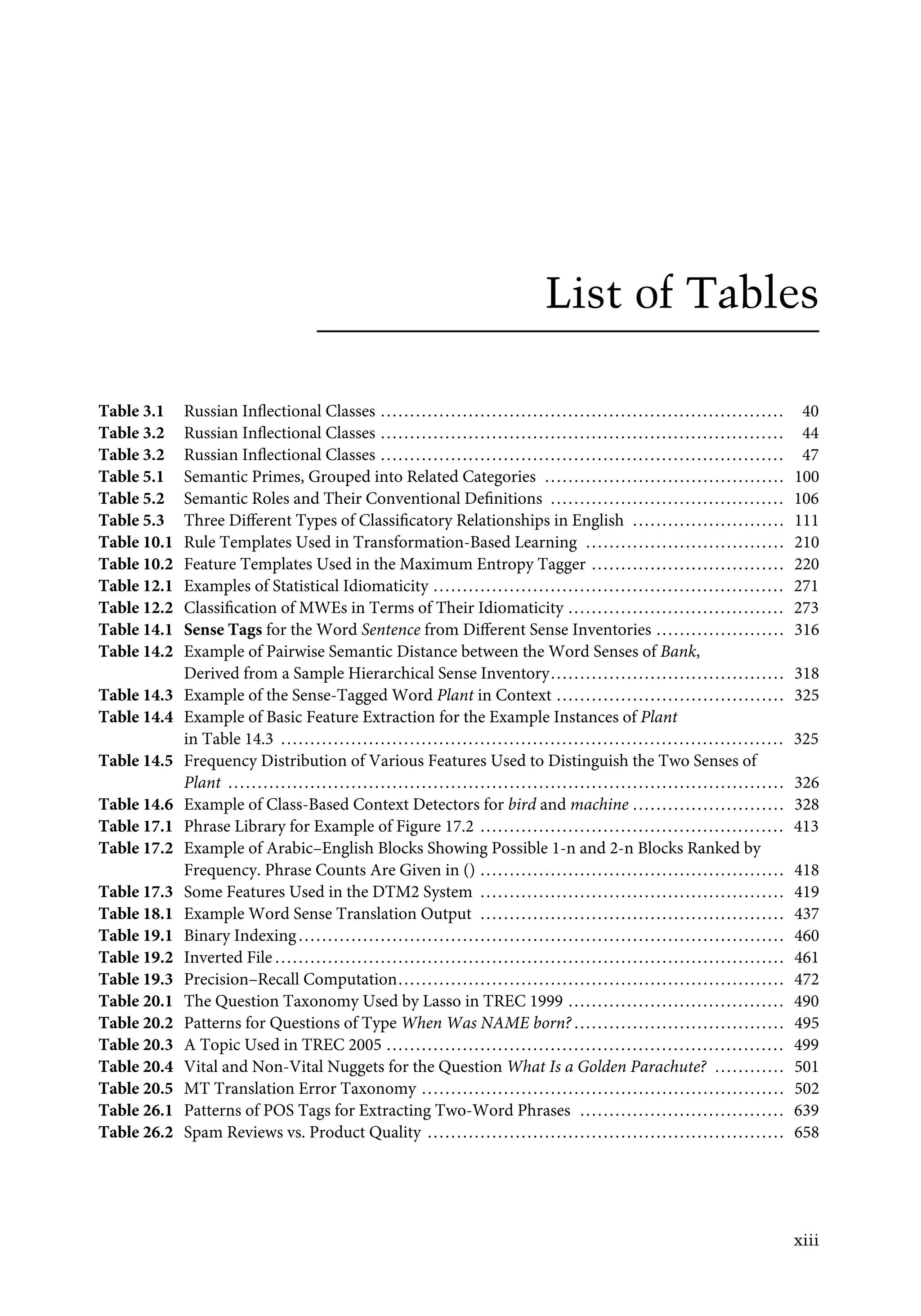

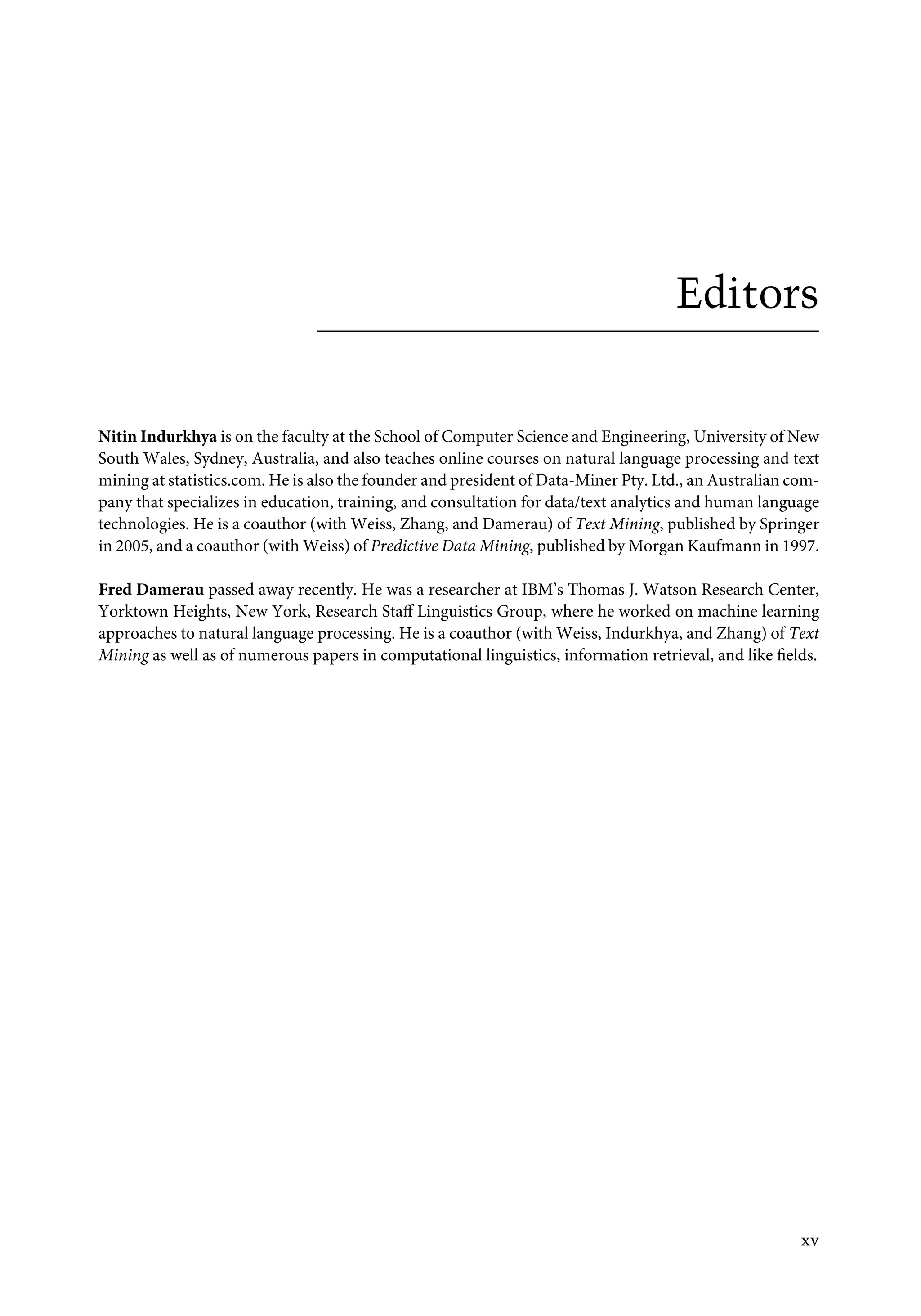

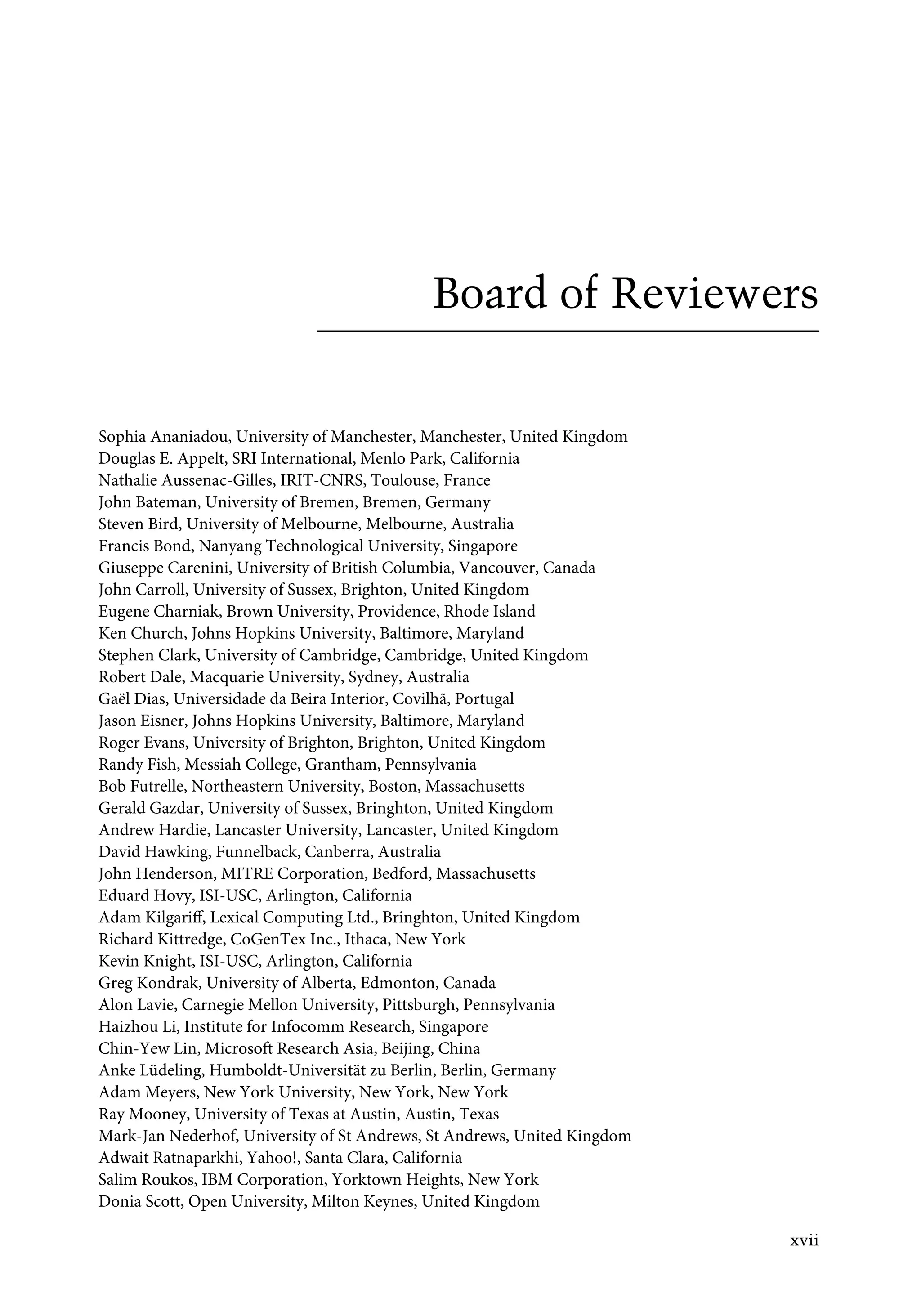

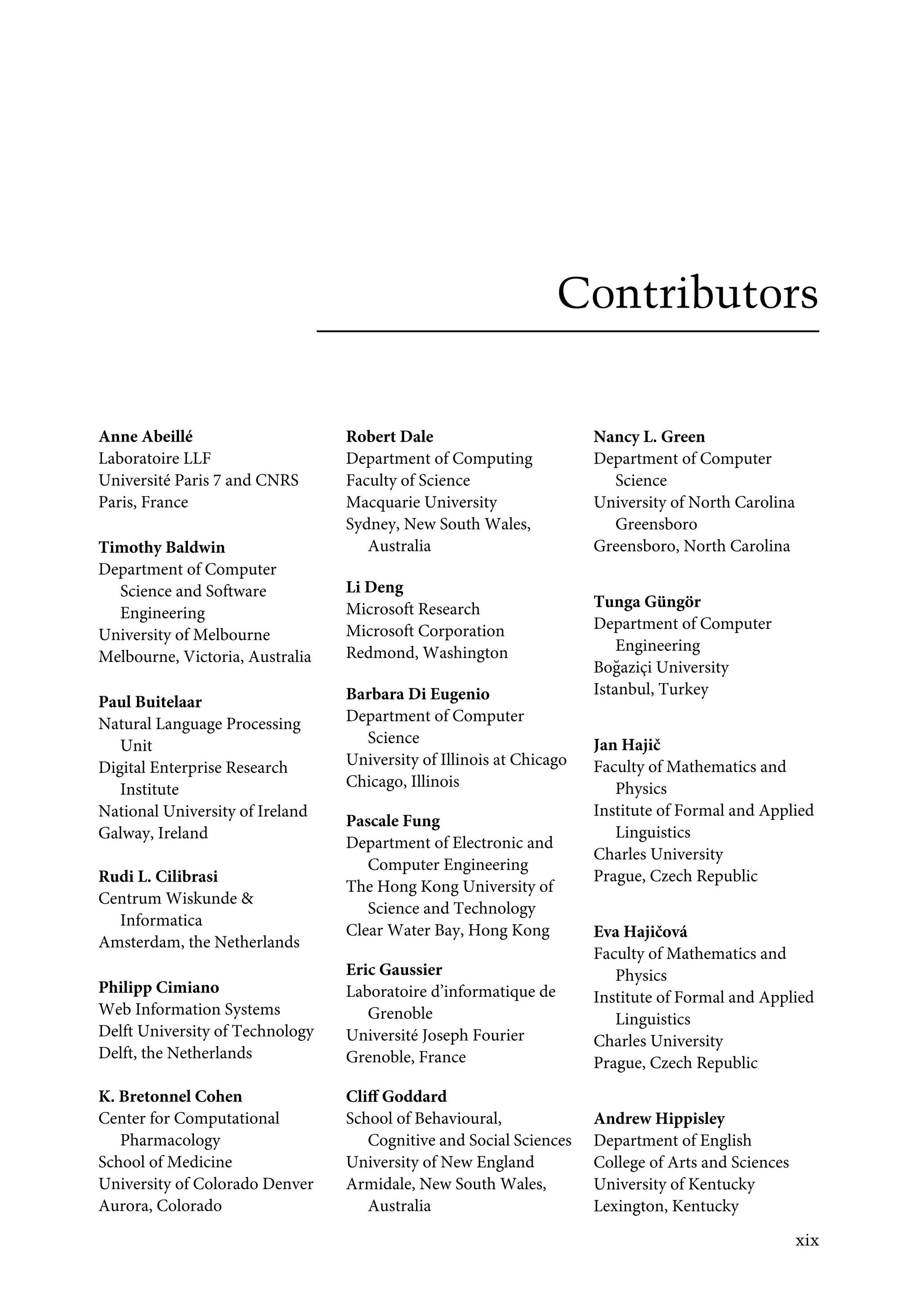


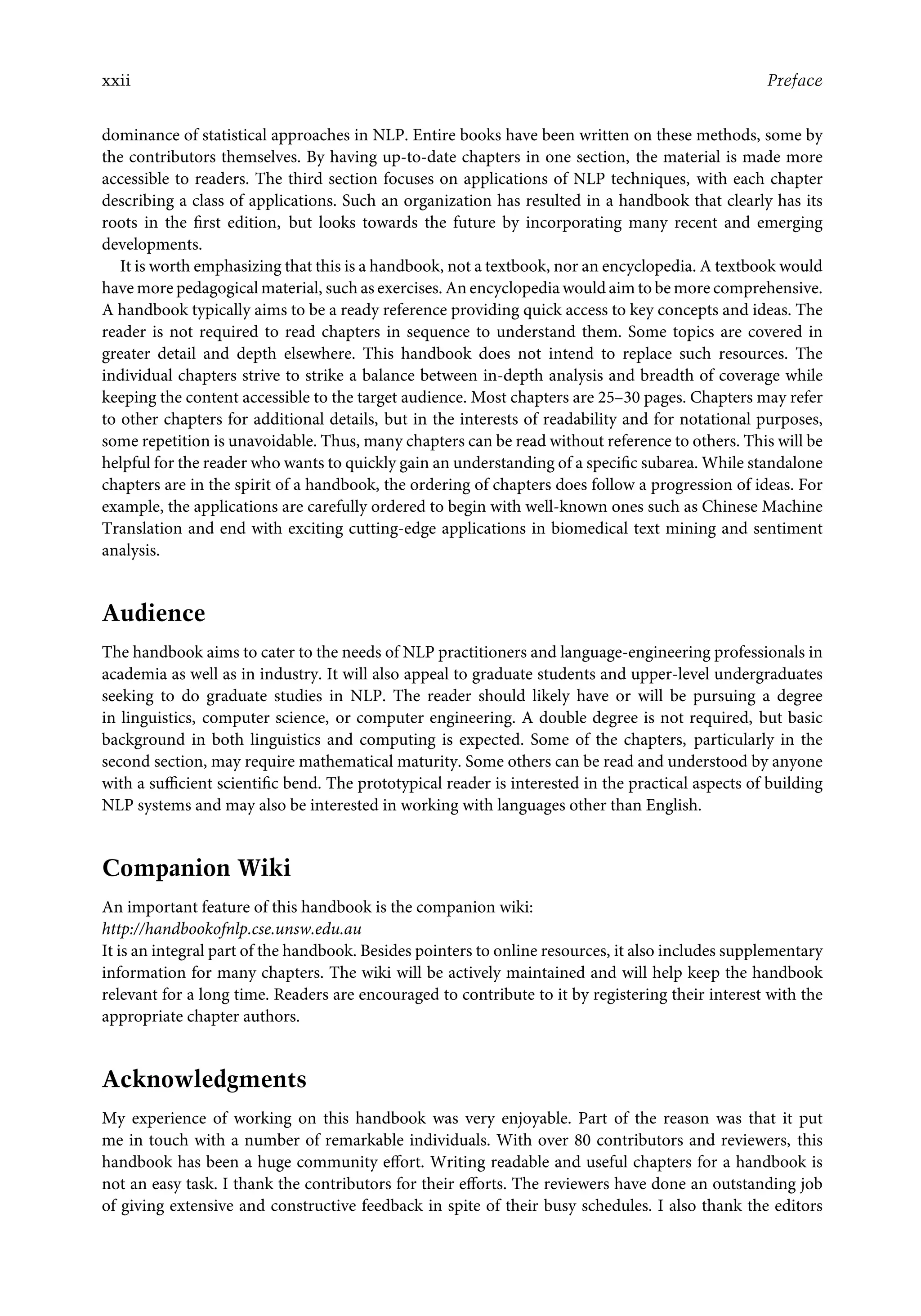
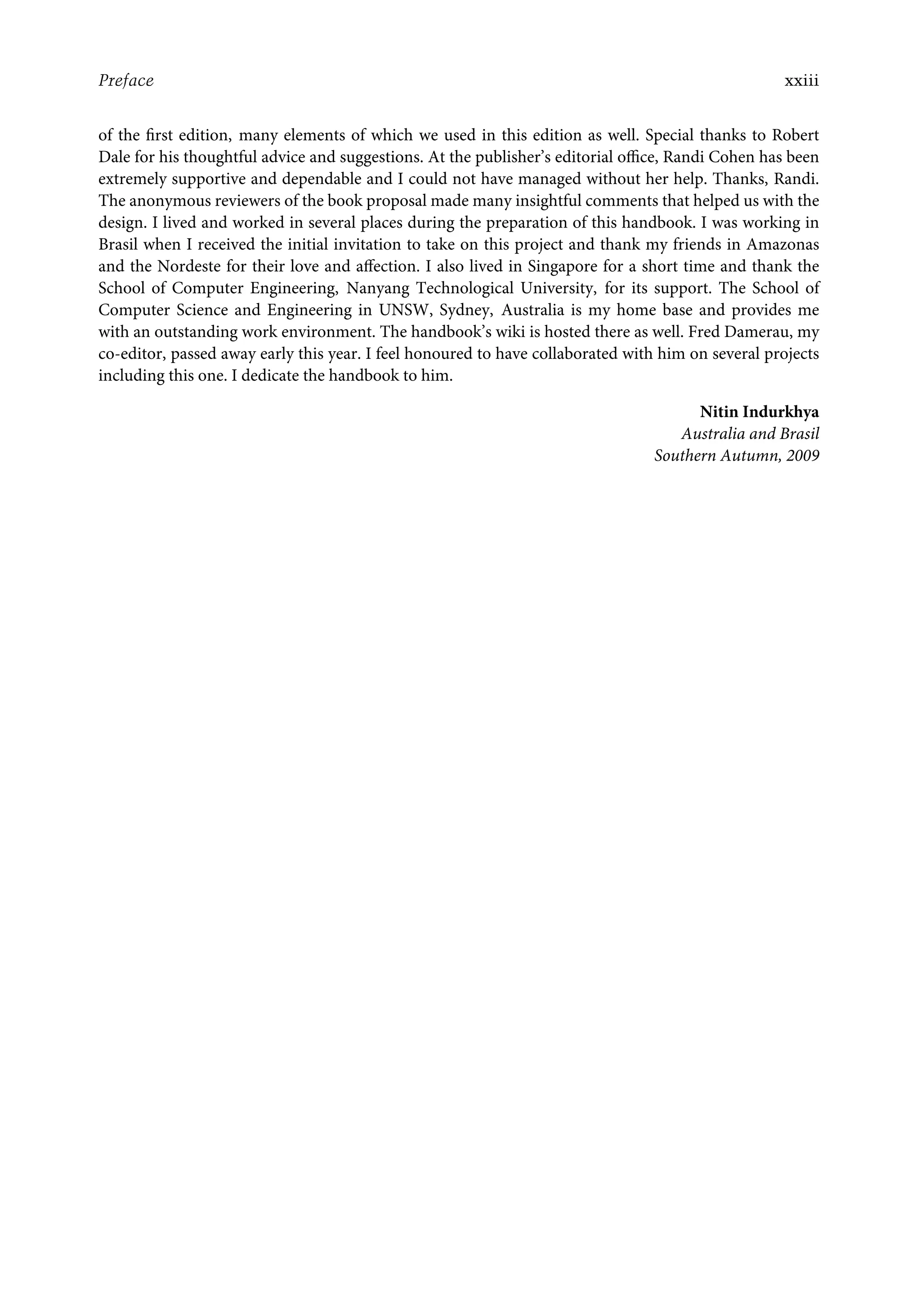

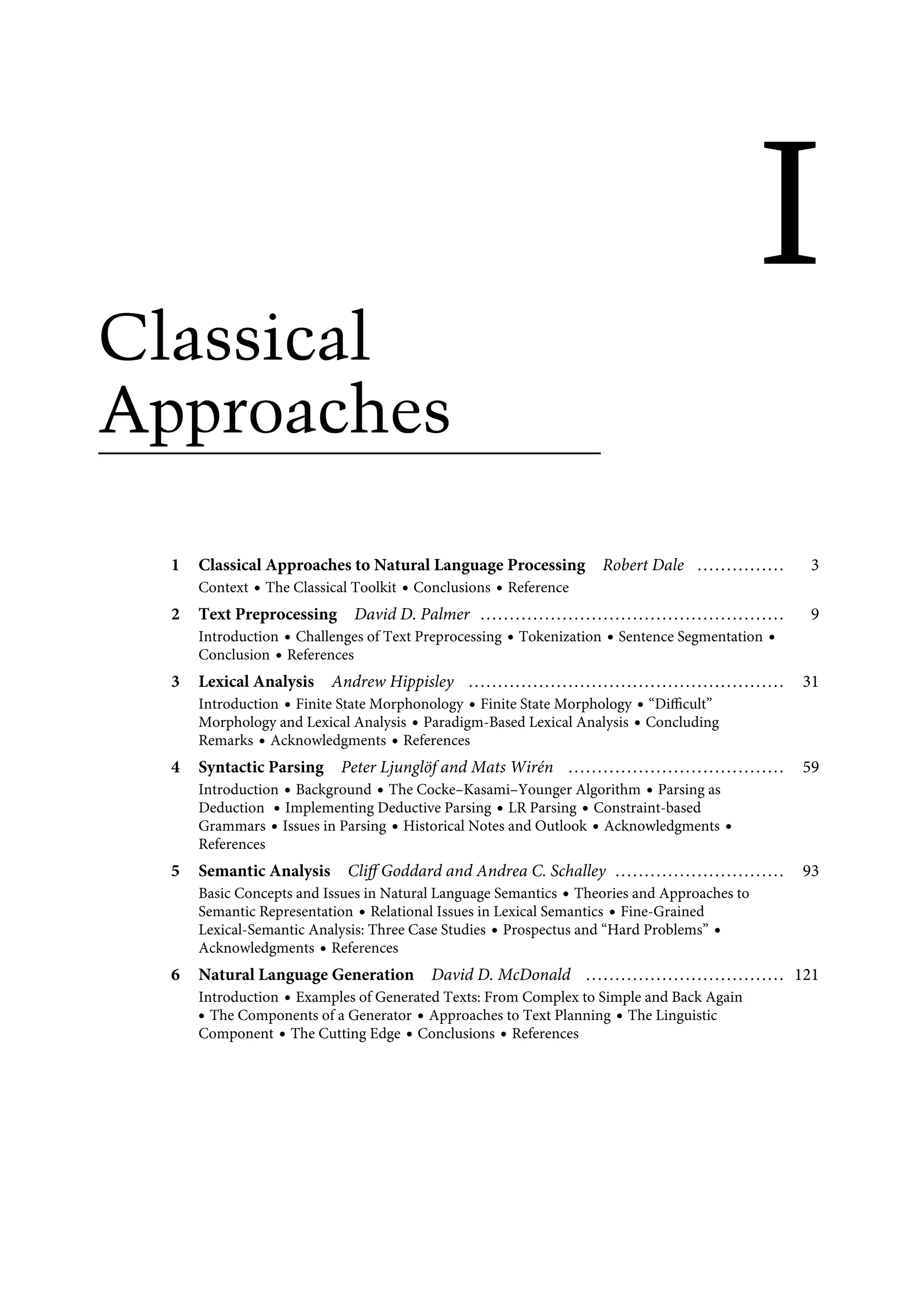



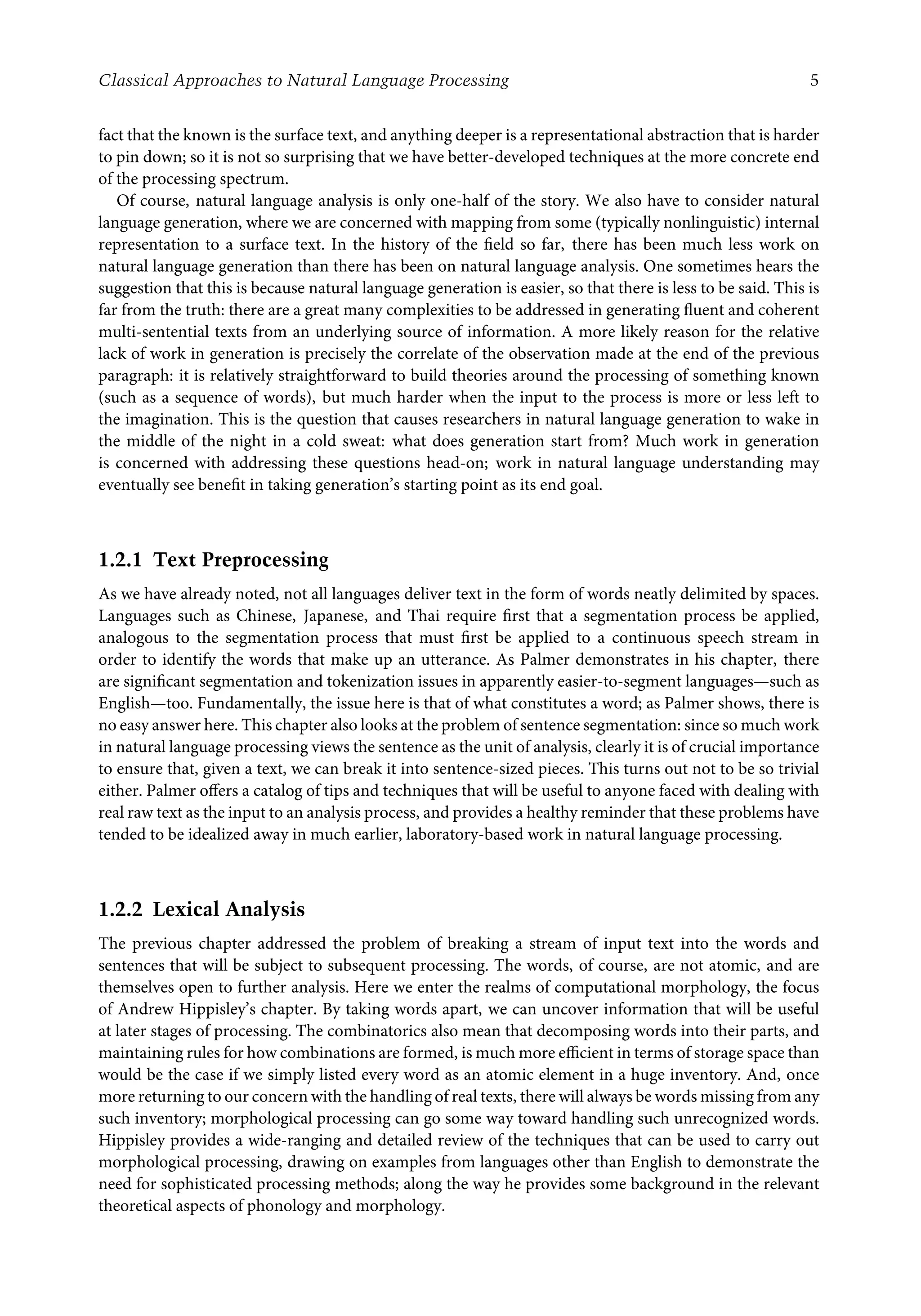

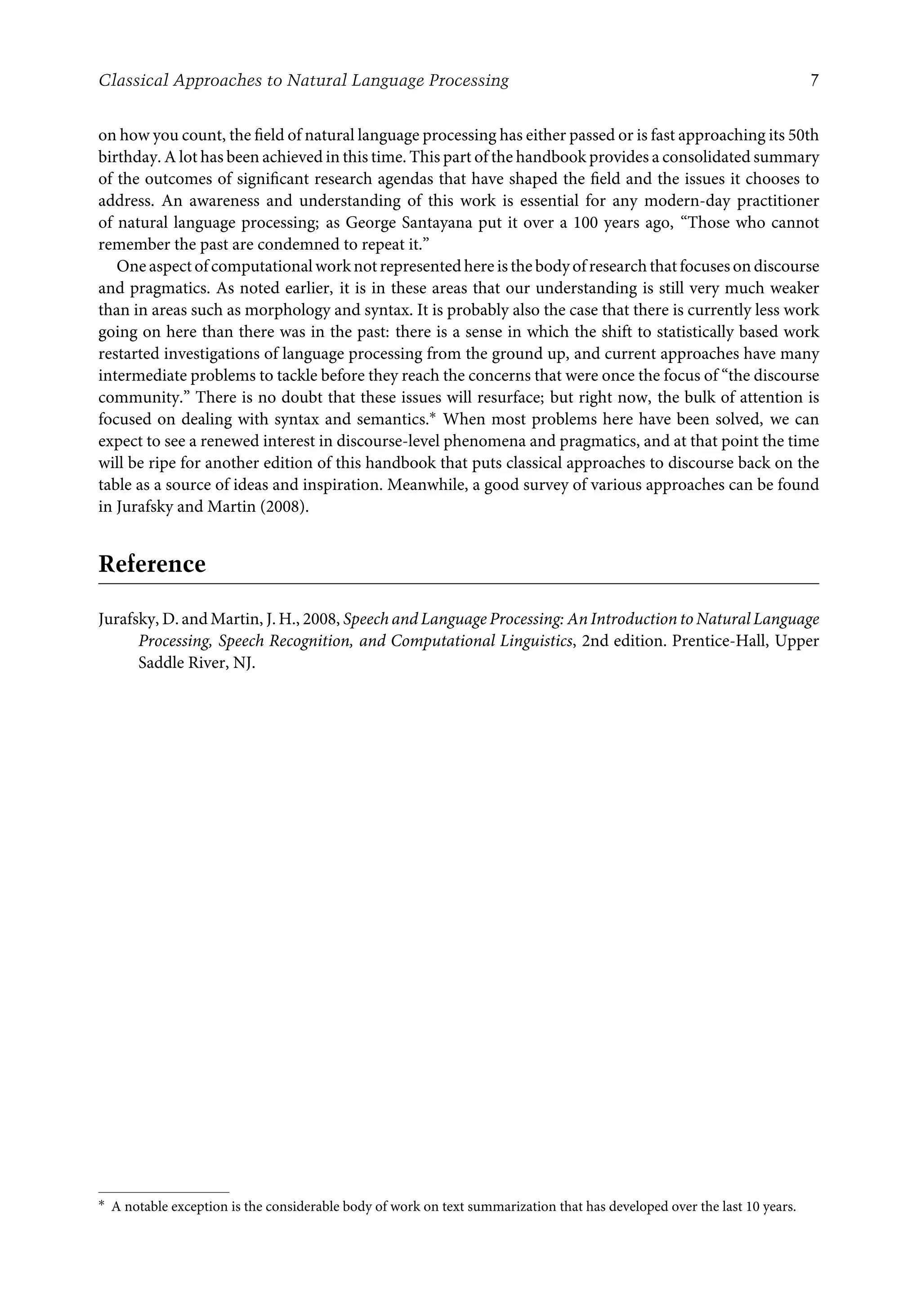






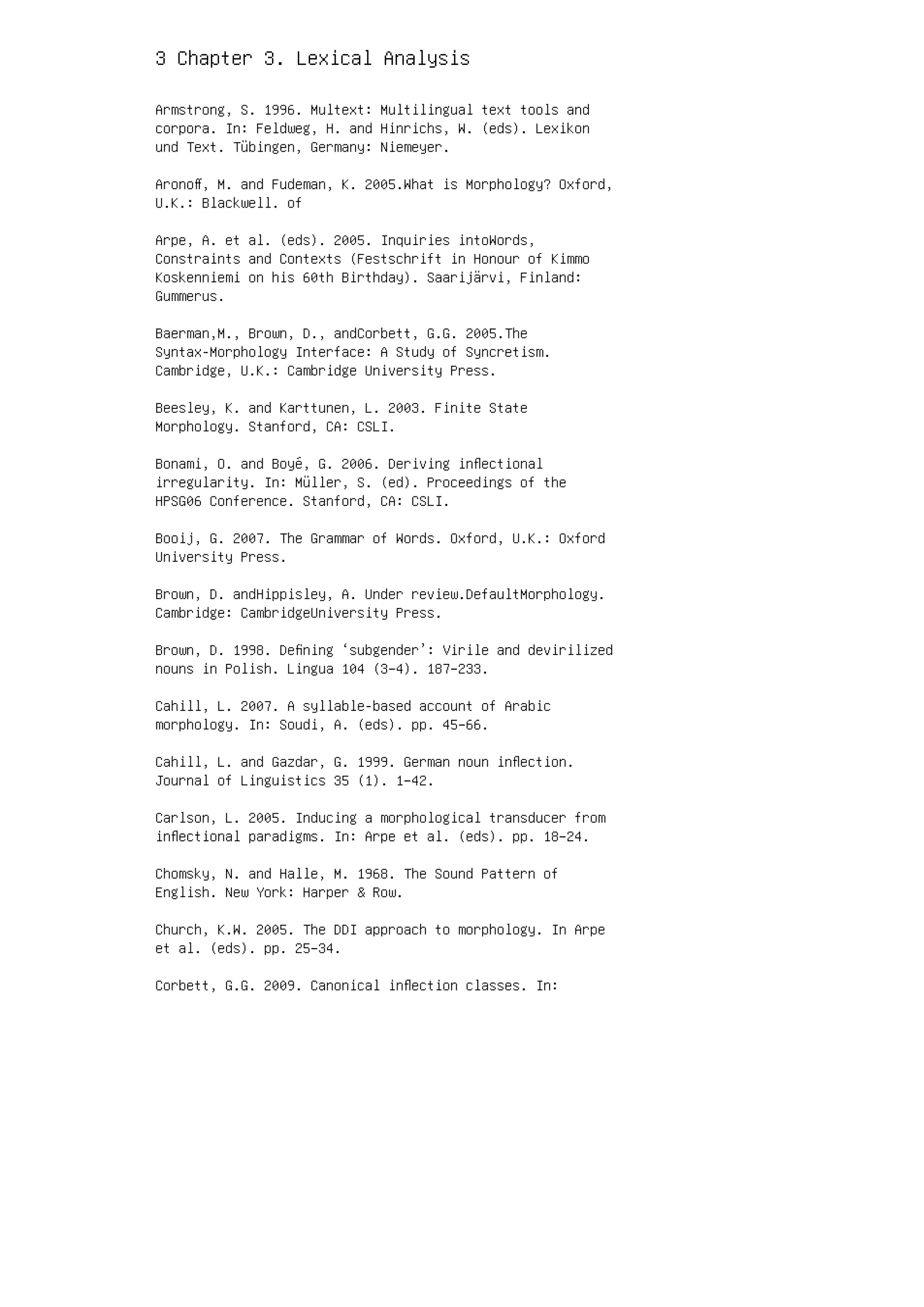
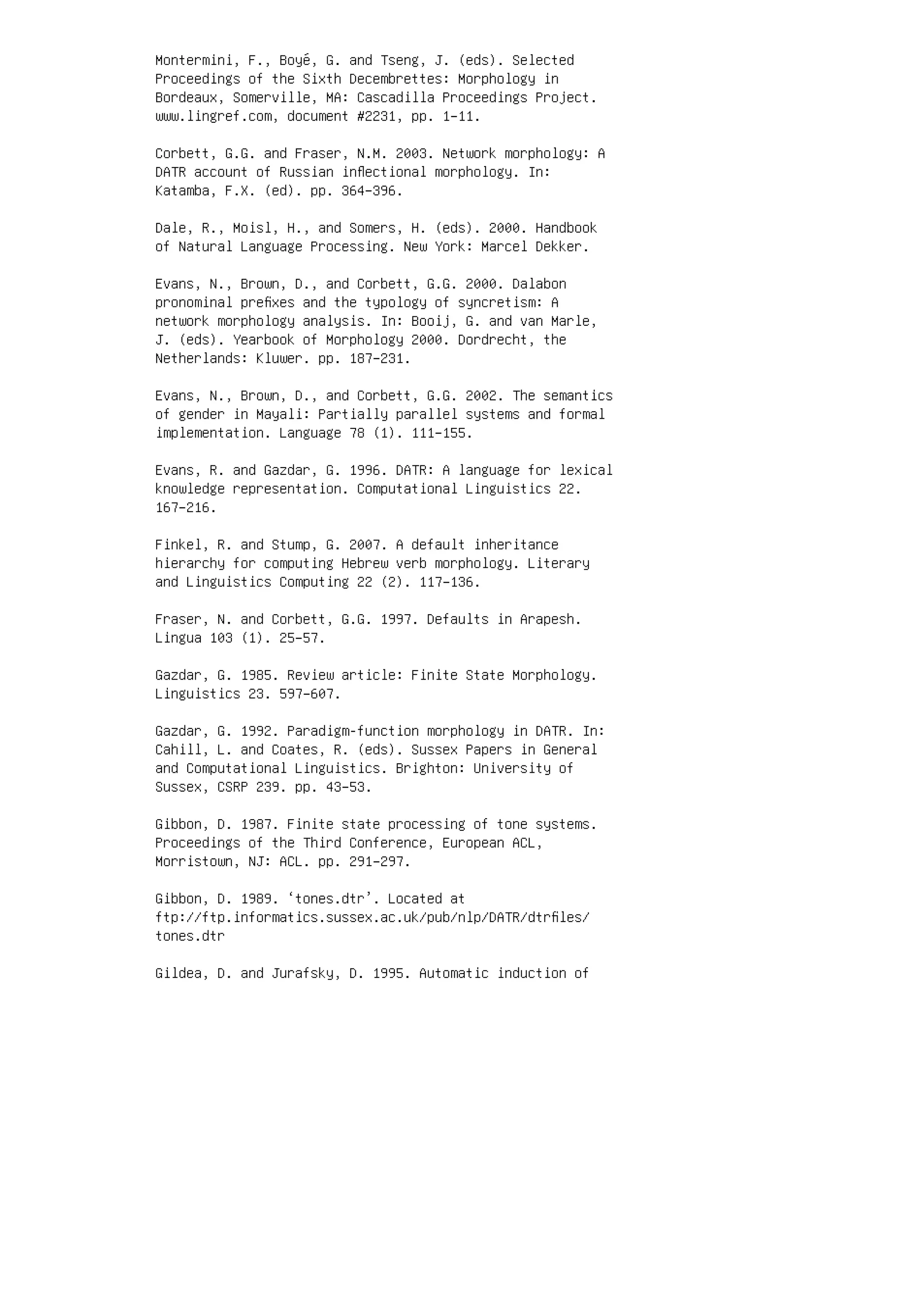

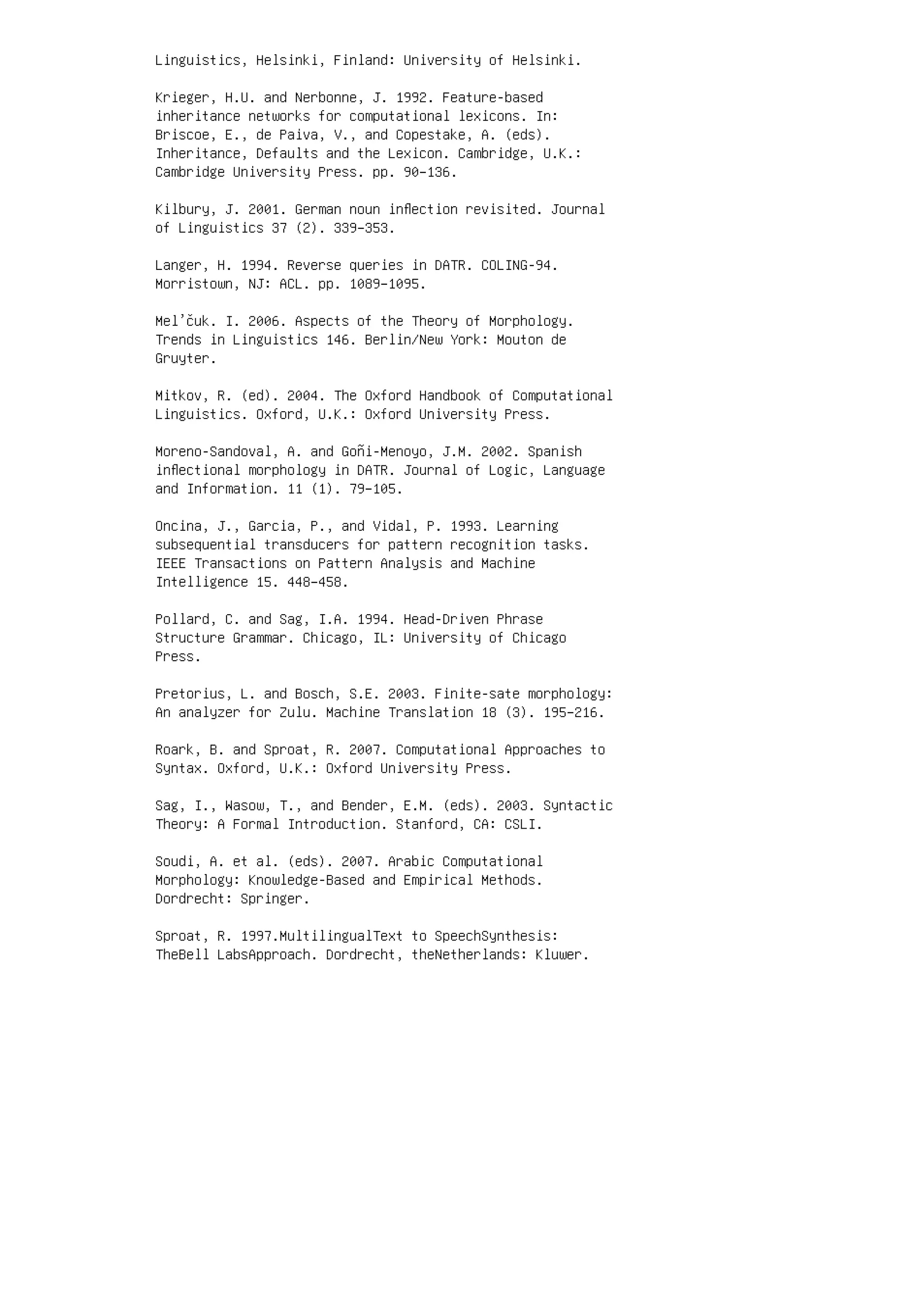


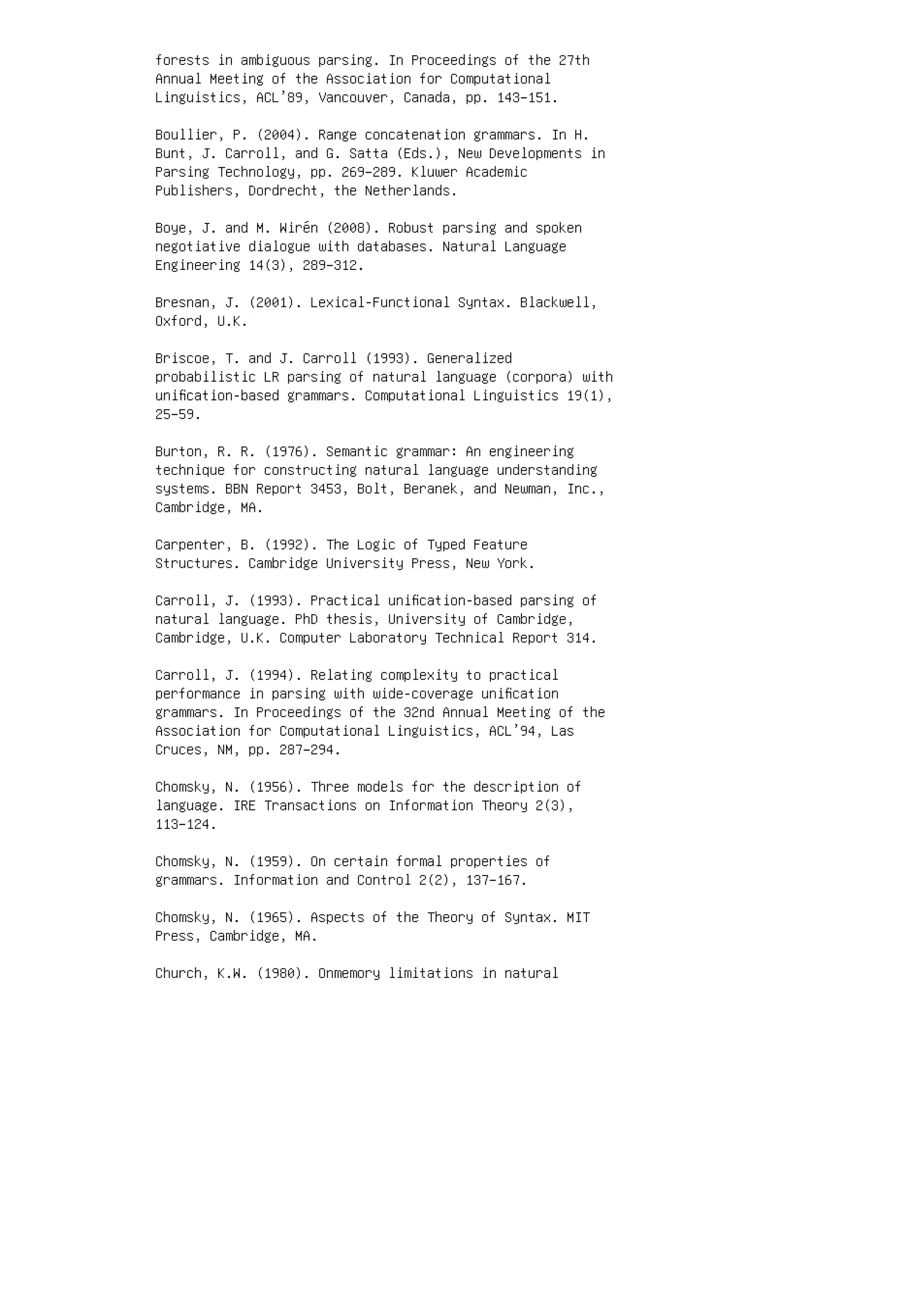


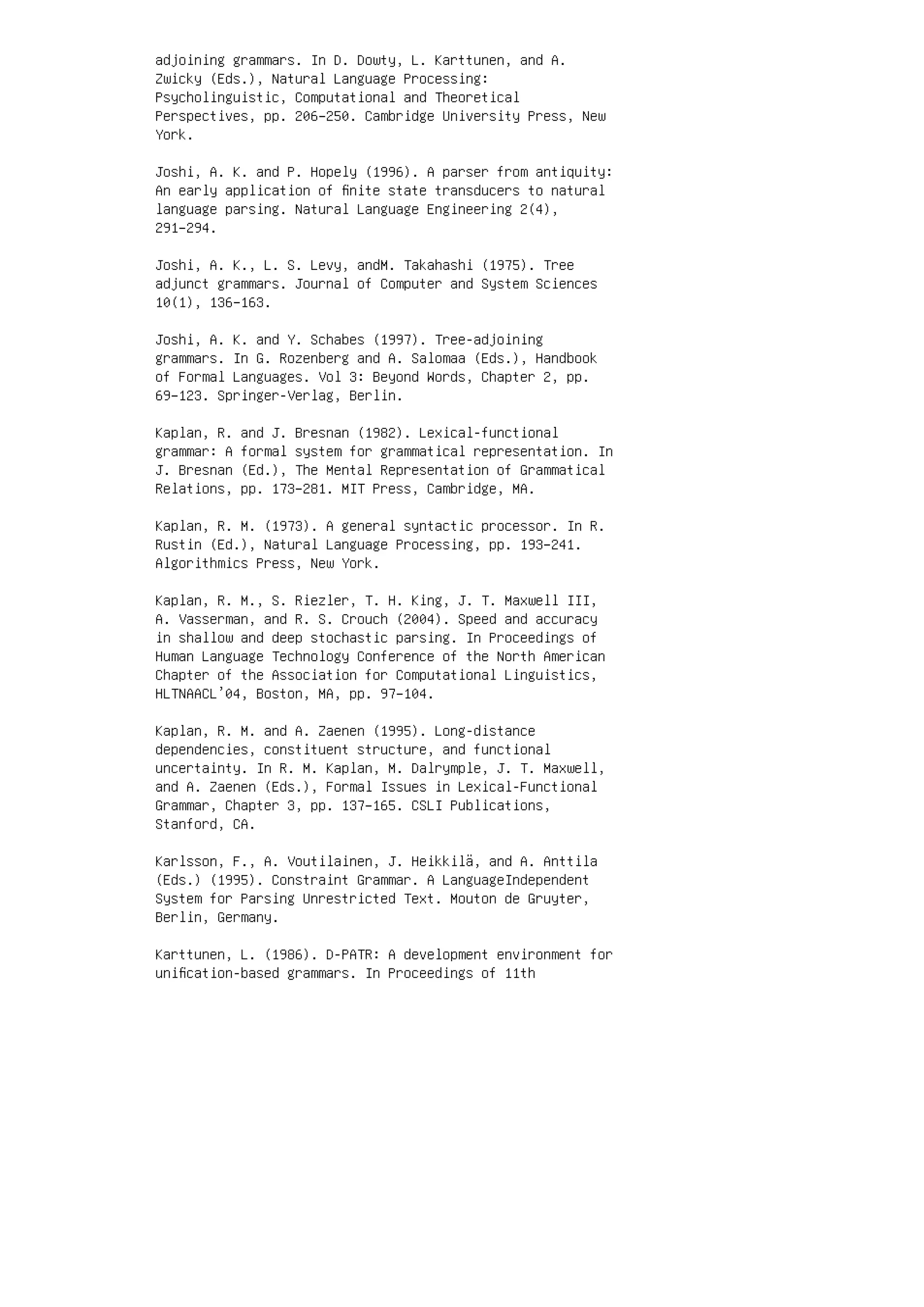
![International Conference on Computational Linguistics,
COLING’86, Bonn, Germany.
Karttunen, L. and A. M. Zwicky (1985). Introduction. In D.
Dowty, L. Karttunen, and A. Zwicky (Eds.), Natural Language
Processing: Psycholinguistic, Computational and Theoretical
Perspectives, pp. 1–25. Cambridge University Press, New
York.
Kasami, T. (1965). An efficient recognition and syntax
algorithm for context-free languages. Technical Report
AFCLR-65-758, Air Force Cambridge Research Laboratory,
Bedford, MA.
Kasper, R. T. and W. C. Rounds (1986). A logical semantics
for feature structures. In Proceedings of the 24th Annual
Meeting of the Association for Computational Linguistics,
ACL’86, New York, pp. 257–266.
Kasper, W., B. Kiefer, H. U. Krieger, C. J. Rupp, and K. L.
Worm (1999). Charting the depths of robust speech parsing.
In Proceedings of the 37th Annual Meeting of the
Association for Computational Linguistics, ACL’99, College
Park, MD, pp. 405–412.
Kay,M. (1967). Experiments with a powerful parser.
InProceedings of the Second International Conference on
Computational Linguistics [2ème conférence internationale
sur le traitement automatique des langues], COLING’67,
Grenoble, France.
Kay, M. (1973). The MIND system. In R. Rustin (Ed.),
Natural Language Processing, pp. 155–188. Algorithmics
Press, New York.
Kay, M. (1986). Algorithm schemata and data structures in
syntactic processing. In B. Grosz, K. S. Jones, and B. L.
Webber (Eds.), Readings in Natural Language Processing, pp.
35–70, Morgan Kaufmann Publishers, Los Altos, CA.
Originally published as Report CSL-80-12, Xerox PARC, Palo
Alto, CA, 1980.
Kay, M. (1989). Head-driven parsing. In Proceedings of the
First International Workshop on Parsing Technologies,
IWPT’89, Pittsburgh, PA.
Kay, M. (1999). Chart translation. In Proceedings of the MT
Summit VII, Singapore, pp. 9–14.
Kipps, J. R. (1991). GLR parsing in time O(n 3 ). In M.](https://image.slidesharecdn.com/9780429149207previewpdf-231005165728-2b1ccb76/75/9780429149207_previewpdf-pdf-49-2048.jpg)
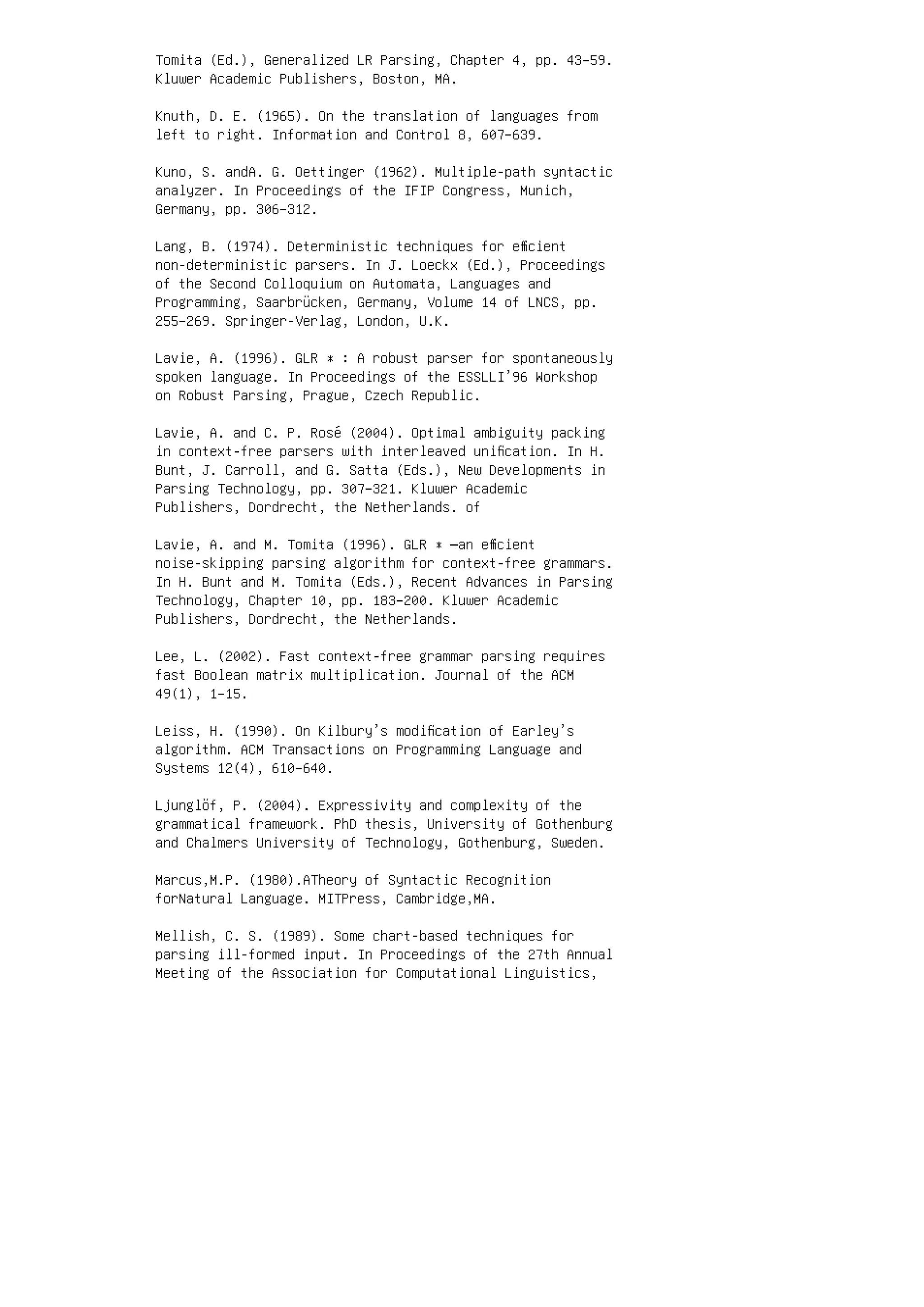
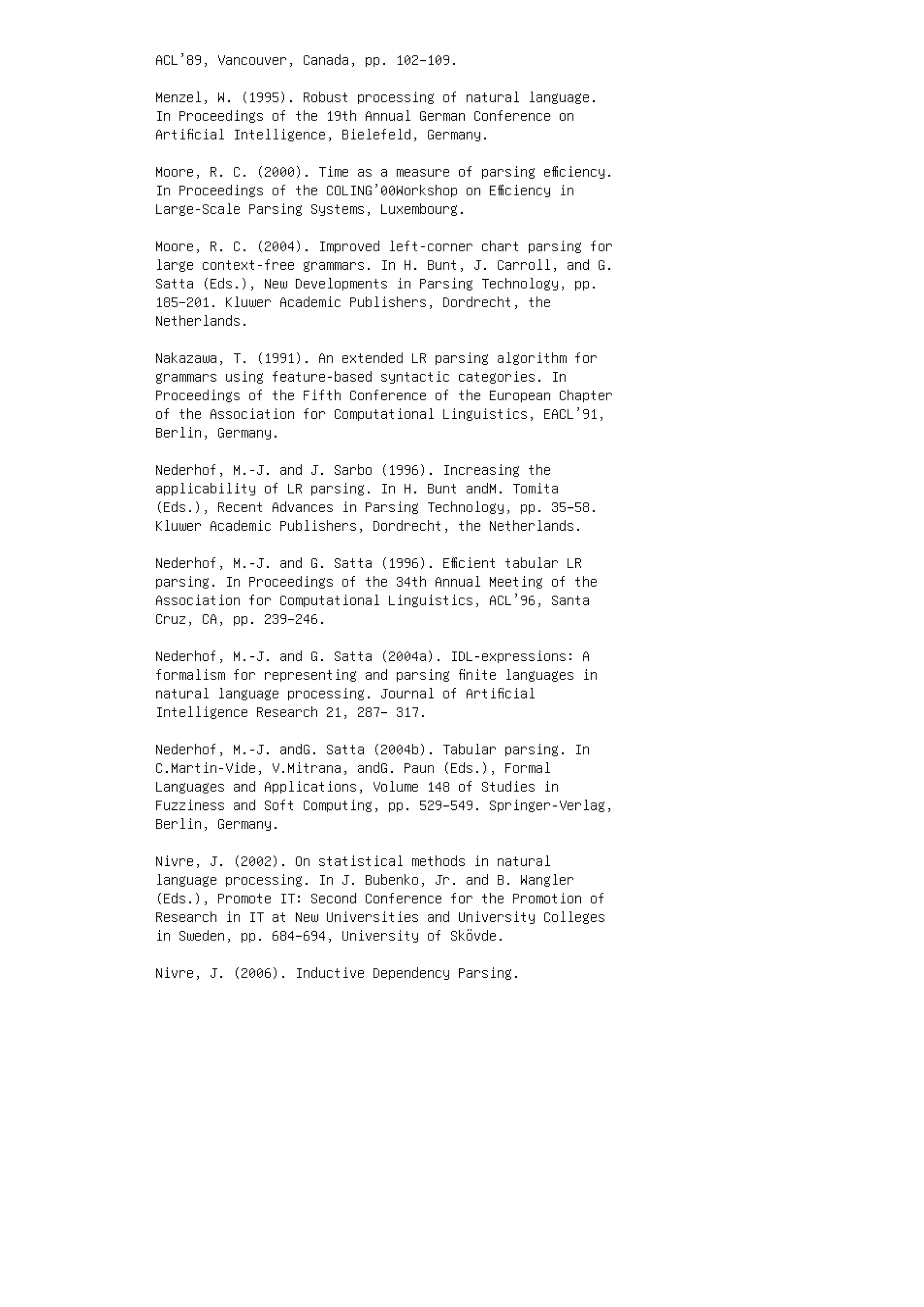
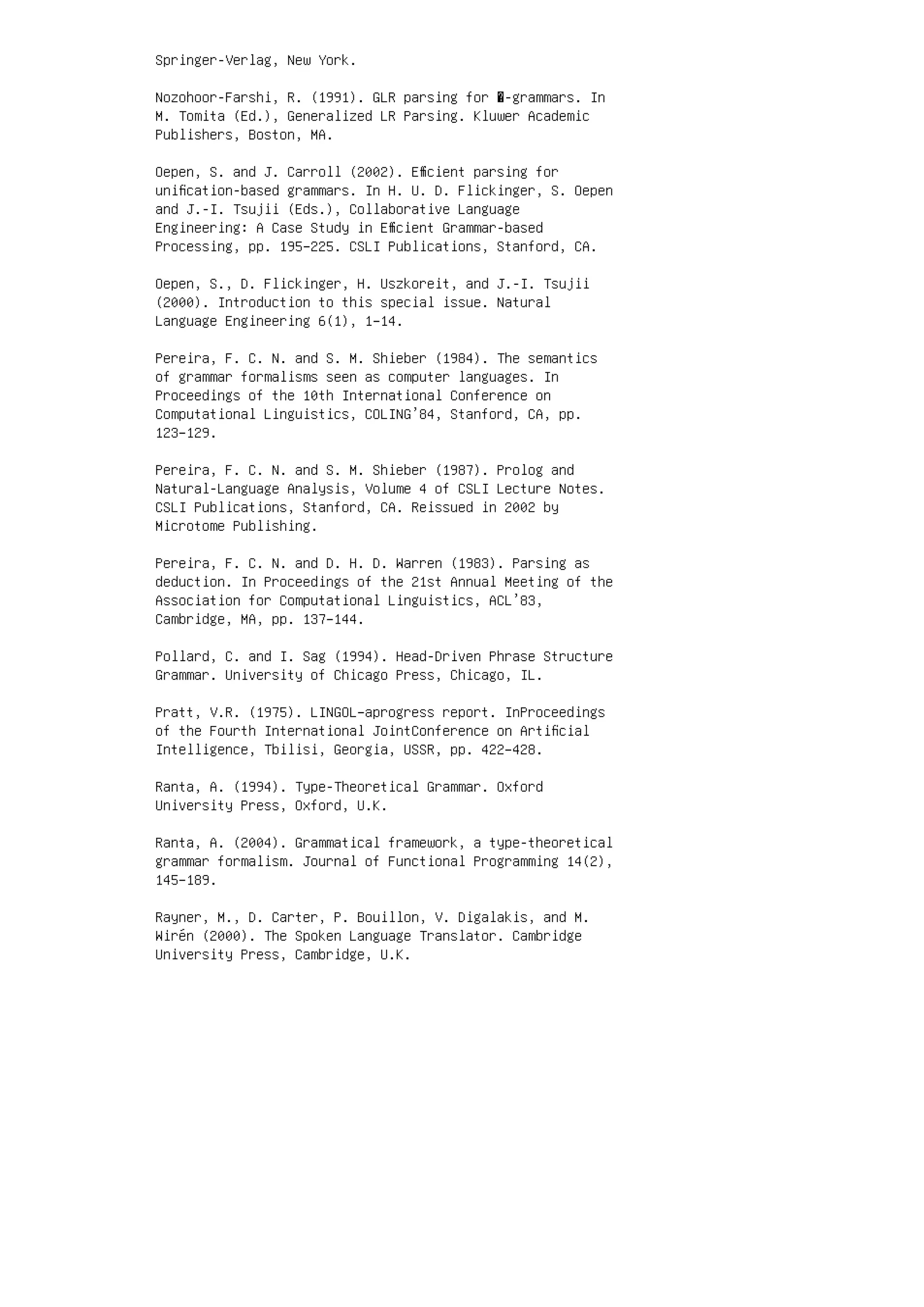

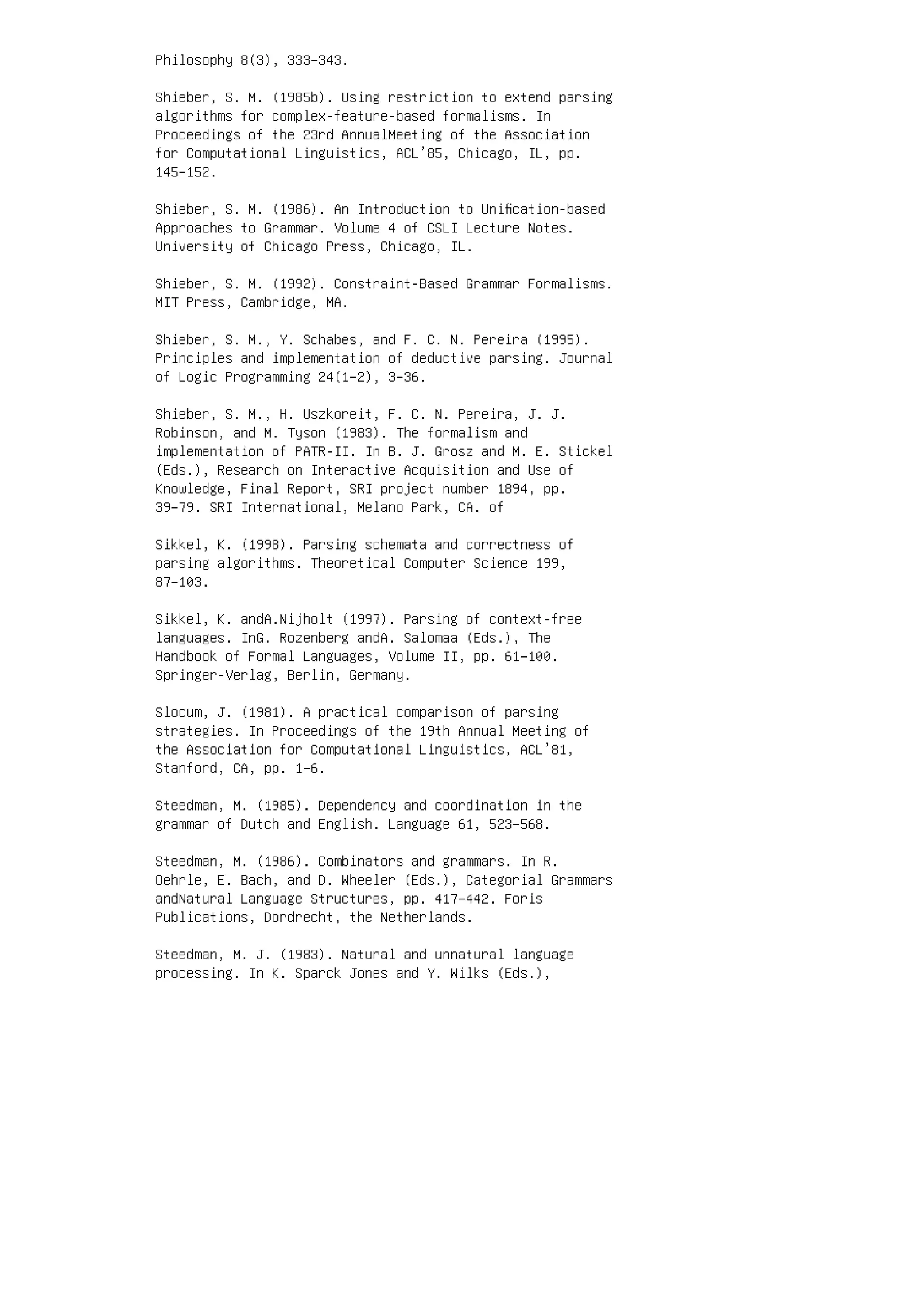


![5 Chapter 5. Semantic Analysis
Andrews, A. D. 2006. Semantic composition for NSM, using
LFG + glue. In Selected Papers from the 2005 Conference of
the Australian Linguistics Society, Melbourne, Australia,
K. Allan (ed.). http://www.als.asn.au
Apresjan, J. D. 1992. Lexical Semantics: User’s Guide to
Contemporary Russian Vocabulary. Ann Arbor, MI: Karoma.
[Orig. published 1974 as Leksiceskaja
Semantika—Sinonimeceskie Sredstva Jazyka. Moskva, Russia:
Nauka.]
Apresjan, J. D. 2000. Systematic Lexicography (Trans.
K.Windle). Oxford, U.K.: Oxford University Press.
Asher, N. 1993. Reference to Abstract Objects in Discourse.
Dordrecht, the Netherlands: Kluwer.
Asher, N. and A. Lascarides 2003. Logics of Conversation.
Cambridge, U.K.: Cambridge University Press.
Barwise, J. and J. Perry. 1983. Situations and Attitudes.
Cambridge, MA: MIT Press.
Battig, W. F. and W. E. Montague. 1969. Category norms for
verbal items in 56 categories: A replication and extension
of the Connecticut category norms. Journal of Experimental
Psychology Monograph 80(3):1–46.
Behrens, L. 1998. Polysemy as a problem of
representation—‘representation’ as a problem of polysemy.
Review article on: James Pustejovsky. The Generative
Lexicon. Lexicology 4(1):105–154.
Blackburn, P. and J. Bos. 1999. Working with Discourse
Representation Theory: An Advanced Course in Computational
Semantics. Stanford, CA: CSLI Press. Manuscript.
http://homepages. inf.ed.ac.uk/jbos/comsem/book2.html
Blackburn, P. and J. Bos. 2005. Representation and
Inference for Natural Language: A First Course in
Computational Semantics. Stanford, CA: CSLI Press.
Bowerman, M. and P. Brown (eds.). 2008. Crosslinguistic
Perspectives on Argument Structure. New York, NY/London,
U.K.: Taylor Francis.
Brachman, R. 1983. What IS-A is and isn’t: An analysis of
taxonomic links in semantic networks. IEEE Computer](https://image.slidesharecdn.com/9780429149207previewpdf-231005165728-2b1ccb76/75/9780429149207_previewpdf-pdf-57-2048.jpg)

![the description of emotion (Special Issue). Pragmatics and
Cognition 10(1).
Fauconnier, G. 1985.Mental Spaces. Cambridge, MA: MIT Press.
Fellbaum, C. 1998a. A semantic network of English: The
mother of all WordNets. In EuroWordNet: A Multilingual
Database with Lexical Semantic Networks, P. Vossen (ed.),
pp. 209–220. Dordrecht, the Netherlands: Kluwer.
Fellbaum, C. (ed.). 1998b.WordNet: An Electronic Lexical
Database. Cambridge, MA: MIT Press.
Fellbaum, C. 2007. The ontological loneliness of verb
phrase idioms. In Ontolinguistics: How Ontological Status
Shapes the Linguistic Coding of Concepts, A. C. Schalley
and D. Zaefferer (eds.), pp. 419–434. Berlin, Germany:
Mouton de Gruyter. of
Fillmore, C. J. 1968. The case for case. In Universals in
Linguistic Theory, E. Bach and R. T. Harms (eds.), pp.
1–88. New York, NY: Holt, Rinehart Winston.
Fried, M. and J.-O.Östman. 2004. Construction grammar. A
thumbnail sketch. InConstructionGrammar in Cross-Language
Perspective, M. Fried and J.-O. Östman (eds.), pp. 11–86.
Amsterdam, the Netherlands: Benjamins.
Gamut, L. T. F. 1991. Logic, Language and Meaning, 2 Vols.
Chicago, IL/London, U.K.: University of Chicago Press.
Geeraerts, D. 2002. Conceptual approaches III: Prototype
theory. In Lexikologie/Lexicology. Ein internationales
Handbuch zur Natur und Struktur von Wörtern und
Wortschätzen. [An International Handbook on the Nature and
Structure of Words and Vocabularies], Vol. I., D. A. Cruse,
F. Hundsnurscher, M. Job, and P. R. Lutzeier (eds.), pp.
284–291. Berlin, Germany: Mouton de Gruyter.
Geurts, B. and D. I. Beaver. 2008. Discourse representation
theory. In The Stanford Encyclopedia of Philosophy (Winter
2008 Edition), E. N. Zalta (ed.), Stanford University,
Stanford, CA.
Goddard, C. 1996a. The “social emotions” of Malay (Bahasa
Melayu). Ethos 24(3):426–464.
Goddard, C. 1996b. Pitjantjatjara/Yankunytjatjara to
English Dictionary, revised 2nd edn. Alice Springs,
Australia: Institute for Aboriginal Development.](https://image.slidesharecdn.com/9780429149207previewpdf-231005165728-2b1ccb76/75/9780429149207_previewpdf-pdf-59-2048.jpg)

![Guenthner, F. 2008. Electronic Dictionaries, Tagsets and
Tagging. Munich, Germany: Lincom.
Gutiérrez-Rexach, J. (ed.). 2003. Semantics. Critical
Concepts in Linguistics, 6 Vols. London, U.K.: Routledge.
Harkins, J. and A. Wierzbicka (eds.). 2001. Emotions in
Crosslinguistic Perspective. Berlin, Germany: Mouton de
Gruyter.
Heim, I. 1982. The semantics of definite and indefinite noun
phrases. PhD thesis, University of Massachusetts, Amherst,
MA.
Heim, I. 1983. File change semantics and the familiarity
theory of definiteness. In Meaning, Use and Interpretation
of Language, R. Bäuerle, C. Schwarze, and A. von Stechow
(eds.), pp. 164–189. Berlin, Germany: Walter de Gruyter.
[Reprinted in Gutiérrez-Rexach (2003) Vol. III, pp.
108–135].
Ho, D. Y. F. 1996. Filial piety and its psychological
consequences. In The Handbook of Chinese Psychology, M. H.
Bond (ed.), pp. 155–165. Hong Kong, China: Oxford
University Press.
Hoelter, M. 1999. Lexical-Semantic Information in
Head-Driven Phrase Structure Grammar and Natural Language
Processing. Munich, Germany: Lincom.
Huang, C.-R., N. Calzolari, A. Gangemi, A. Lenci, A.
Oltramari, and L. Prévot (eds.). In press. Ontology and the
Lexicon: A Natural Language Processing Perspective.
Cambridge, U.K.: Cambridge University Press.
Jackendoff, R. 1990. Semantic Structures. Cambridge, MA: MIT
Press.
Jackendoff, R. 2002. Foundations of Language: Brain,
Meaning, Grammar, Evolution. Oxford, U.K.: Oxford
University Press.
Johnson, M. 1987. The Body in theMind: The Bodily Basis of
Meaning, Imagination, and Reason. Chicago, IL: University
of Chicago Press.
Kamp,H.1981. A theoryof truthandsemantic representation.
InFormalMethods in theStudyofLanguage, J. Groenendijk, T.
Janssen, and M. Stokhof (eds.), pp. 277–322. Amsterdam, the](https://image.slidesharecdn.com/9780429149207previewpdf-231005165728-2b1ccb76/75/9780429149207_previewpdf-pdf-61-2048.jpg)
![Netherlands: Mathematical Centre. [Reprinted in Portner and
Partee (eds.) (2002), pp. 189–222; Reprinted in
Gutiérrez-Rexach (ed.) (2003) Vol. VI, pp. 158–196].
Kamp, H. and U. Reyle. 1993. From Discourse to Logic:
Introduction to Modeltheoretic Semantics of Natural
Language, Formal Logic and Discourse Representation Theory.
Dordrecht, the Netherlands: Kluwer.
Kamp, H. and U. Reyle. 1996. A calculus for first order
discourse representation structures. Journal of Logic,
Language, and Information 5(3/4):297–348.
Karttunen, L. 1976. Discourse referents. In Syntax and
Semantics 7, J. McCawley (ed.), pp. 363–385. New York, NY:
Academic Press.
Lakoff, G. 1987. Women, Fire and Dangerous Things. What
Categories Reveal about the Mind. Chicago, IL: Chicago
University Press.
van Lambalgen, M. and F. Hamm. 2005. The Proper Treatment
of Events. Malden, MA: Blackwell.
Langacker, R. W. 1987. Foundations of Cognitive Grammar,
Vol. 1: Theoretical Prerequisites. Stanford, CA: Stanford
University Press.
Langacker, R. W. 1990. Concept, Image, and Symbol. The
Cognitive Basis of Grammar. Berlin, Germany: Mouton de
Gruyter.
Langacker, R.W. 1991. Foundations of Cognitive Grammar,
Vol. 2: Descriptive Application. Stanford, CA: Stanford
University Press.
Lappin, S. (ed.). 1997. The Handbook of Contemporary
Semantic Theory. Oxford, U.K.: Blackwell.
Lyons, J. 1977. Semantics. Cambridge, U.K.: Cambridge
University Press.
Majid, A. and M. Bowerman (eds.). 2007. “Cutting and
breaking” events—A cross-linguistic perspective (Special
Issue). Cognitive Linguistics 18(2).
Mark, D. M. and A. G. Turk. 2003. Landscape categories in
Yindjibarndi: Ontology, environment, and language. In
Spatial Information Theory: Foundations of Geographic
Information Science. Proceedings of the International](https://image.slidesharecdn.com/9780429149207previewpdf-231005165728-2b1ccb76/75/9780429149207_previewpdf-pdf-62-2048.jpg)
![Conference COSIT 2003, Kartause Ittingen, Switzerland,
September 24–28, 2003, W. Kuhn, M. Worboys, and S. Timpf
(eds.). Lecture Notes in Computer Science 2825:28–45.
Berlin, Germany: Springer-Verlag.
Mark, D. M. and A. G. Turk. 2004. Ethnophysiography and the
ontology of landscape. In Proceedings of GIScience,
Adelphi, MD, October 20–23, 2004, pp. 152–155.
Mark, D. M., A. G. Turk, and D. Stea. 2007. Progress on
Yindjibarndi Ethnophysiography. In Spatial Information
Theory. Proceedings of the International Conference COSIT
2007, Melbourne, Australia, of September 19–23, 2007, S.
Winter, M. Duckham, and L. Kulik (eds.). Lecture Notes in
Computer Science 4736:1–19. Berlin, Germany:
Springer-Verlag.
Martin, P. 2002. Knowledge representation in CGLF, CGIF,
KIF, Frame-CG, and Formalized English. In Conceptual
Structures: Integration and Interfaces. Proceedings of the
10th International Conference on Conceptual Structures,
ICSS 2002, Borovets, Bulgaria, July 15–19, 2002, U. Priss,
D. Corbett, and G. Angelova (eds.). Lecture Notes in
Artificial Intelligence 2393:77–91. Berlin, Germany:
Springer-Verlag.
Mihatsch, W. 2007. Taxonomic and meronomic superordinates
with nominal coding. InOntolinguistics: How Ontological
Status Shapes the Linguistic Coding of Concepts, A. C.
Schalley and D. Zaefferer (eds.), pp. 359–377. Berlin,
Germany: Mouton de Gruyter.
Montague, R. 1973. The proper treatment of quantification in
ordinary English. InApproaches to Natural Language.
Proceedings of the 1970 Stanford Workshop on Grammar and
Semantics, J. Hintikka, J. M. E. Moravcsik, and P. Suppes
(eds.), pp. 221–242. Dordrecht, the Netherlands: Reidel.
[Reprinted in Montague (1974), pp. 247–270; Reprinted in
Portner and Partee (eds.) (2002), pp. 17–34; Reprinted in
Gutiérrez-Rexach (ed.) (2003) Vol. I, pp. 225–244].
Montague, R. 1974. Formal Philosophy: Selected Papers of
Richard Montague, ed. and with an intr. by R. H. Thomason.
New Haven, CT: Yale University Press.
Morato, J., M. Á. Marzal, J. Lloréns, and J. Moreiro. 2004.
WordNet applications. In GWC 2004: Proceedings of the
Second InternationalWordNet Conference, P. Sojka, K. Pala,
P. Smrž, C. Fellbaum, and P. Vossen (eds.), pp. 270–278.
Brno, Czech Republic: Masaryk University.](https://image.slidesharecdn.com/9780429149207previewpdf-231005165728-2b1ccb76/75/9780429149207_previewpdf-pdf-63-2048.jpg)


![Springer-Verlag.
Sowa, J. 2000. Knowledge Representation. Logical,
Philosophical, and Computational Foundations. Pacific Grove,
CA: Brooks/Cole.
Stock, K. 2008. Determining semantic similarity of
behaviour using natural semantic metalanguage to match user
objectives to available web services. Transactions in GIS
12(6):733–755.
Talmy, L. 2000. Toward a Cognitive Semantics. 2 Vols.
Cambridge, MA: MIT Press.
Van Valin, R. D. 1999. Generalised semantic roles and the
syntax-semantics interface. In Empirical Issues in Formal
Syntax and Semantics 2, F. Corblin, C. Dobrovie-Sorin, and
J.-M. Marandin (eds.), pp. 373–389. TheHague, the
Netherlands: Thesus. Available at
http://linguistics.buffalo.edu/
people/faculty/vanvalin/rrg/vanvalin_papers/gensemroles.pdf
Van Valin, R. D. 2004. Semantic macroroles in Role and
Reference Grammar. In Semantische Rollen, R. Kailuweit and
M. Hummel (eds.), pp. 62–82. Tübingen, Germany: Narr.
Van Valin, R. D., and R. J. LaPolla. 1997. Syntax:
Structure, Meaning and Function. Cambridge, U.K.: Cambridge
University Press.
Veres, C. and J. Sampson. 2005. Ontology and taxonomy: Why
“is-a” still isn’t just “is-a.” In Proceedings of the 2005
International Conference on e-Business, Enterprise
Information Systems, e-Government, and Outsourcing, Las
Vegas, NV, June 20–23, 2005, H. R. Arabnia (ed.), pp.
174–186. Las Vegas, NV: CSREA Press.
Vossen, P. 2001. Condensed meaning in EuroWordNet. In The
Language of Word Meaning, P. Bouillon and F. Busa (eds.),
pp. 363–383. Cambridge, U.K.: Cambridge University Press.
Vossen, P. (ed.). 1998. EuroWordNet: A Multilingual
Database With Lexical Semantic Networks. Dordrecht, the
Netherlands: Kluwer. [Reprinted from Computers and the
Humanities 32(2/3)]
Wanner, L. (ed.). 1996. Lexical Functions in Lexicography
and Natural Language Processing. Amsterdam, the
Netherlands: John Benjamins.](https://image.slidesharecdn.com/9780429149207previewpdf-231005165728-2b1ccb76/75/9780429149207_previewpdf-pdf-66-2048.jpg)
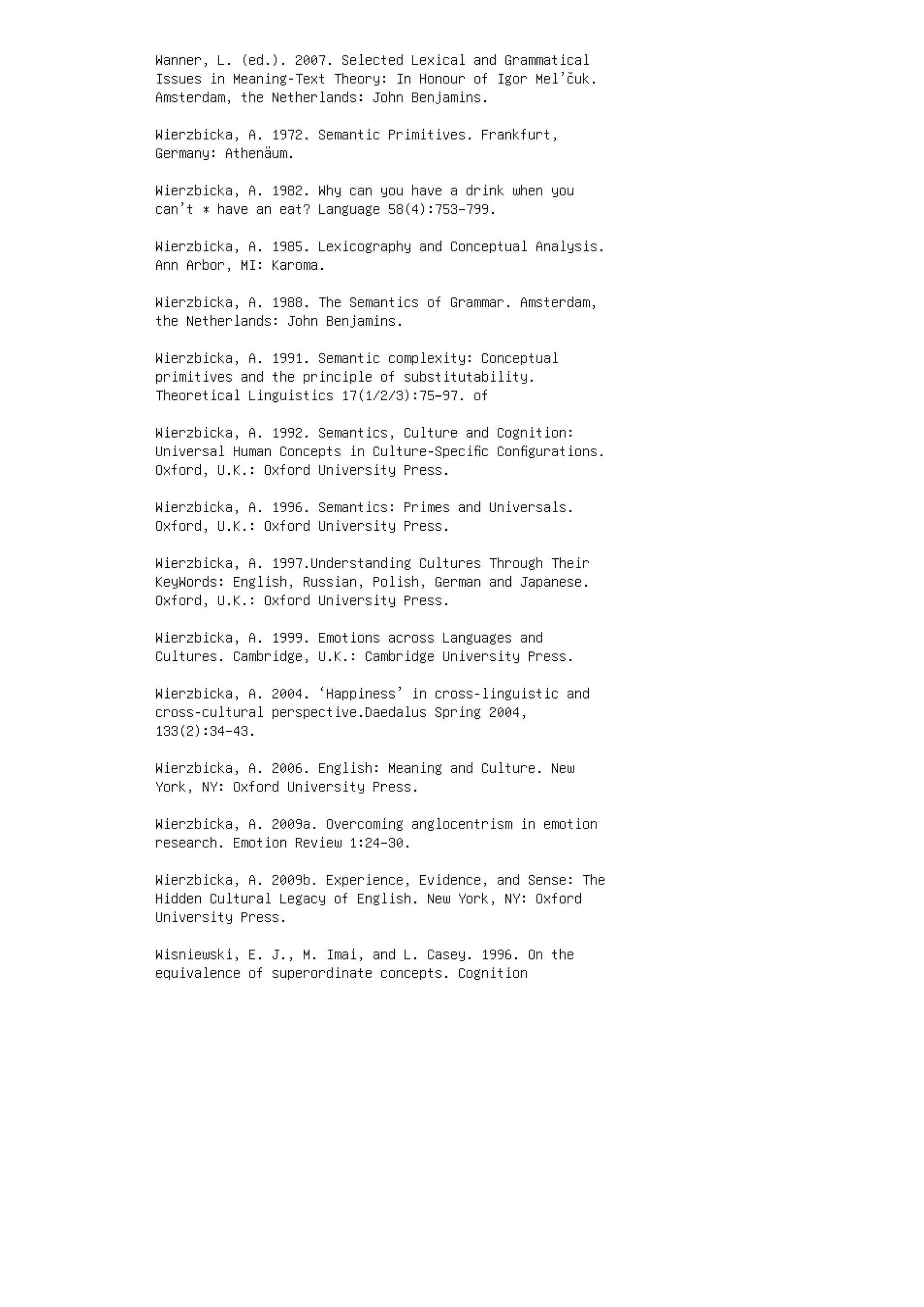

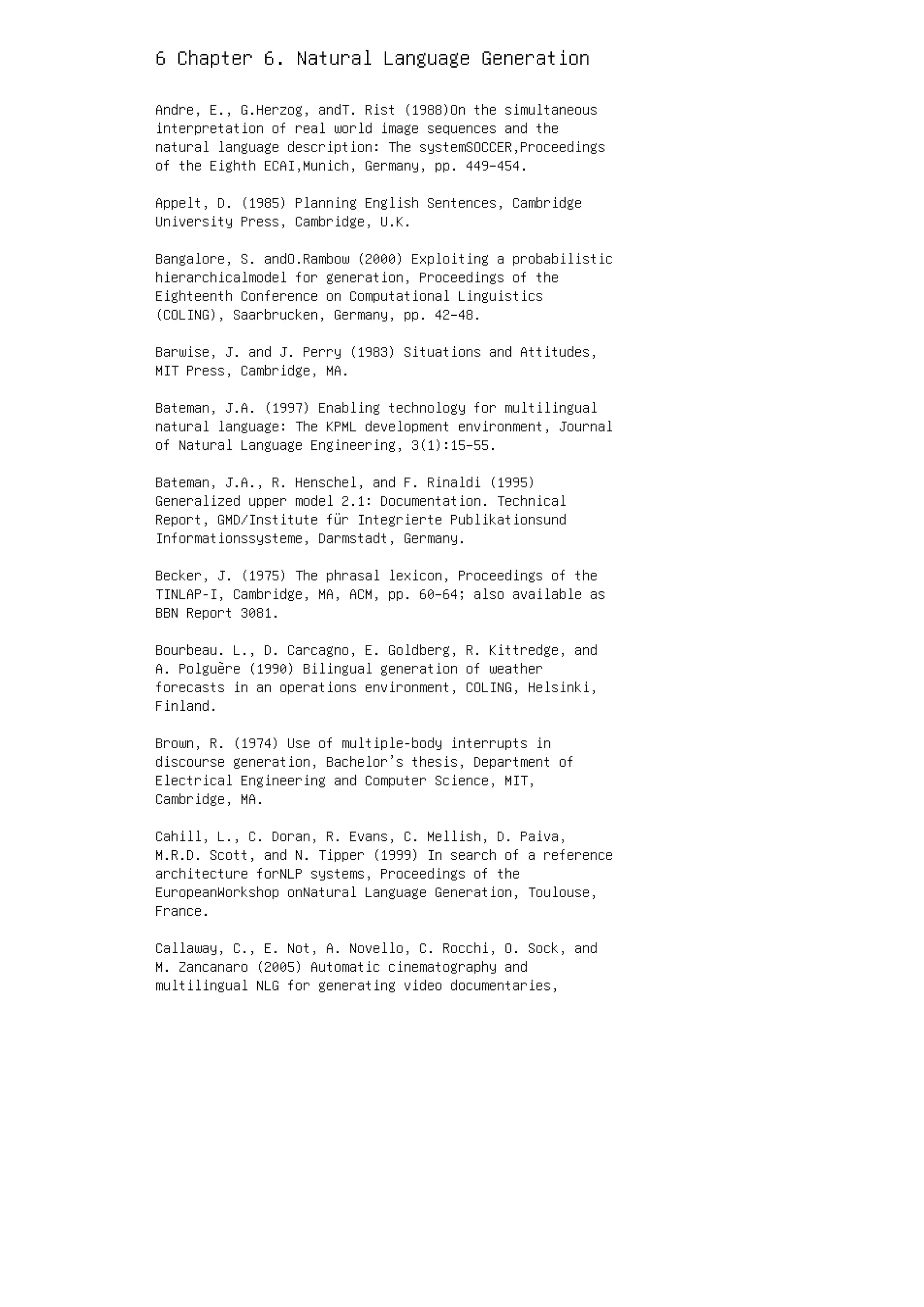
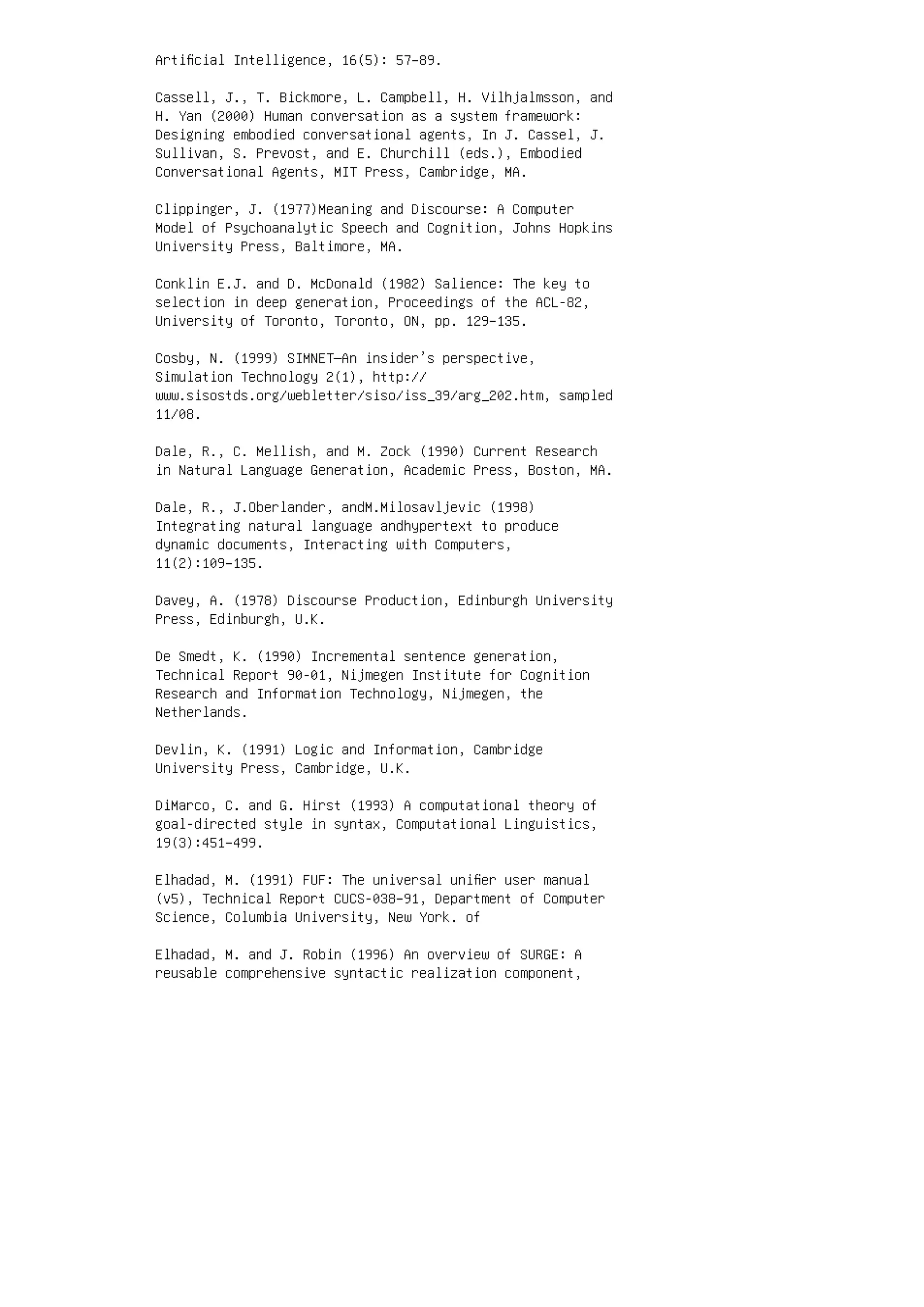
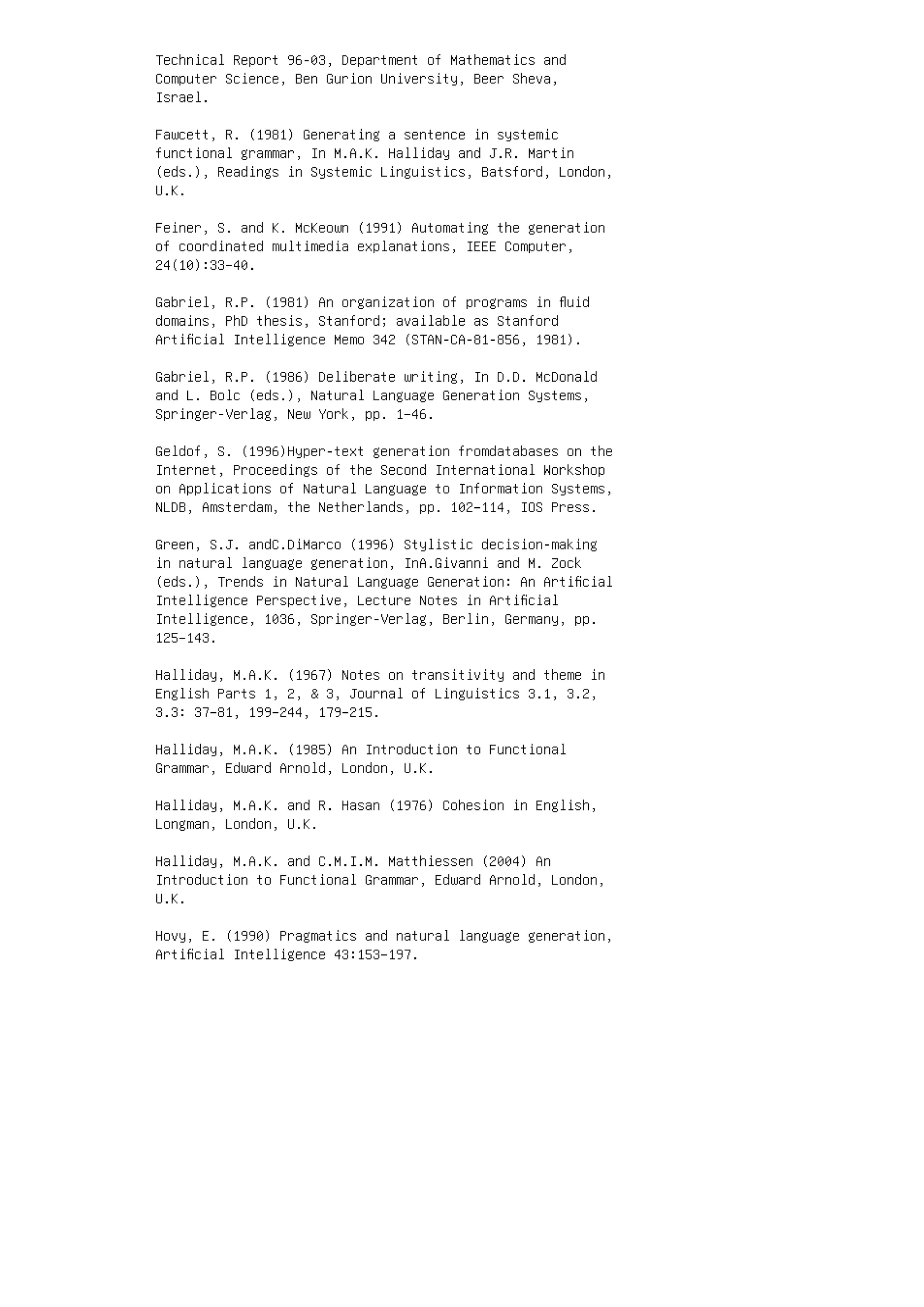
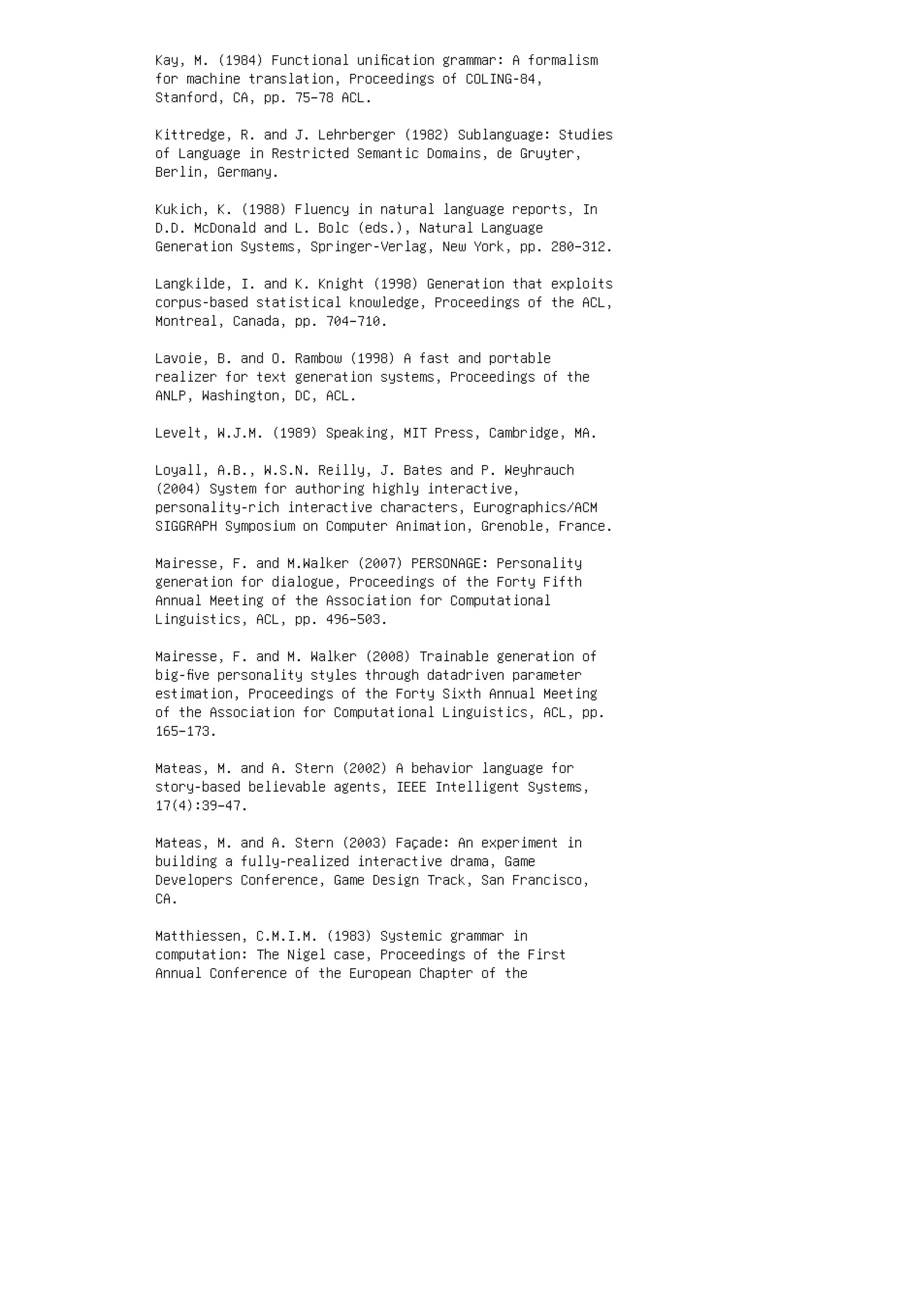

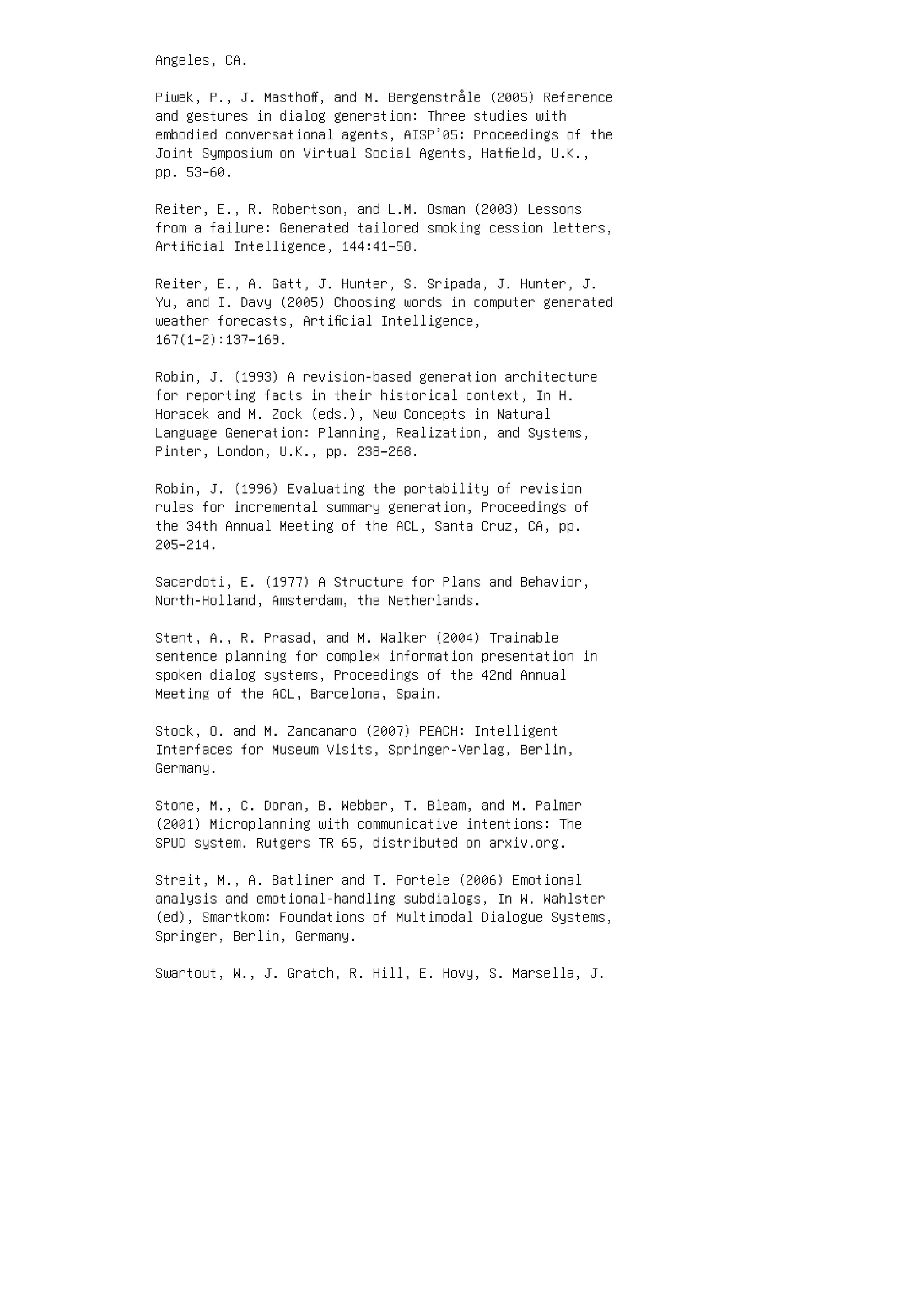

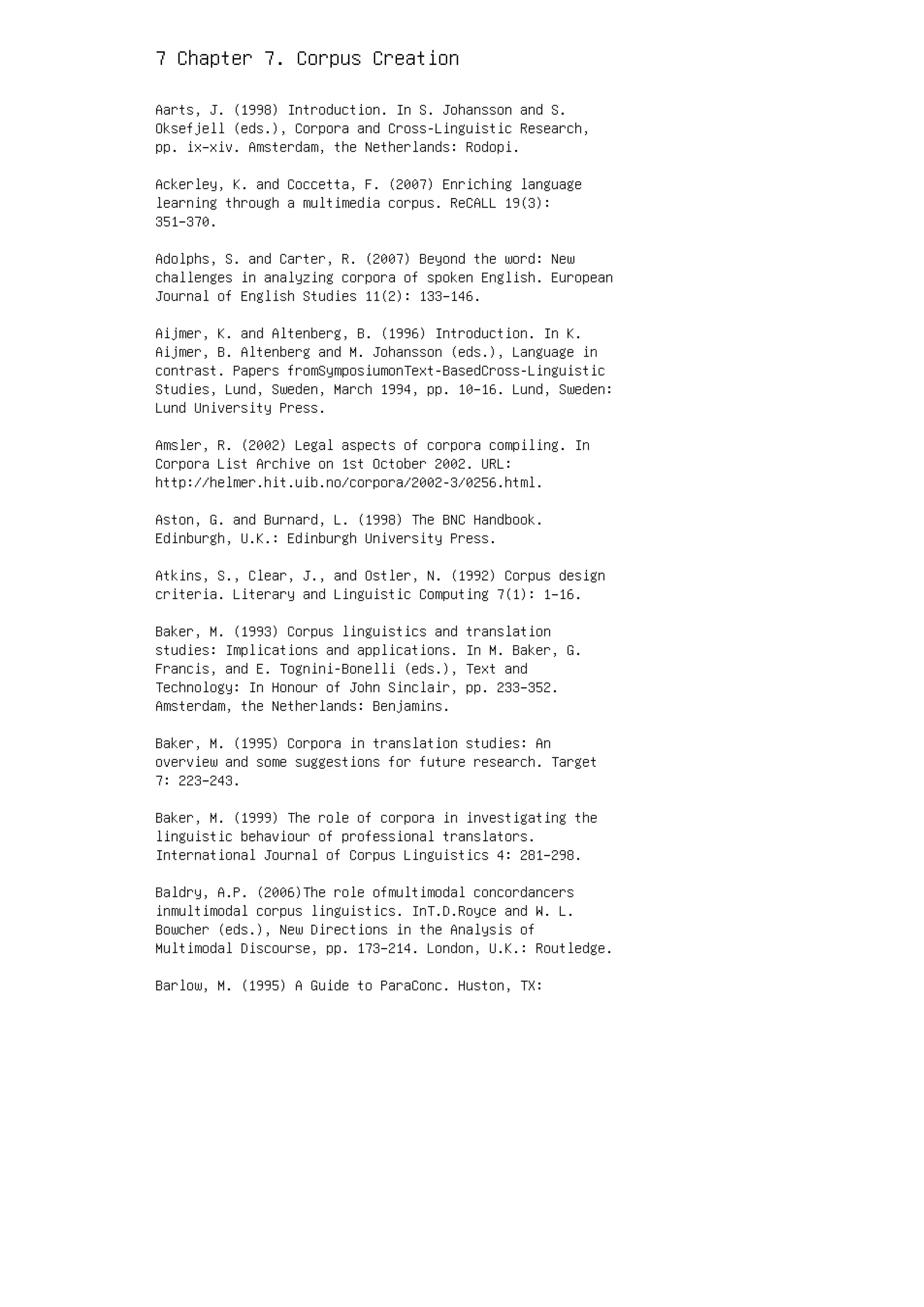



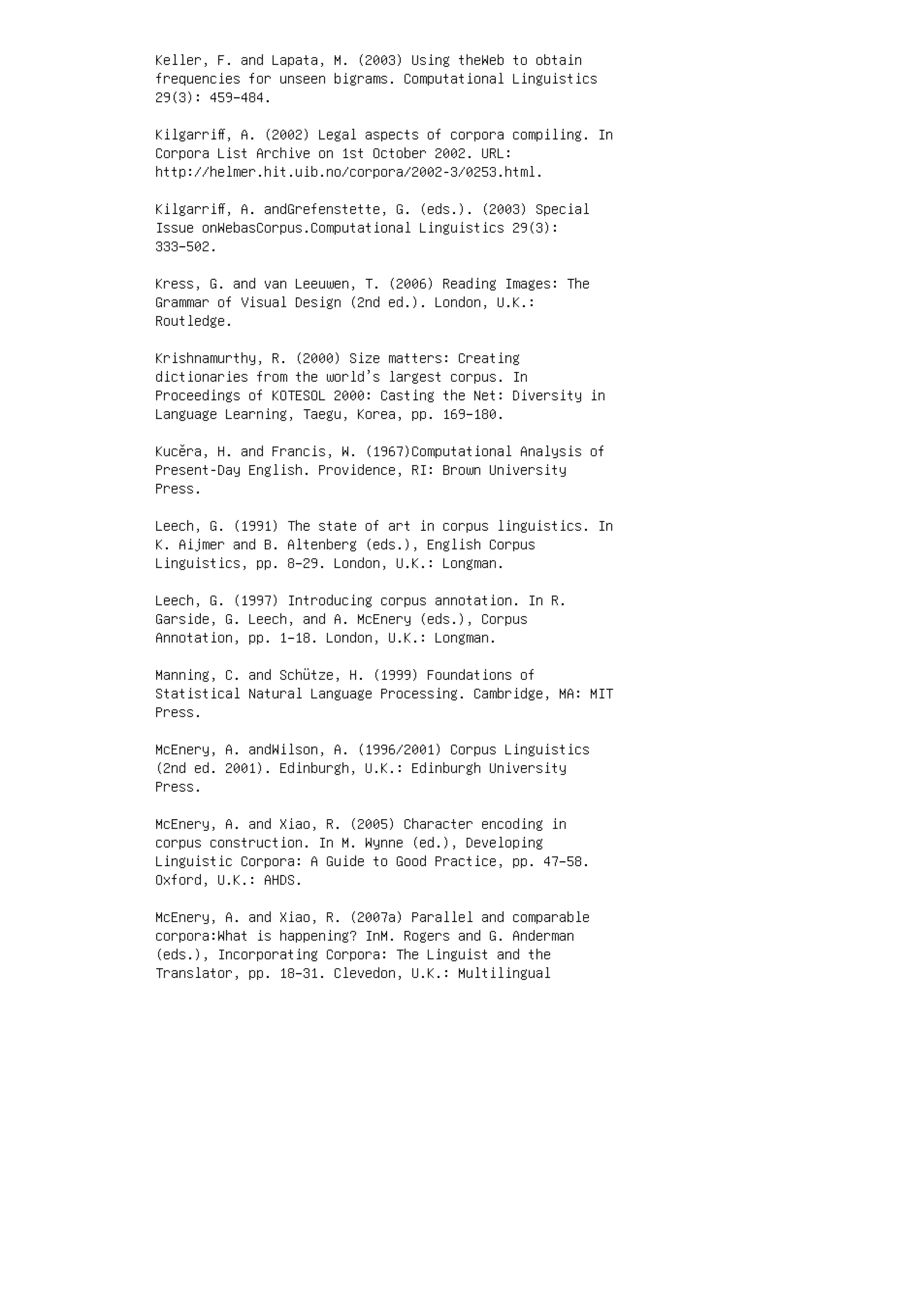
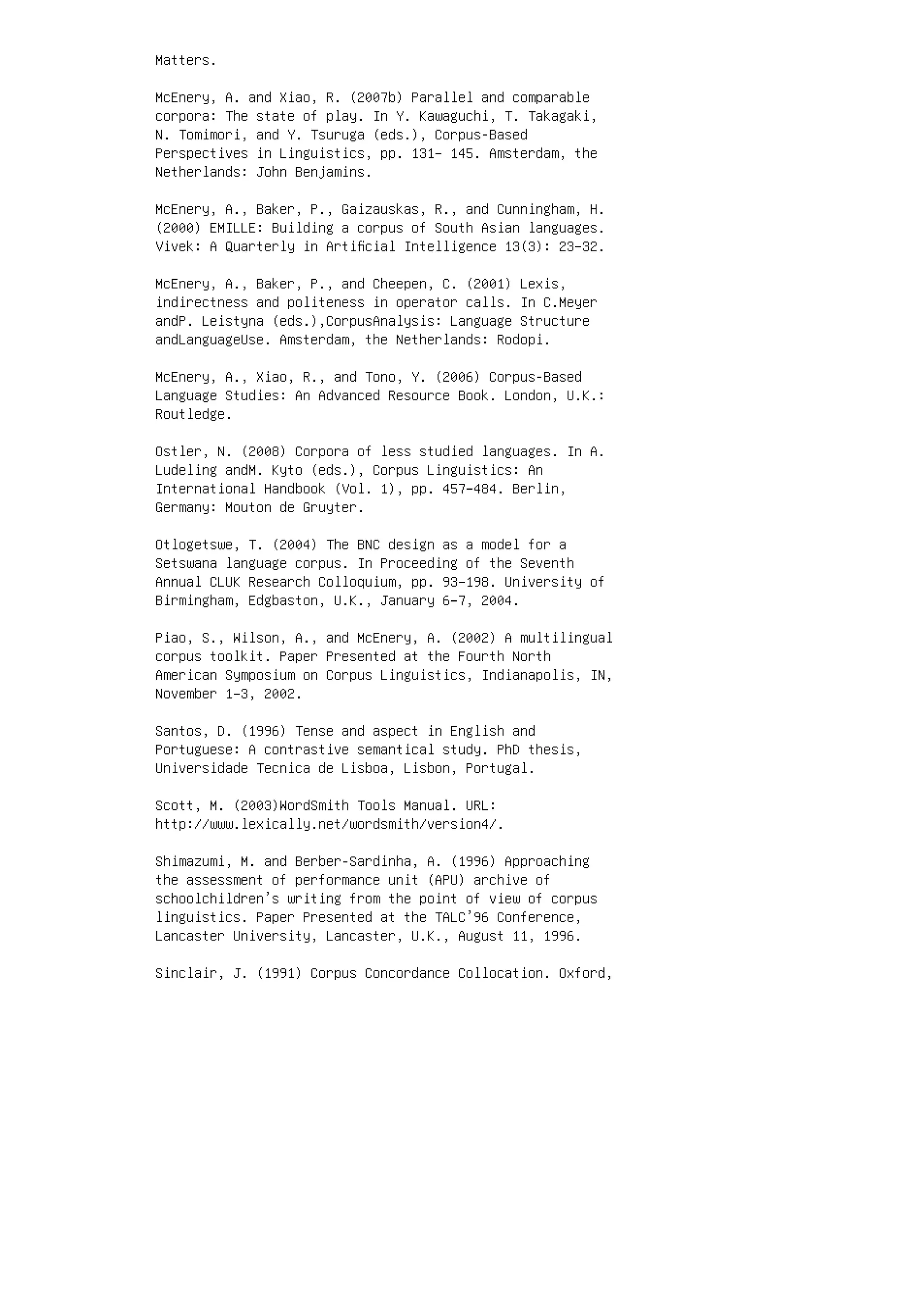
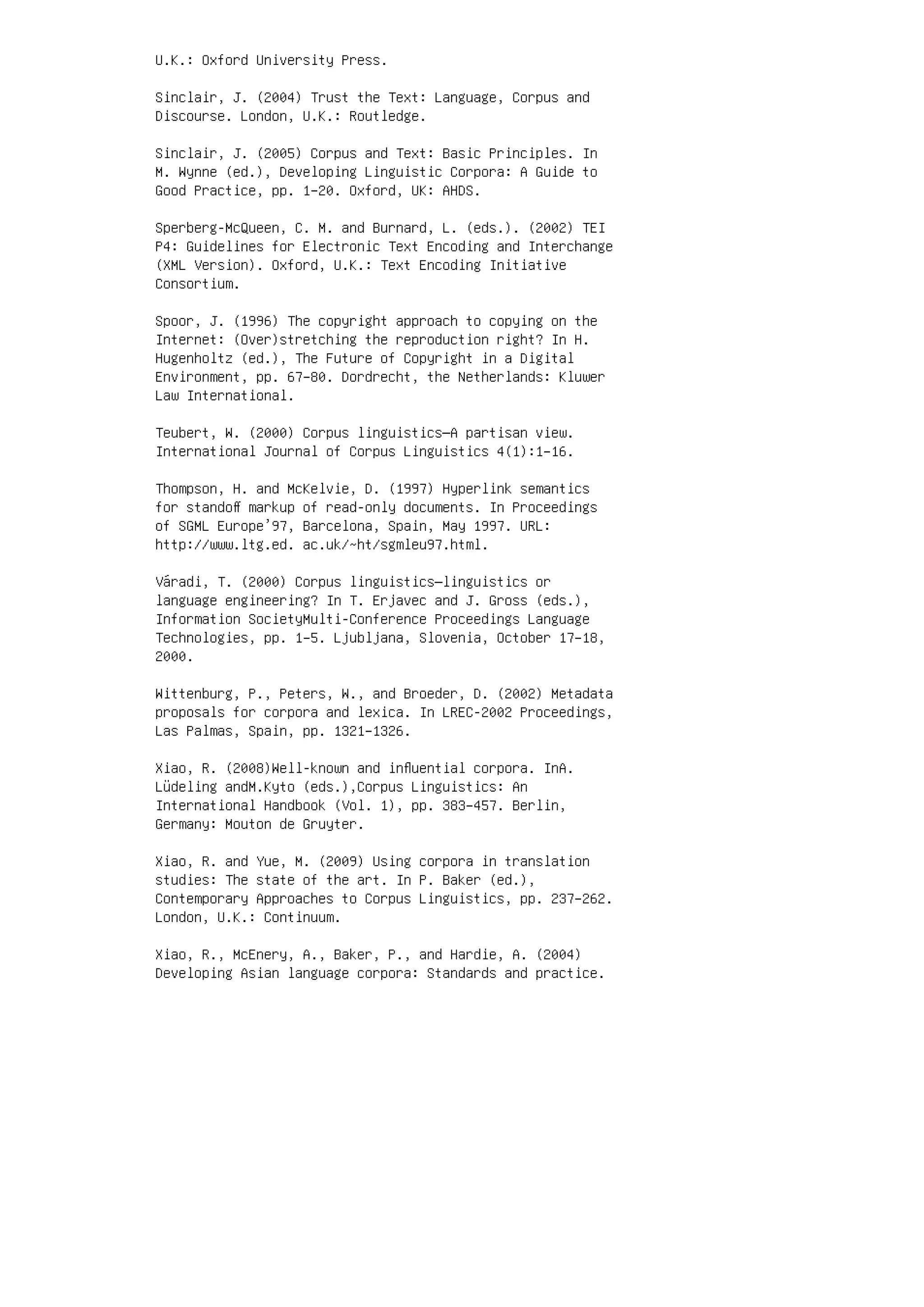


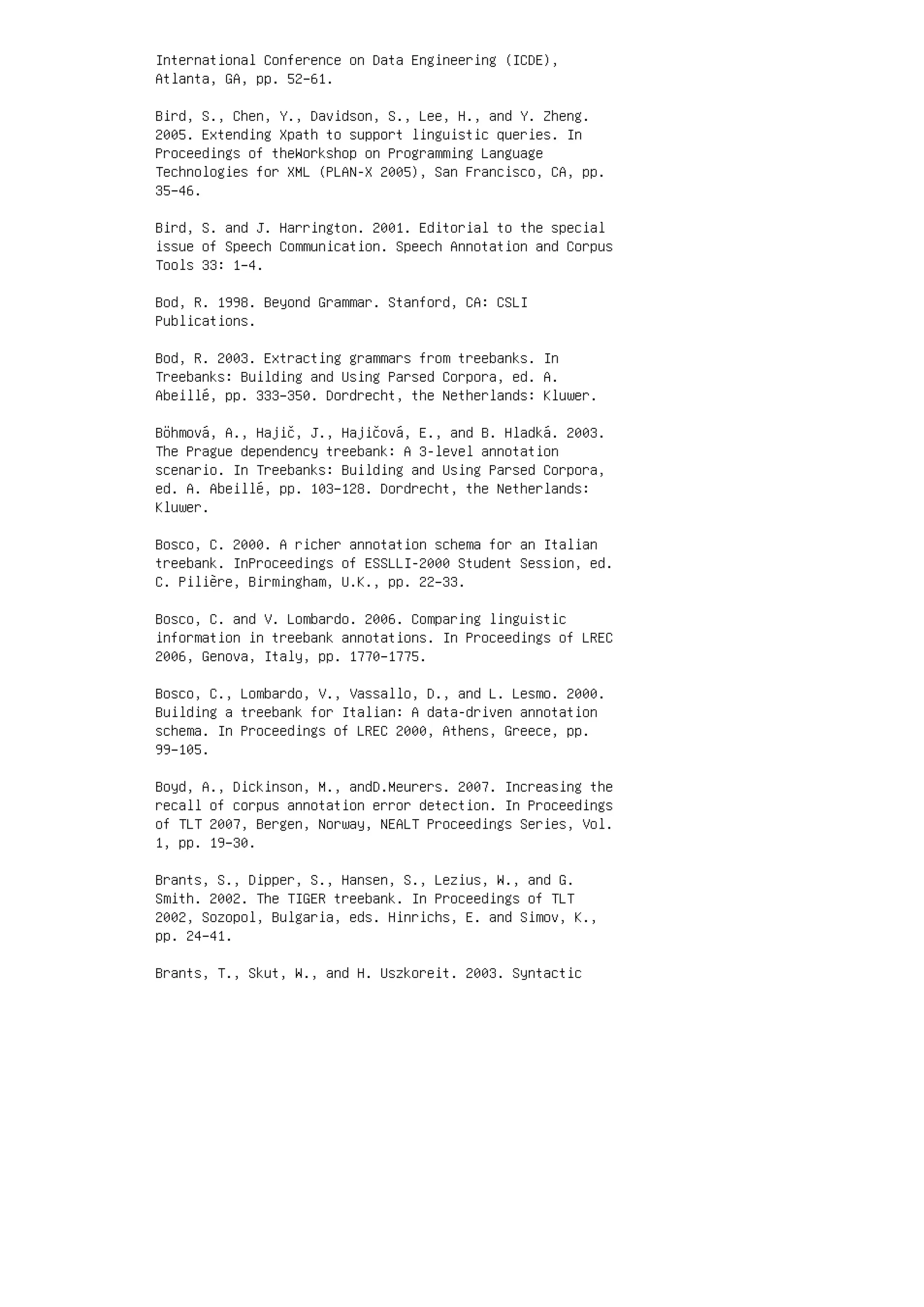






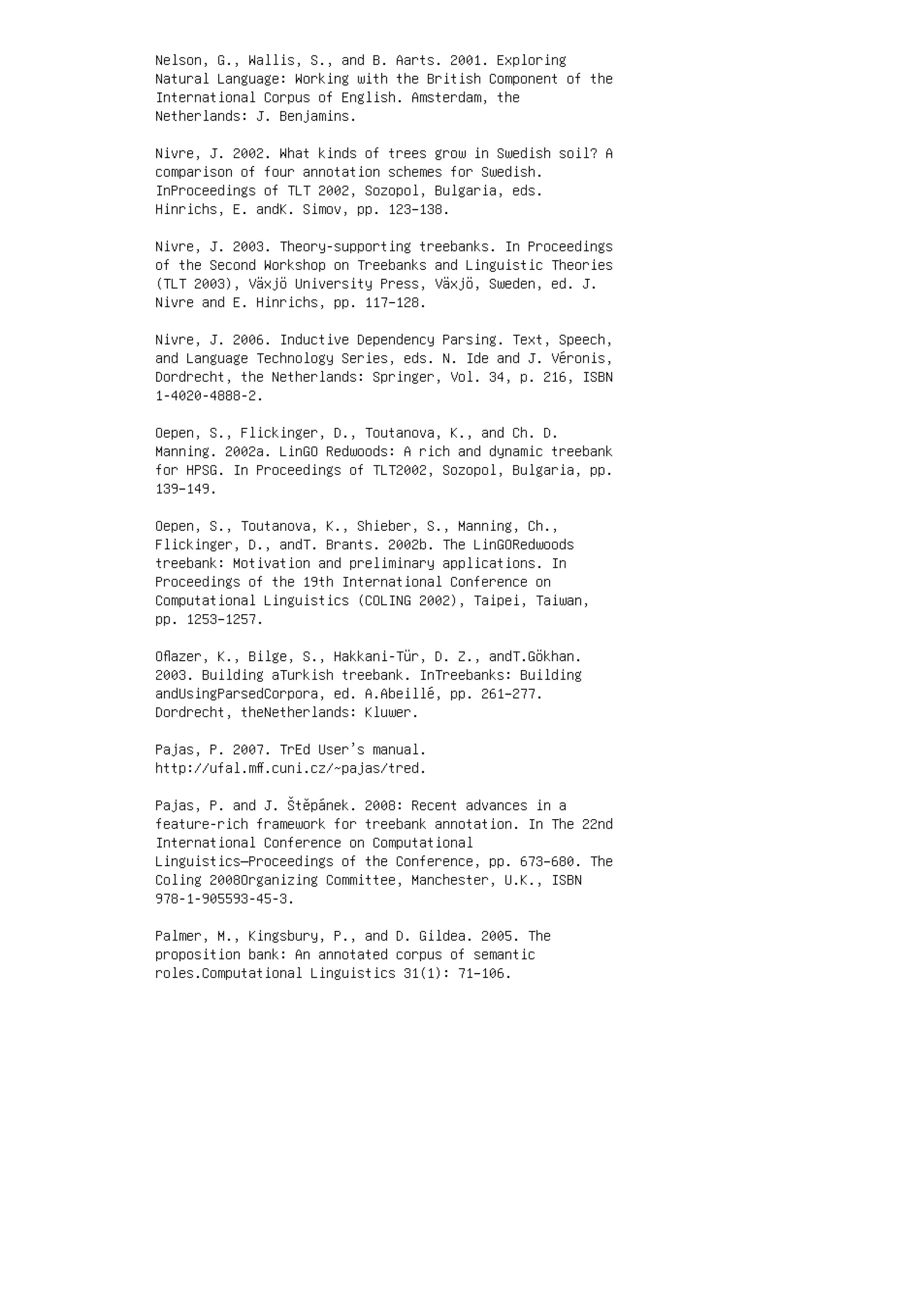


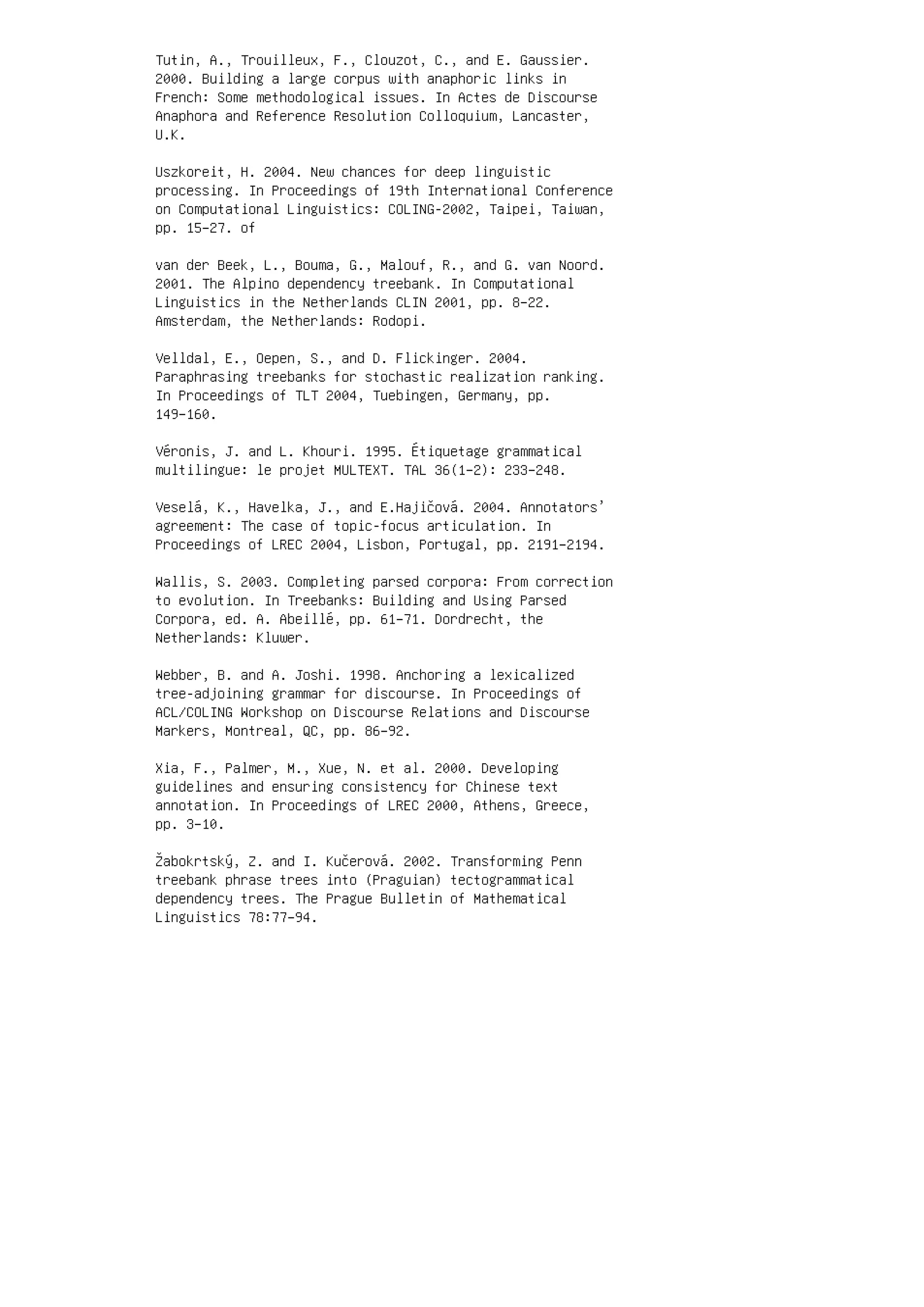
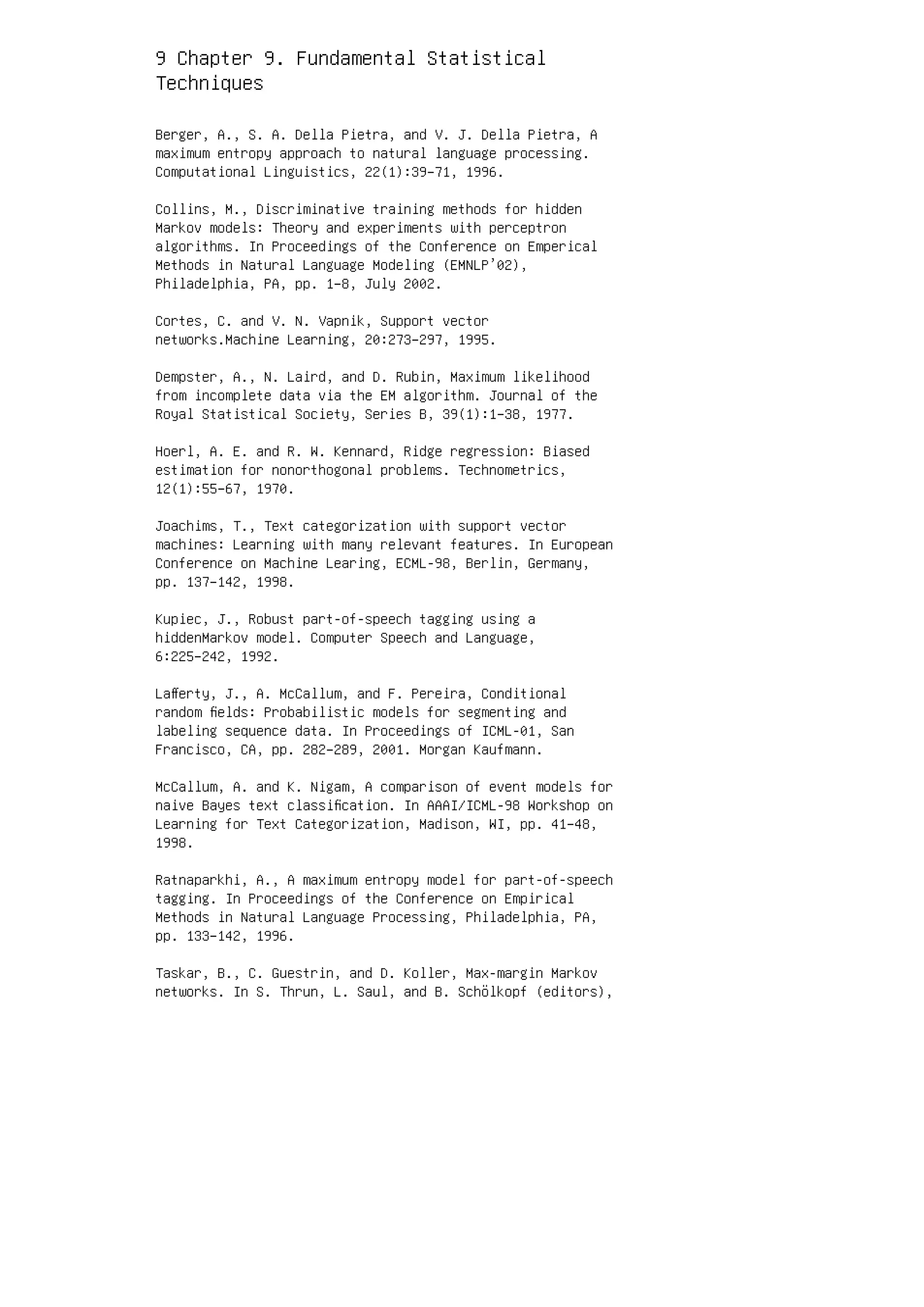


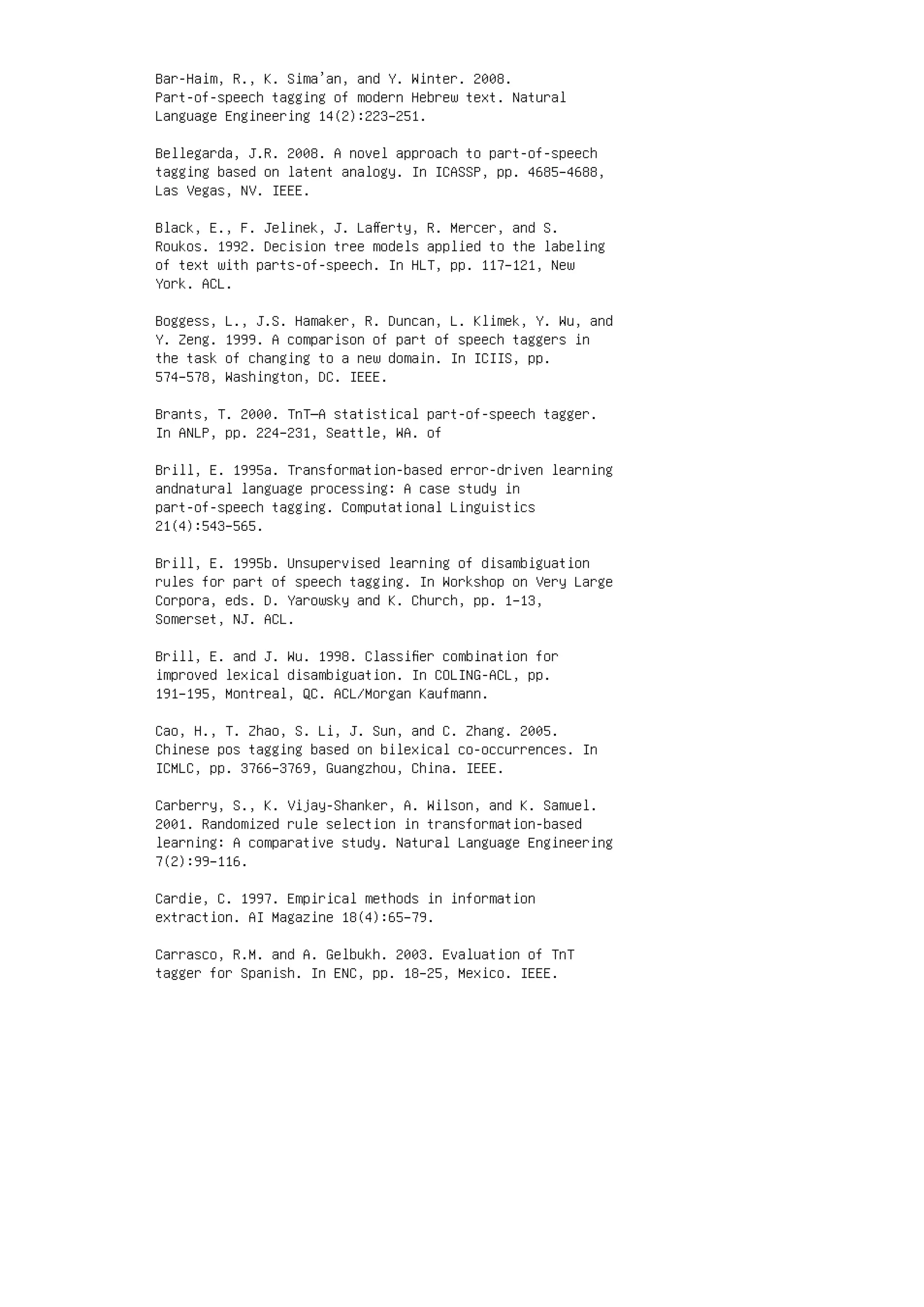

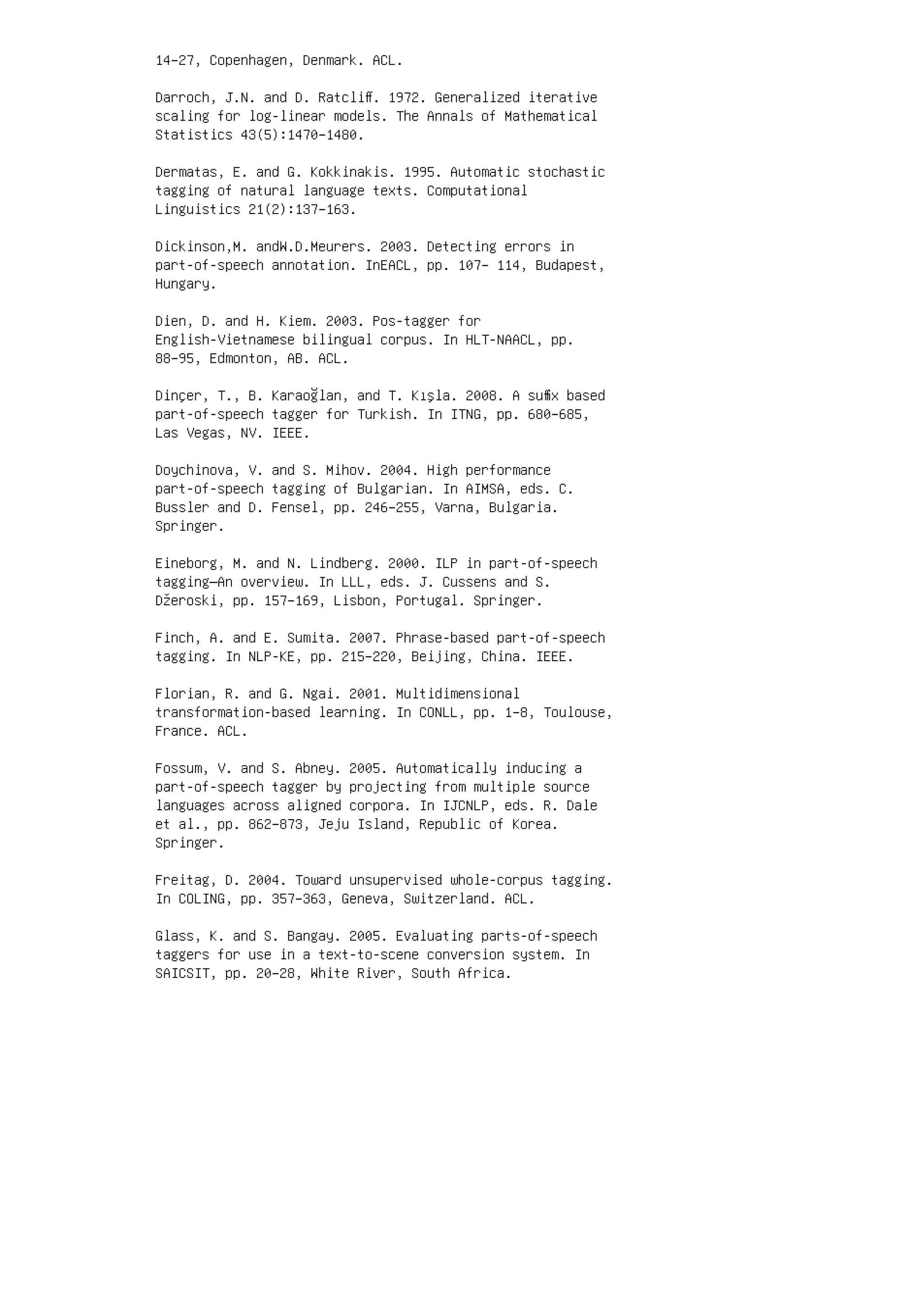

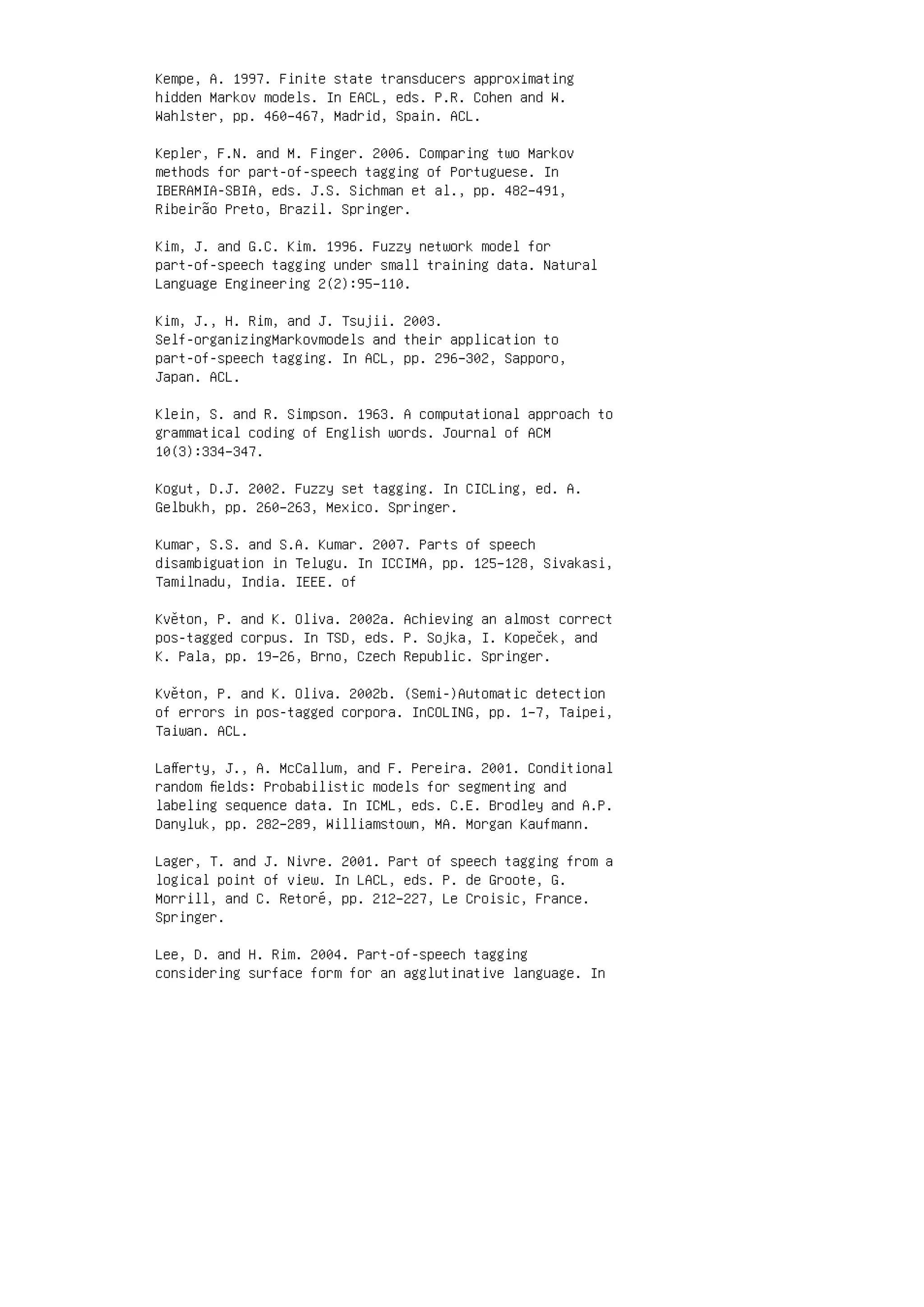




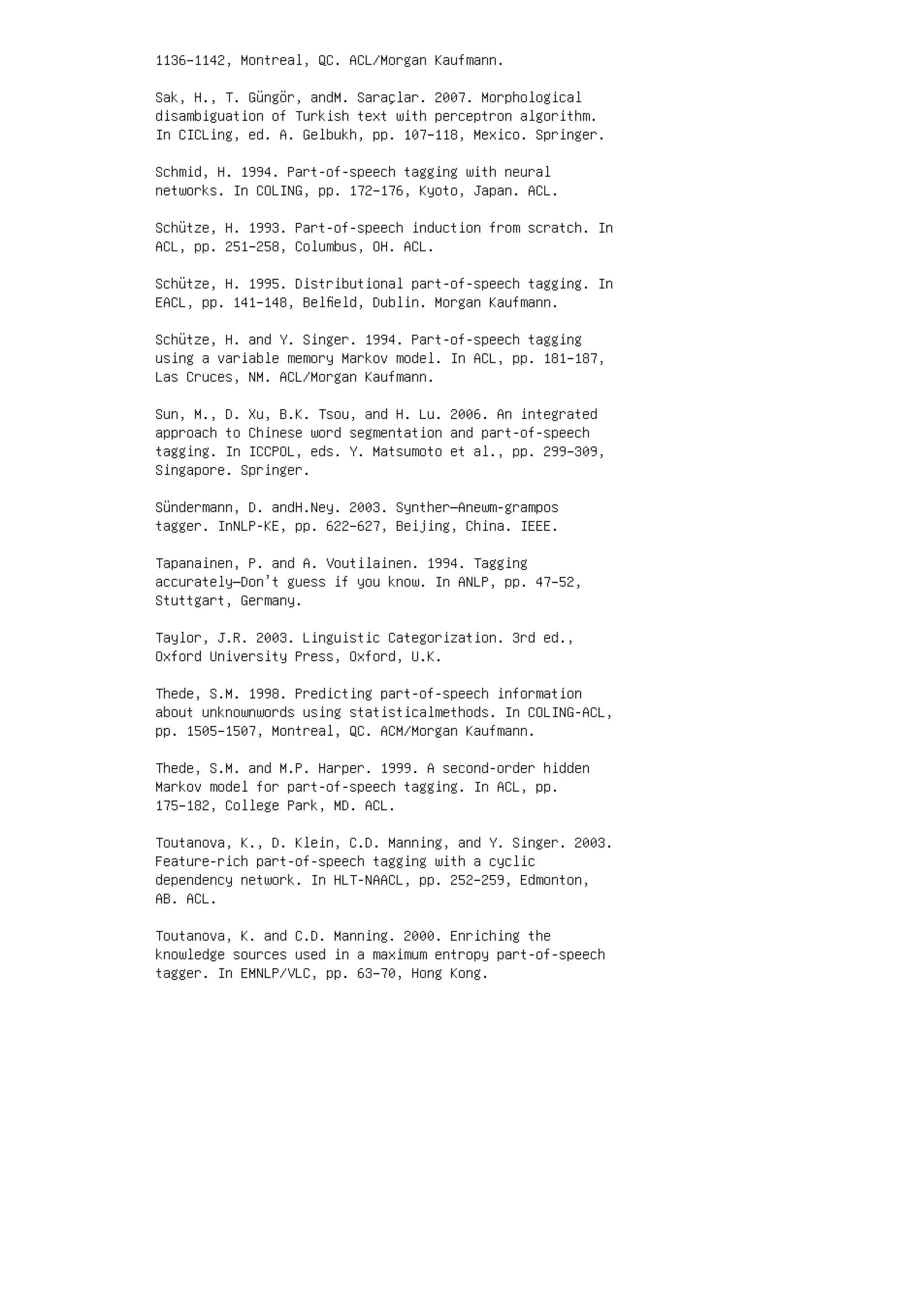
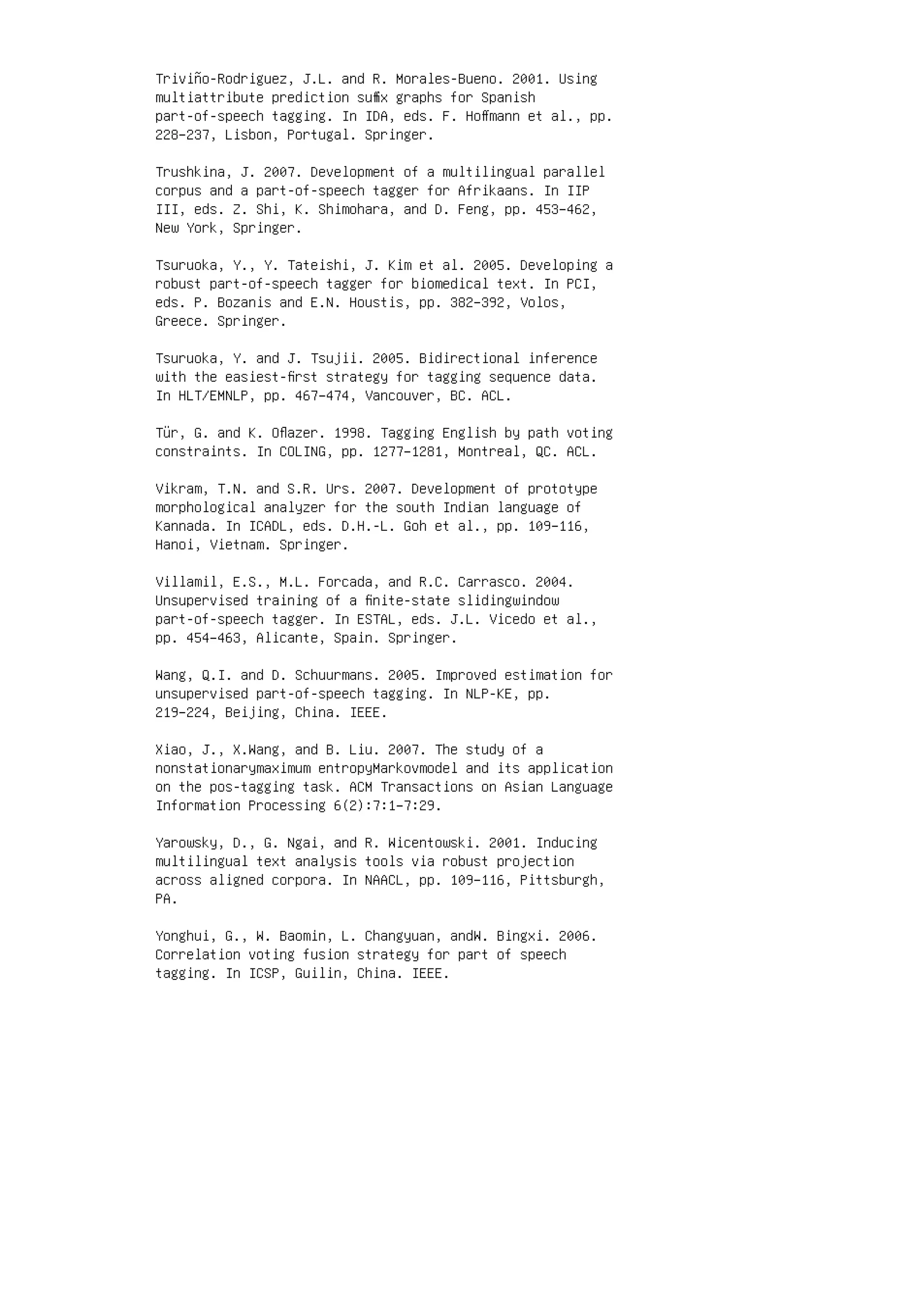


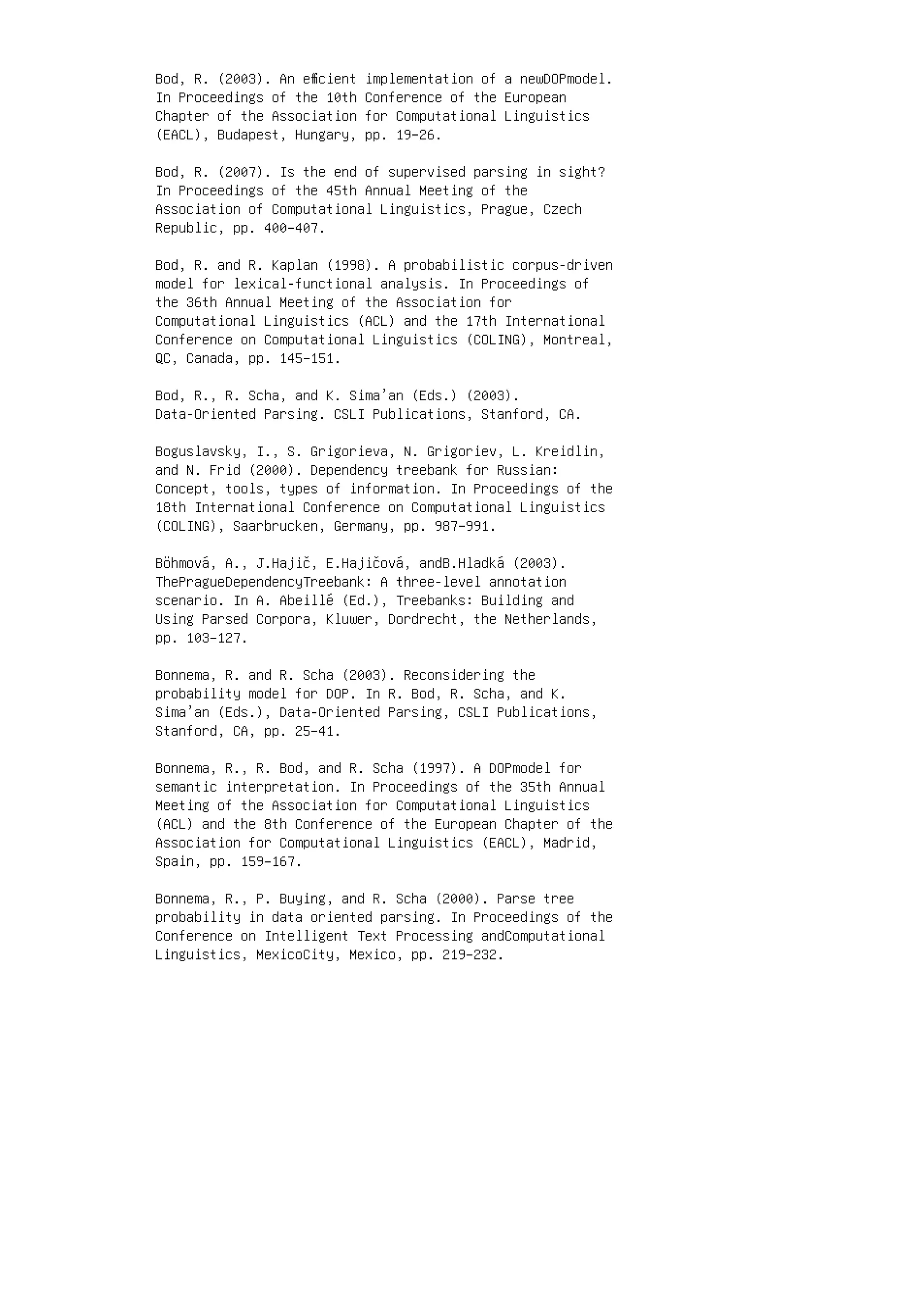

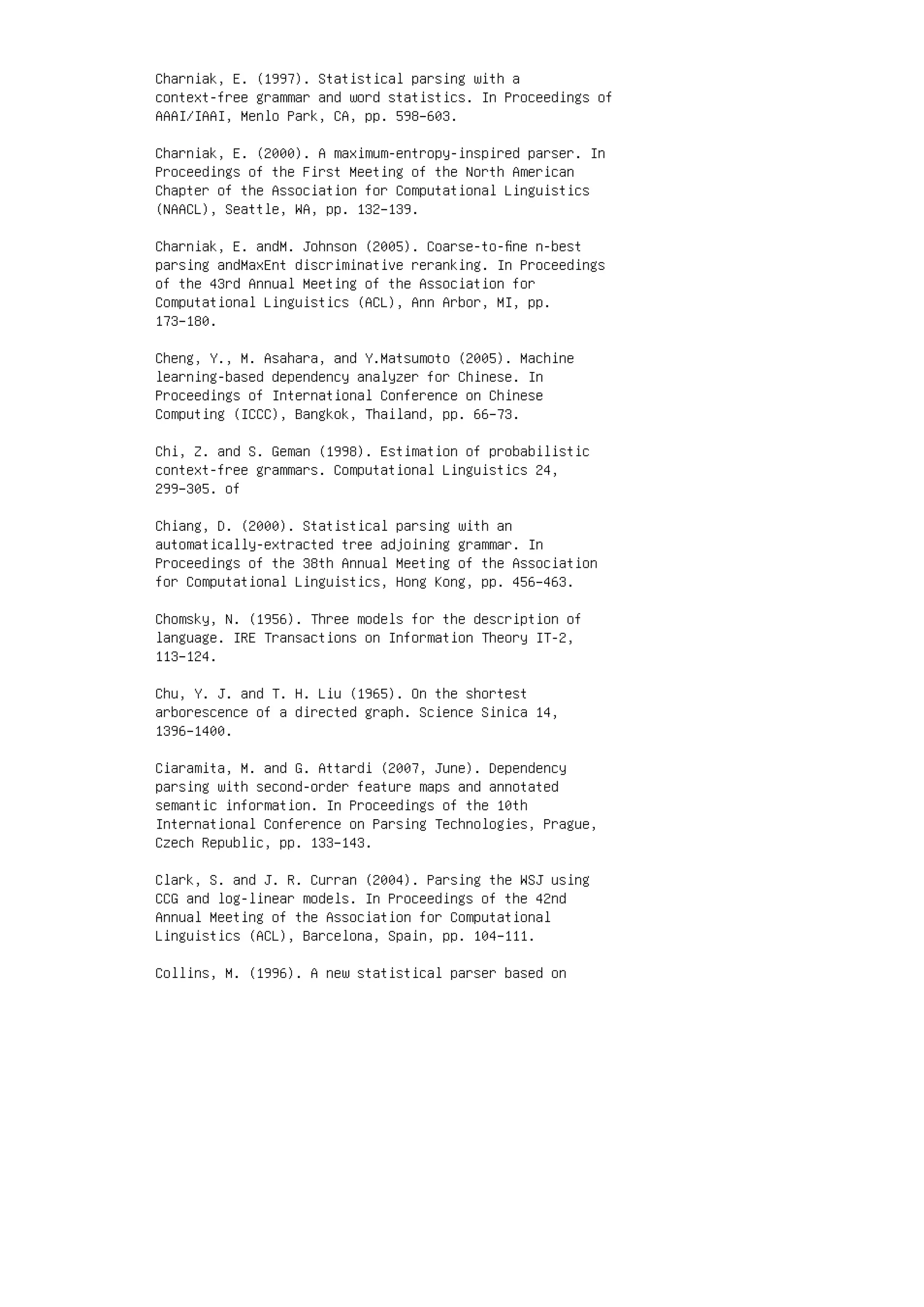
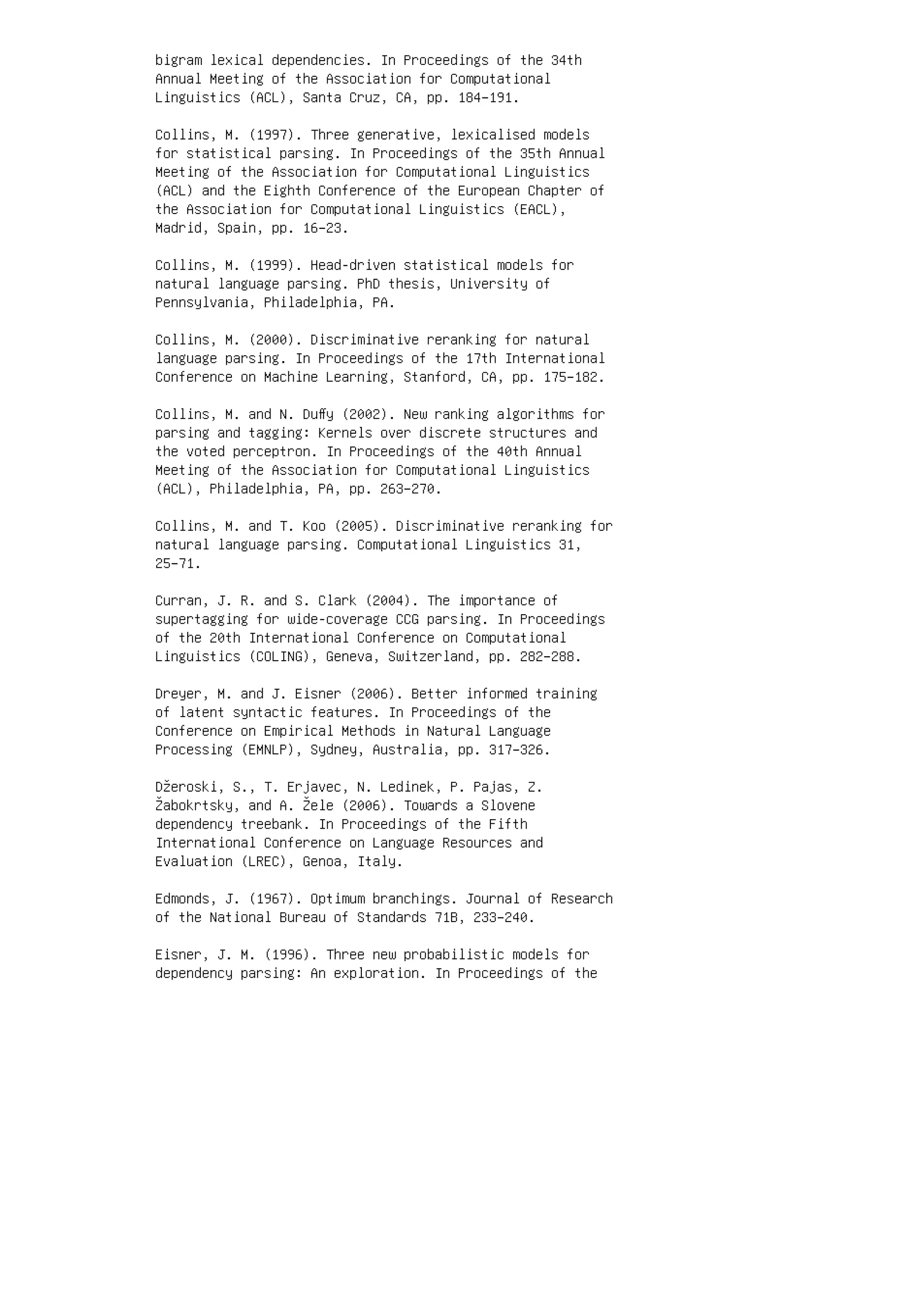


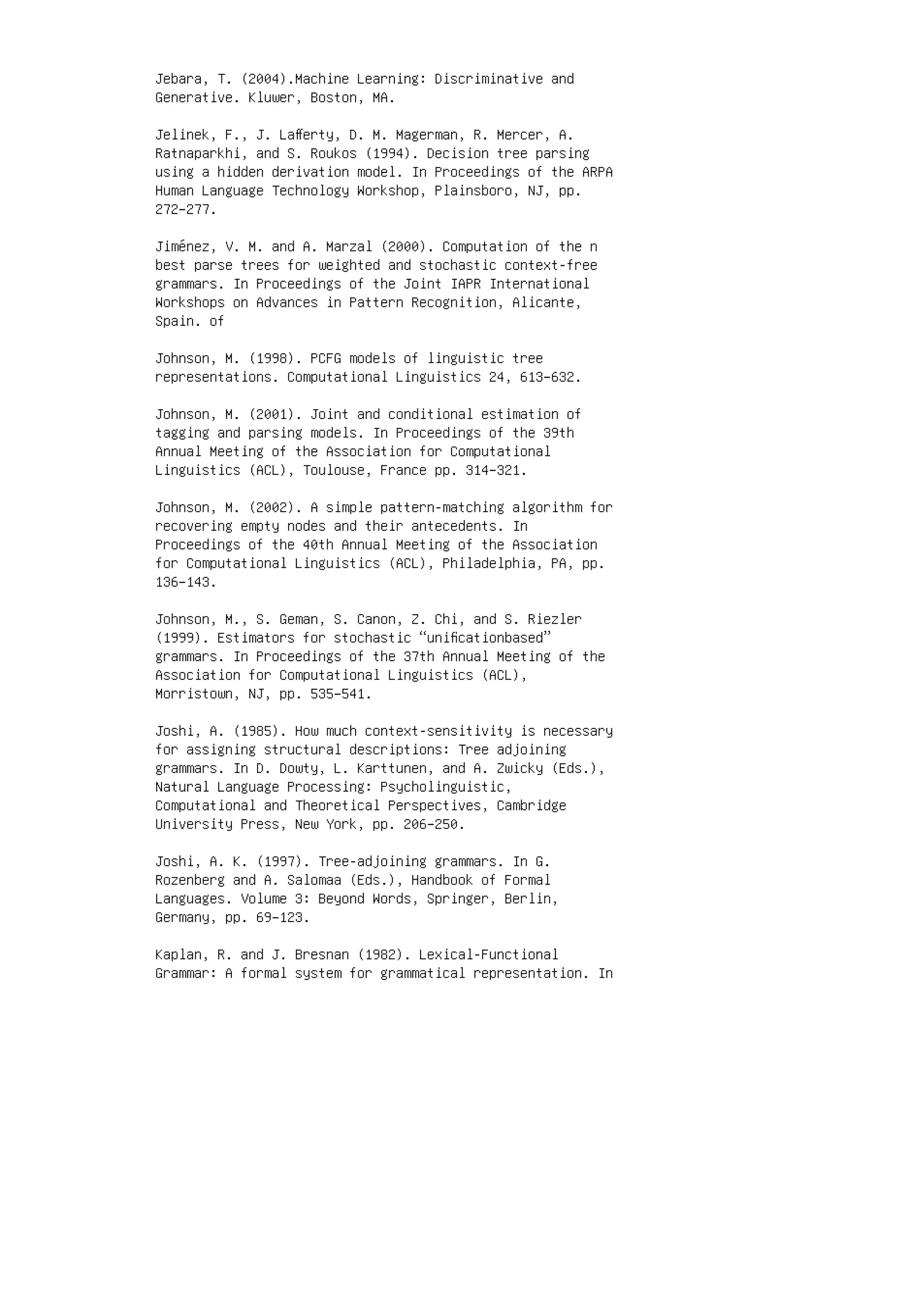


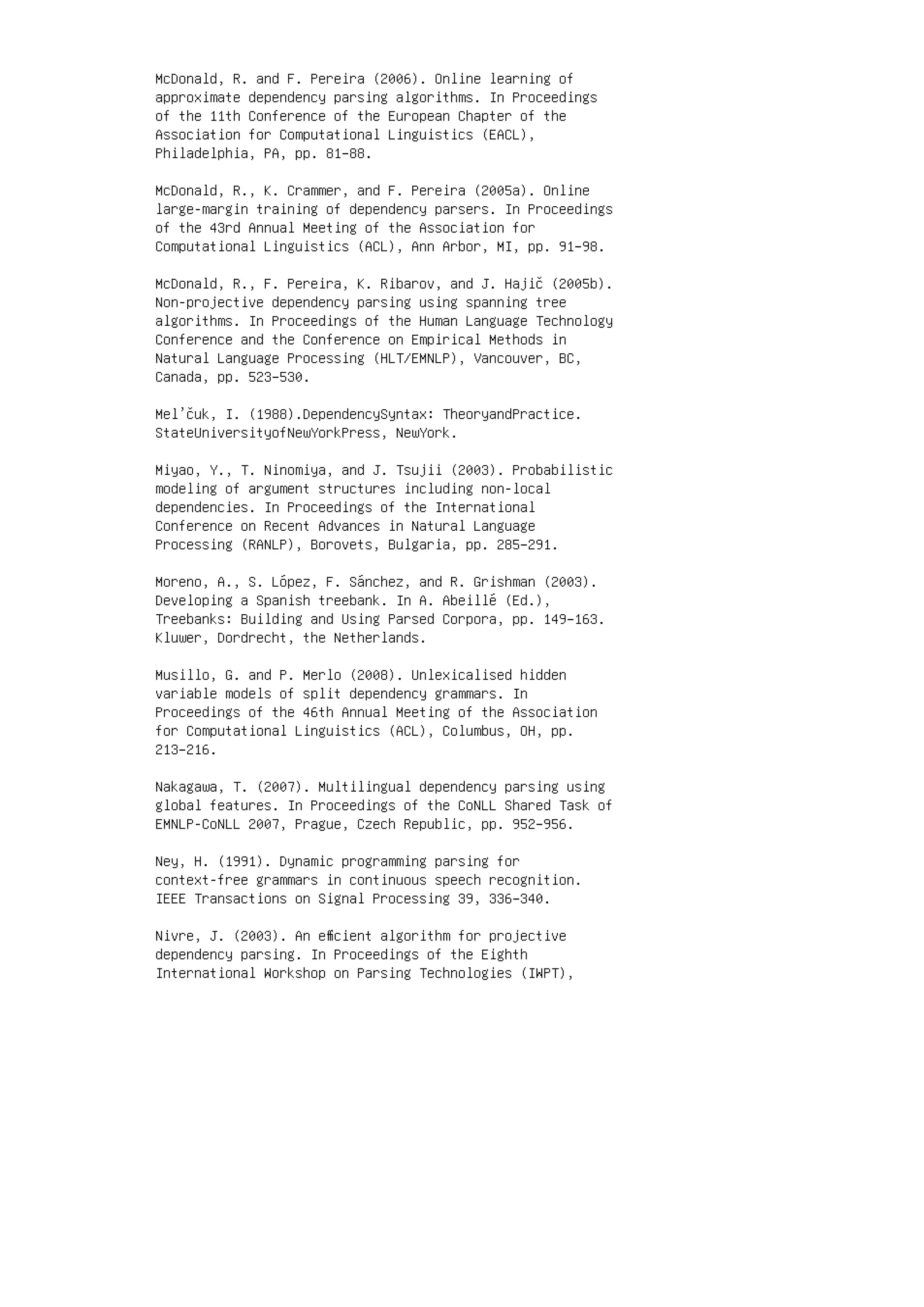


![Riezler, S., M. H. King, R. M. Kaplan, R. Crouch, J. T.
Maxwell III, and M. Johnson (2002). Parsing the Wall Street
Journal using a Lexical-Functional Grammar and
discriminative estimation techniques. In Proceedings of the
40th Annual Meeting of the Association for Computational
Linguistics (ACL), Philadelphia, PA, pp. 271–278.
Sagae, K. and A. Lavie (2005). A classifier-based parser
with linear run-time complexity. In Proceedings of the
Ninth International Workshop on Parsing Technologies
(IWPT), Vancouver, BC, Canada, pp. 125–132.
Sagae, K. and A. Lavie (2006a). A best-first probabilistic
shift-reduce parser. In Proceedings of the COLING/ACL 2006
Main Conference Poster Sessions, Sydney, Australia, pp.
691–698.
Sagae, K. and A. Lavie (2006b). Parser combination by
reparsing. In Proceedings of the Human Language Technology
Conference of the NAACL, Companion Volume: Short Papers,
New York, pp. 129–132.
Sagae, K. and J. Tsujii (2007). Dependency parsing and
domain adaptation with LR models and parser ensembles. In
Proceedings of the CoNLL Shared Task of EMNLP-CoNLL 2007,
Prague, Czech Republic, pp. 1044–1050.
Sánchez, J. A. and J.M. Benedí (1997). Consistency of
stochastic context-free grammars fromprobabilistic
estimation based on growth transformations. IEEE
Transactions on Pattern Analysis and Machine Intelligence
19, 1052–1055.
Sarkar, A. (2001). Applying co-training methods to
statistical parsing. In Proceedings of the Second Meeting
of the North American Chapter of the Association for
Computational Linguistics (NAACL), Pittsburgh, PA, pp.
175–182.
Scha, R. (1990). Taaltheorie en taaltechnologie; competence
en performance [language theory and language technology;
competence and performance]. In R. de Kort and G. L. J.
Leerdam (Eds.), Computertoepassingen in de Neerlandistiek,
LVVN, Almere, the Netherlands, pp. 7–22.
Seginer, Y. (2007). Fast unsupervised incremental parsing.
In Proceedings of the 45th Annual Meeting of the
Association of Computational Linguistics, Prague, Czech
Republic, pp. 384–391.](https://image.slidesharecdn.com/9780429149207previewpdf-231005165728-2b1ccb76/75/9780429149207_previewpdf-pdf-124-2048.jpg)
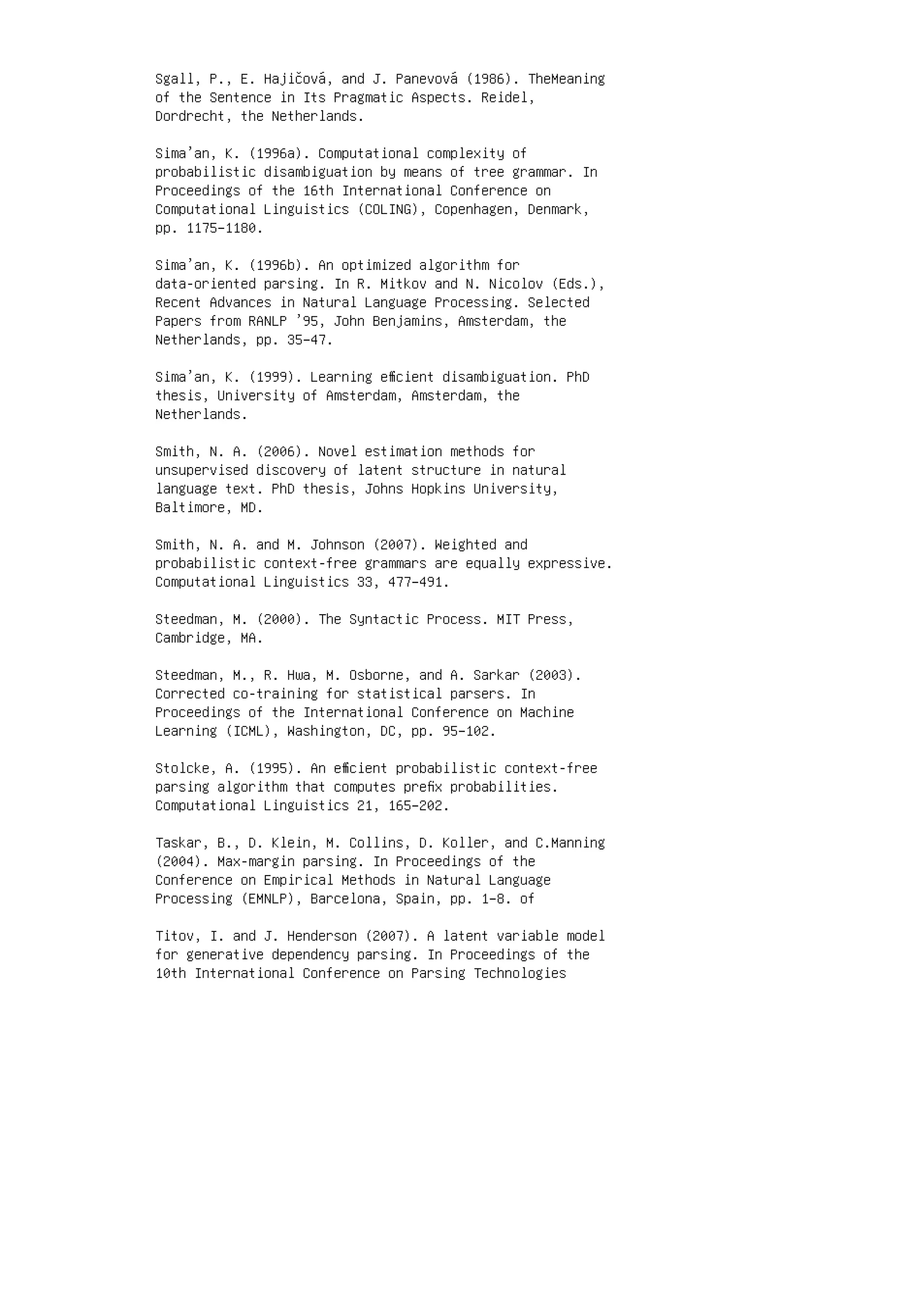

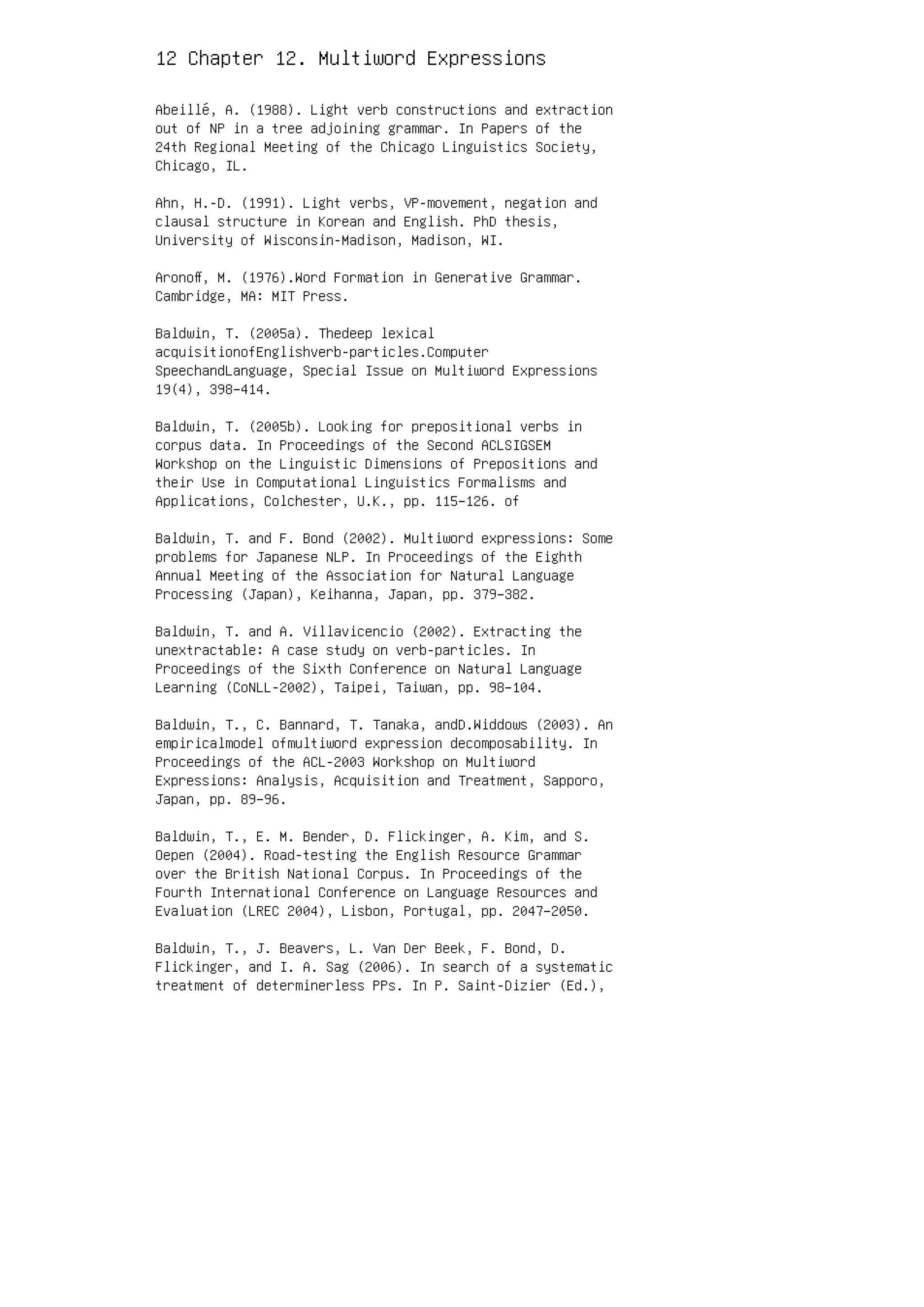
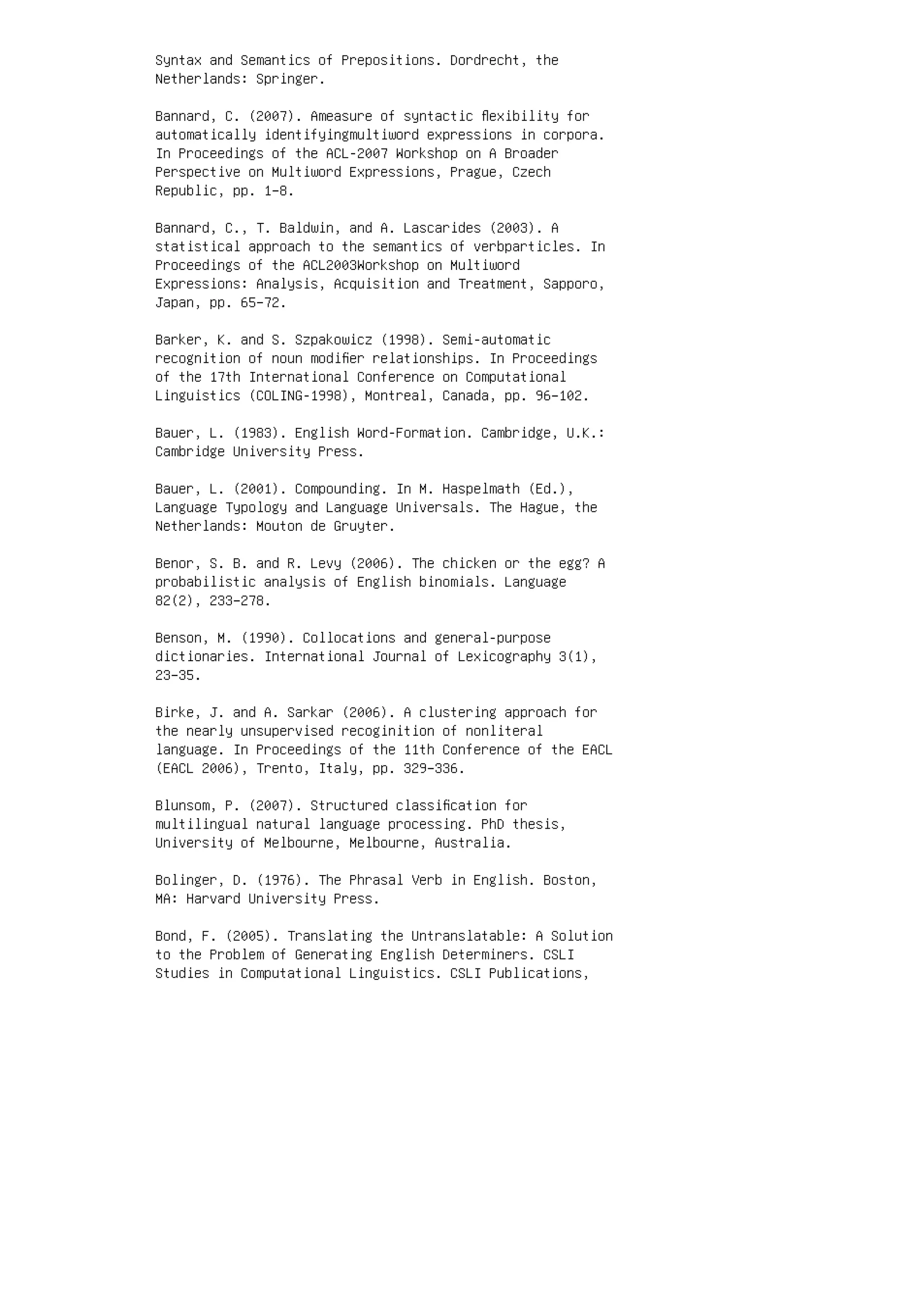


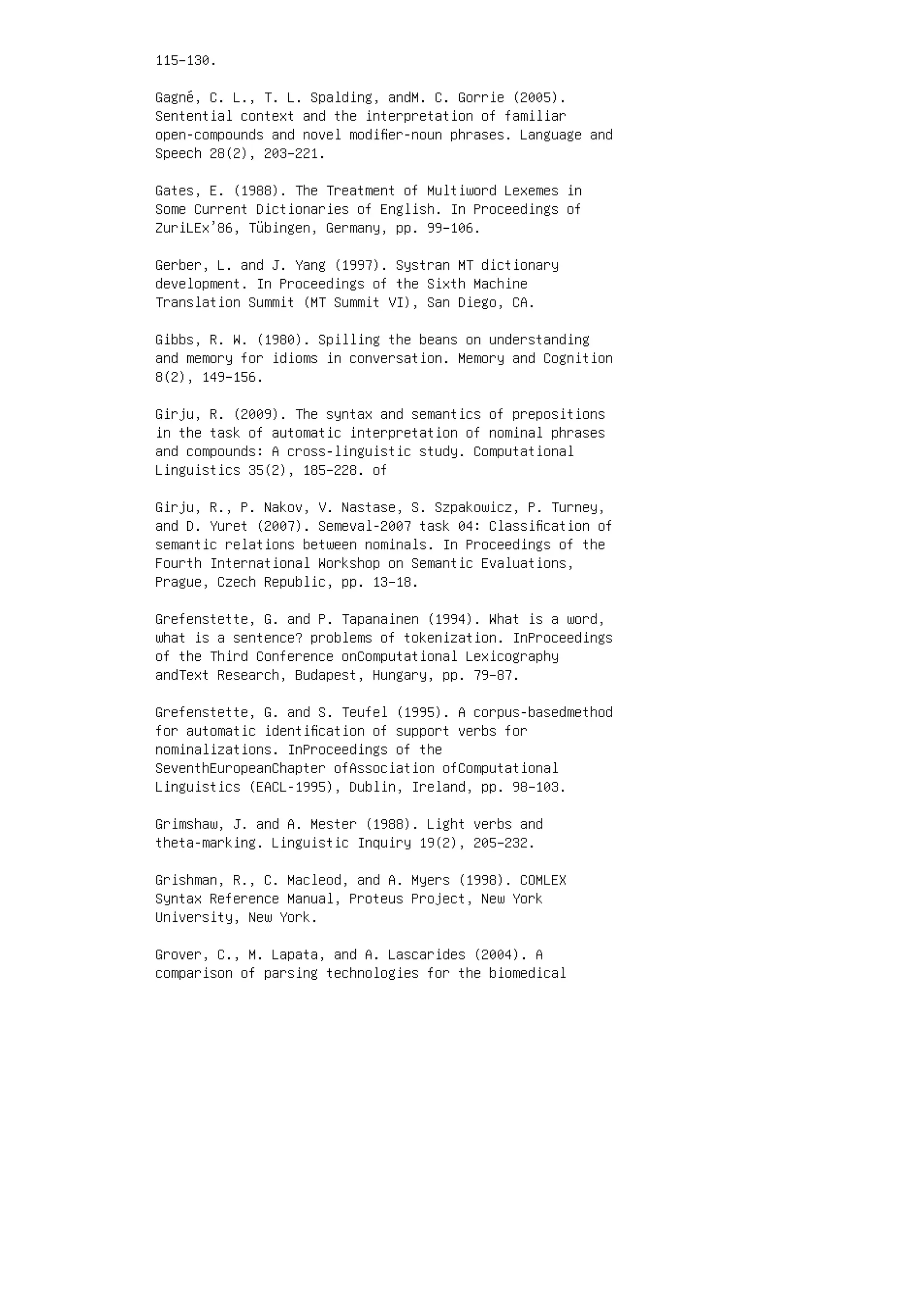
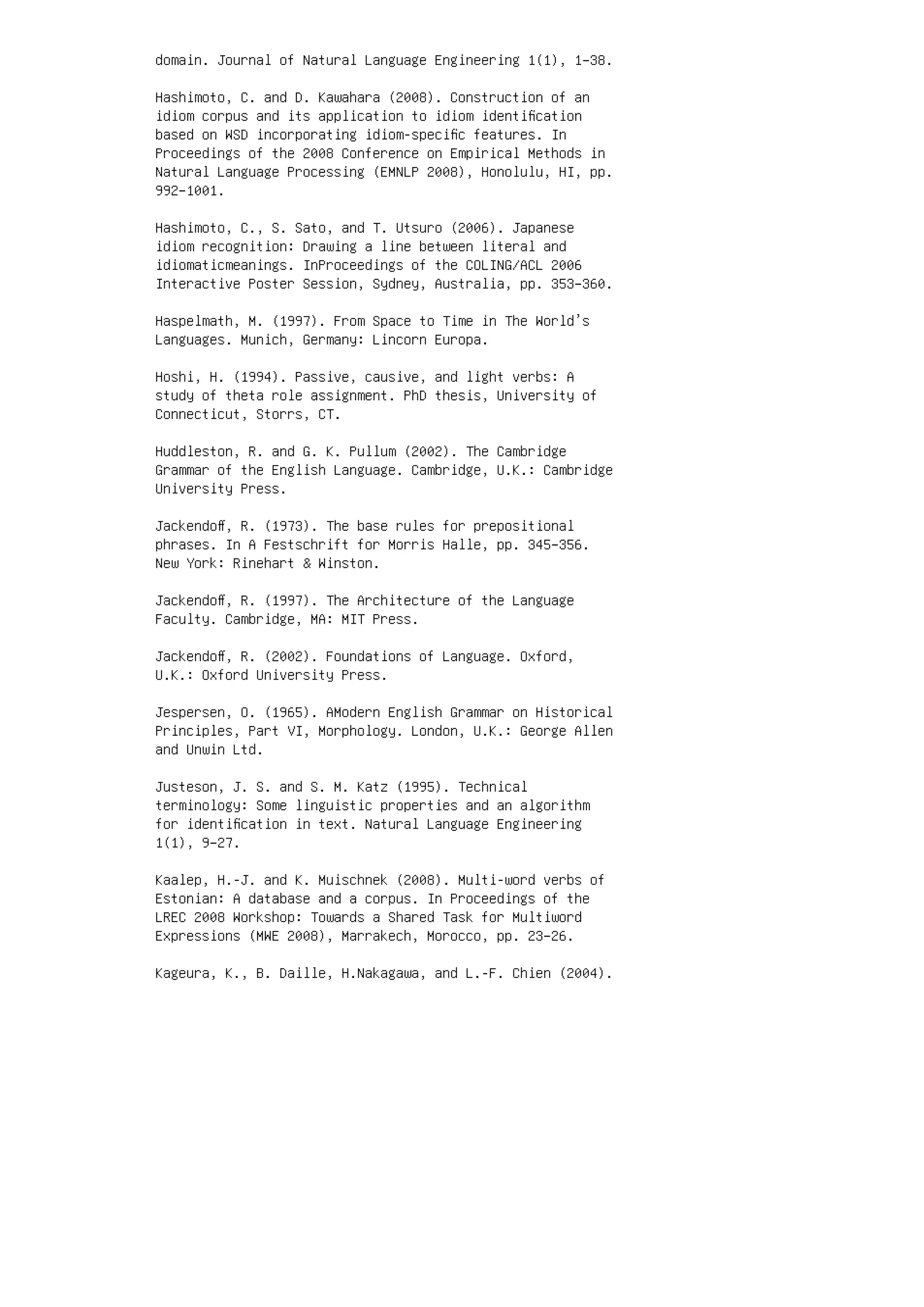


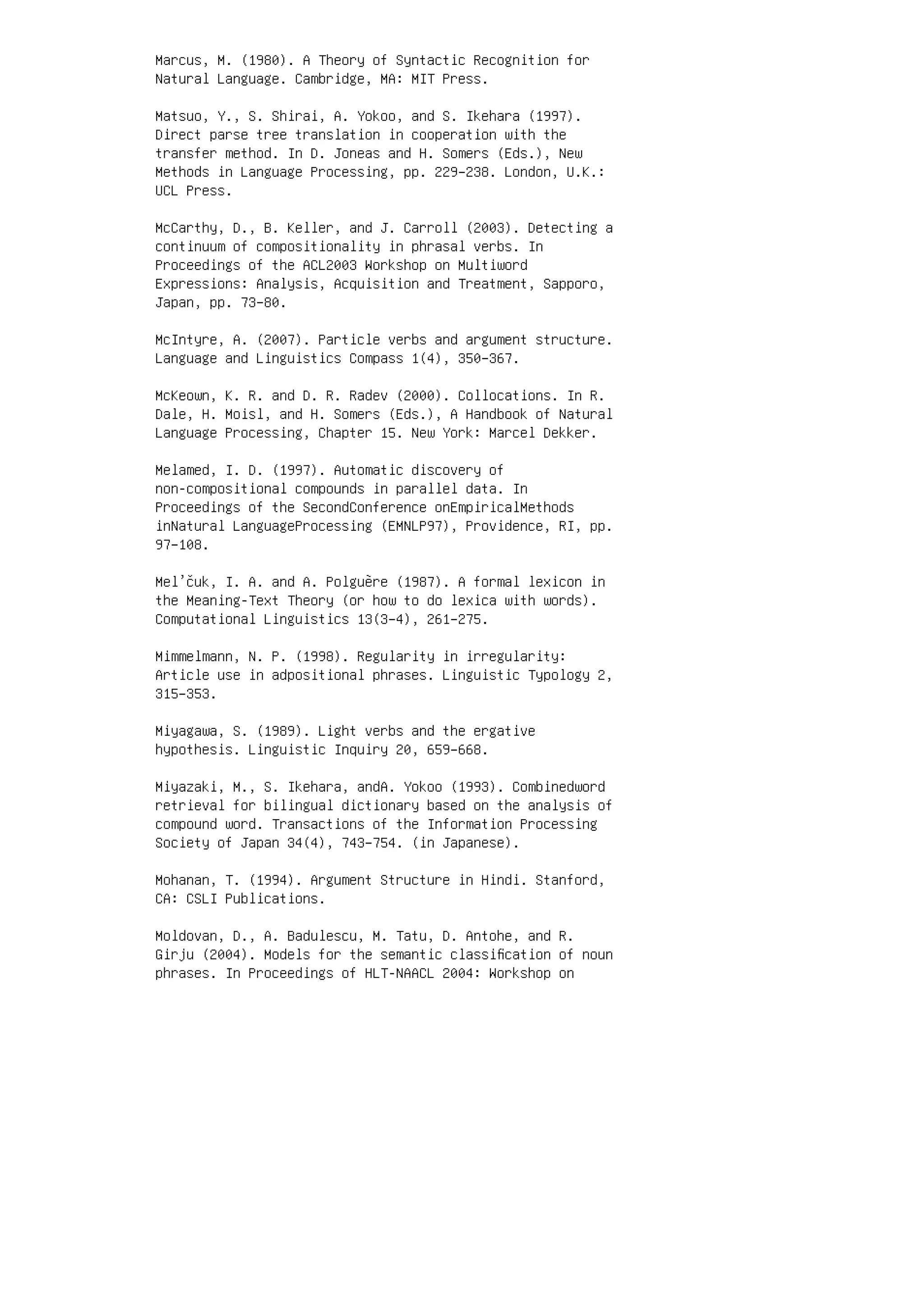



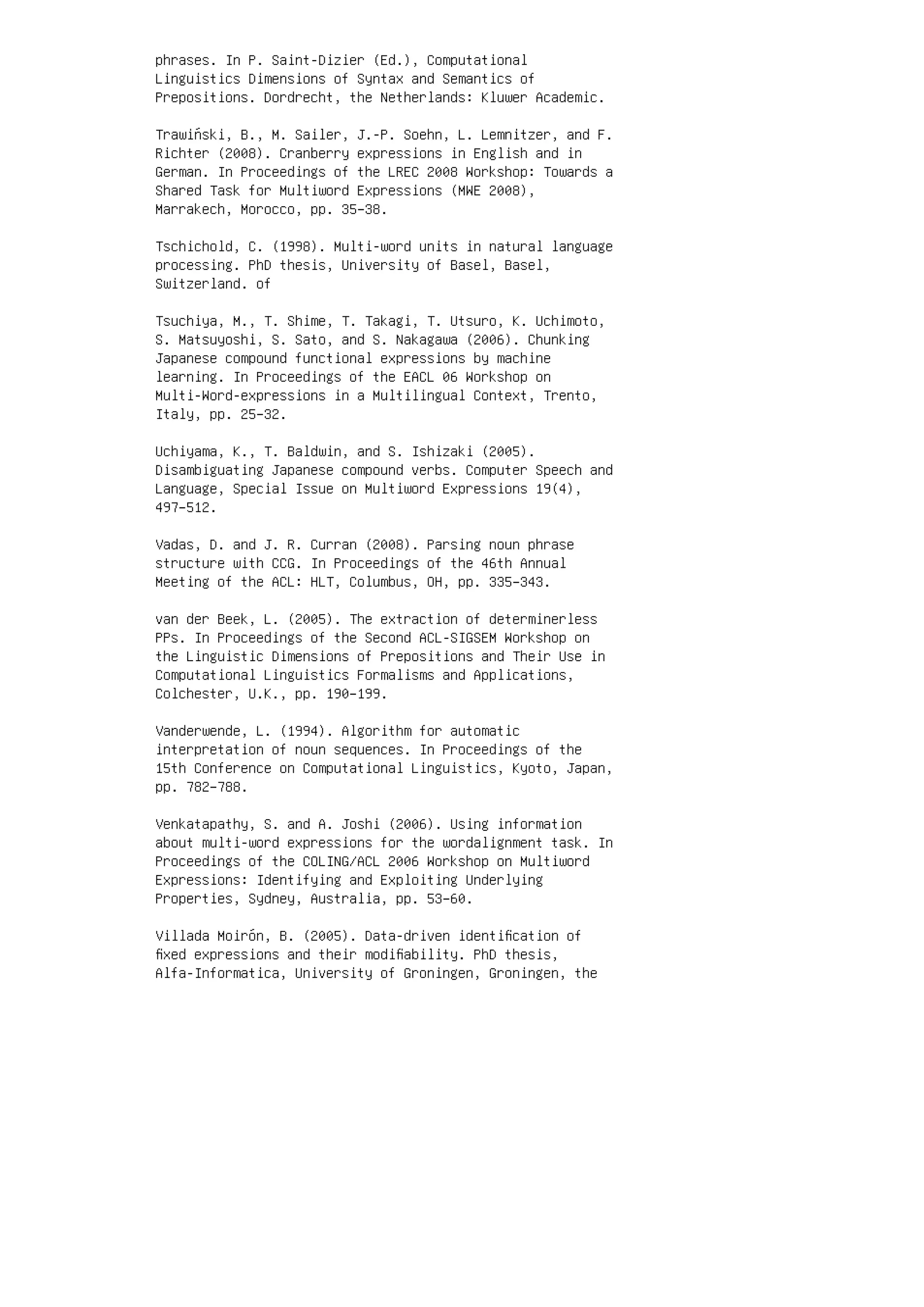
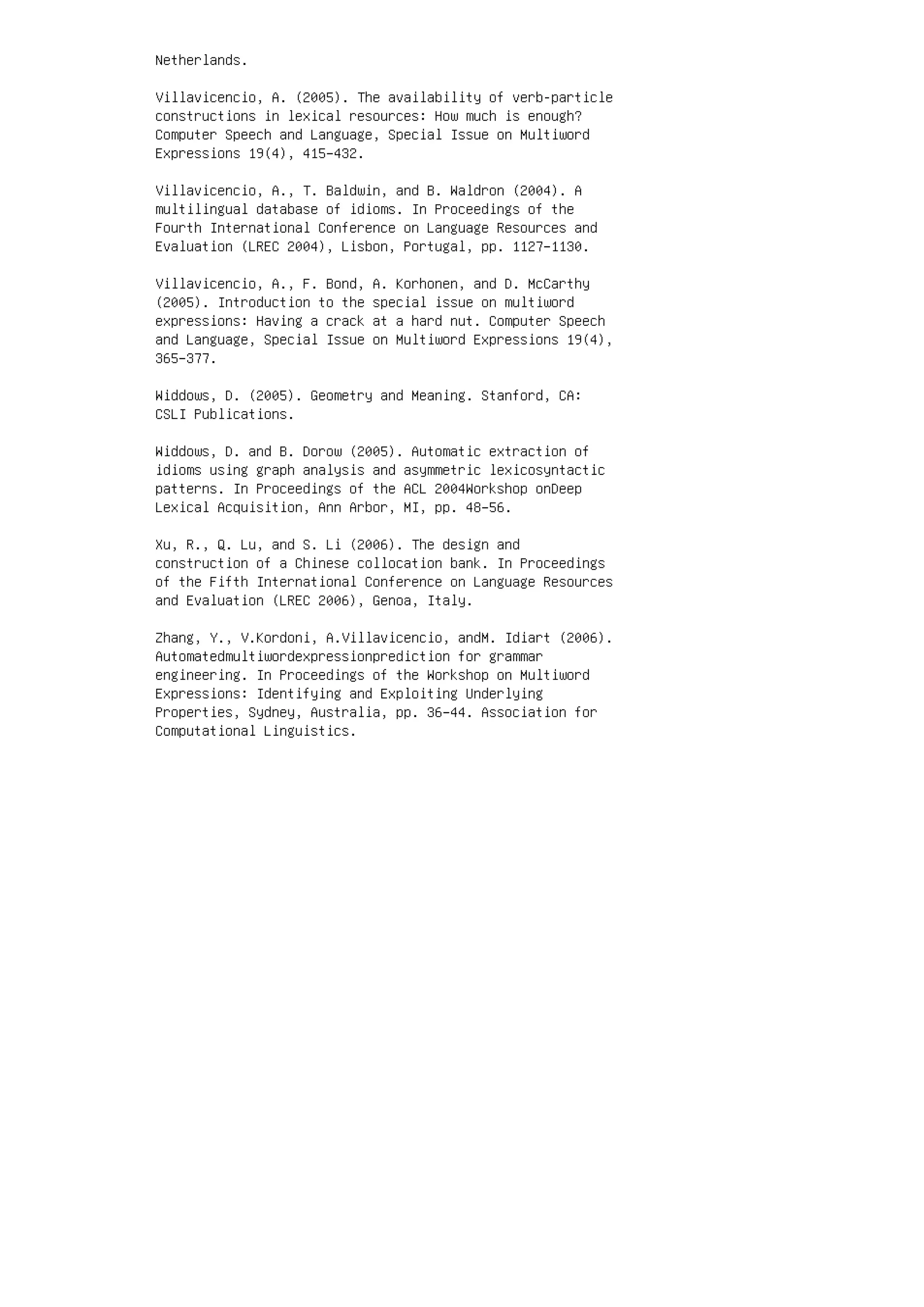
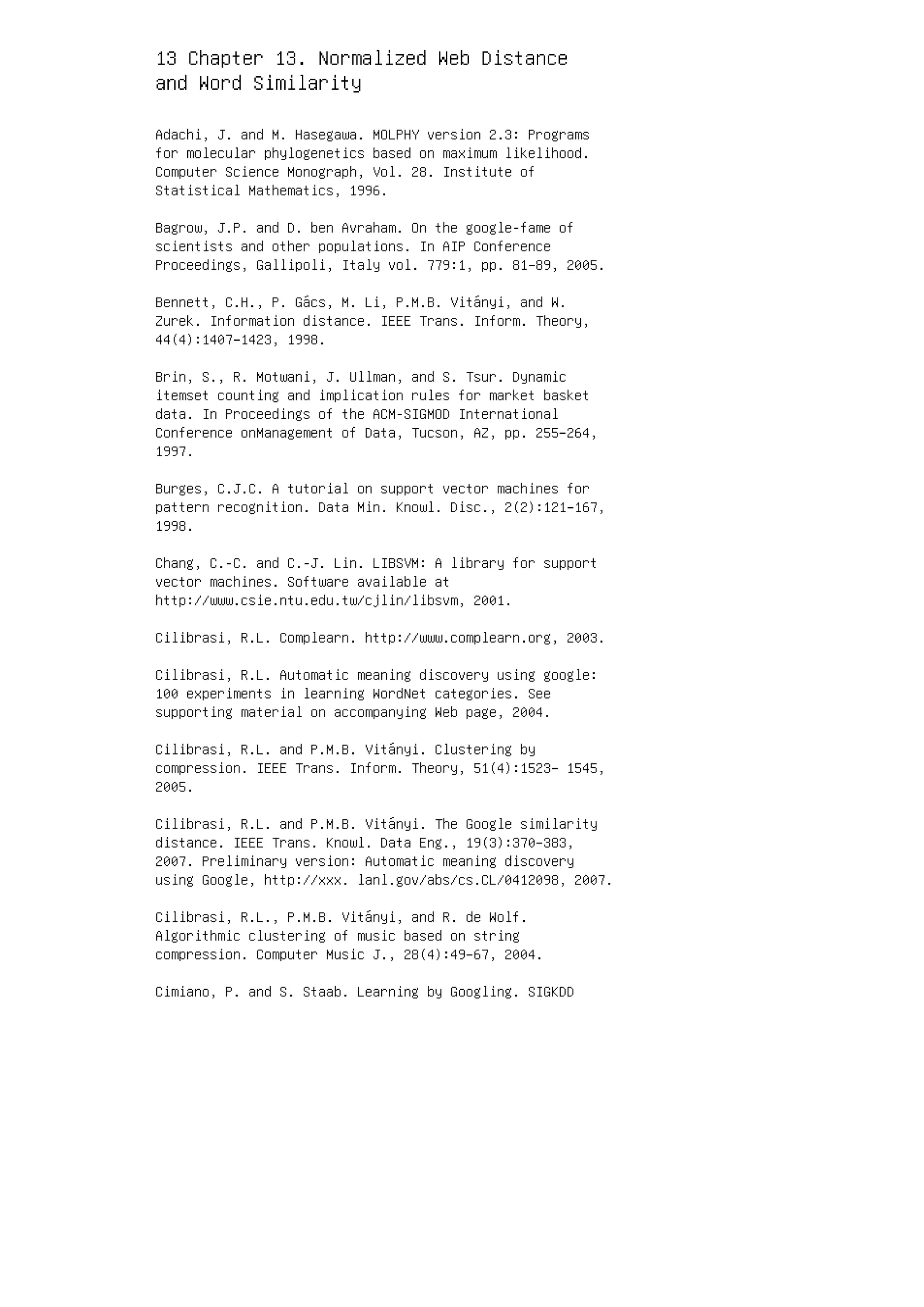
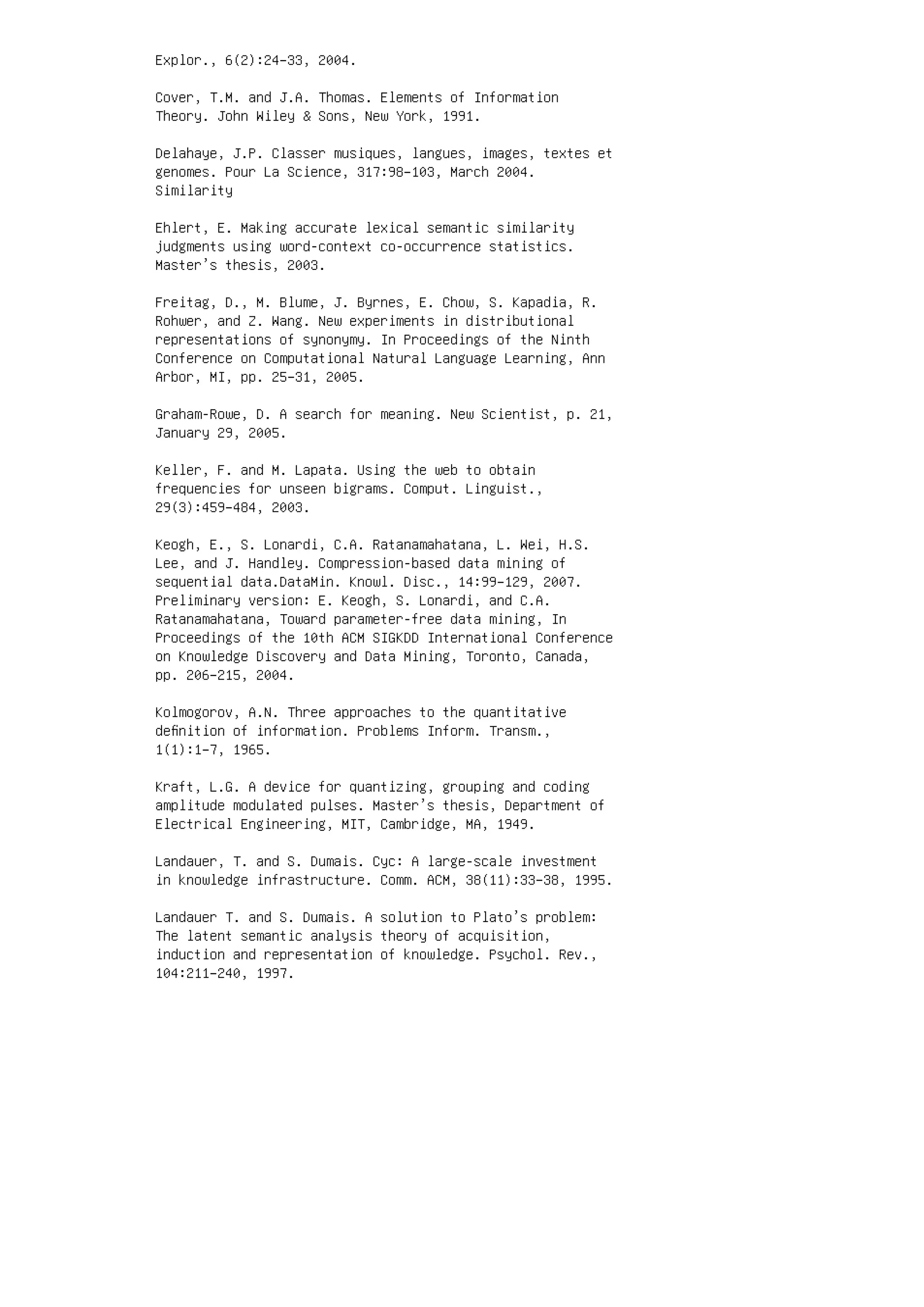
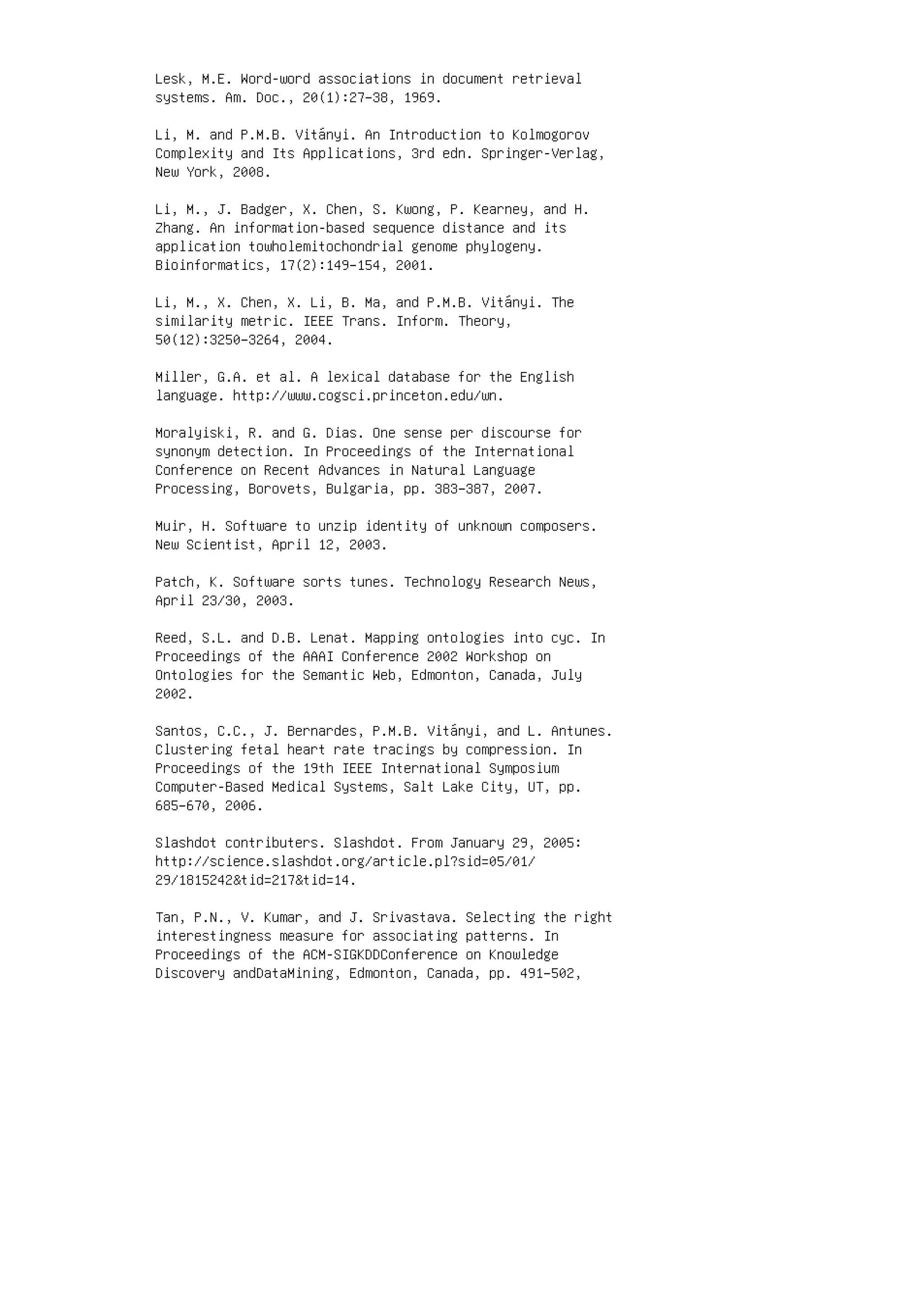


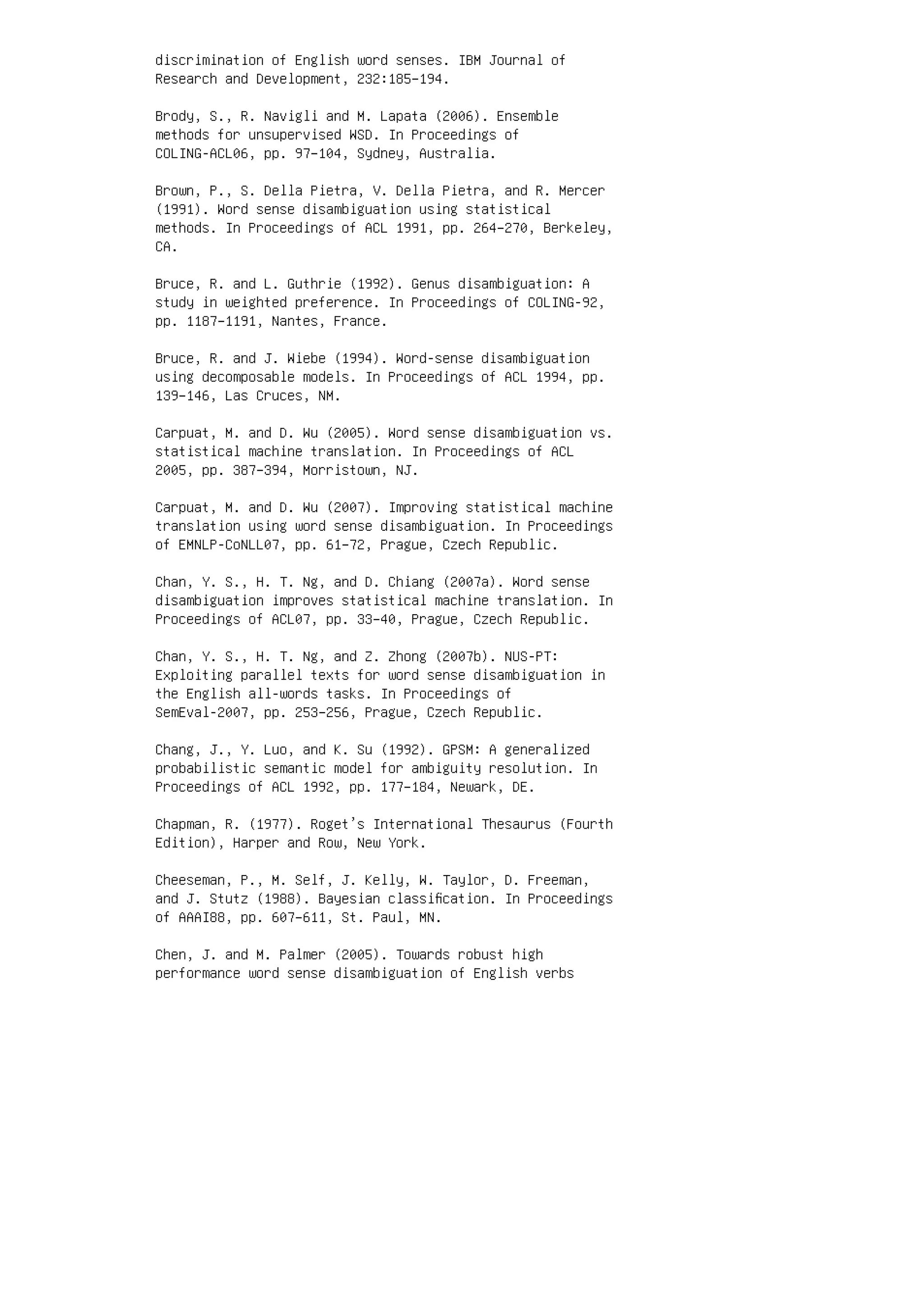

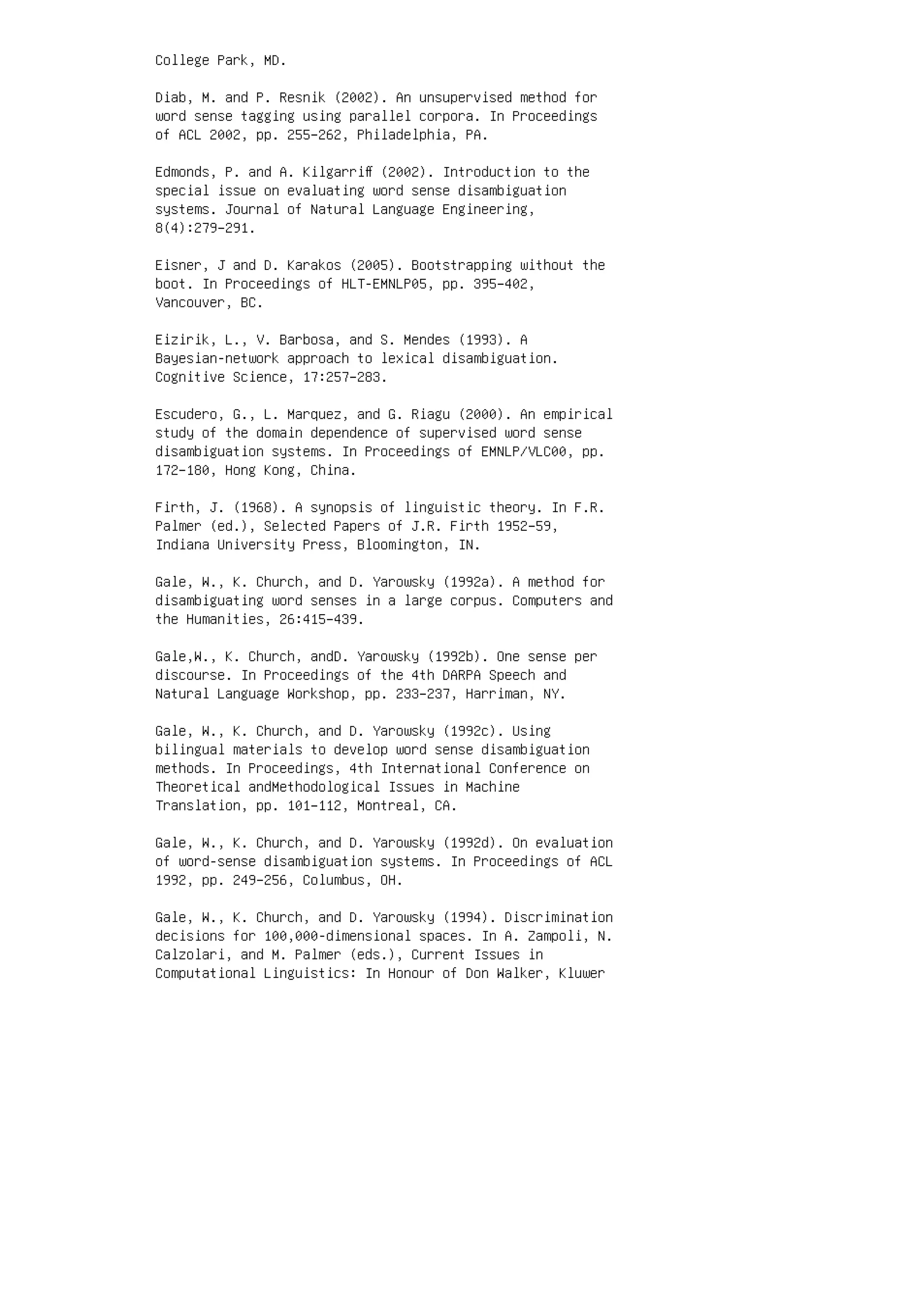

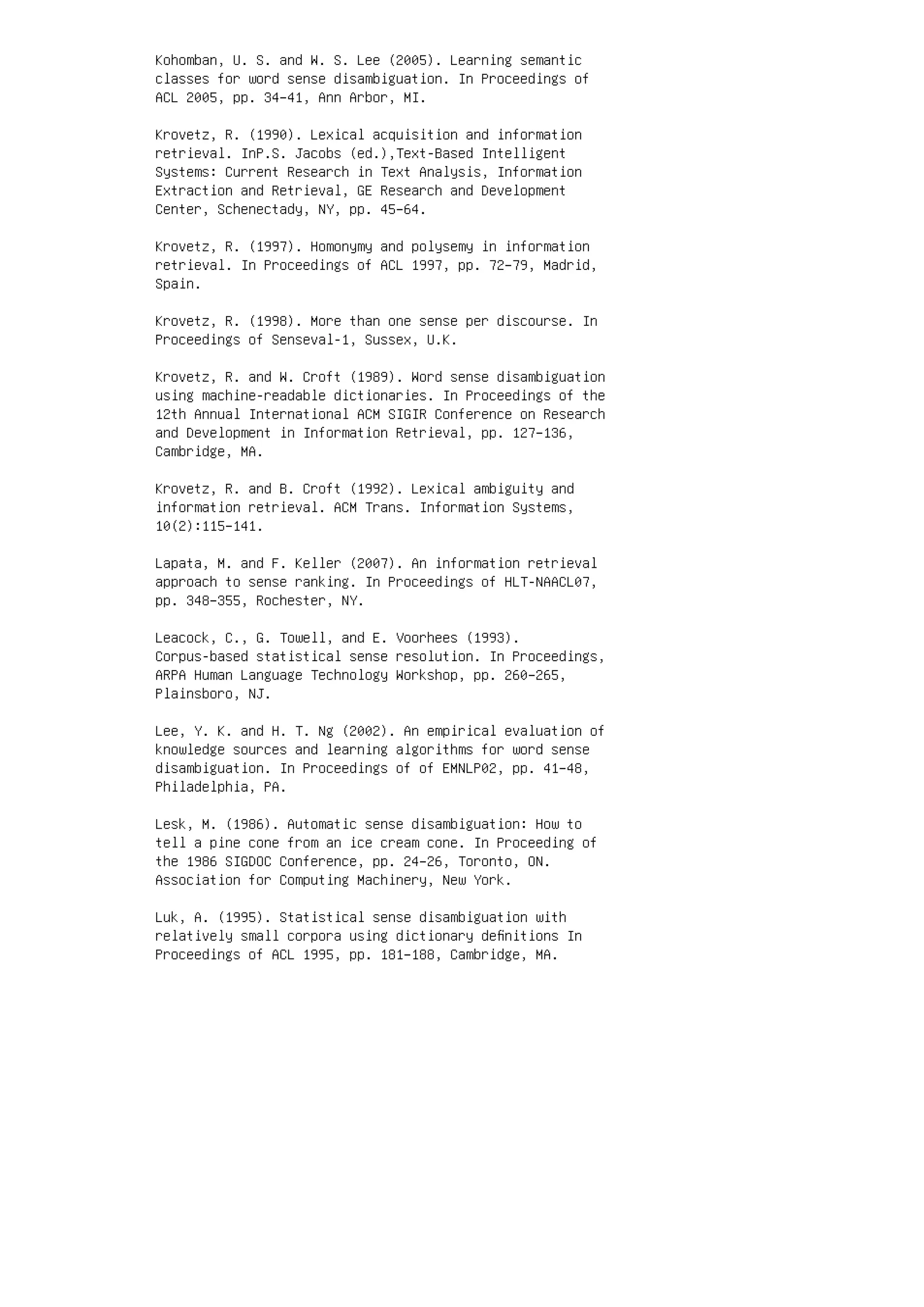

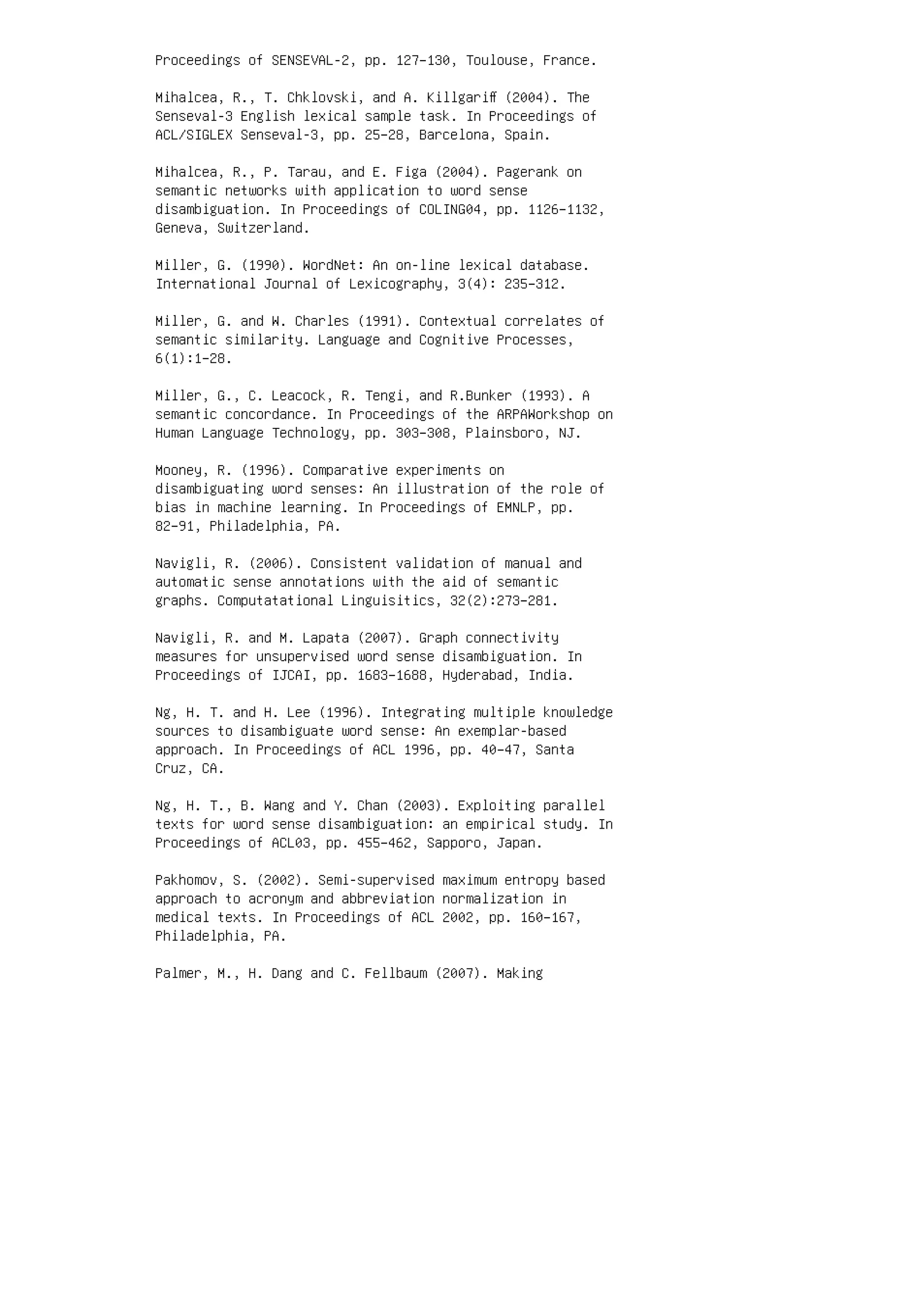
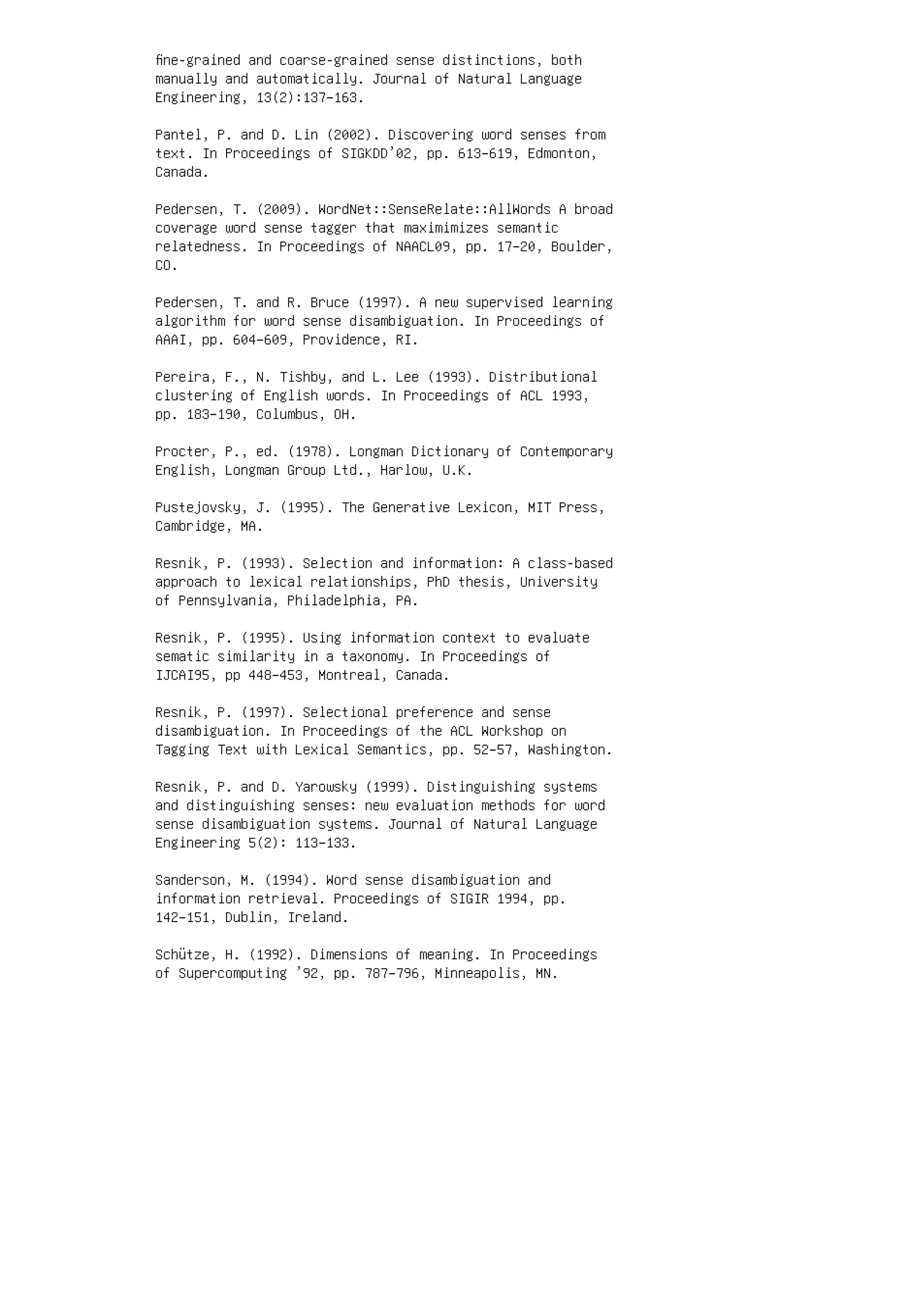

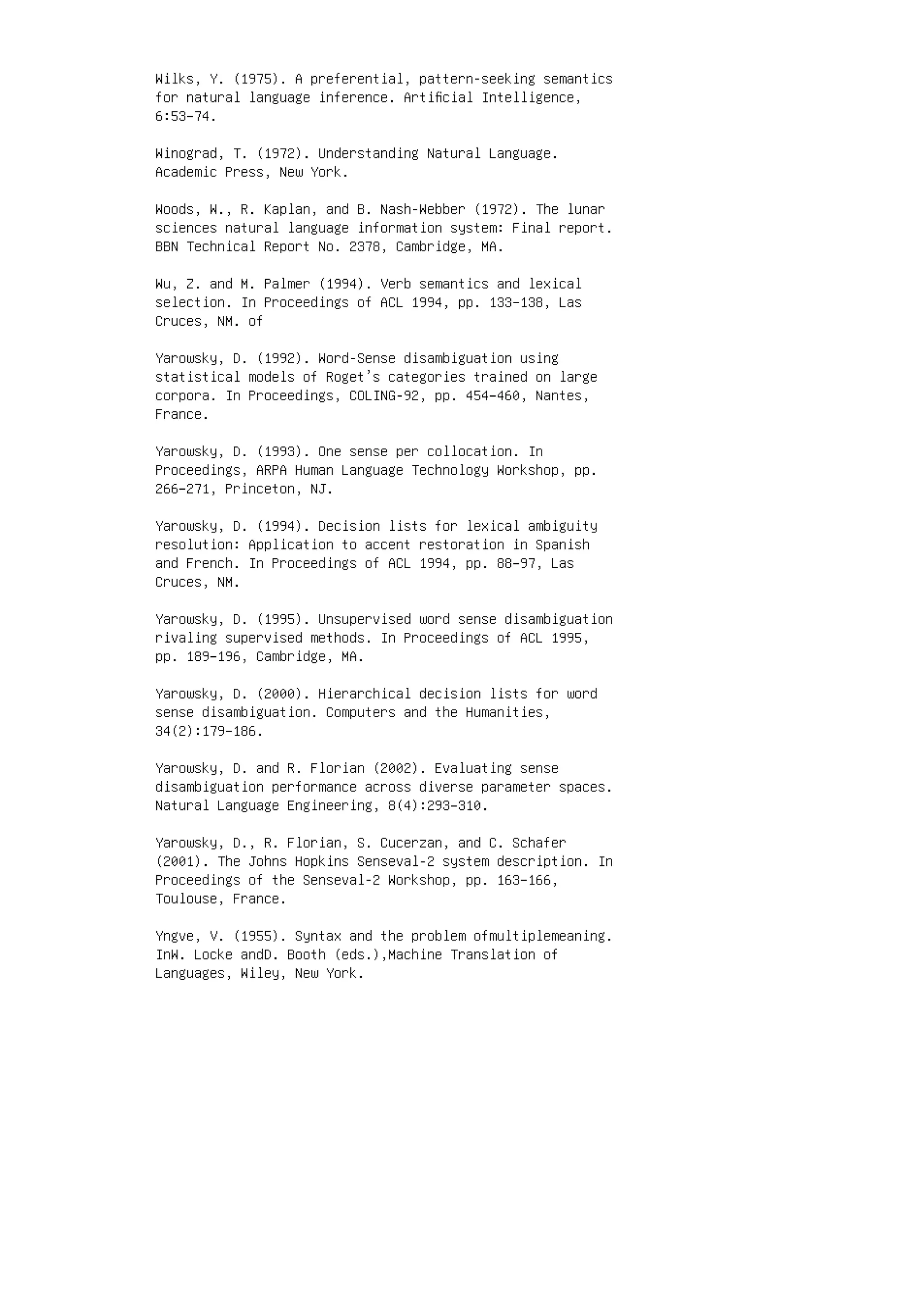

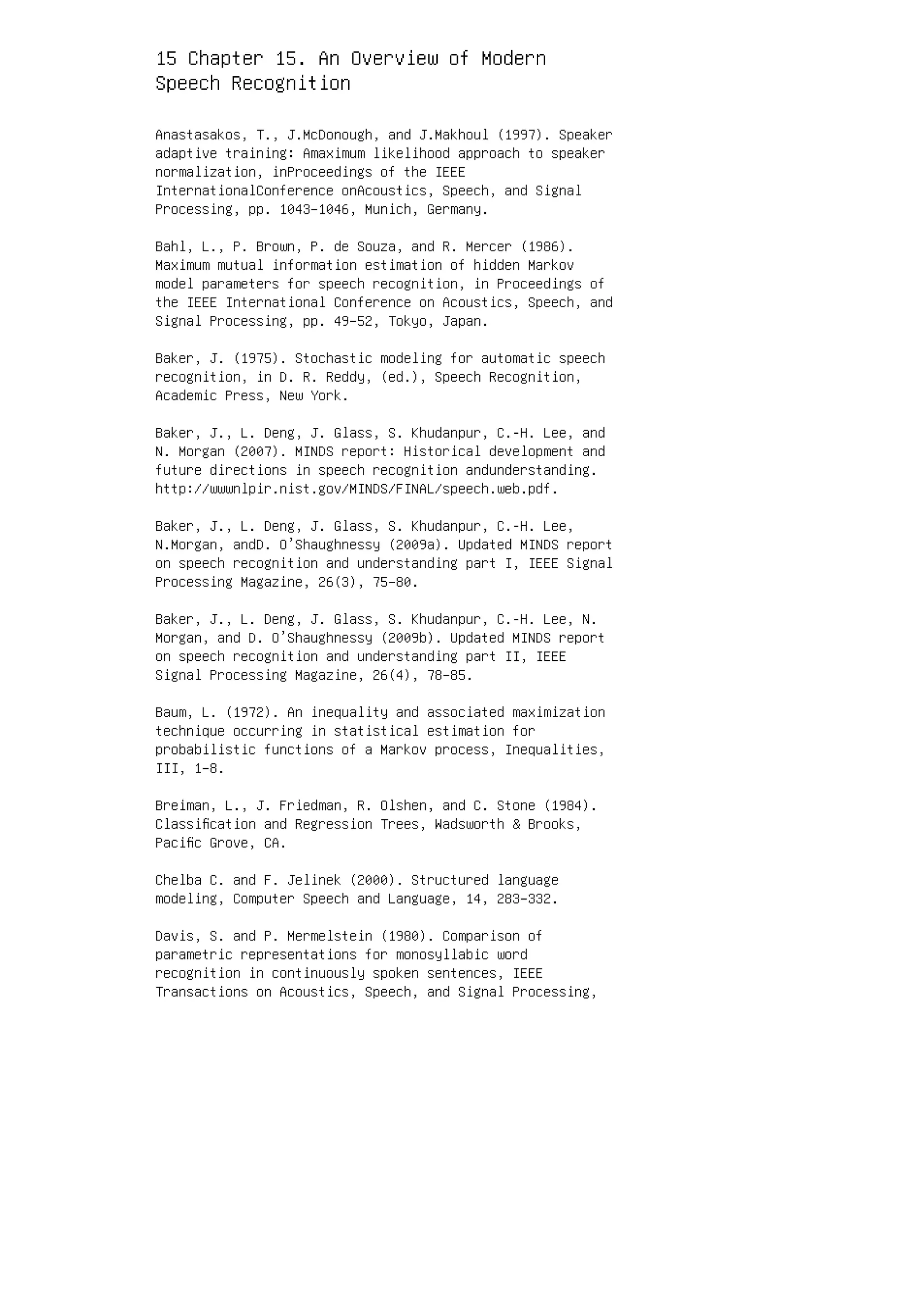
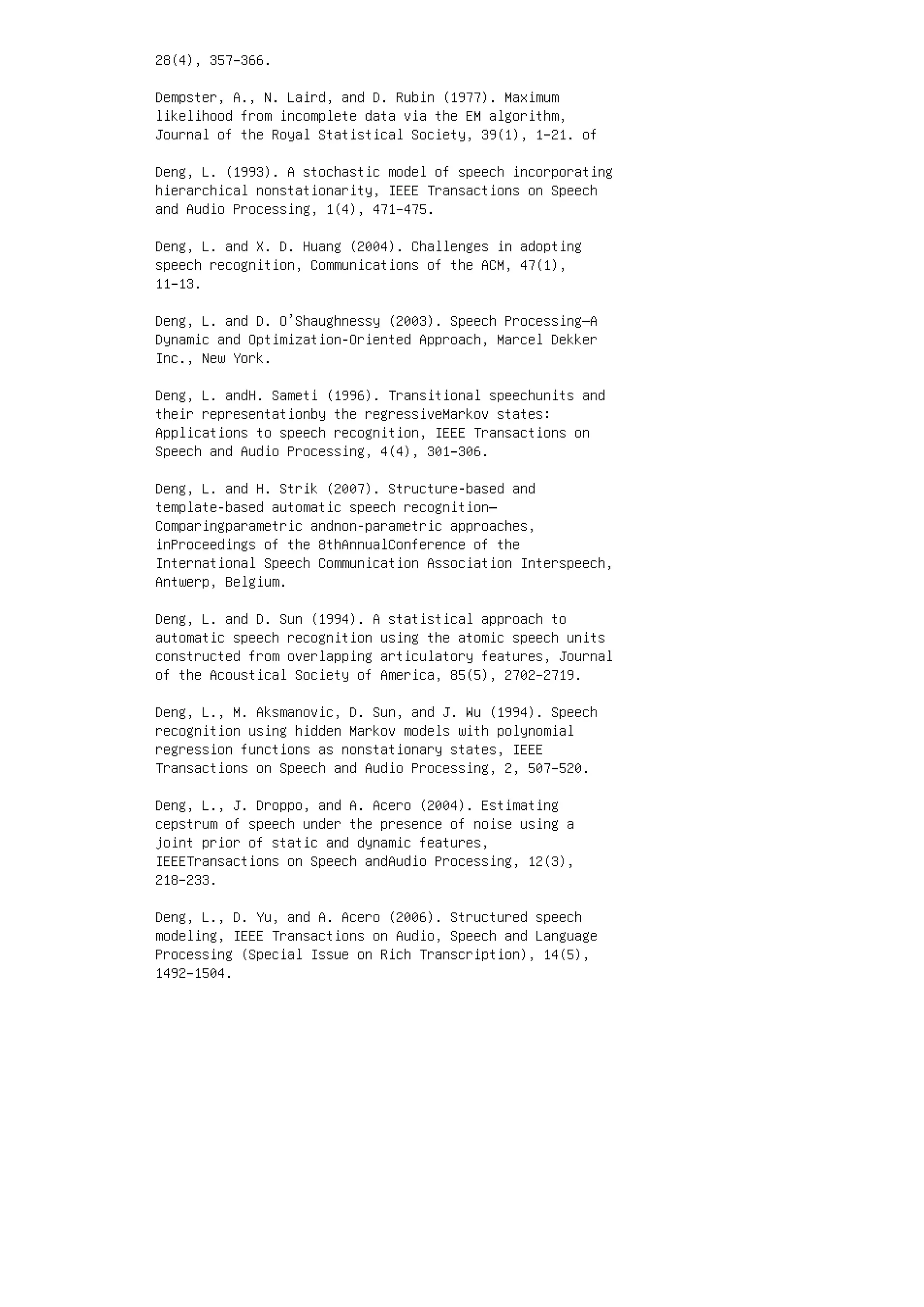
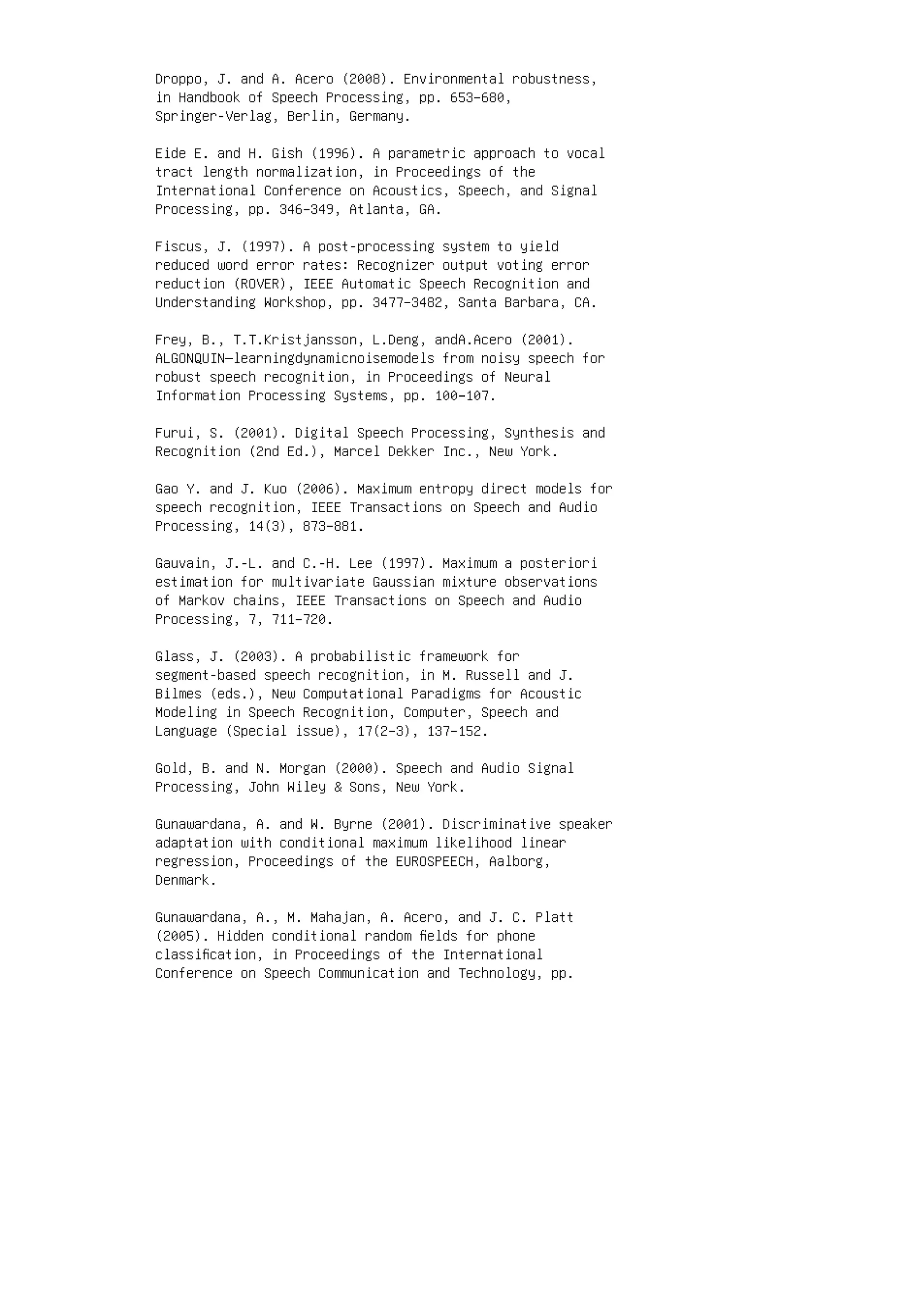
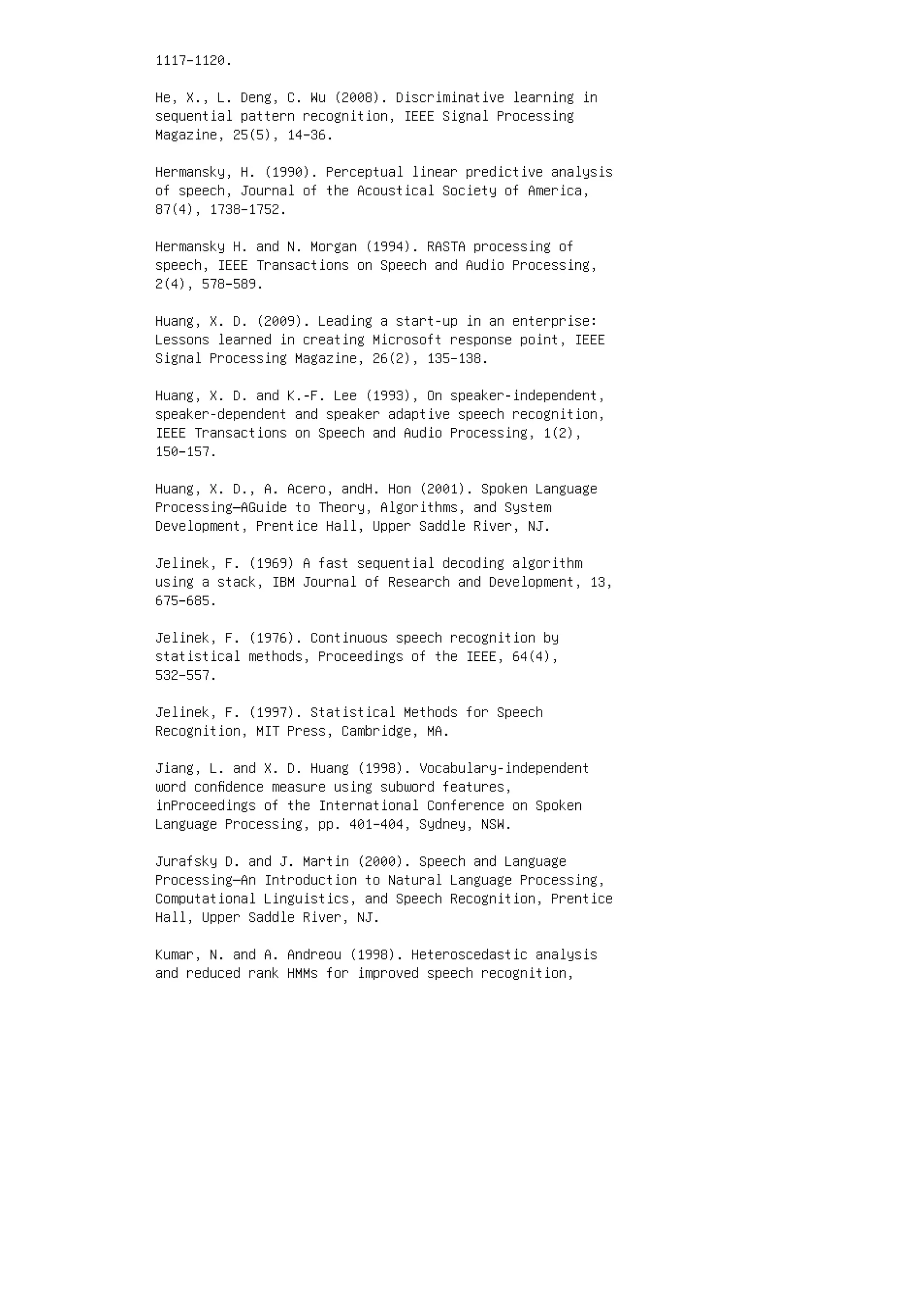
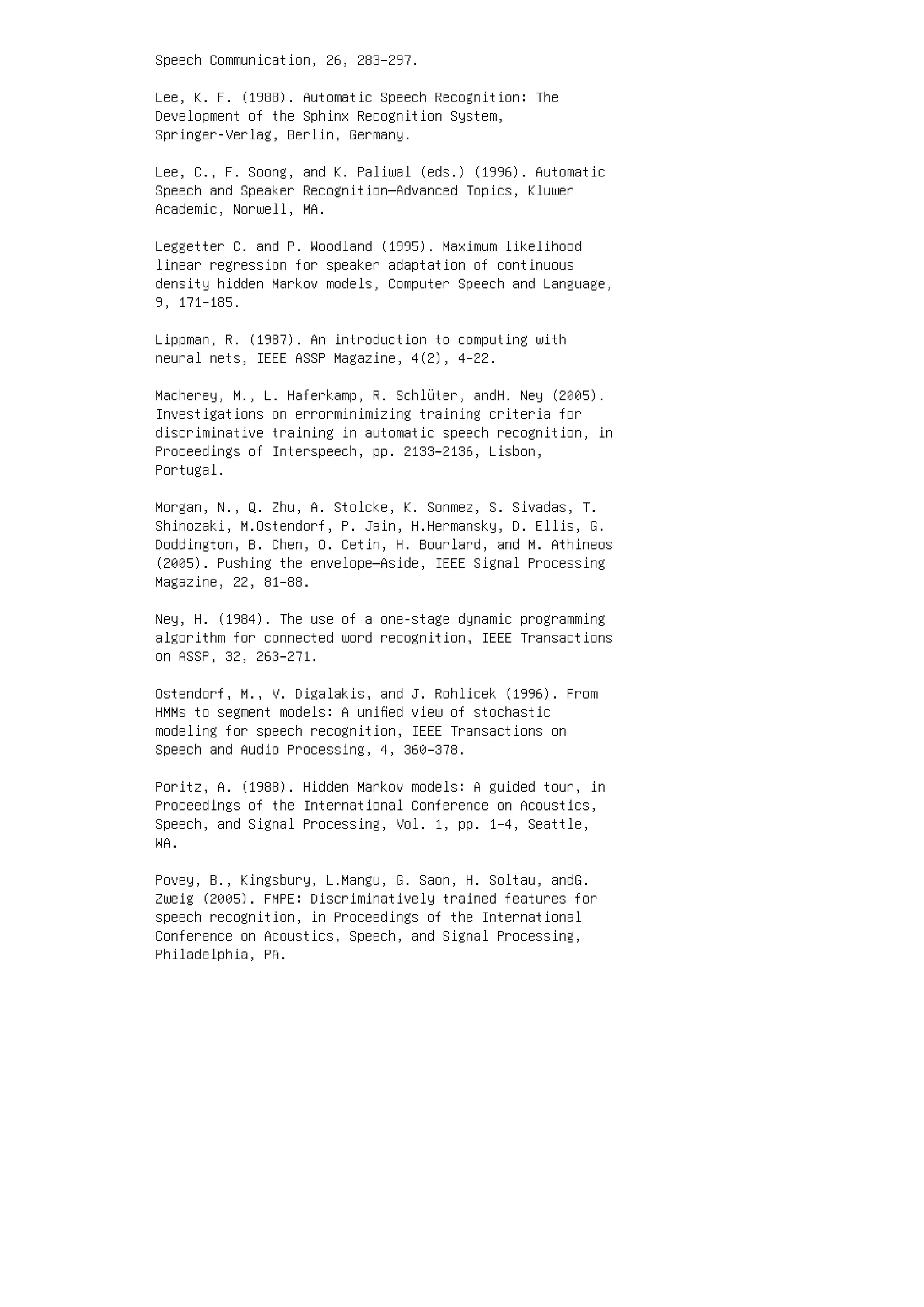
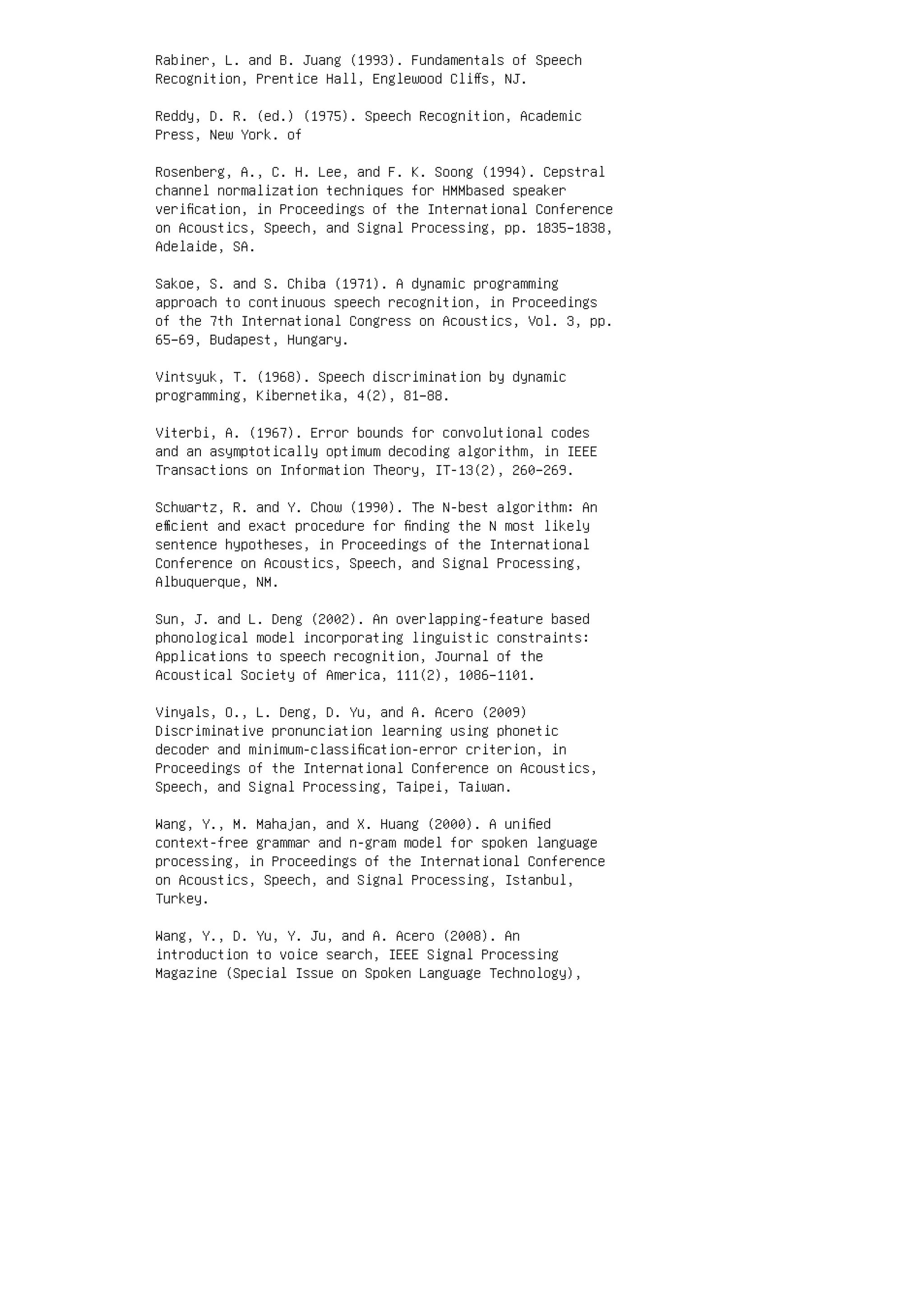

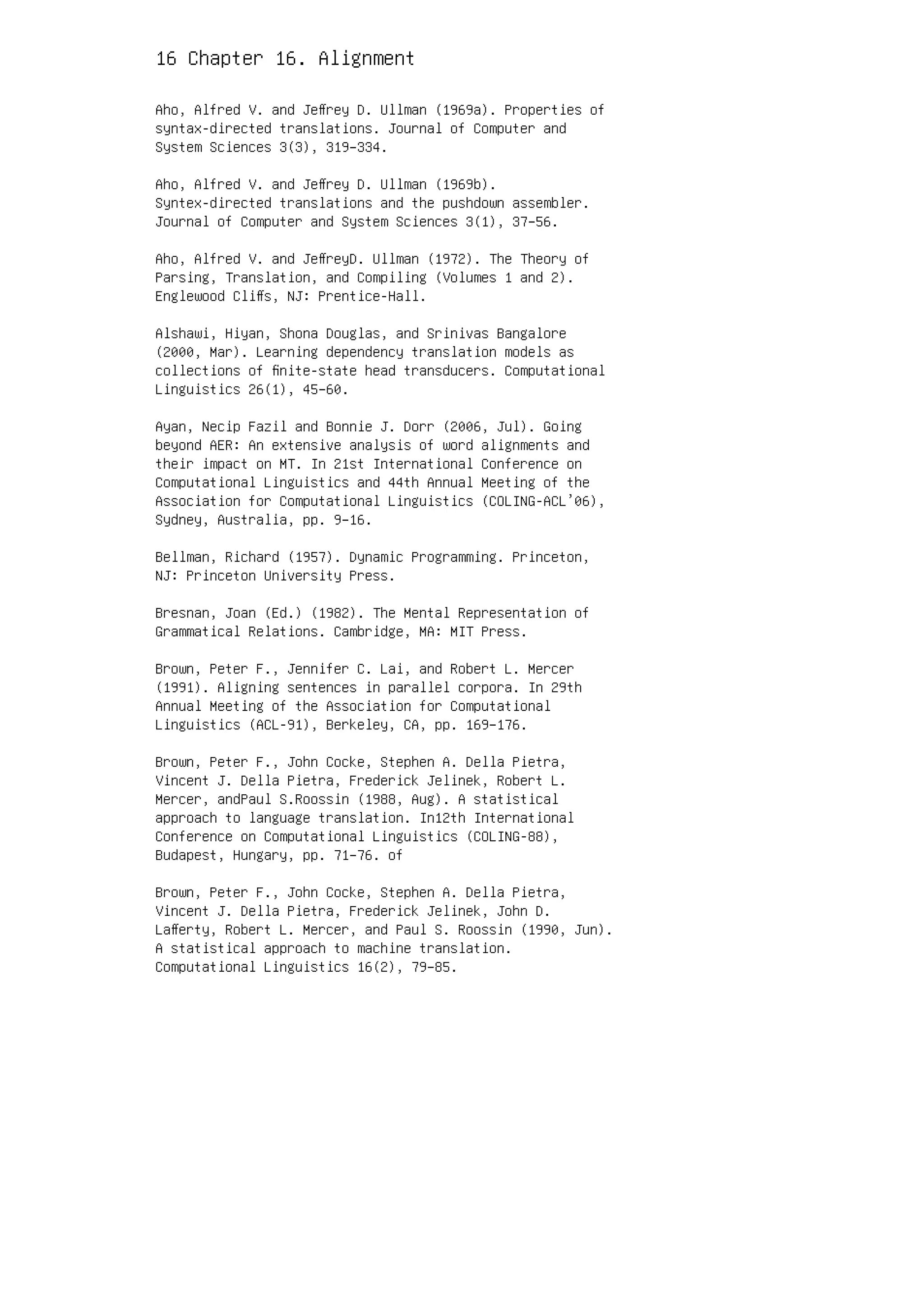

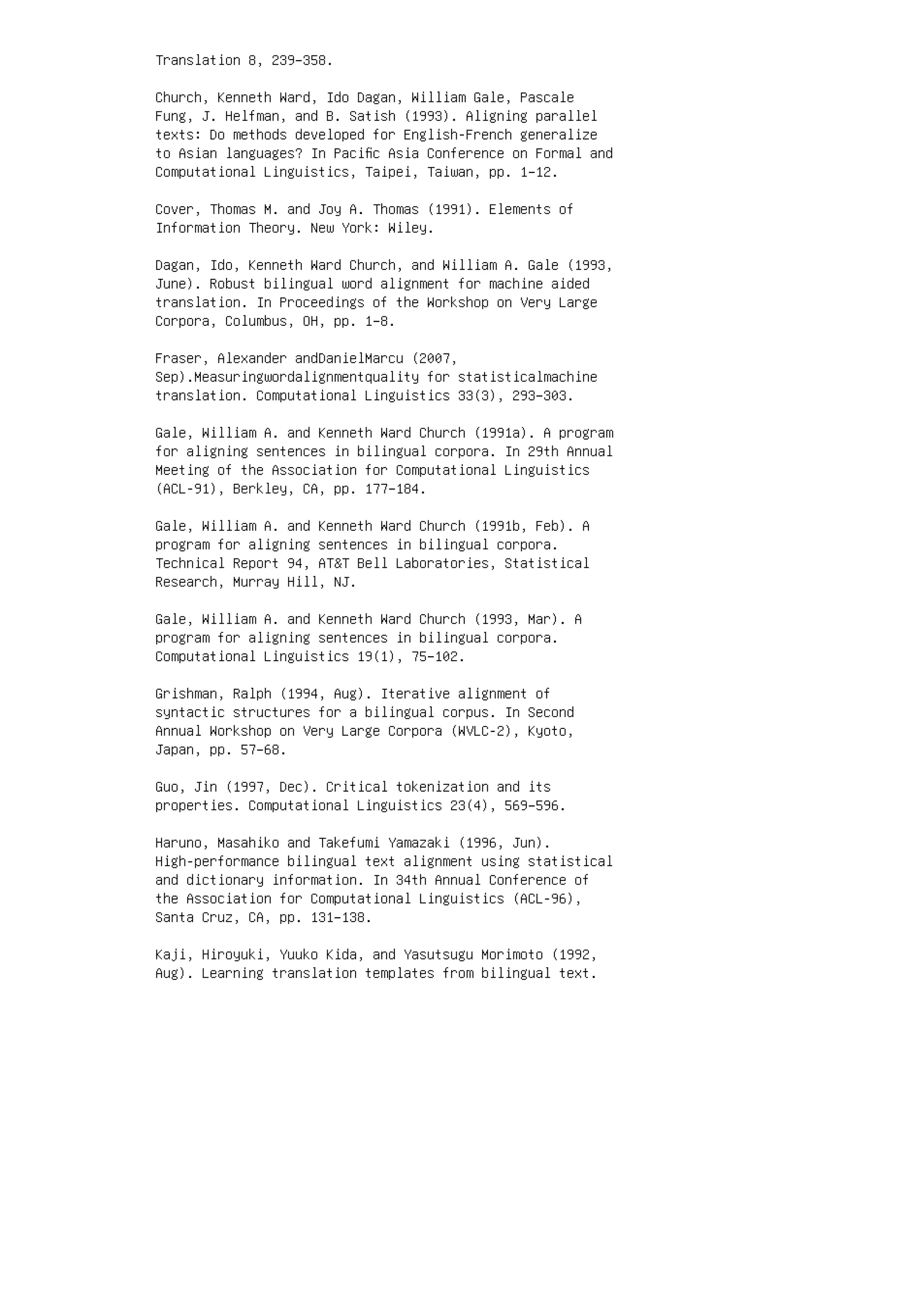

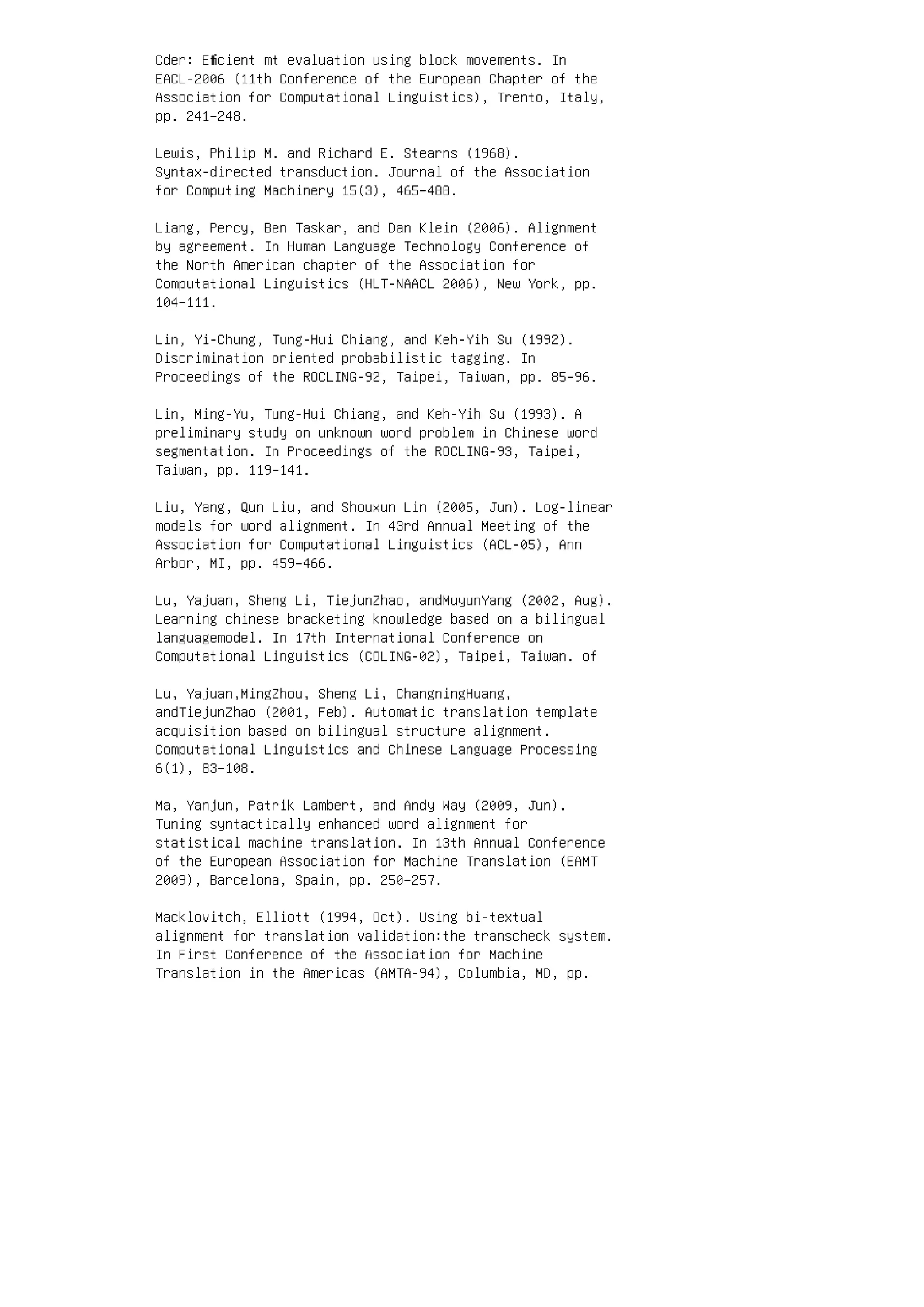


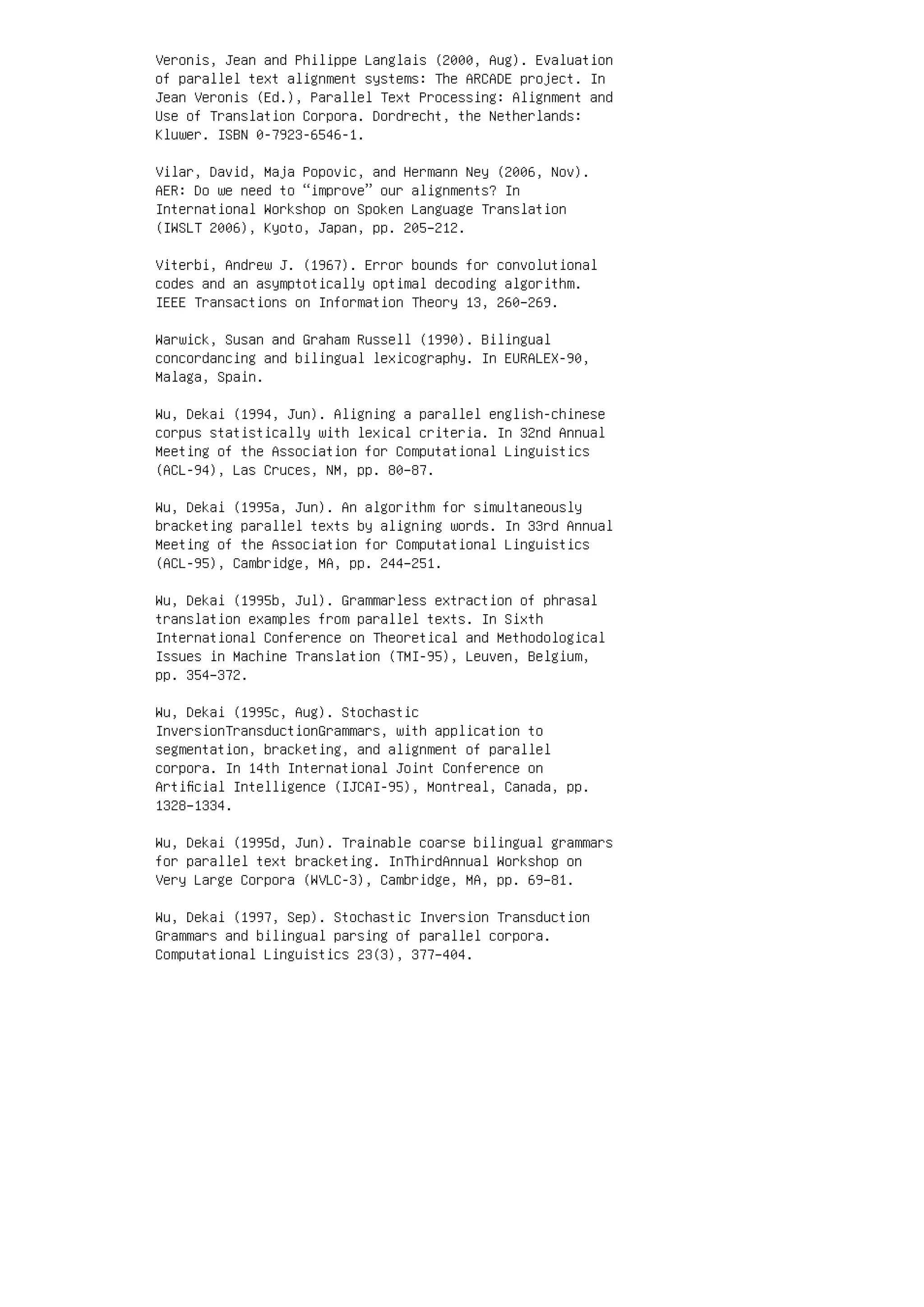

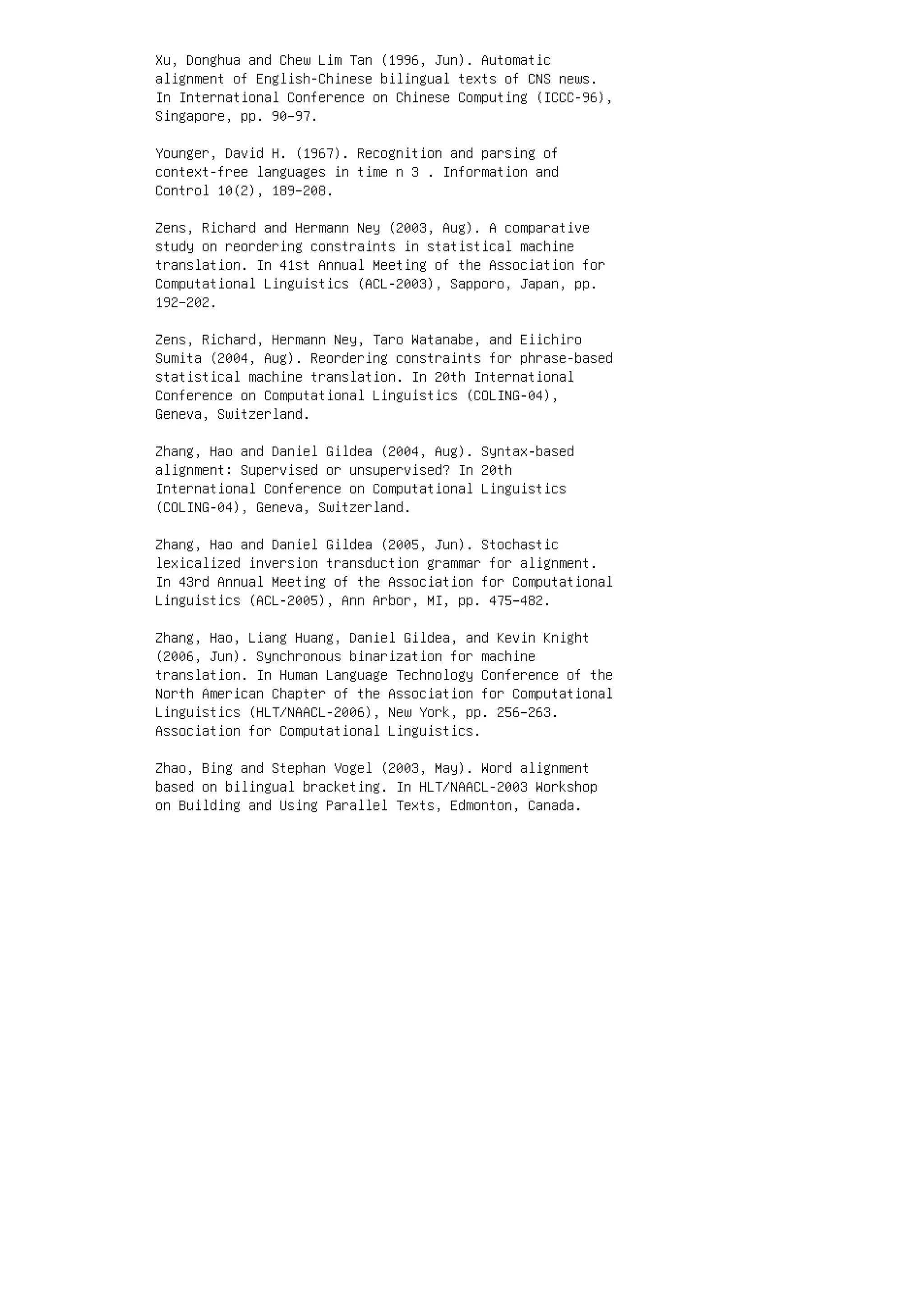

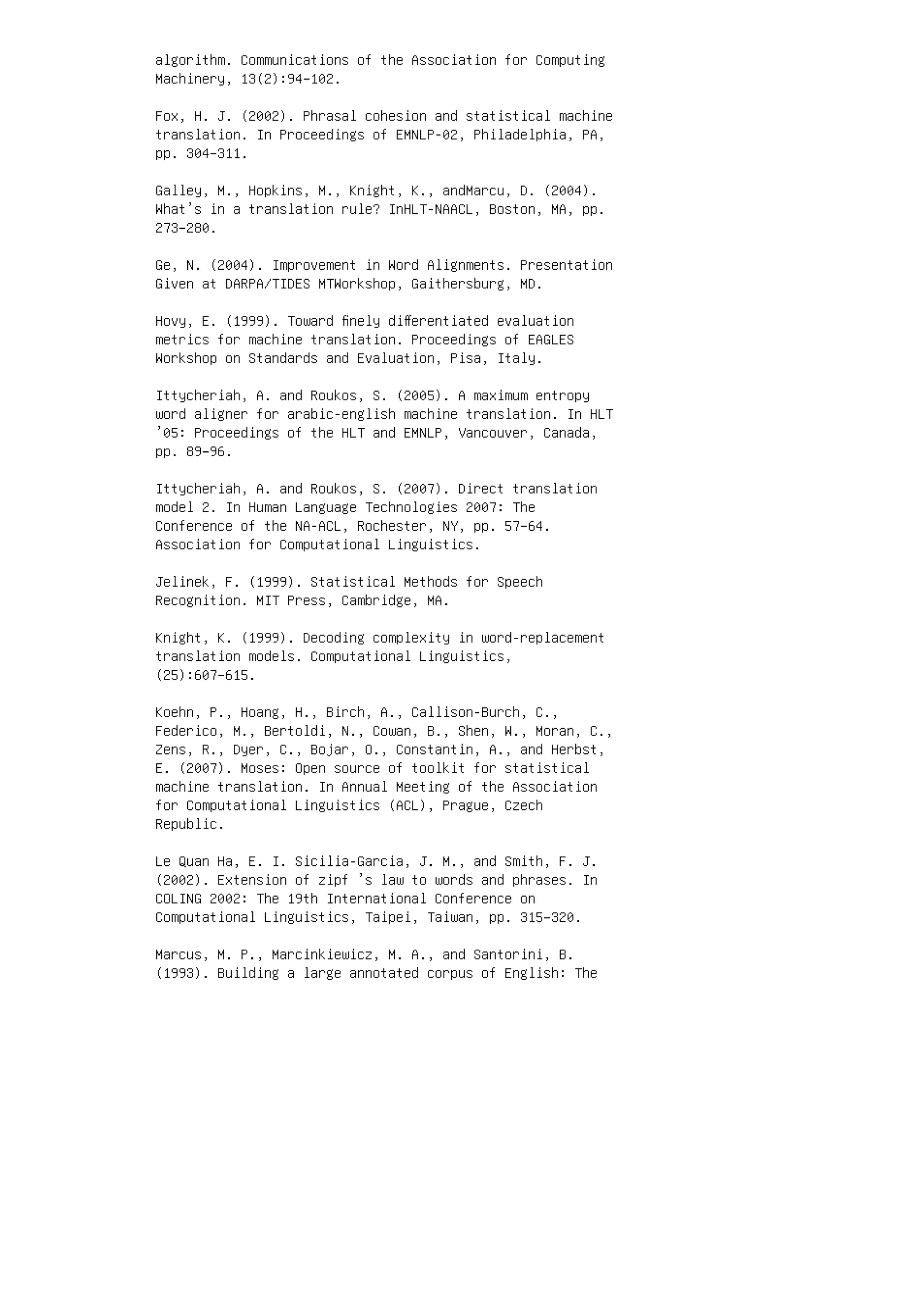
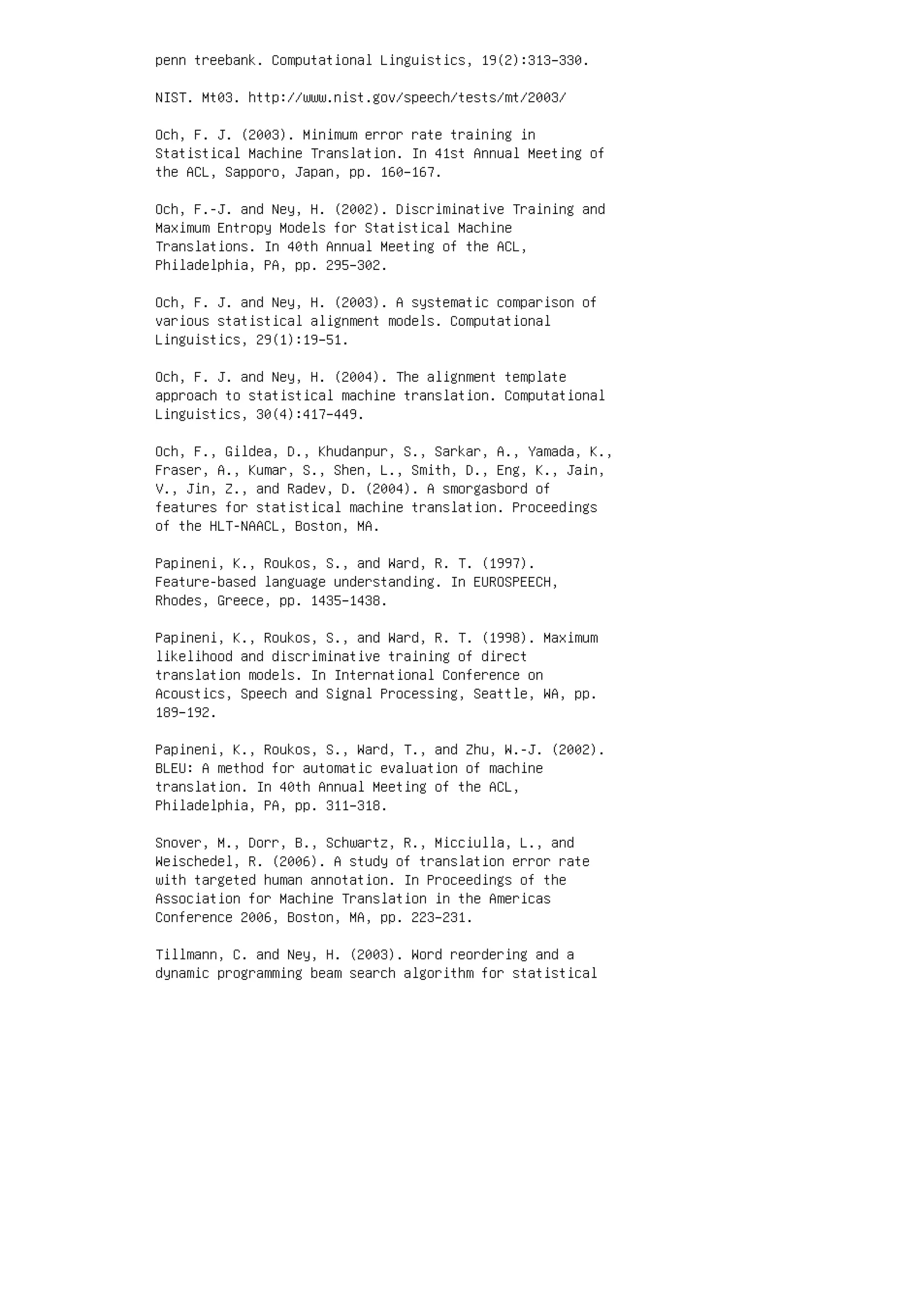
![machine translation. Computational Linguists, 29(1):97–133.
Vauquois, B. (1968). A survey of formal grammars and
algorithms for recognition and transformation in machine
translation. In IFIP Congress-68, Edinburgh, U.K., pp.
254–260.
Vogel, S., Ney, H., and Tillmann, C. (1996). HMM Based-Word
Alignment in Statistical Machine Translation. In
Proceedings of the 16th International Conference on
Computational Linguistics (COLING 1996), pp. 836–841,
Copenhagen, Denmark.
Weaver, W. (1955). Translation. [Repr. Machine translation
of languages: fourteen essays, ed. W.N. Locke and A.D.
Booth]. Technology Press of MIT, Cambridge, MA.
Yamada, K. and Knight, K. (2001). A syntax-based
statistical translation model. Proceedings of the ACL,
Toulouse, France, pp. 523–530.
Zollmann, A. and Venugopal, A. (2006). Syntax augmented
machine translation via chart parsing. In NAACL
2006—Workshop on Statistical Machine Translation, New York.
Association for Computational Linguistics.](https://image.slidesharecdn.com/9780429149207previewpdf-231005165728-2b1ccb76/75/9780429149207_previewpdf-pdf-177-2048.jpg)

